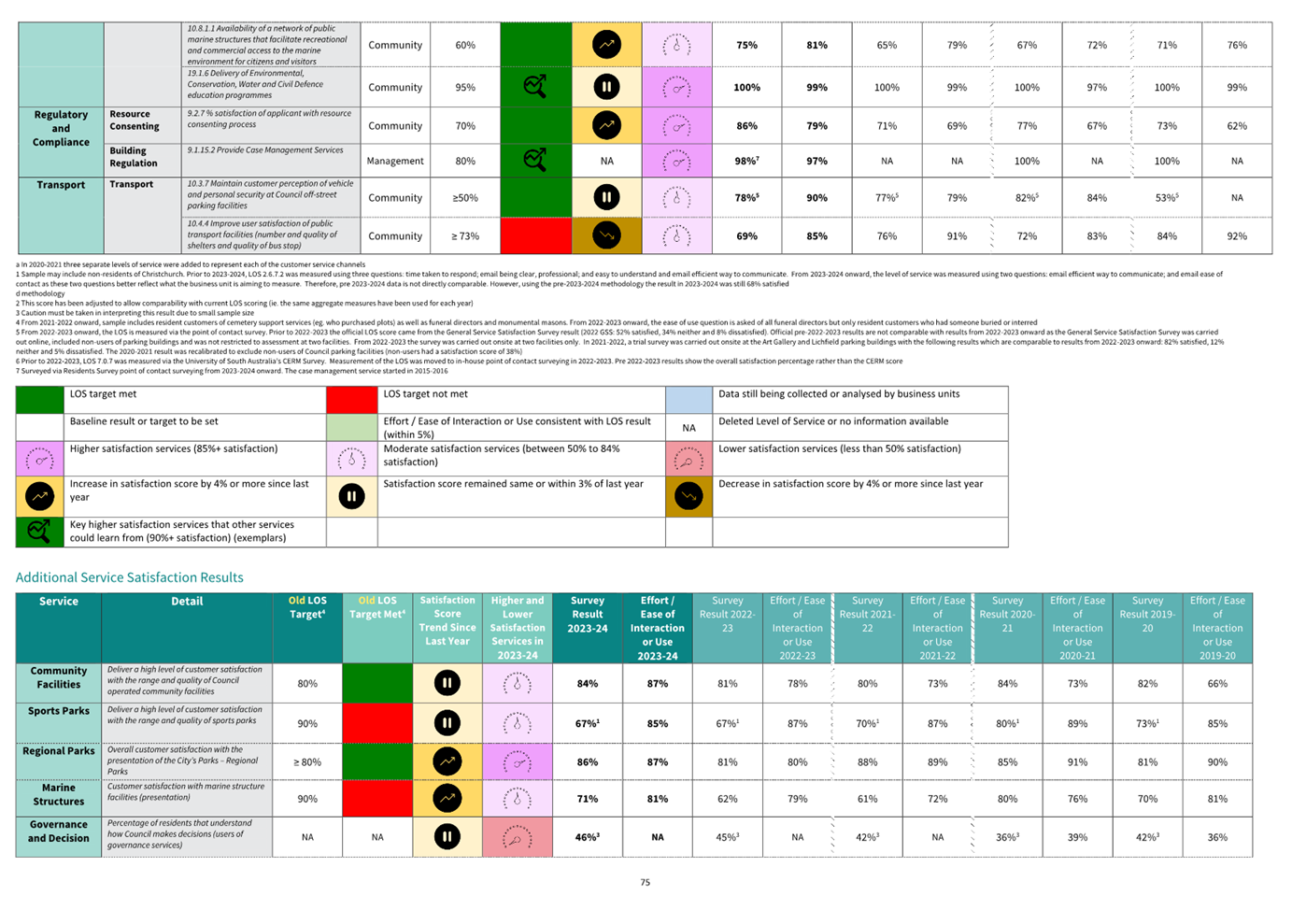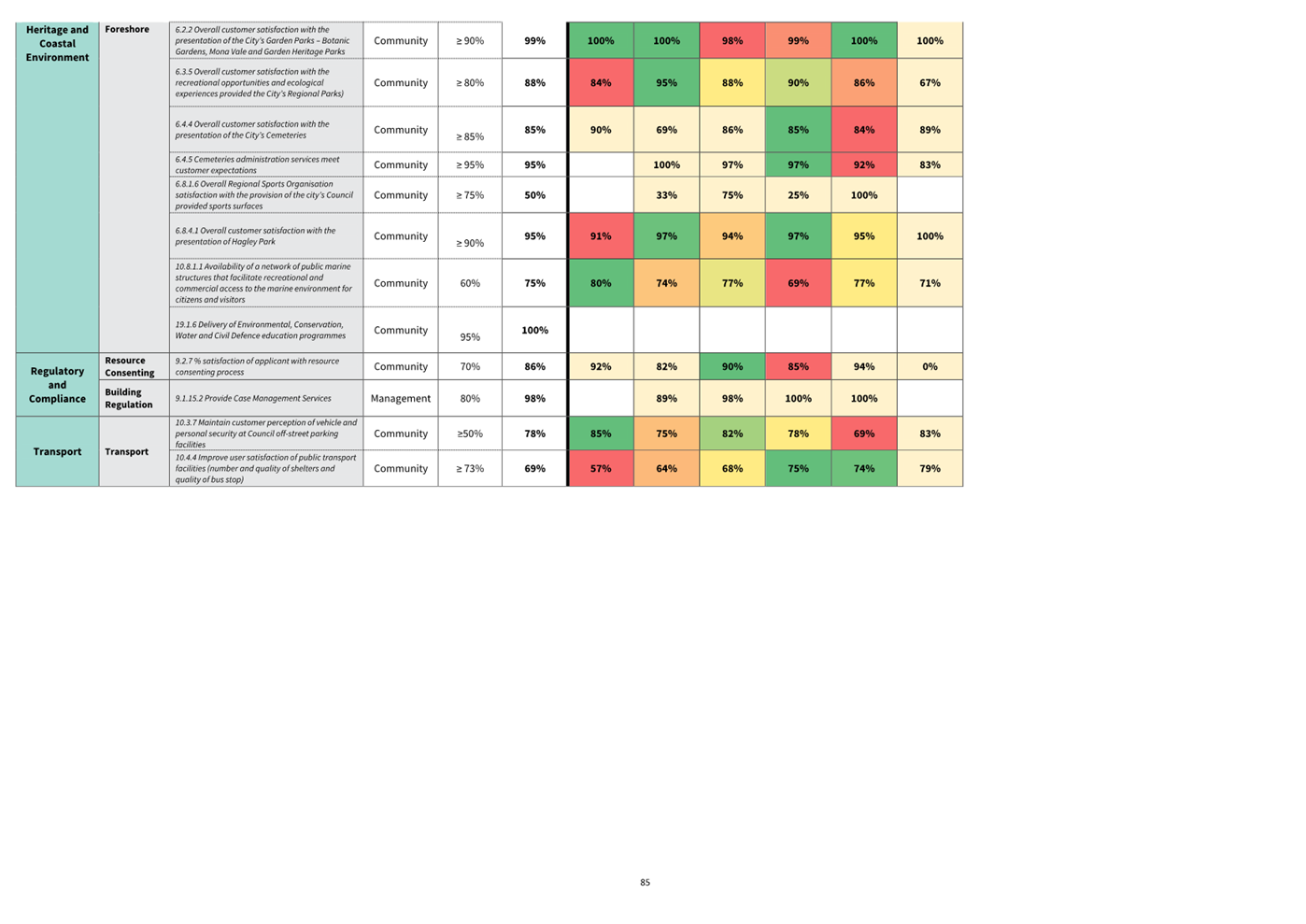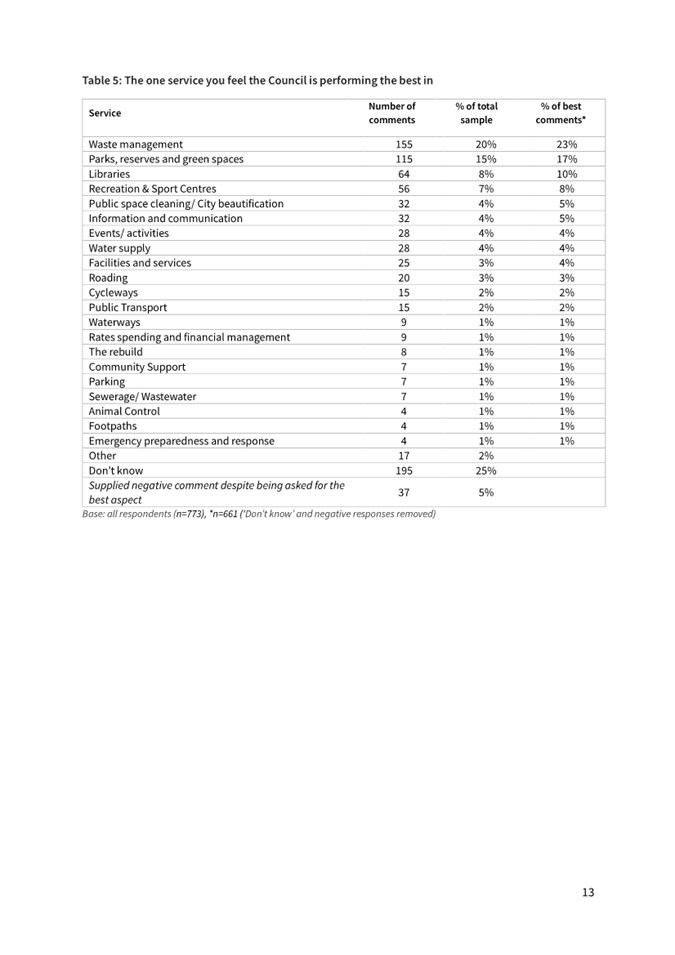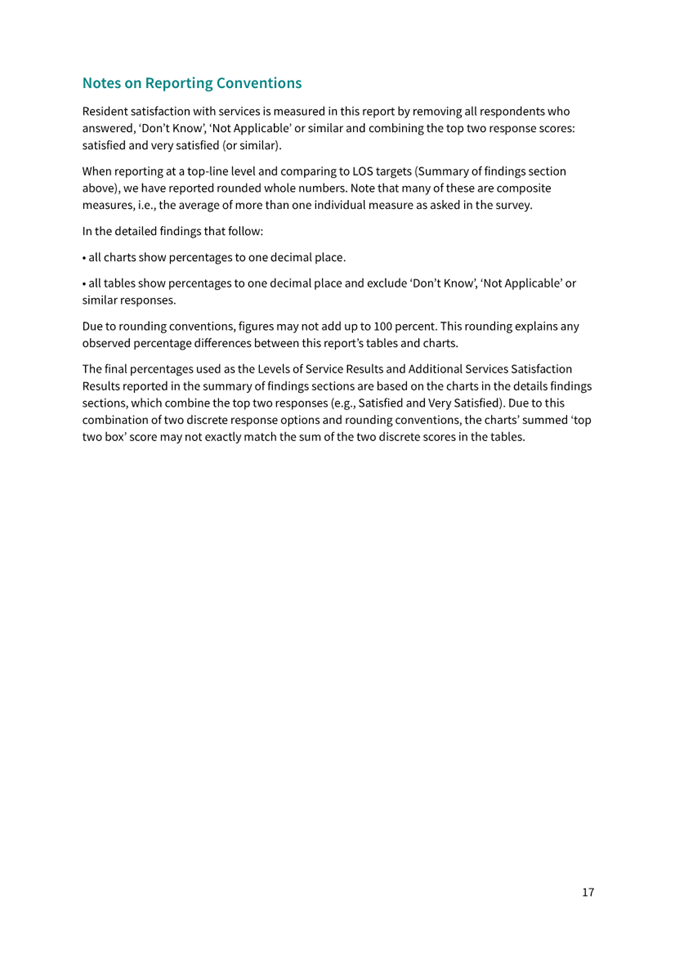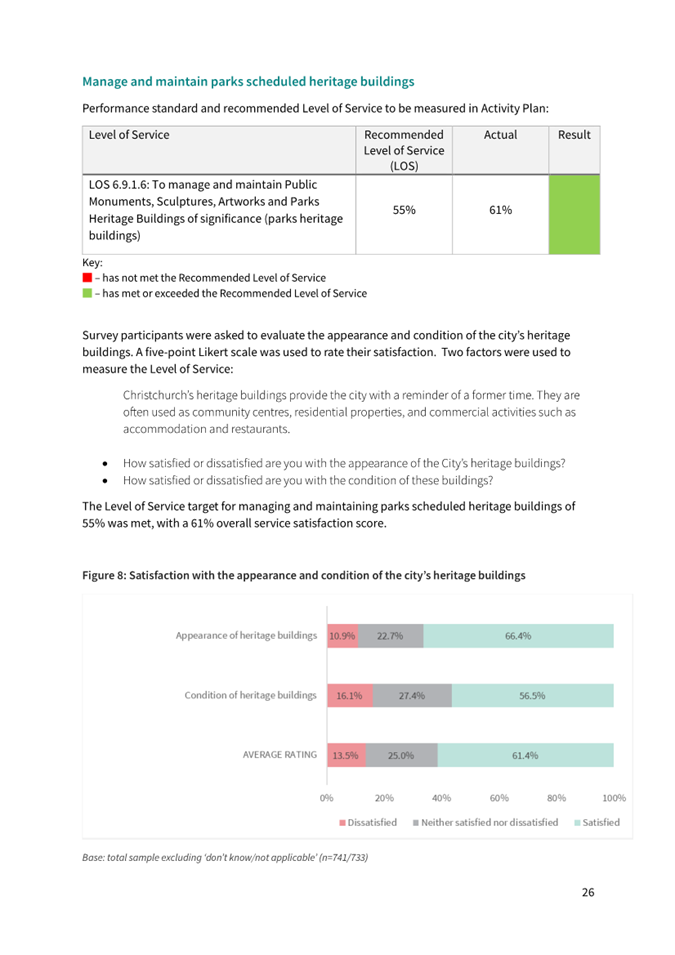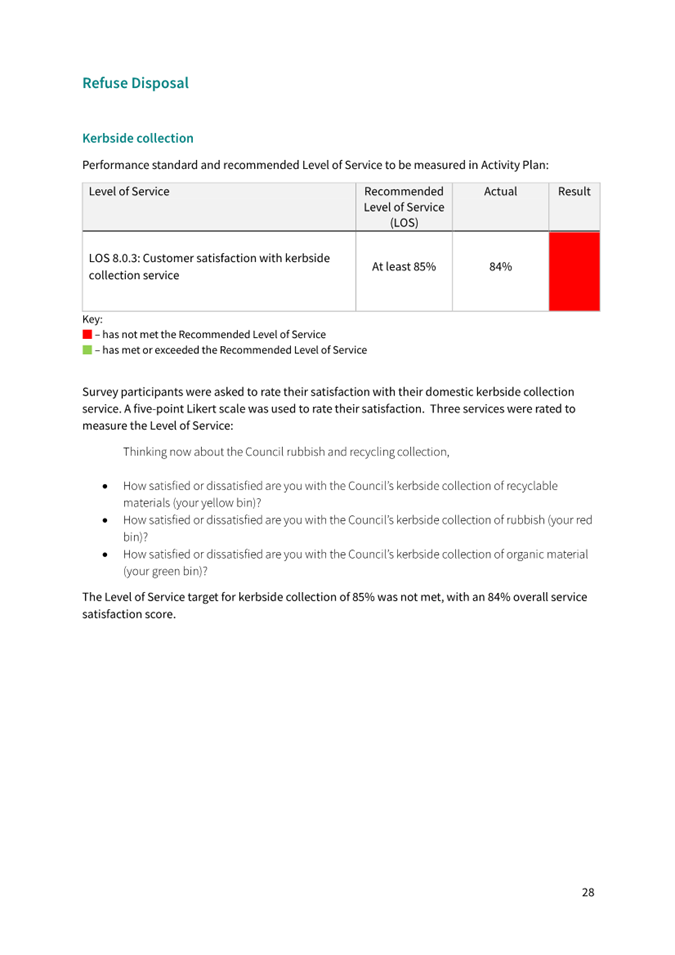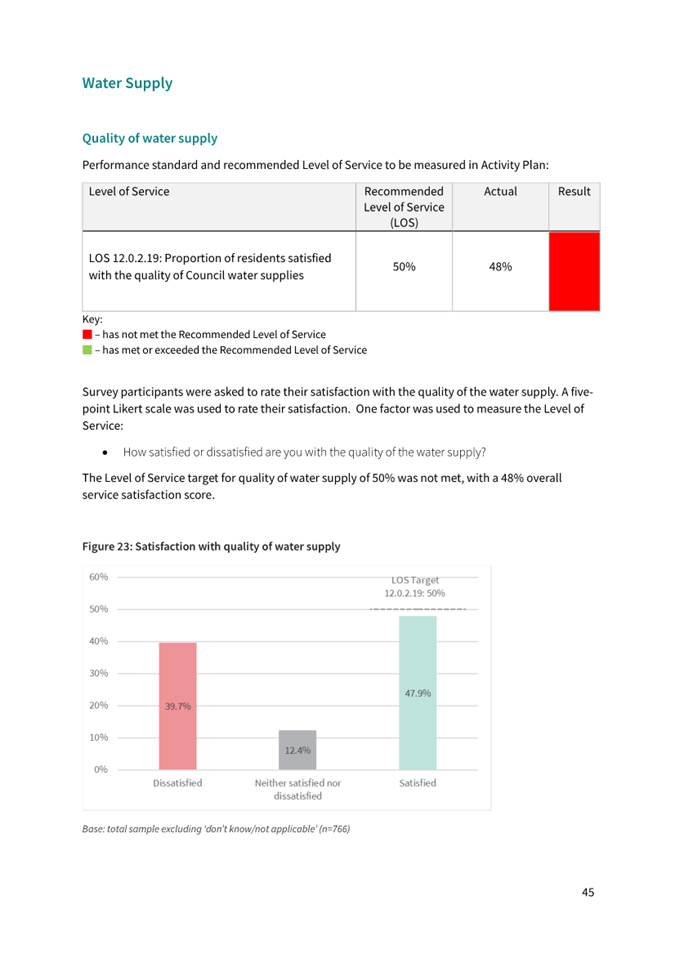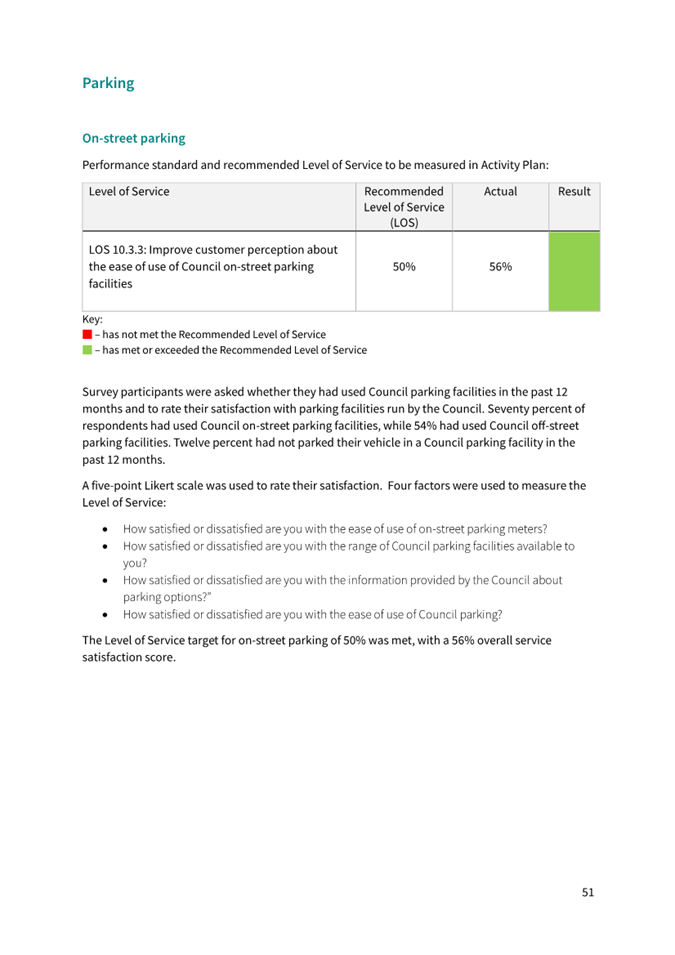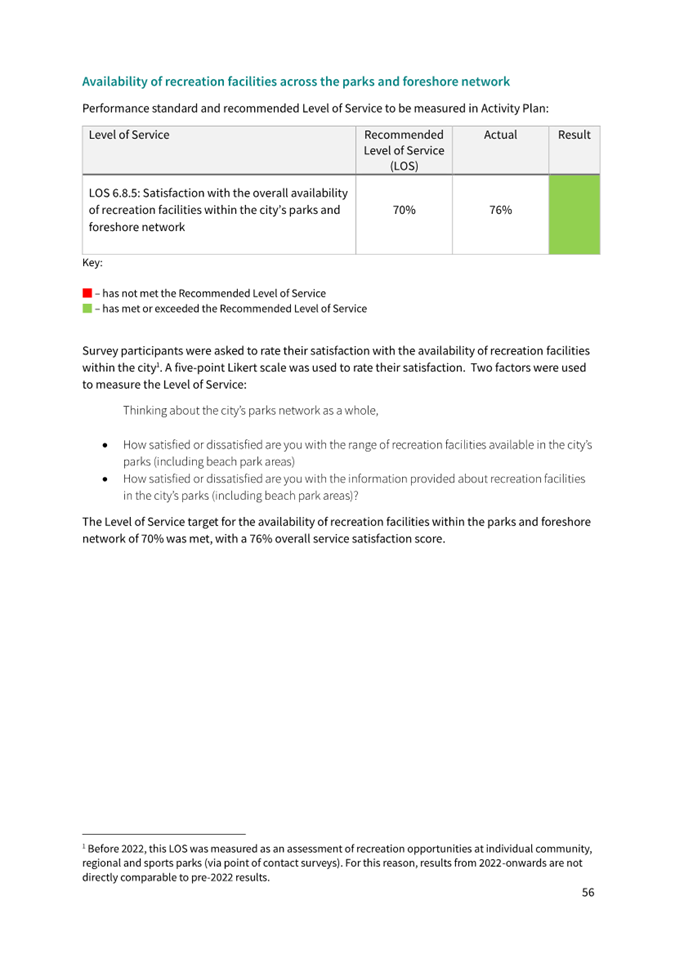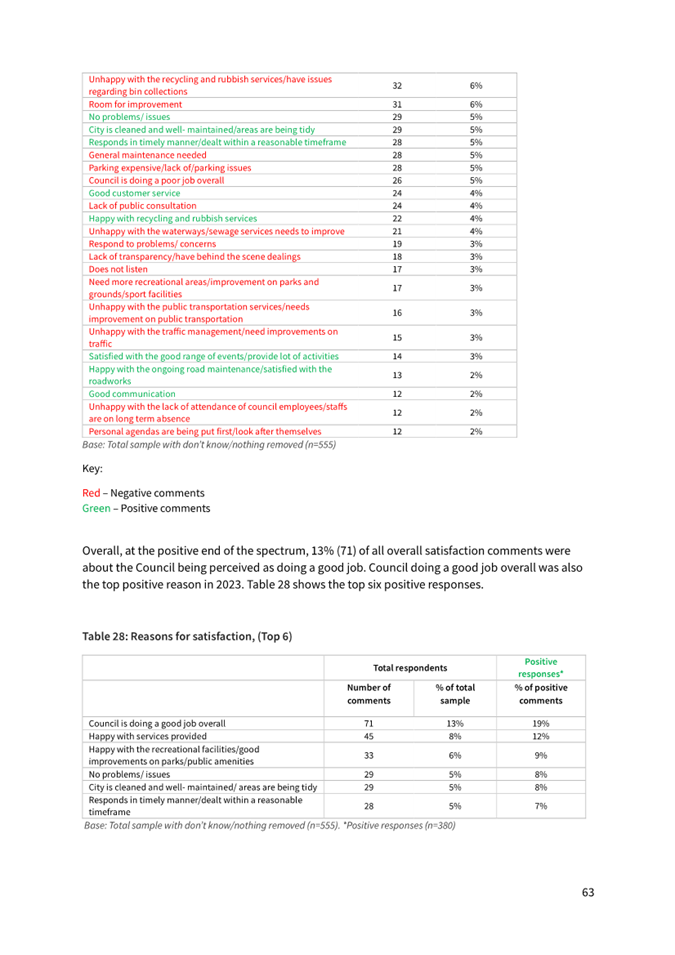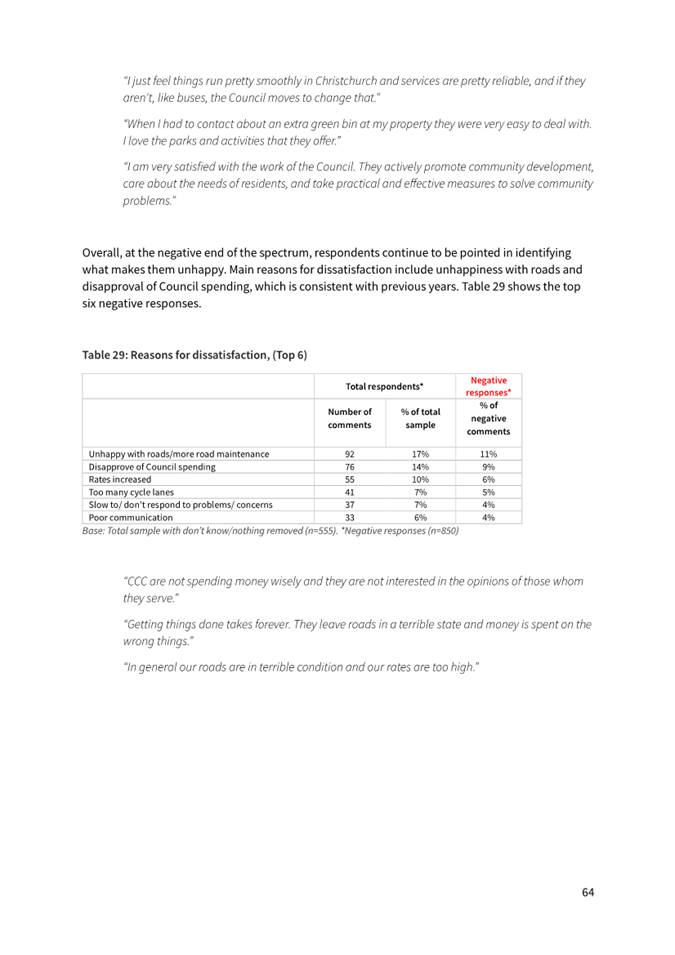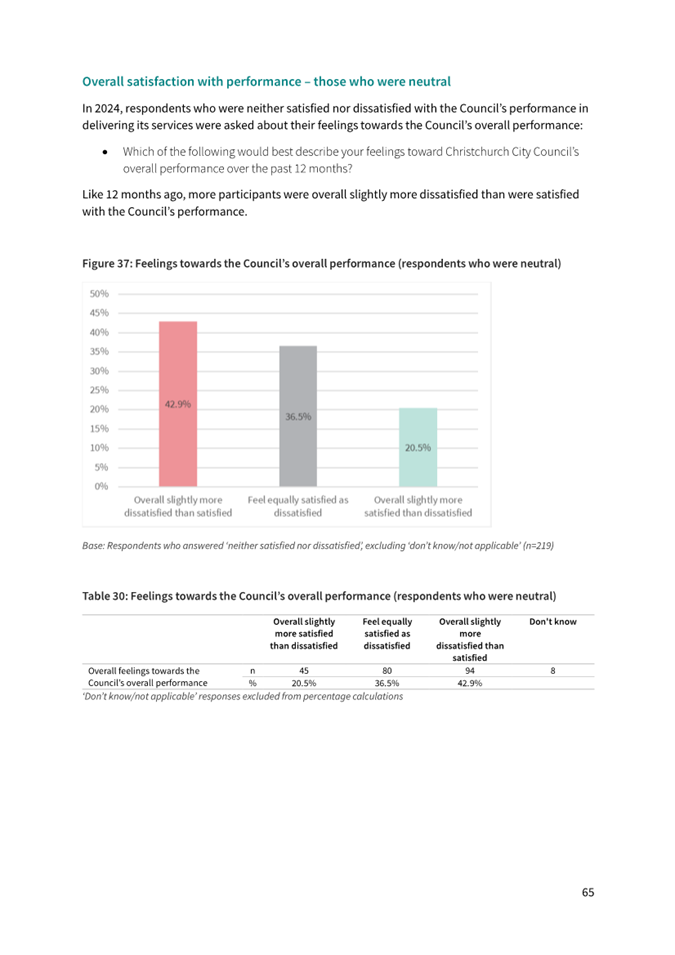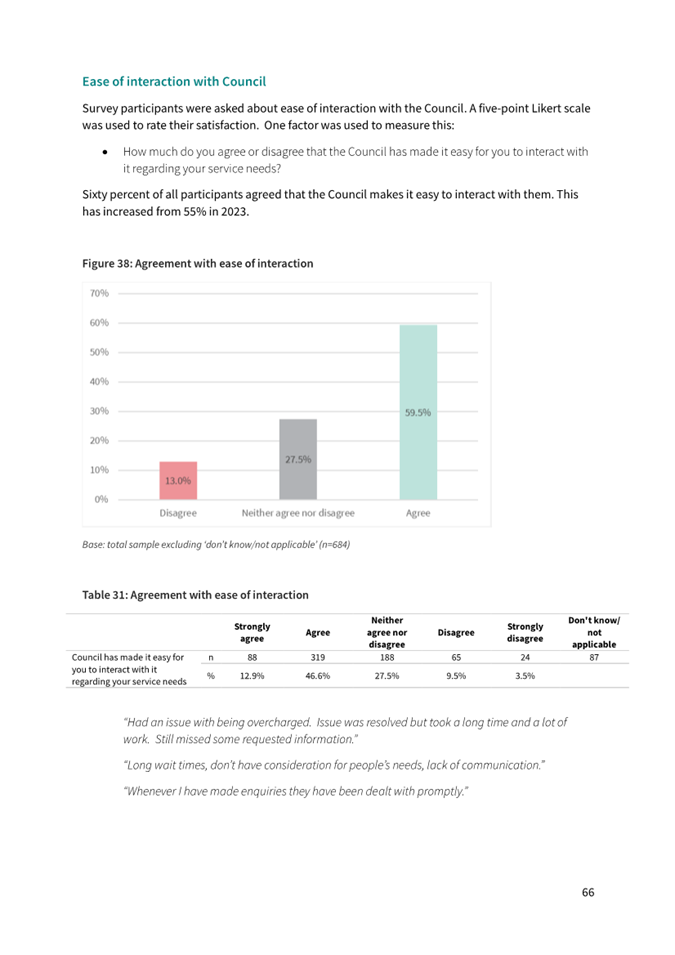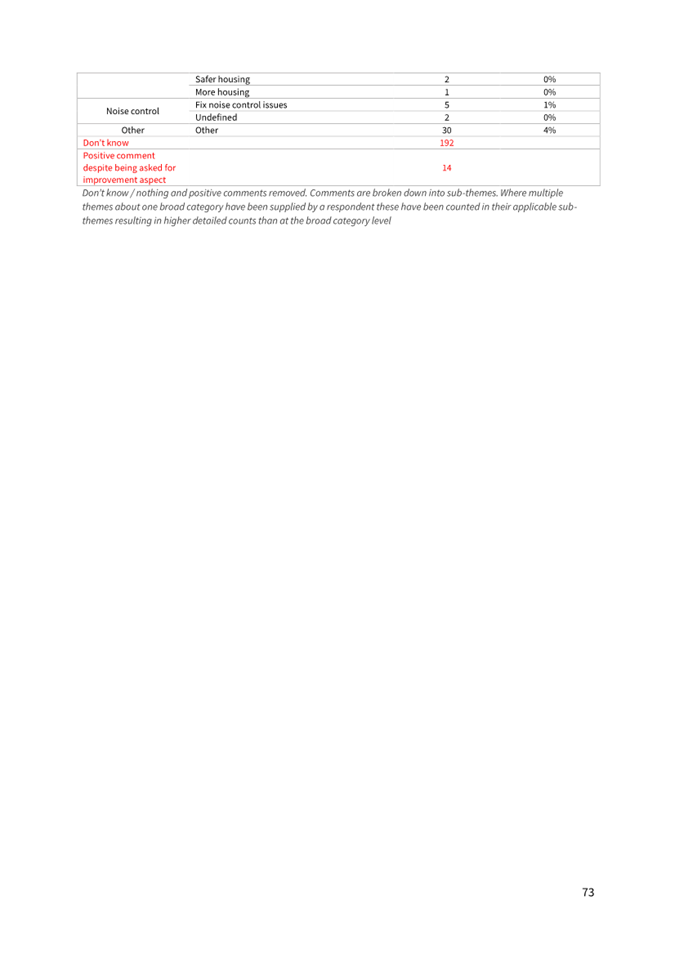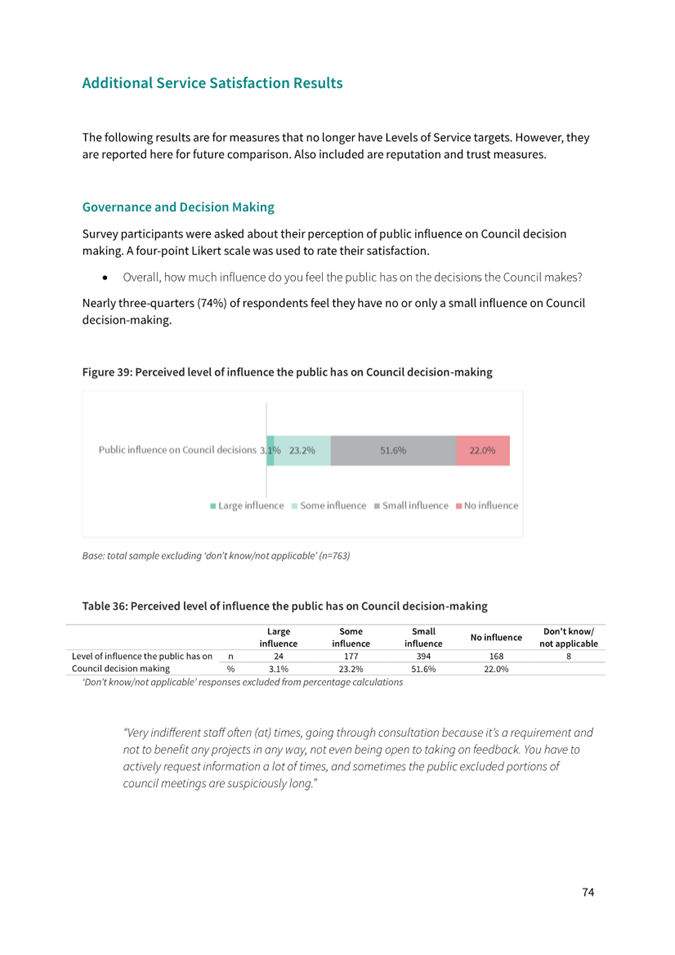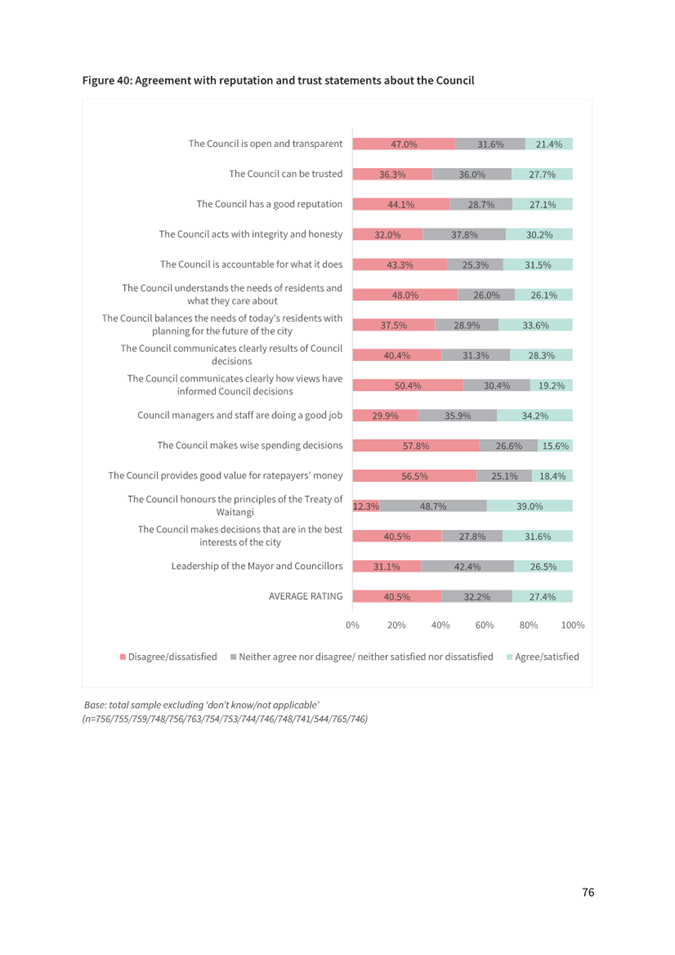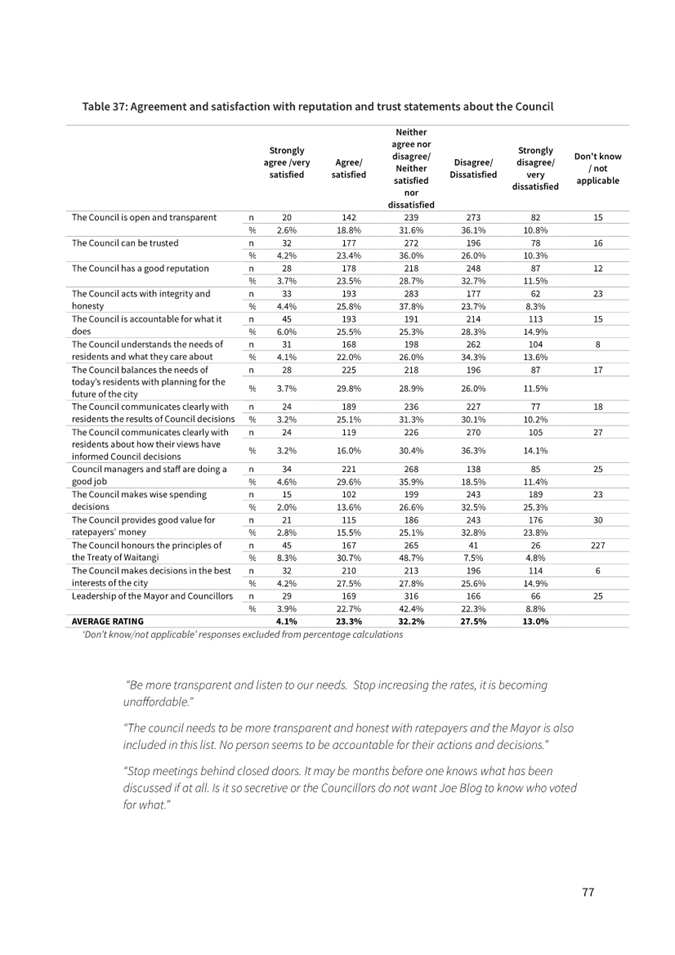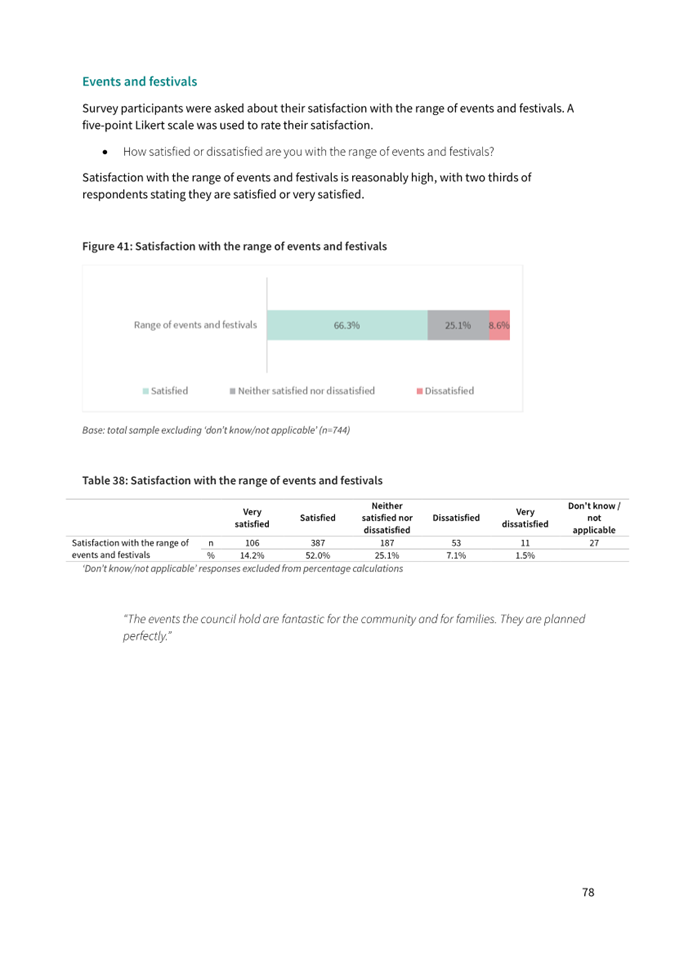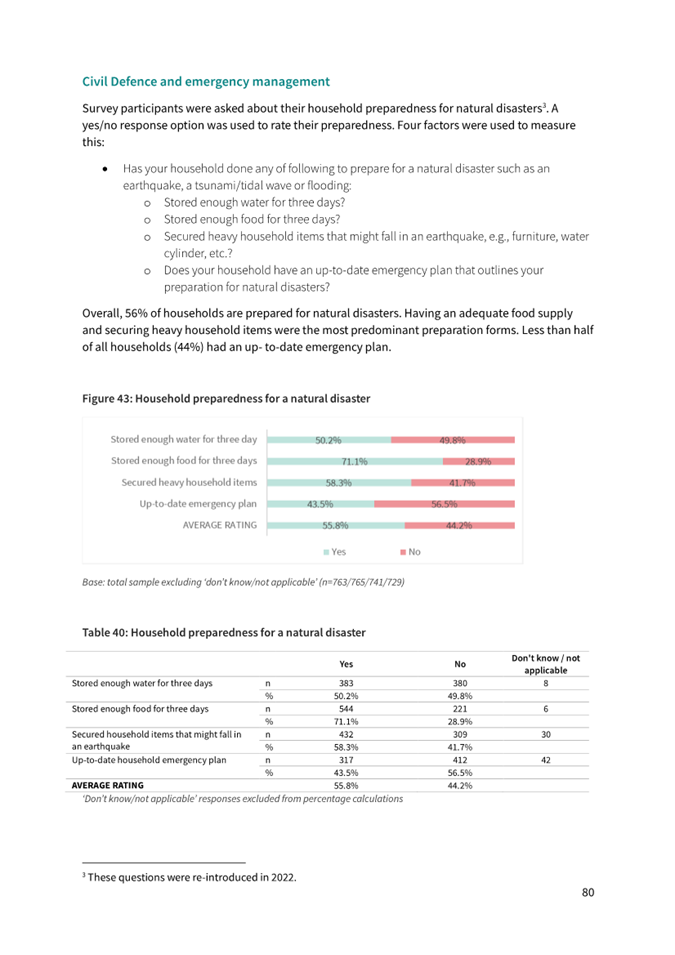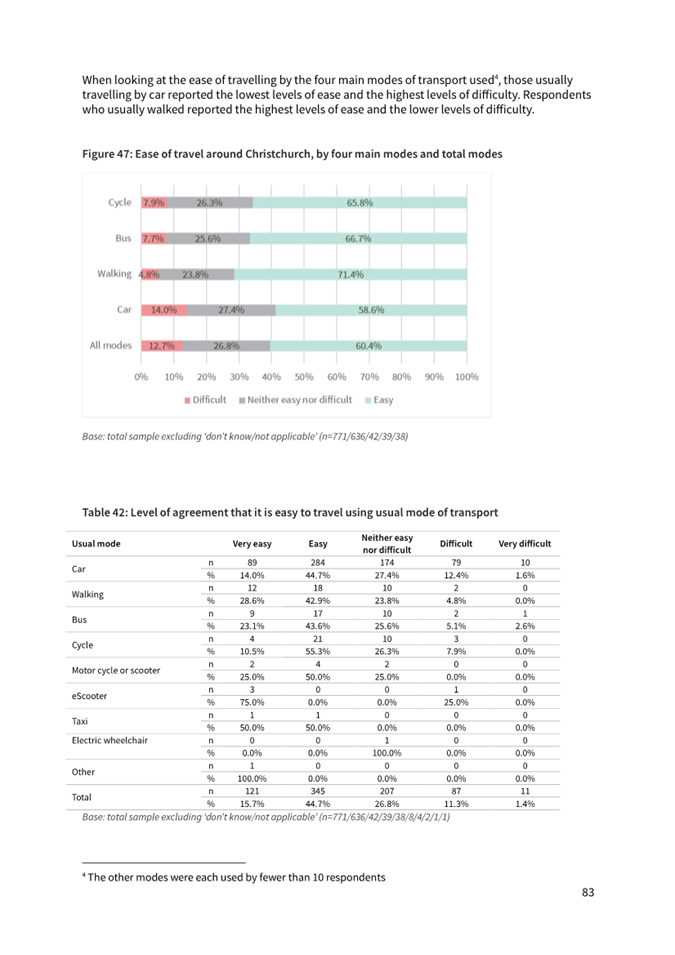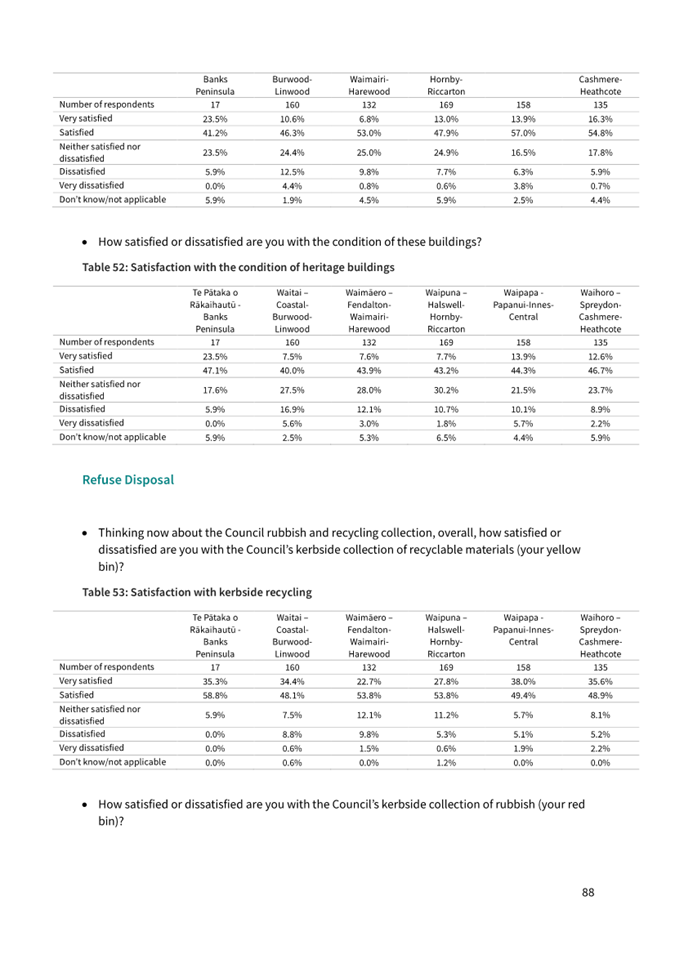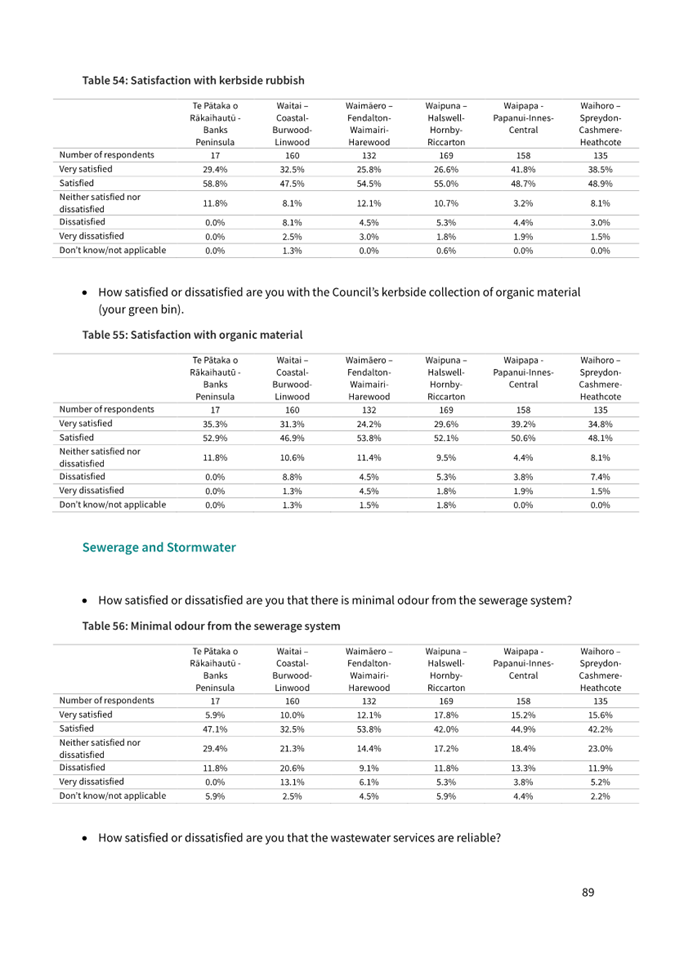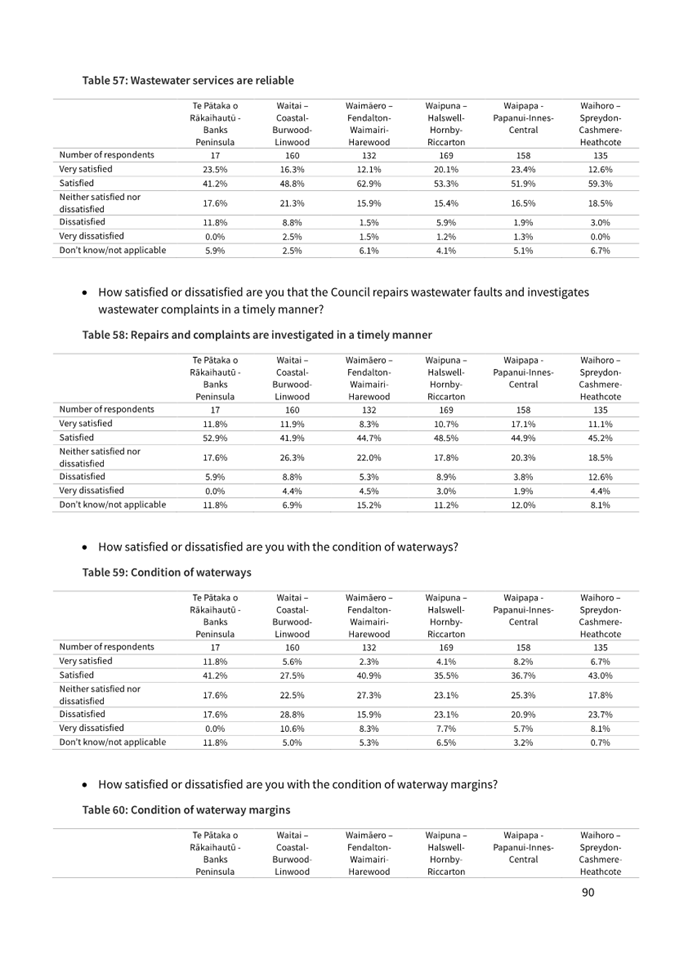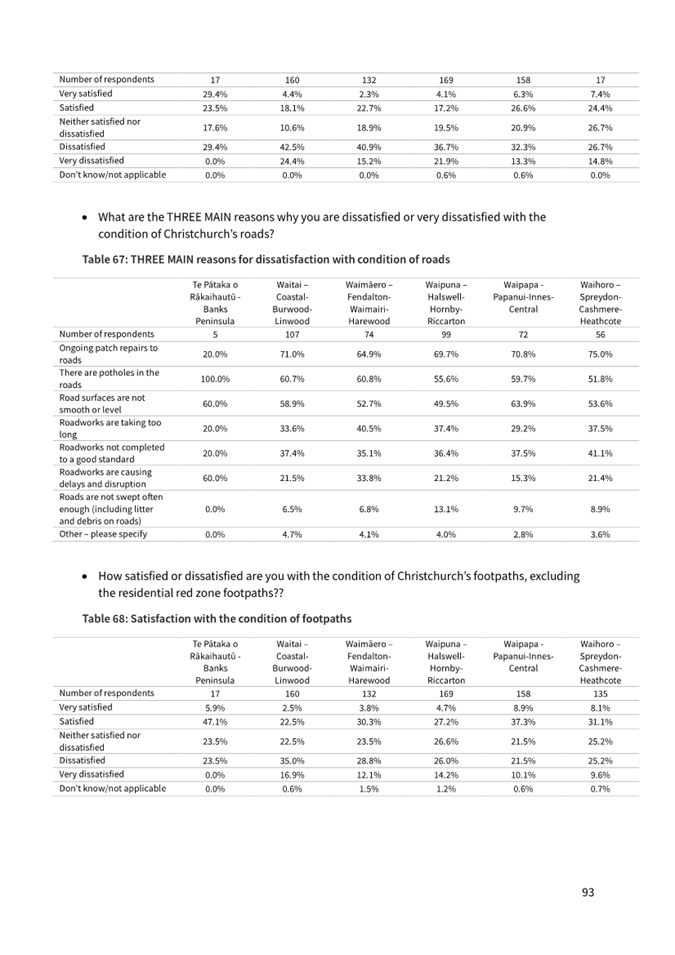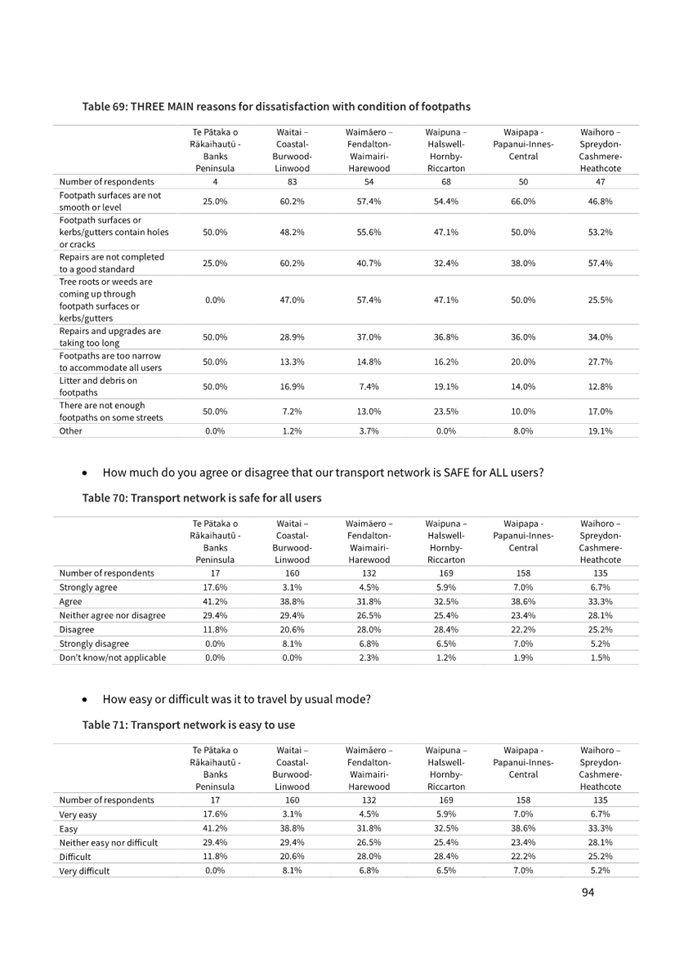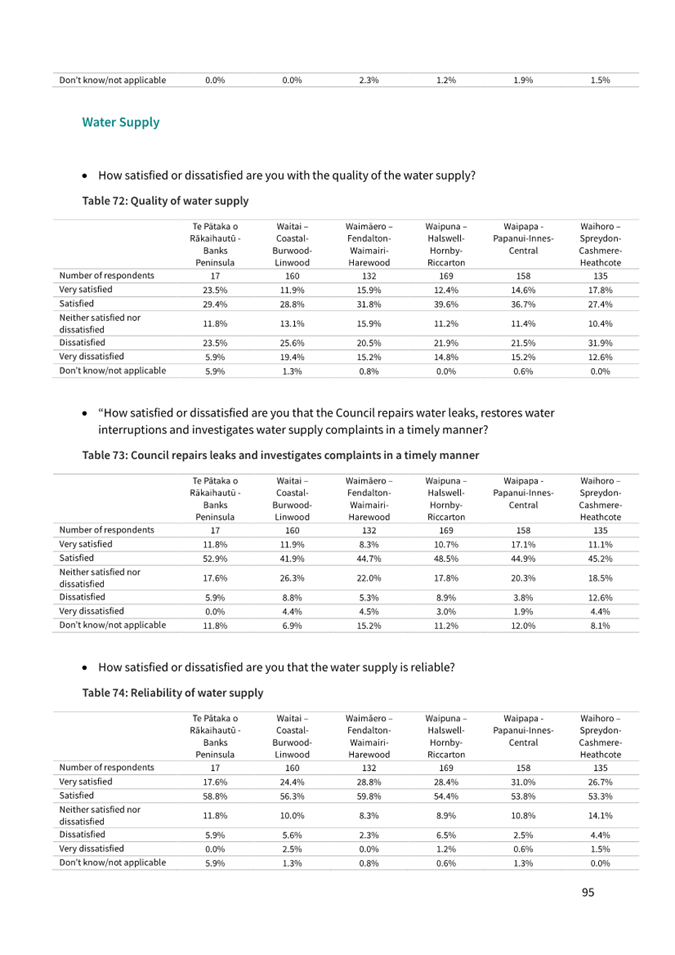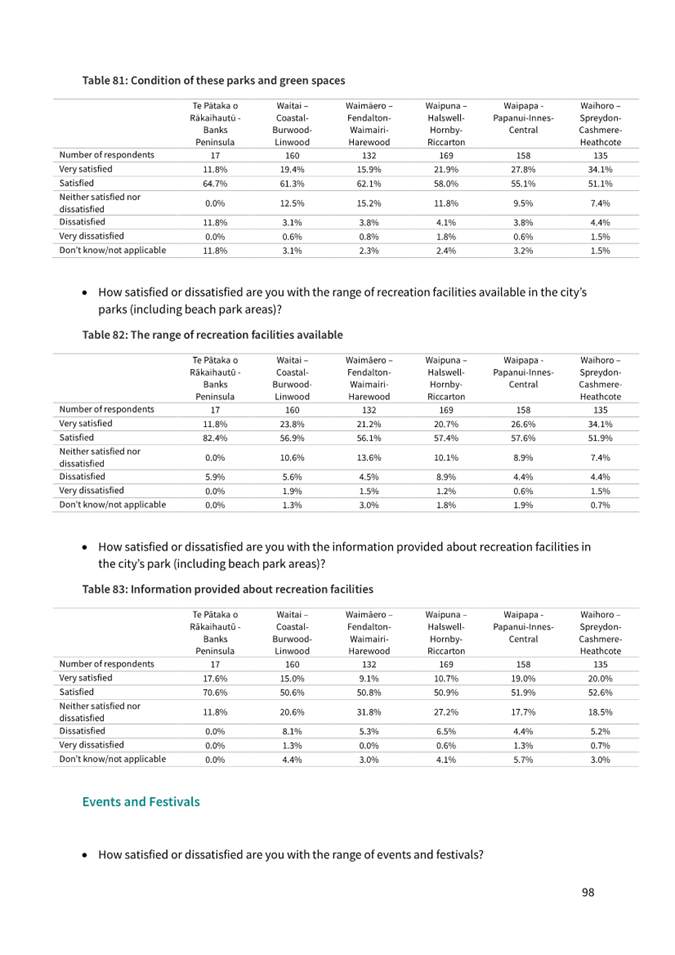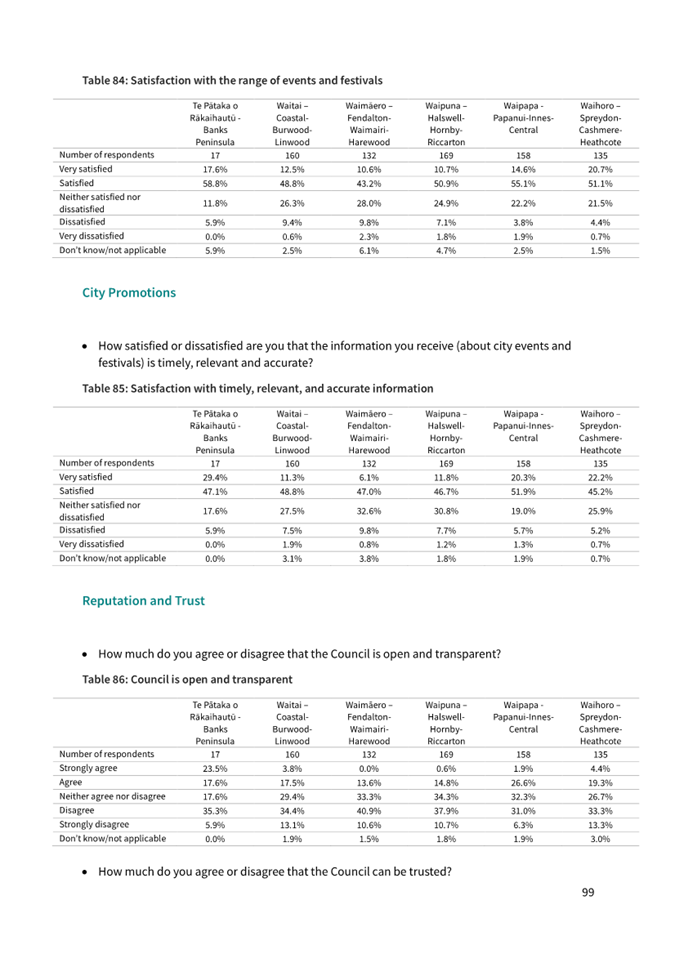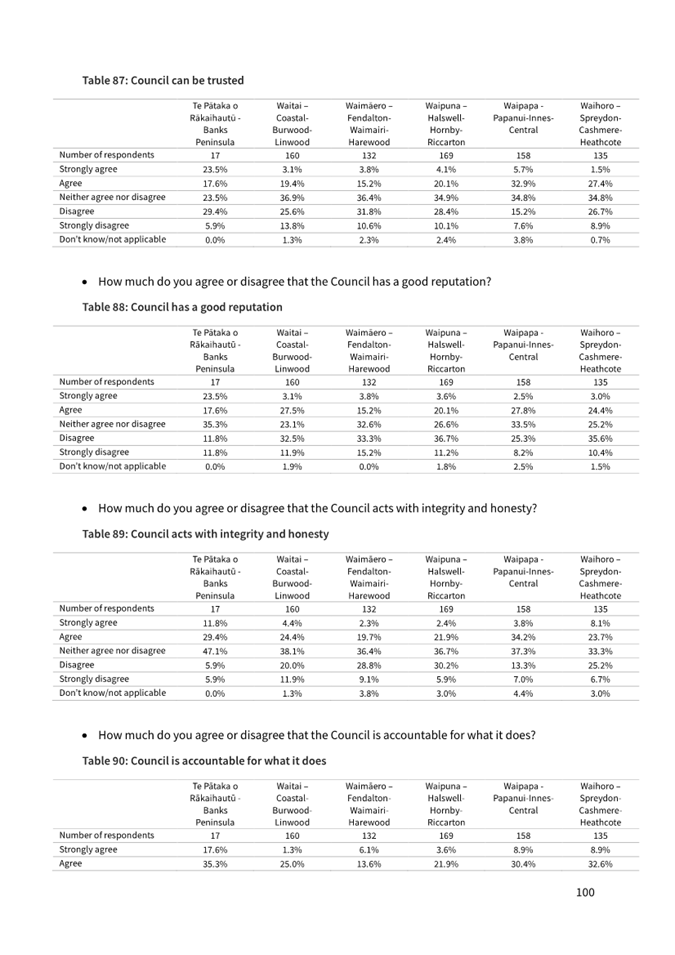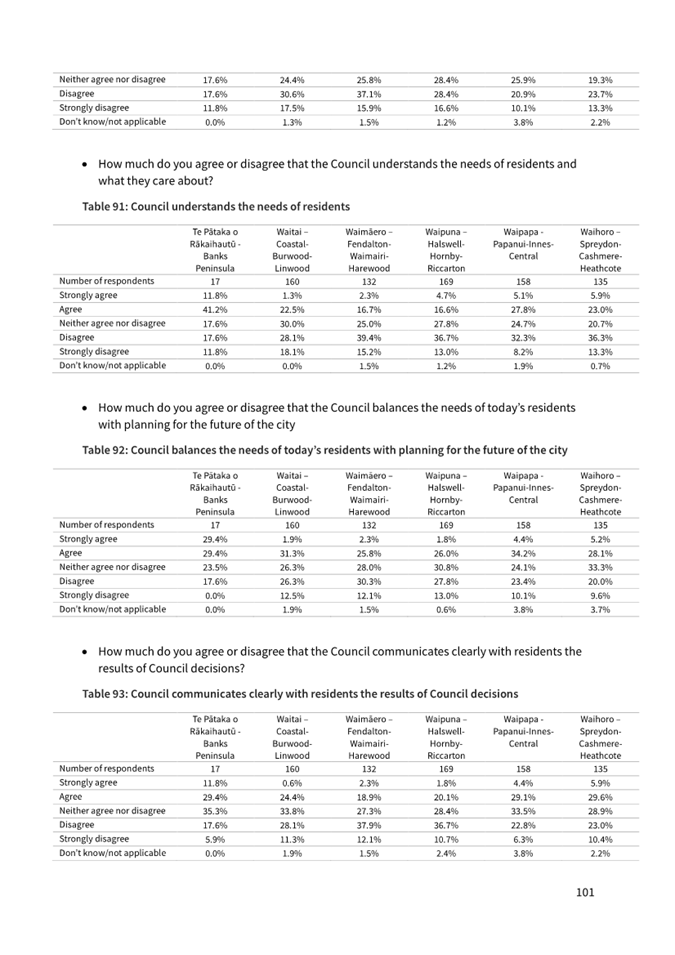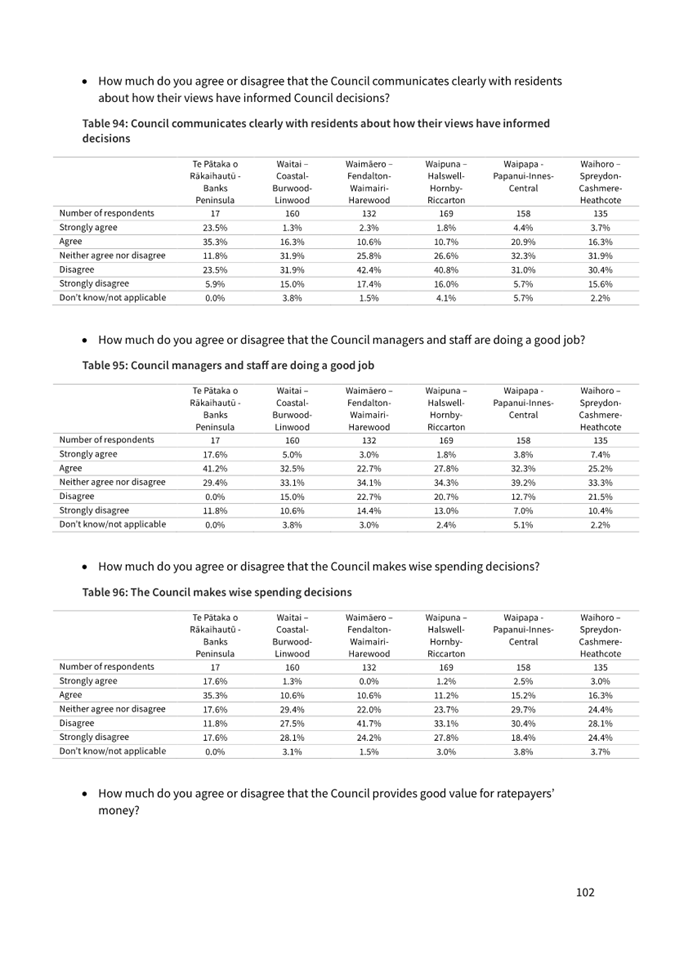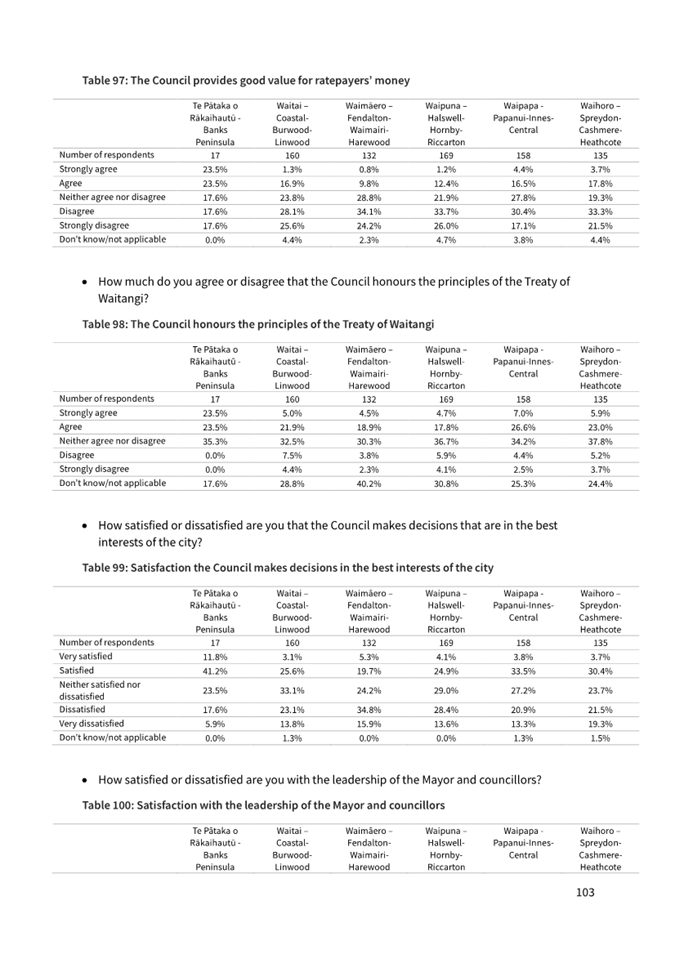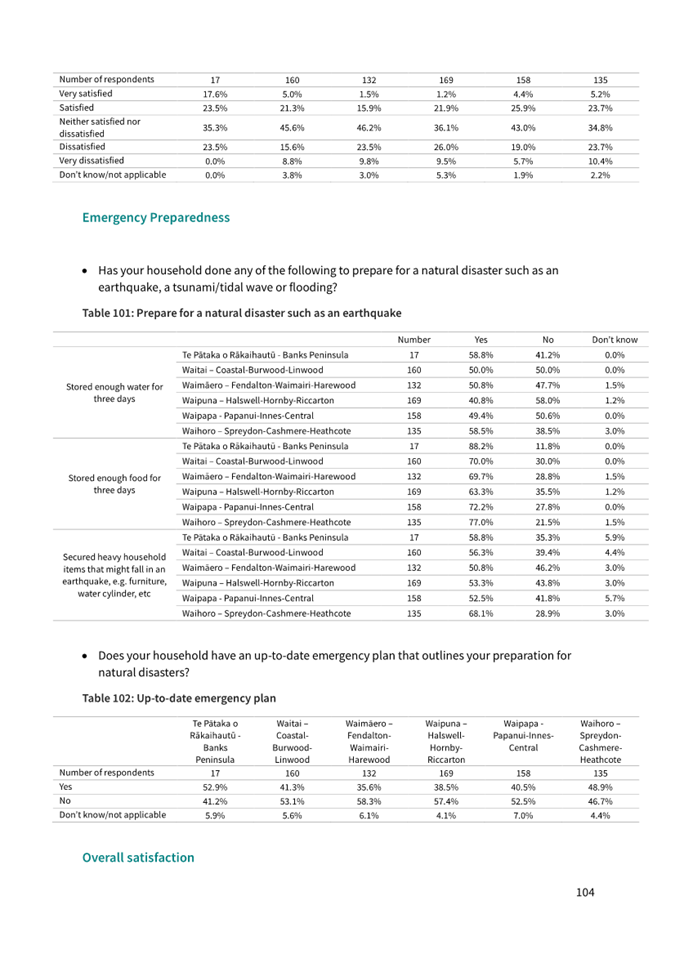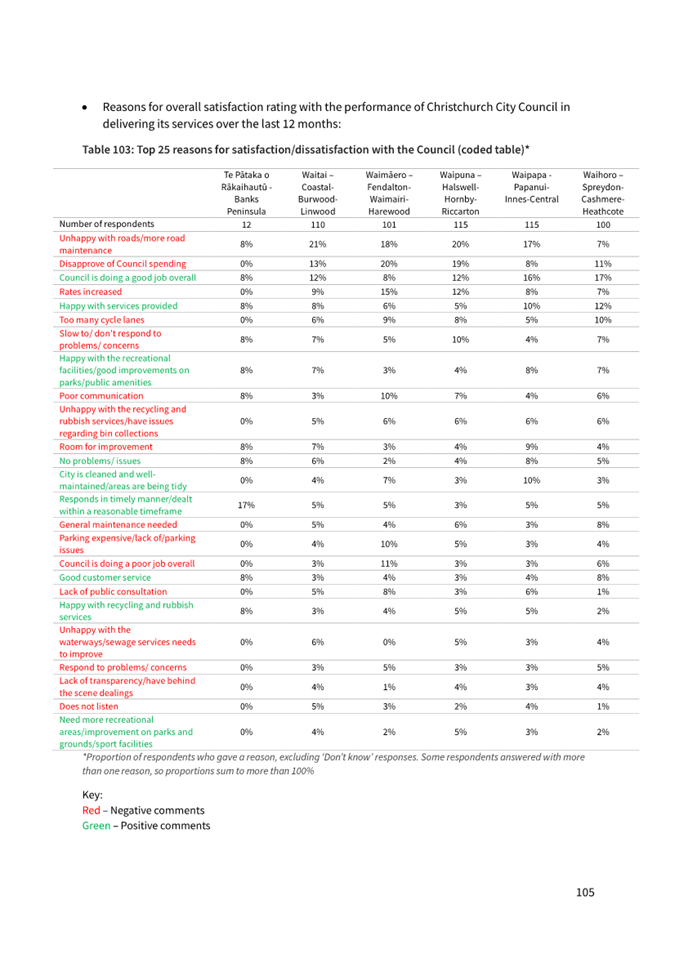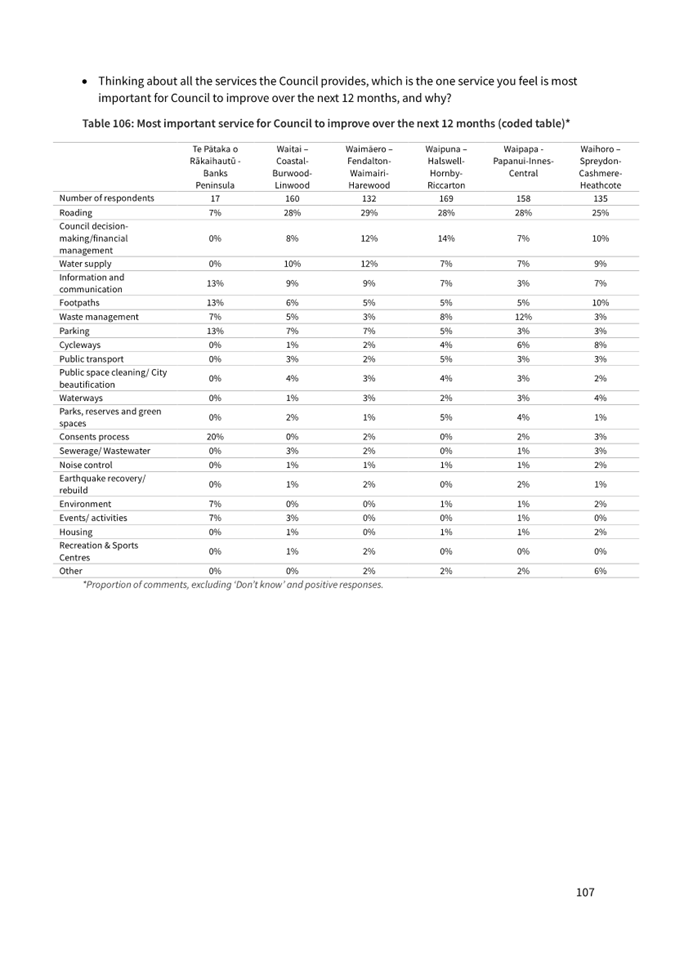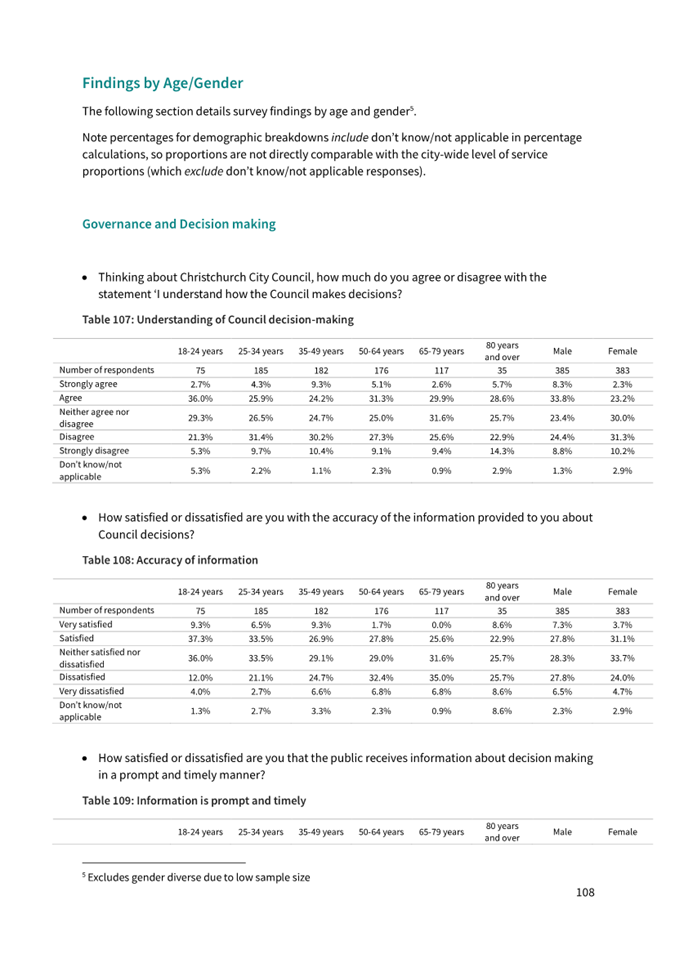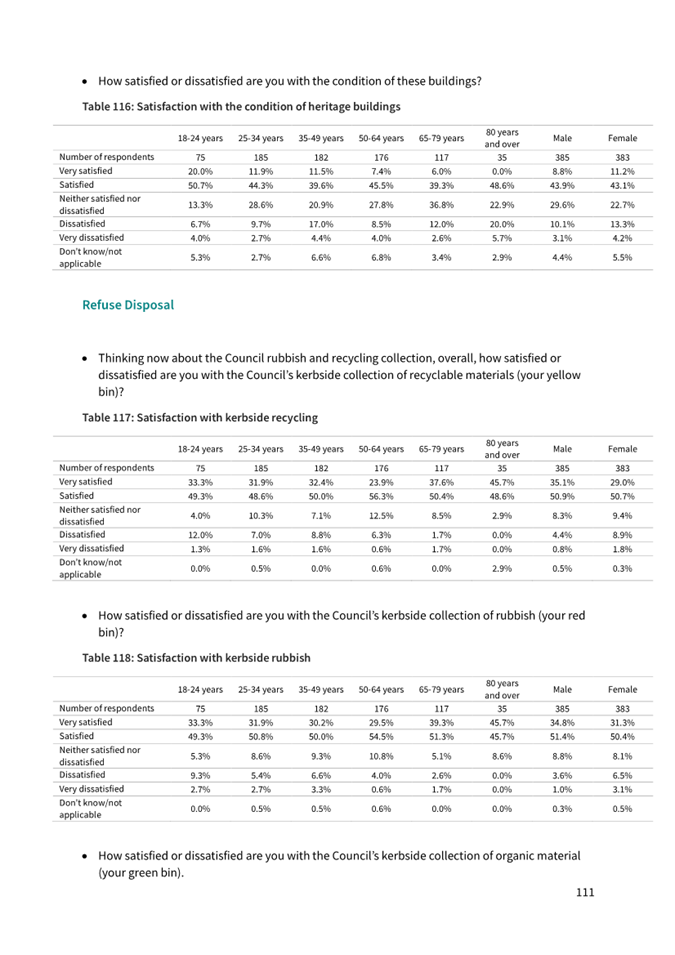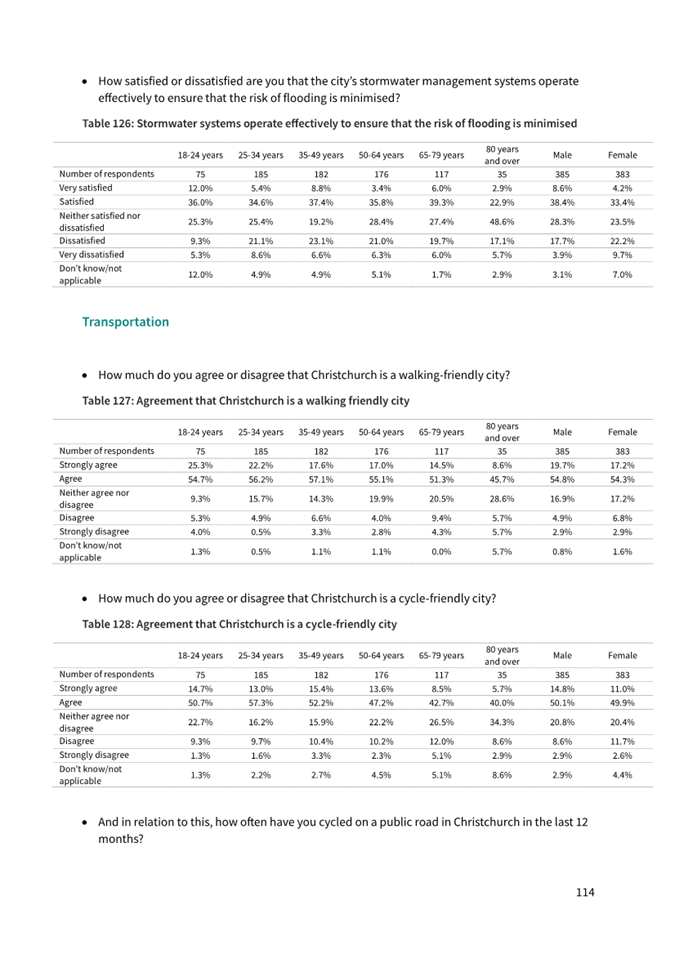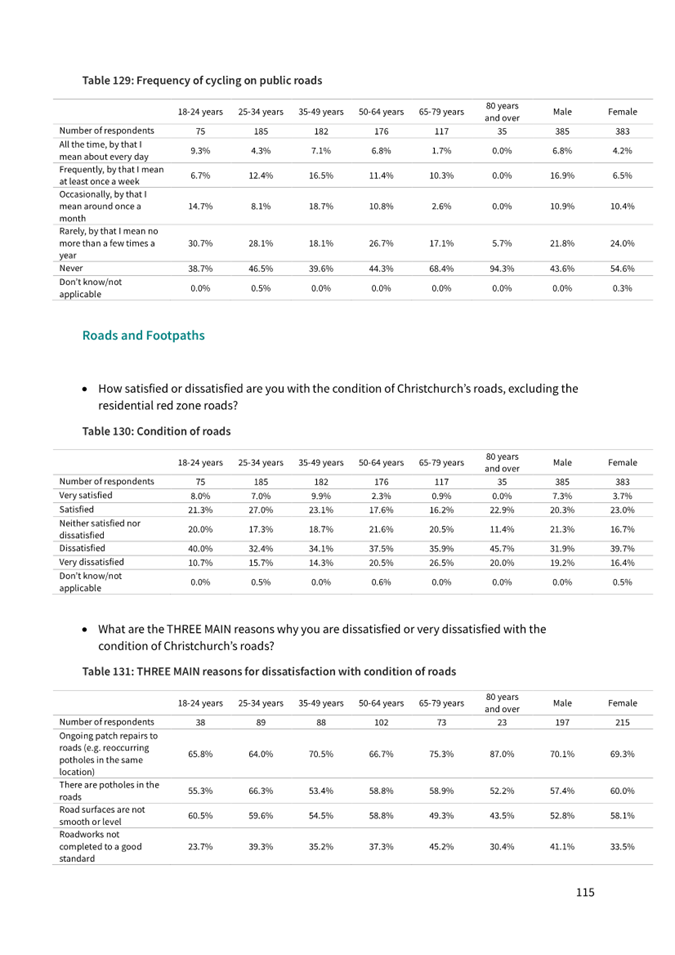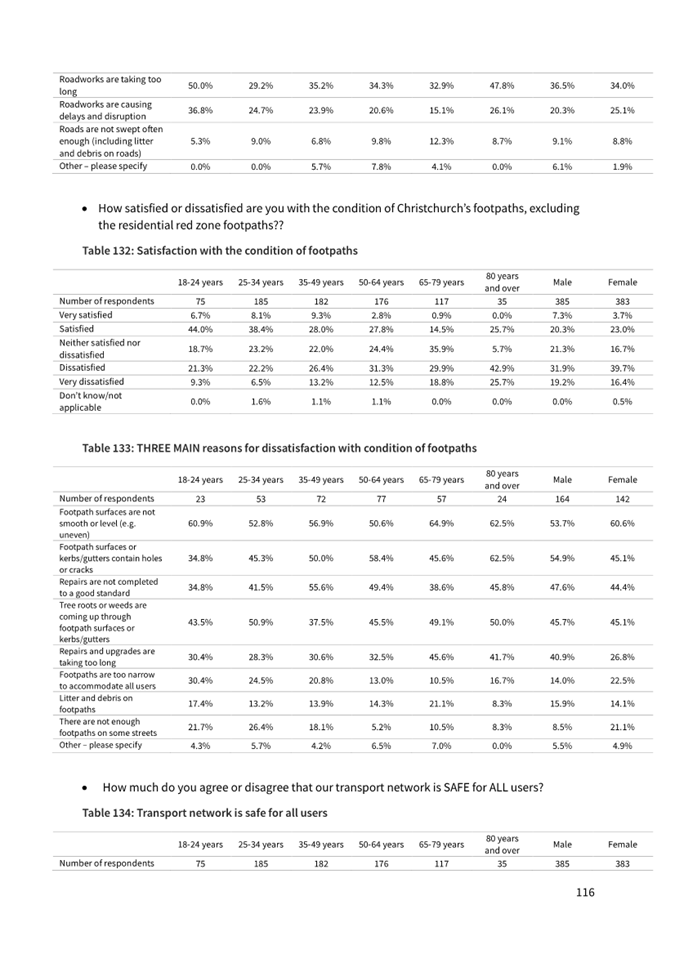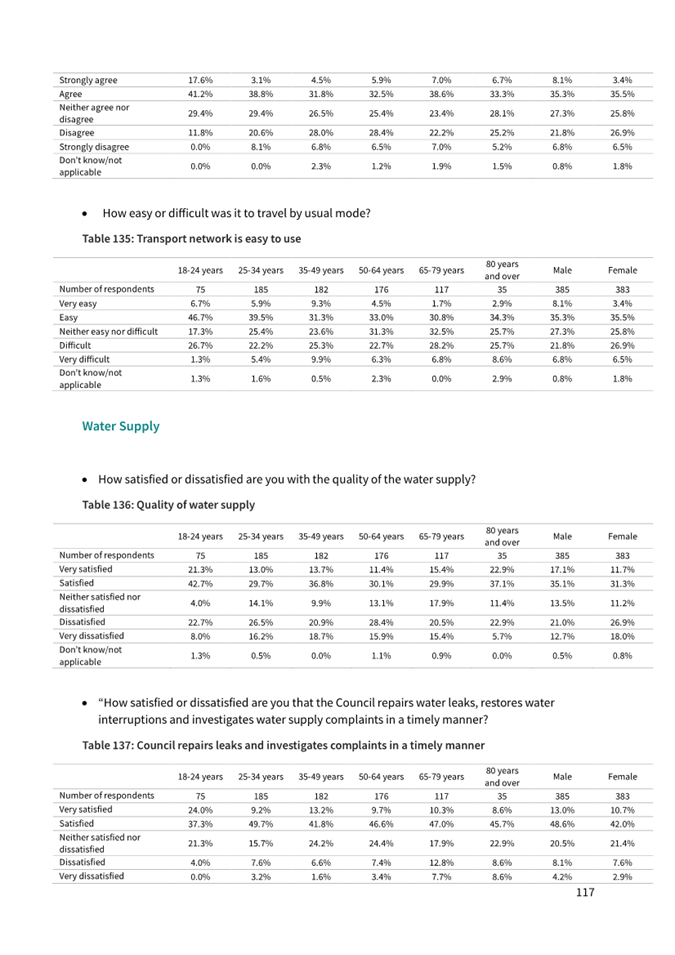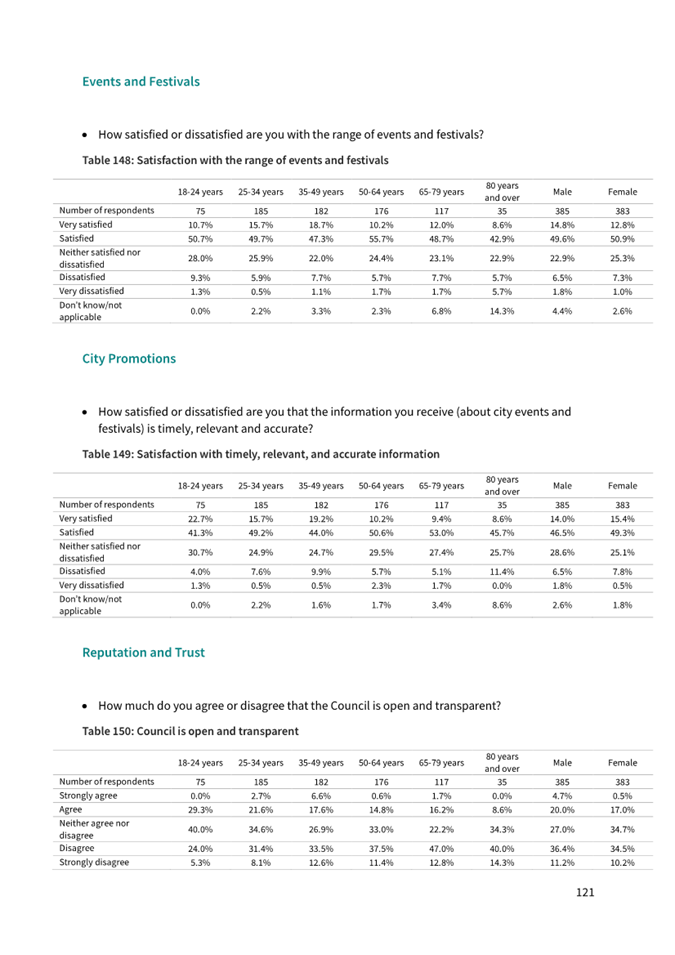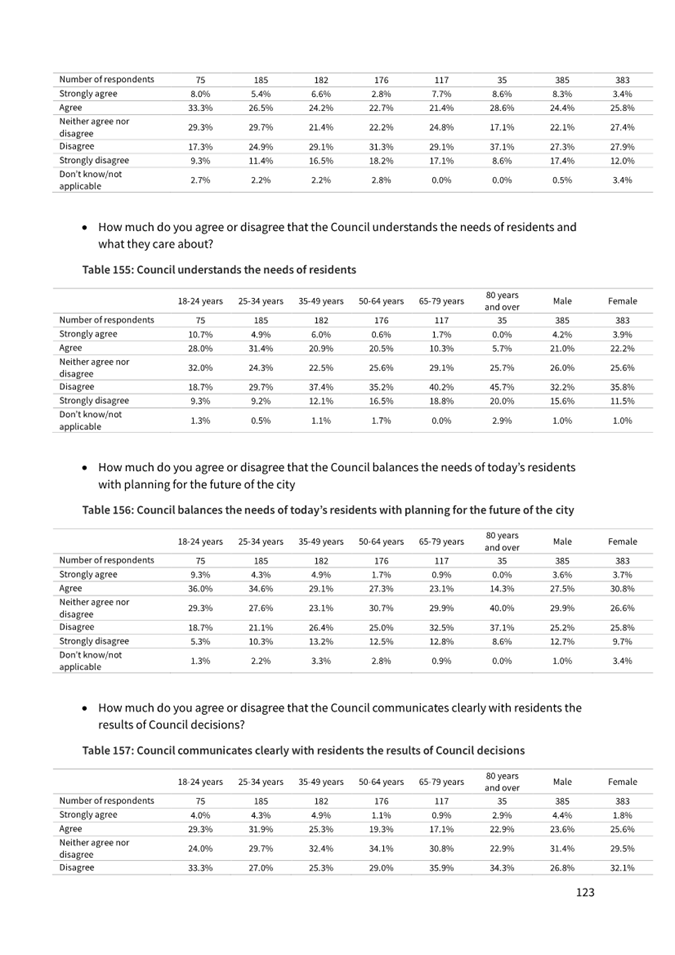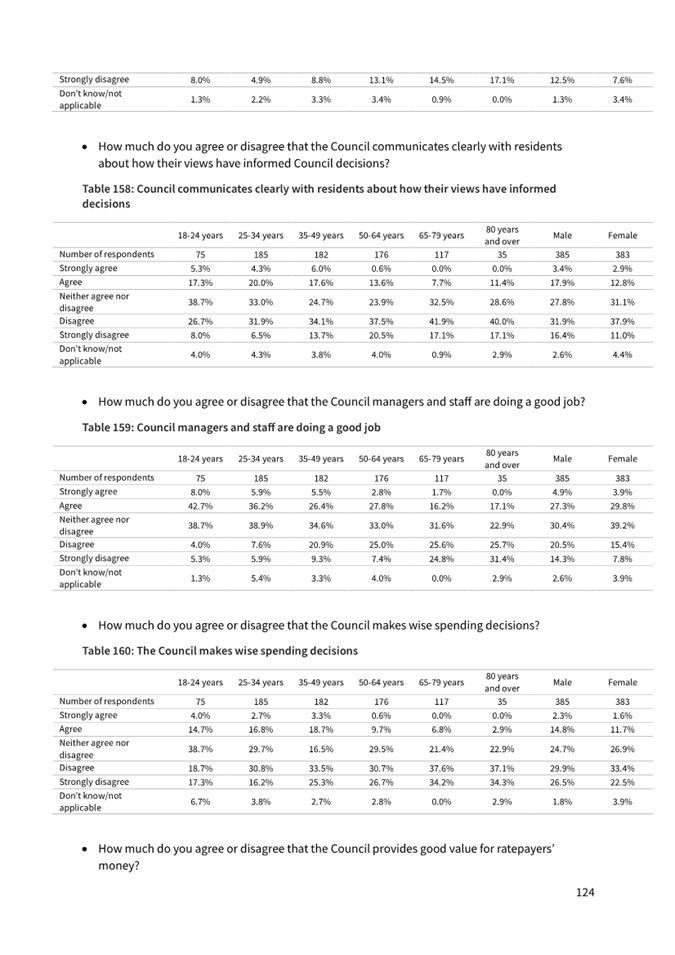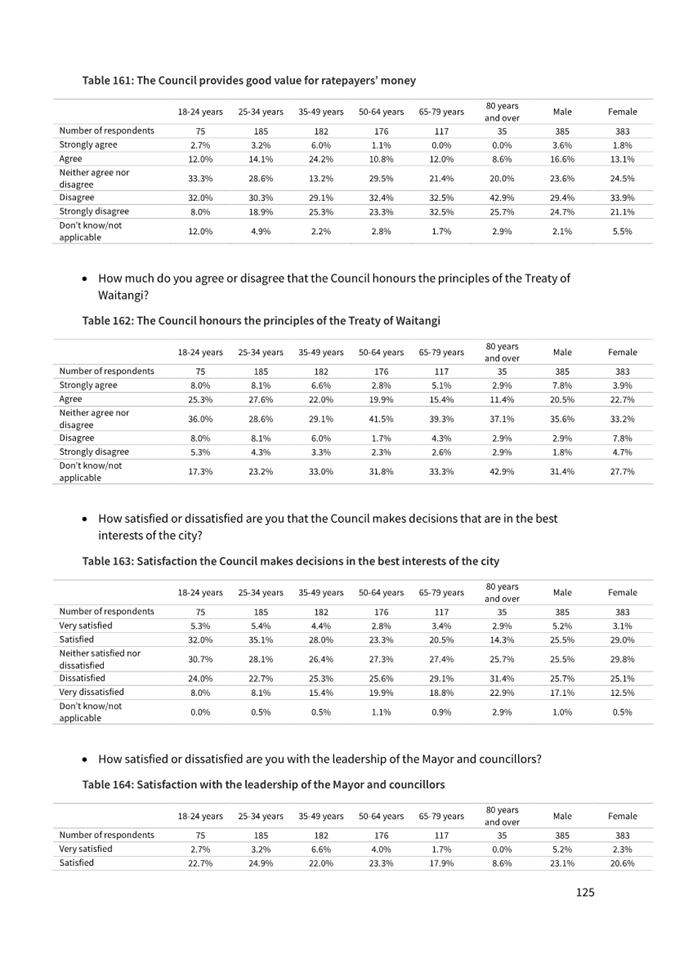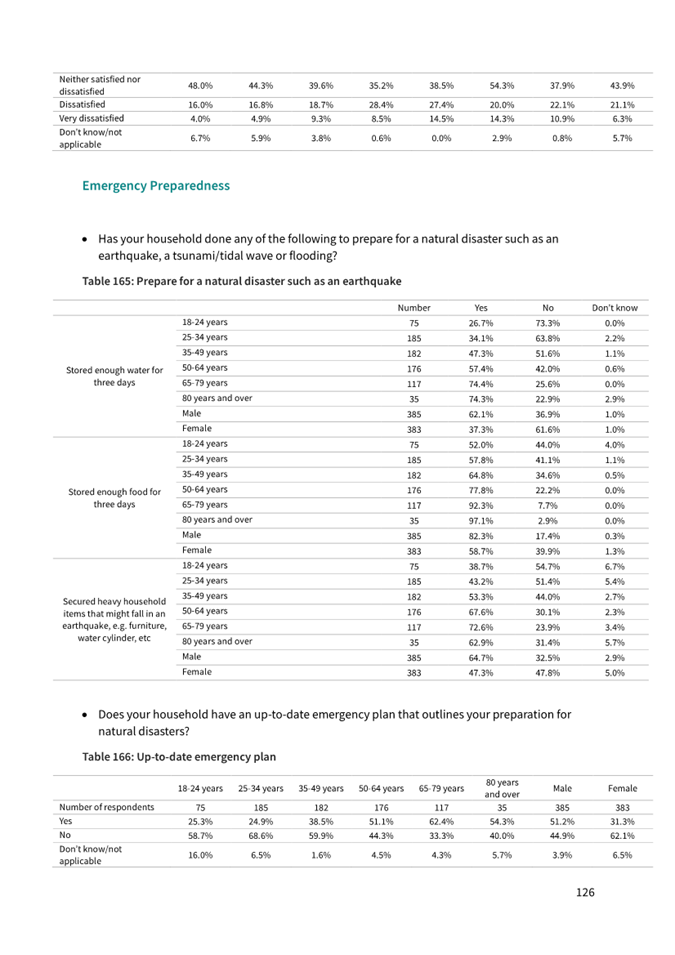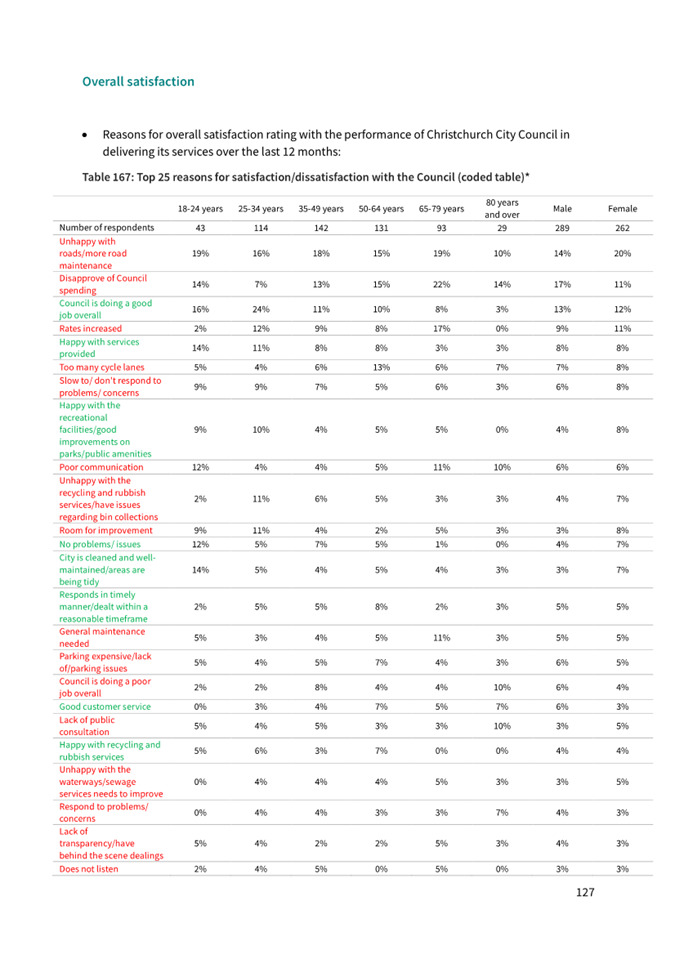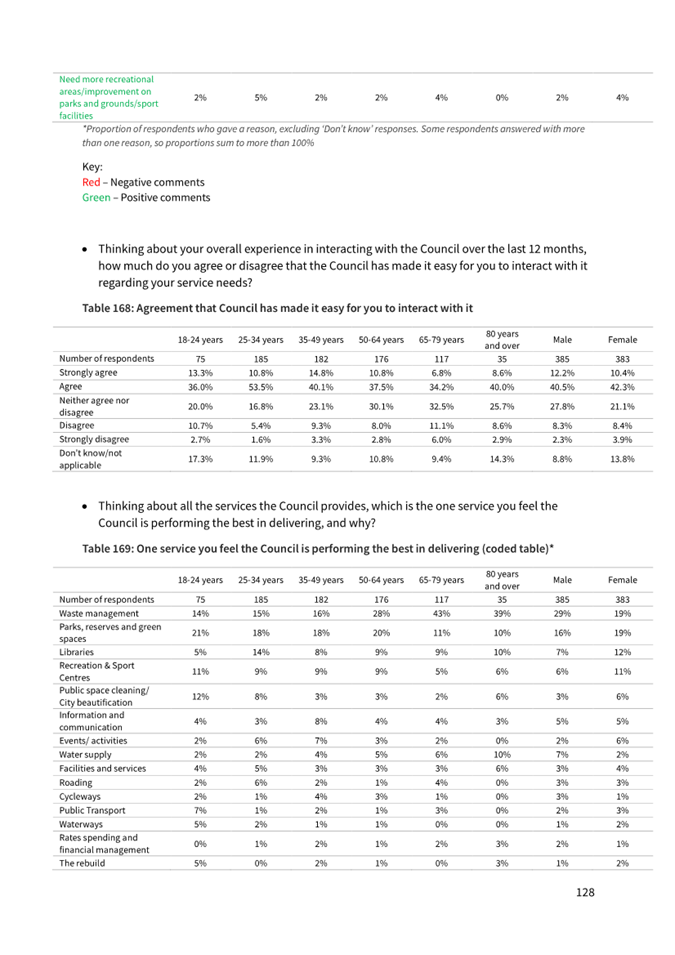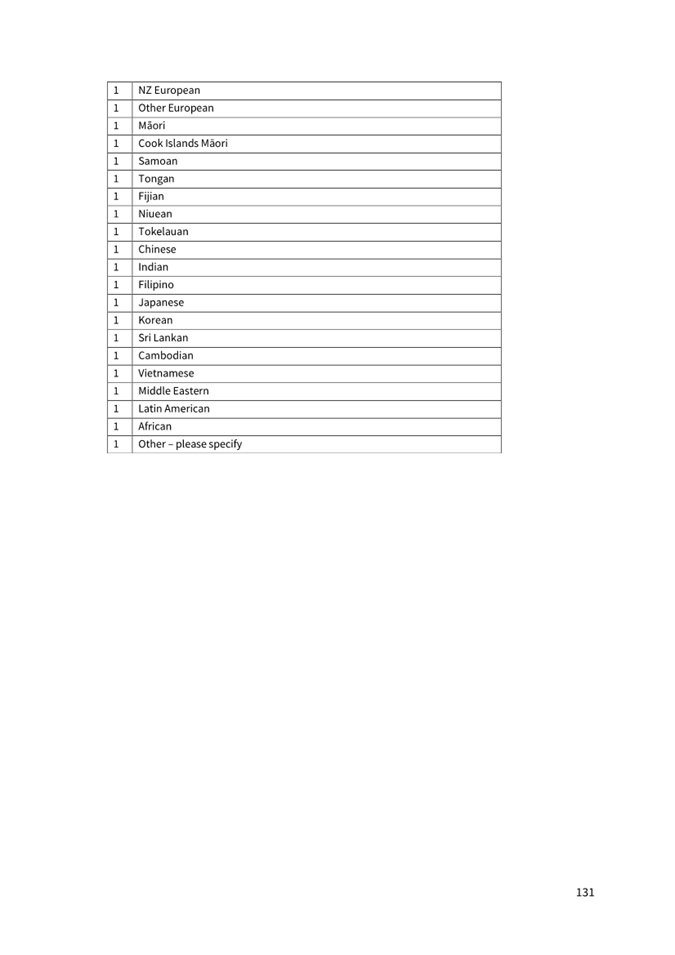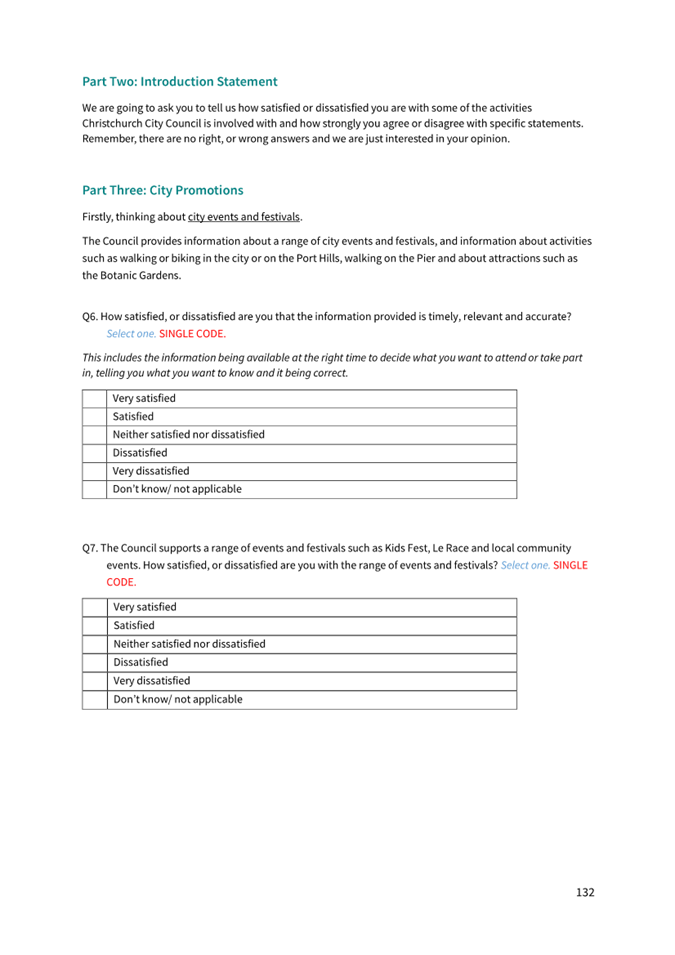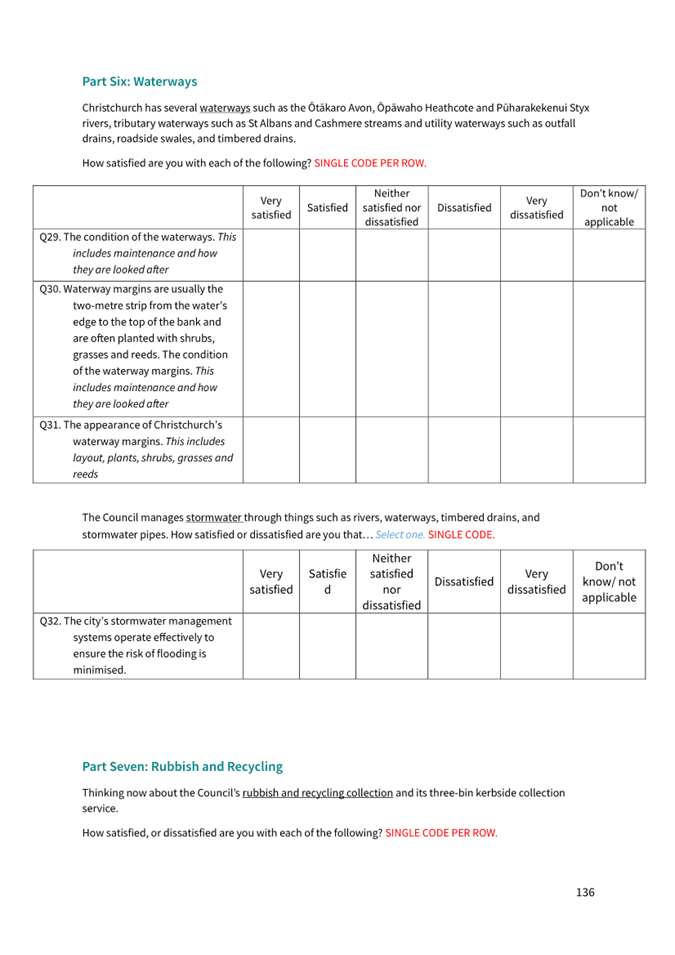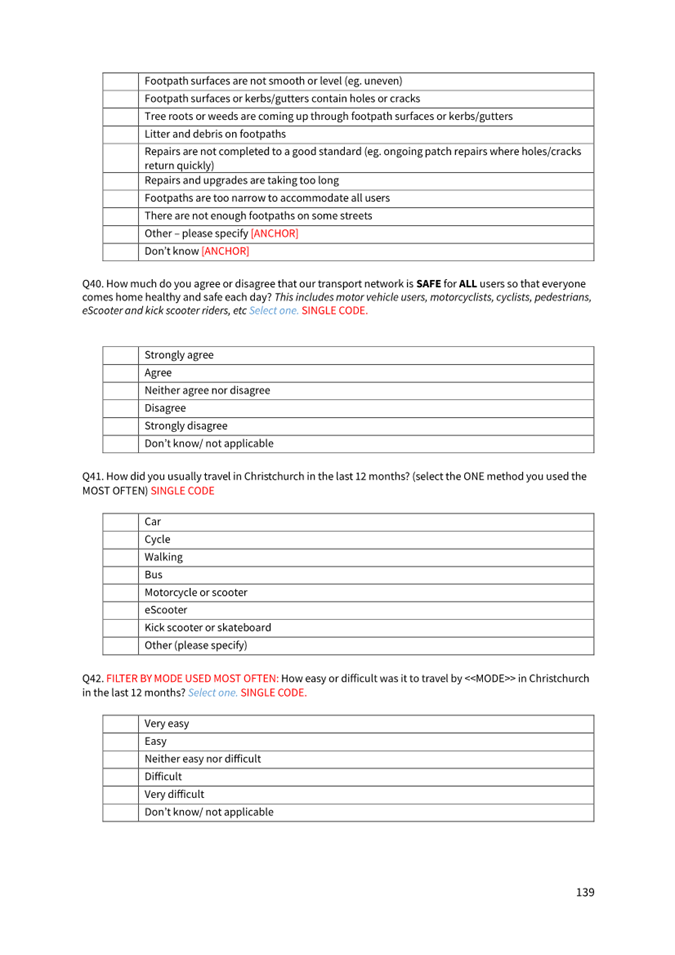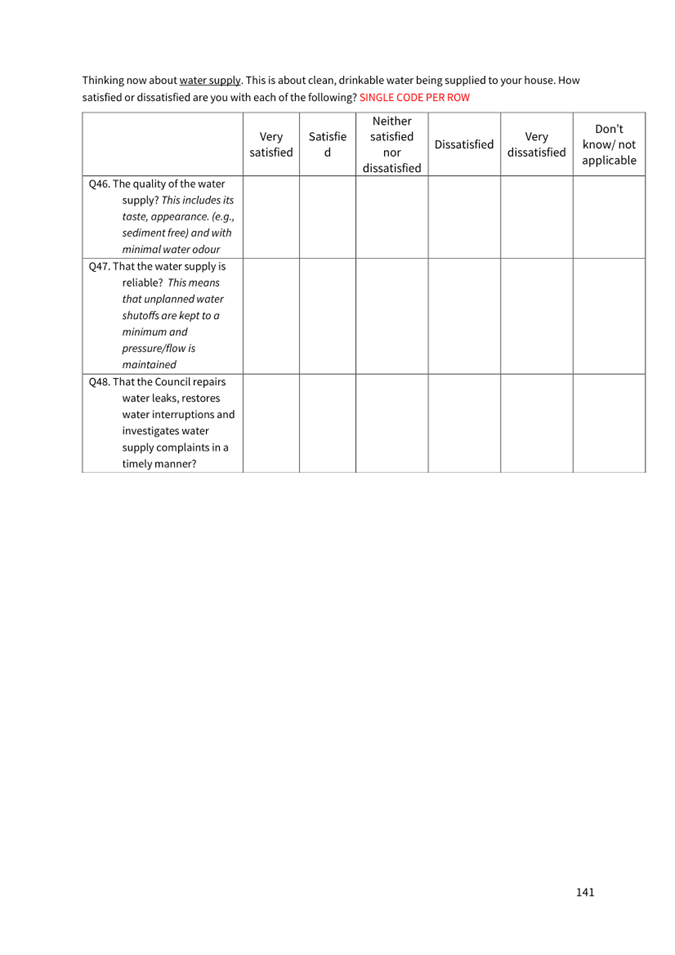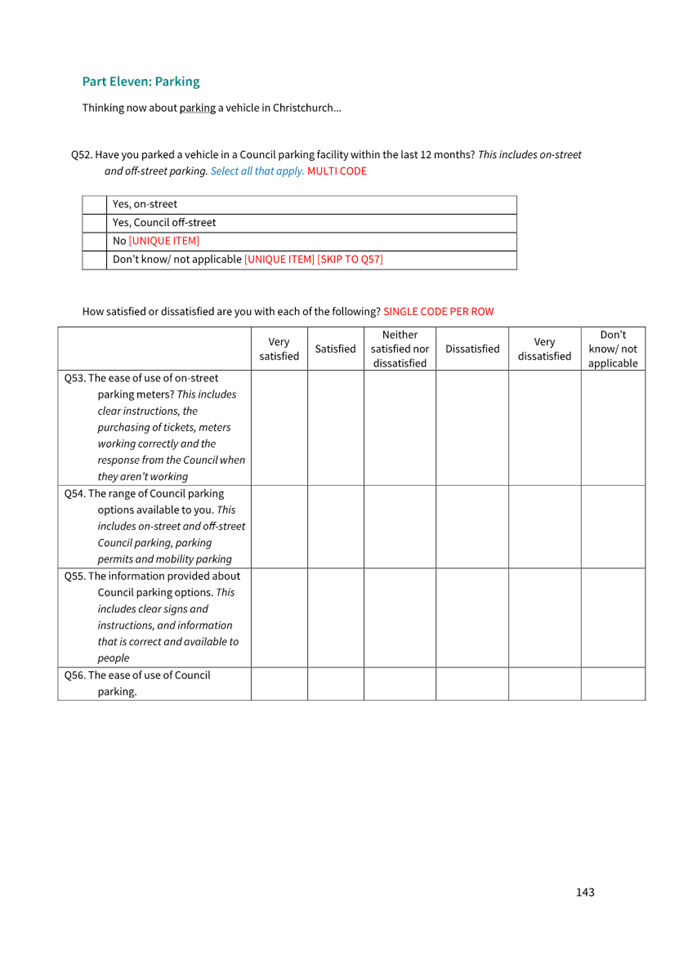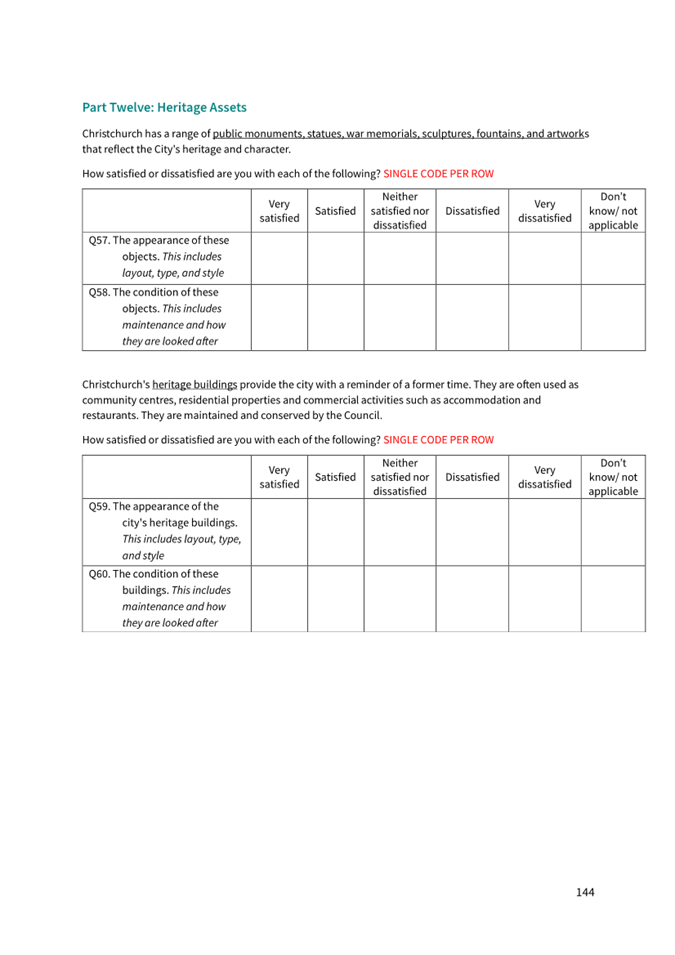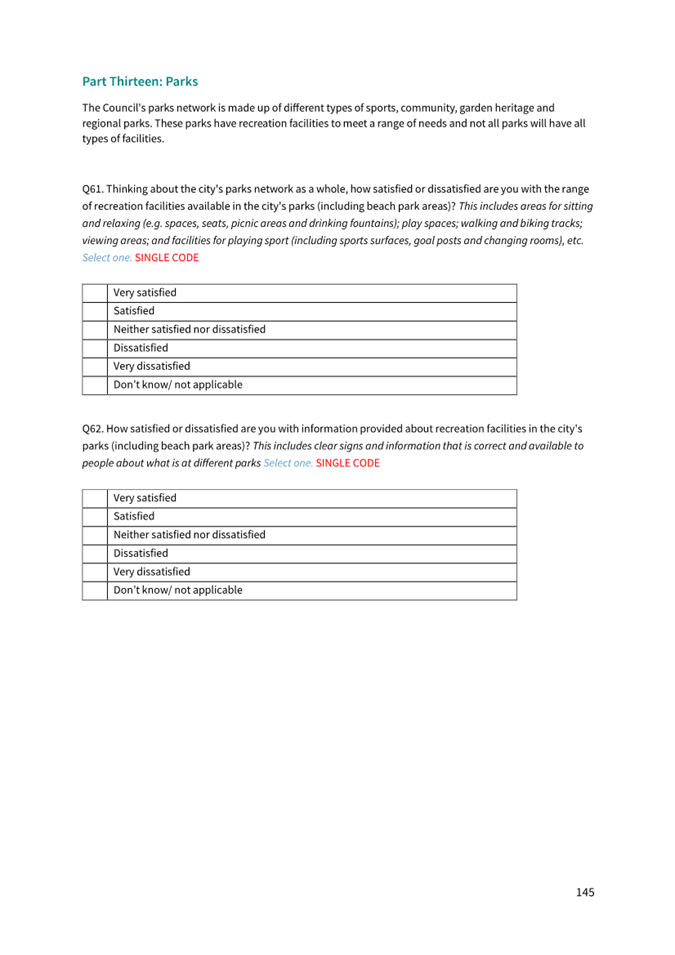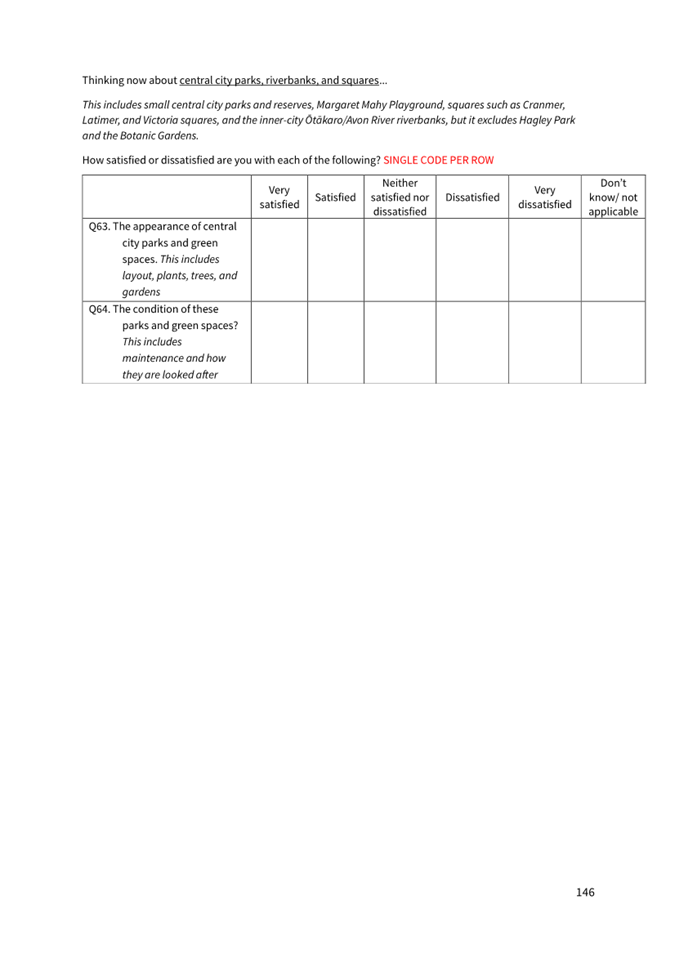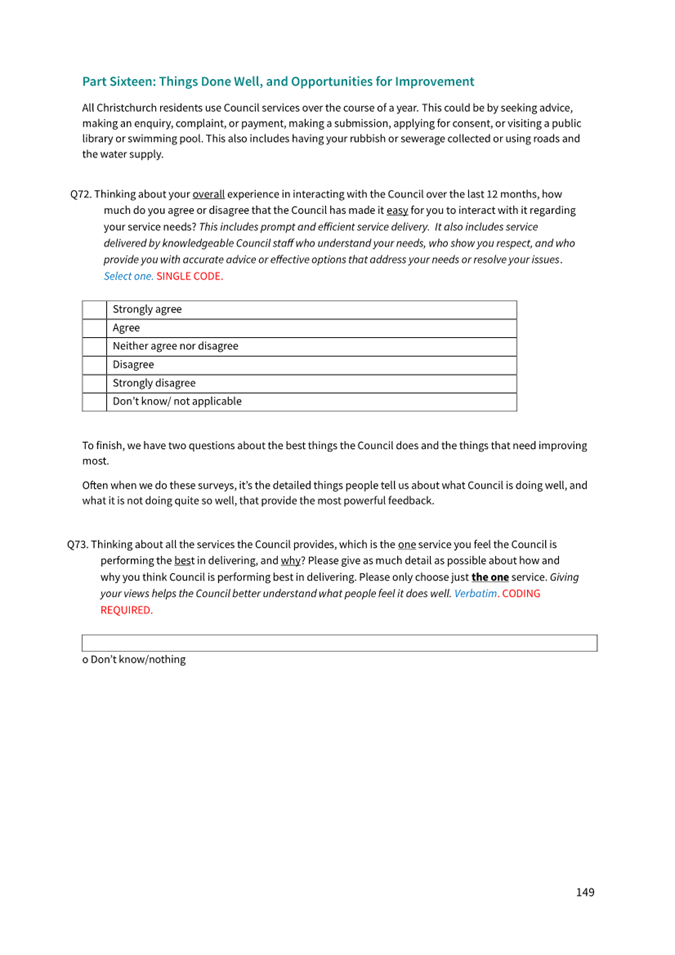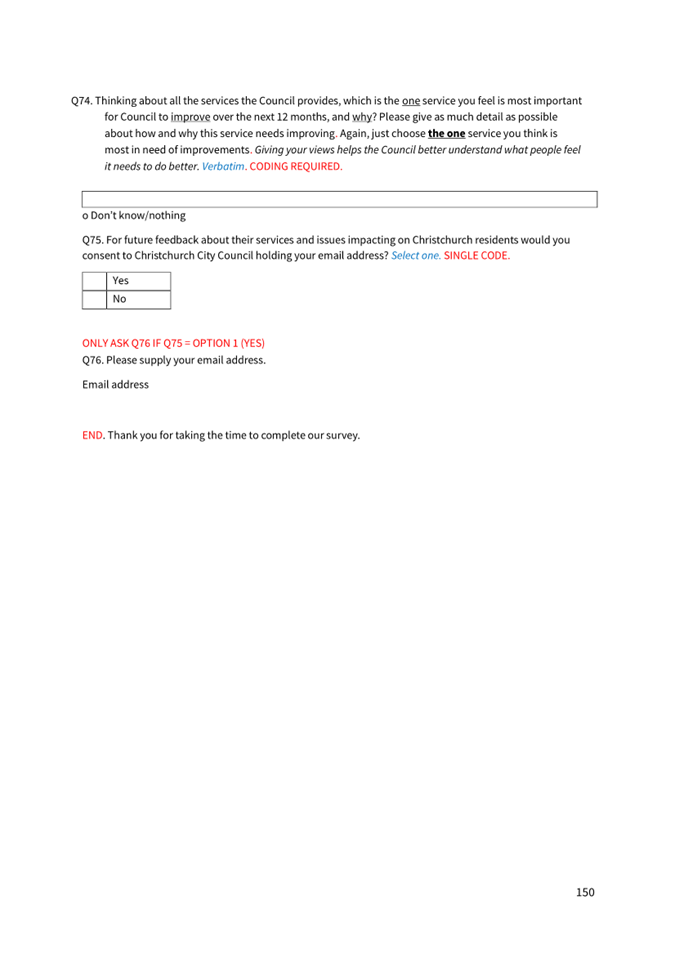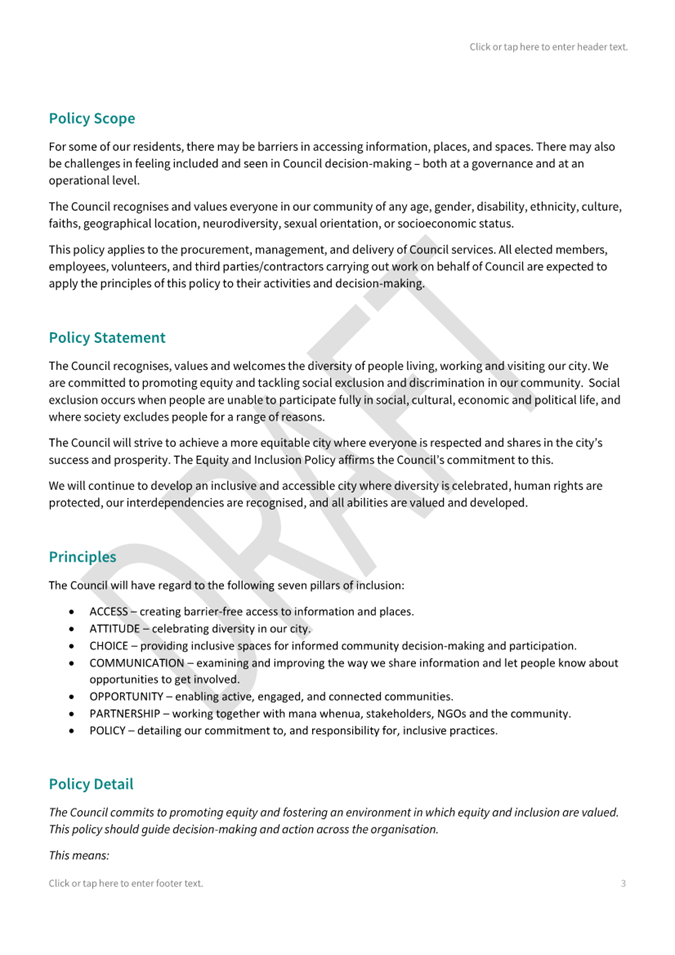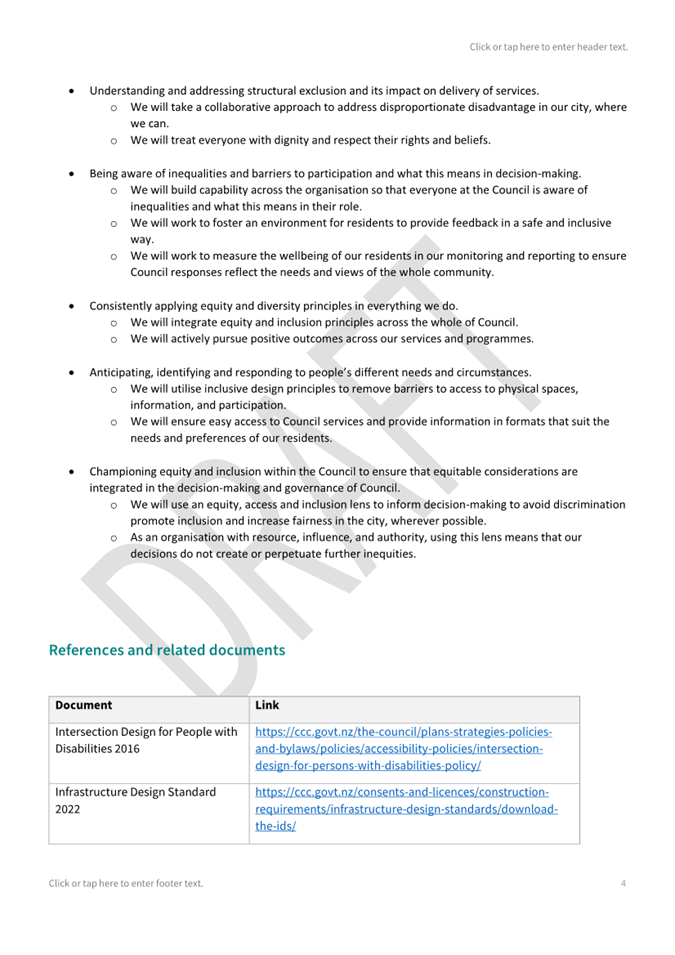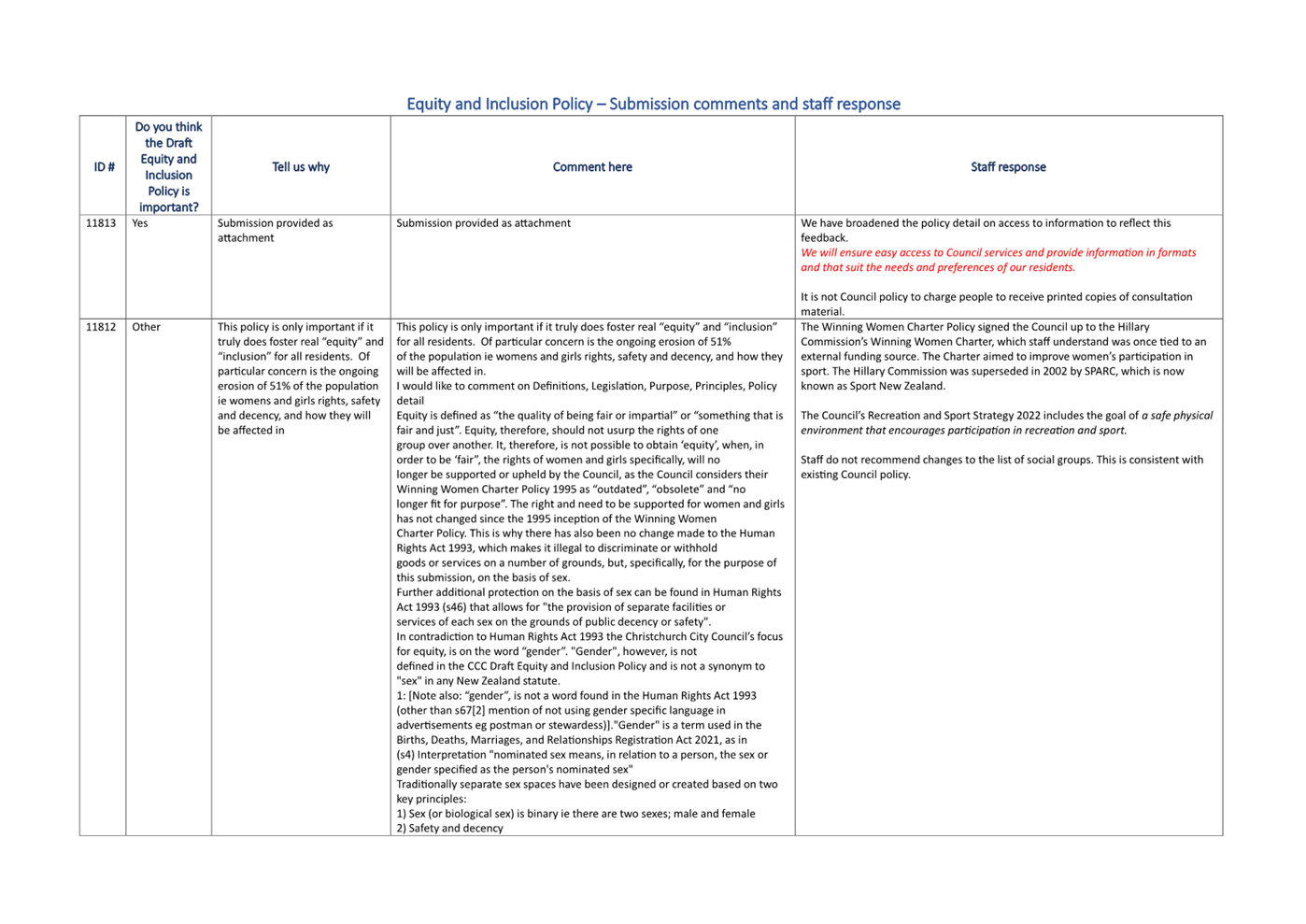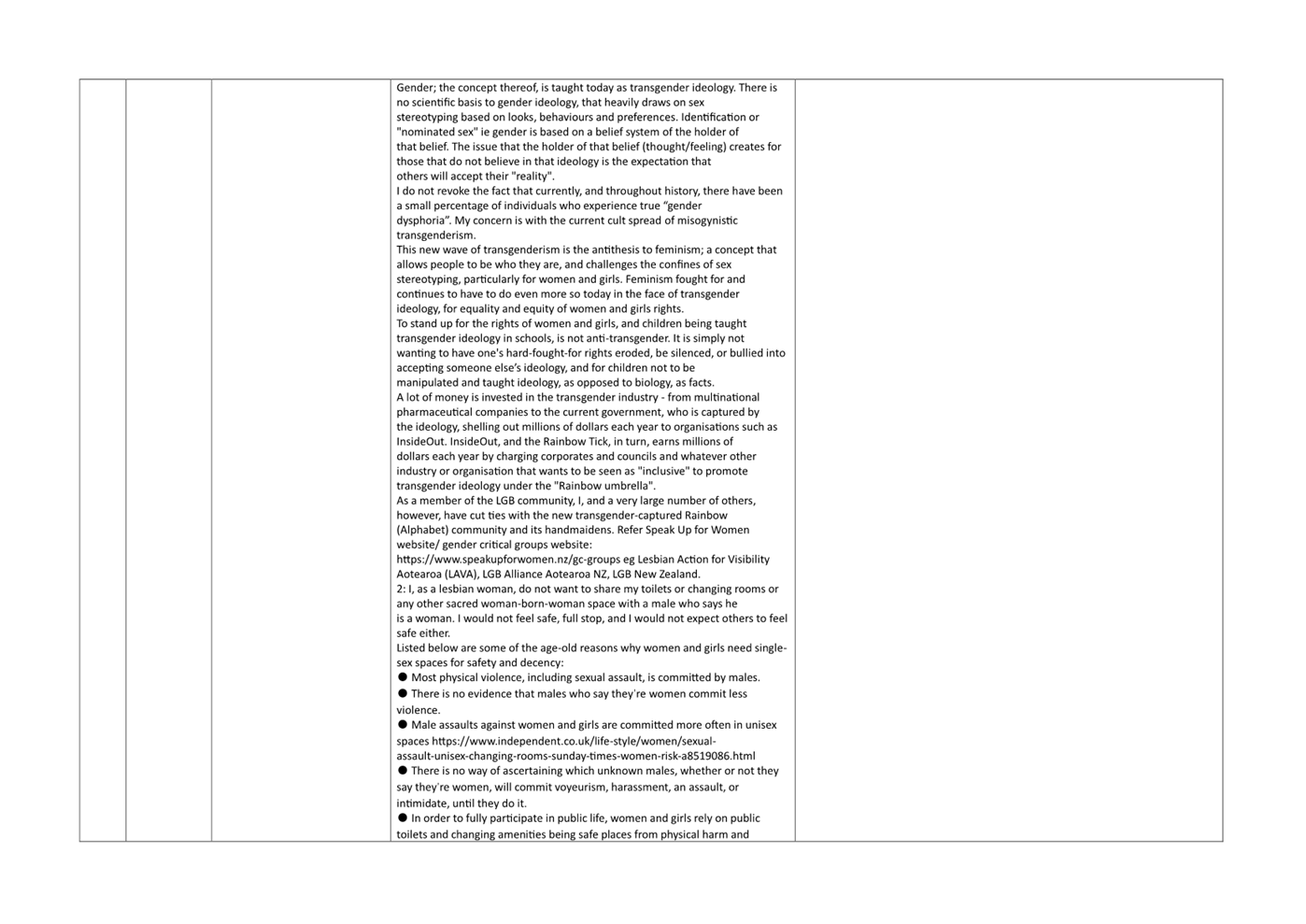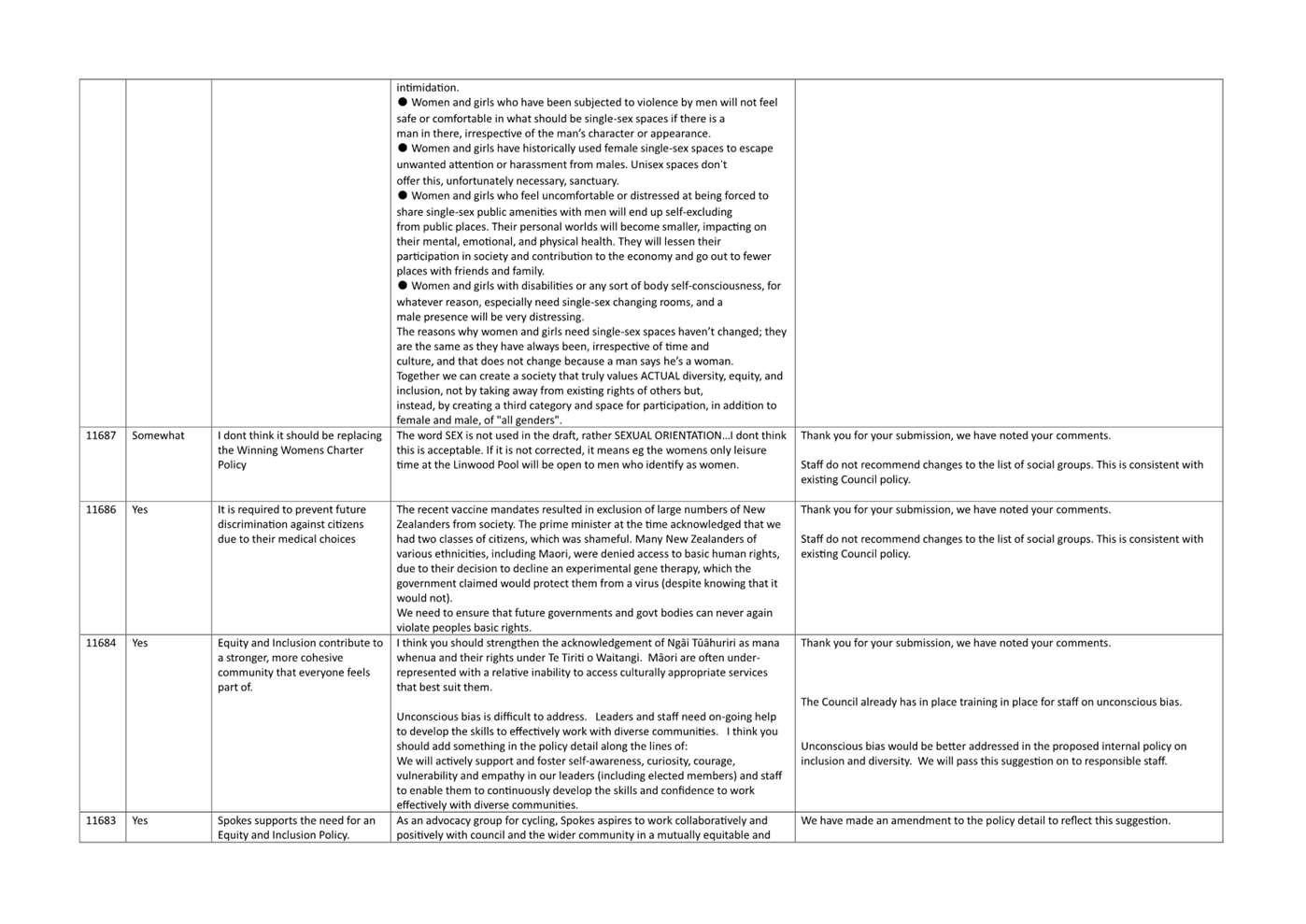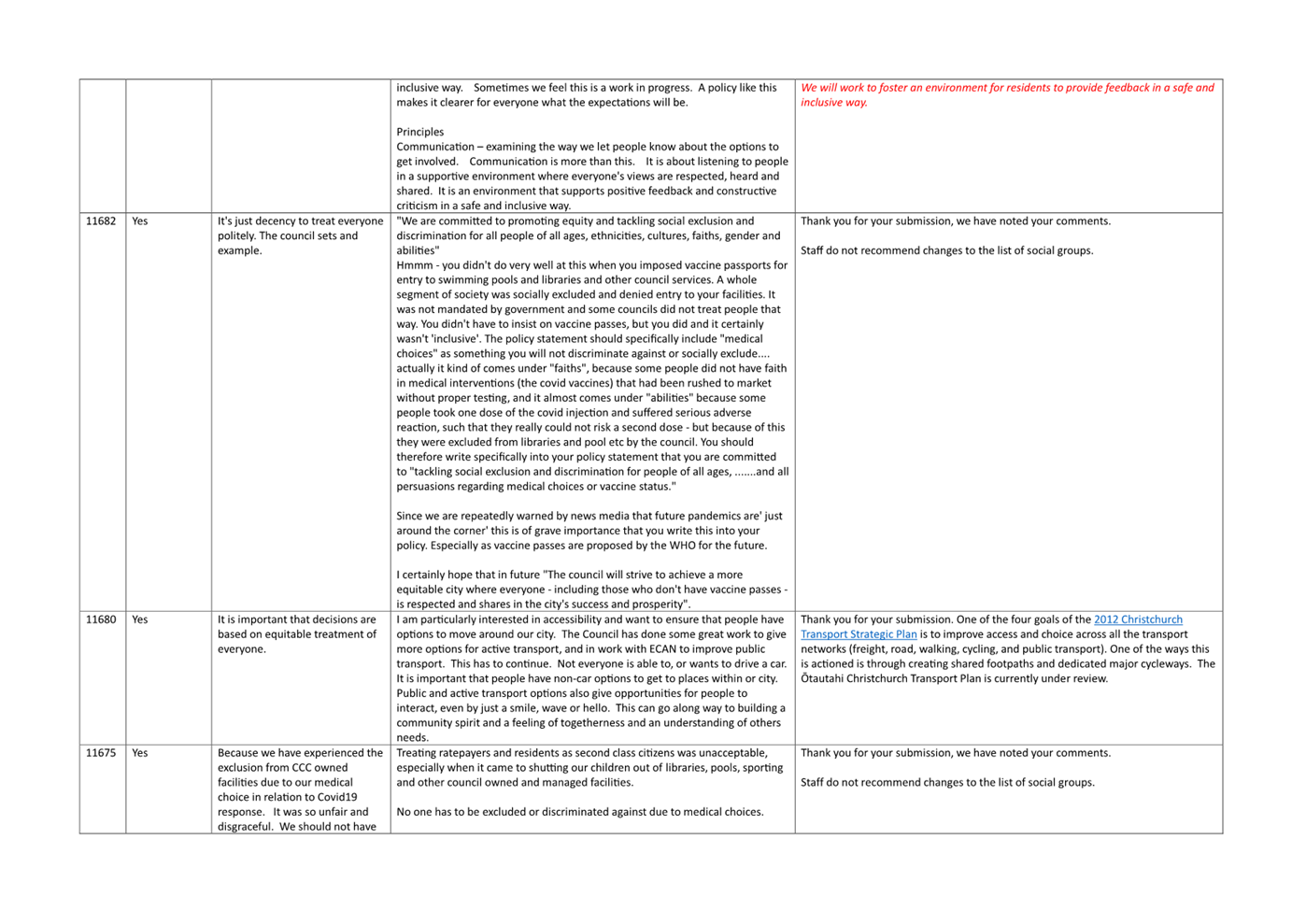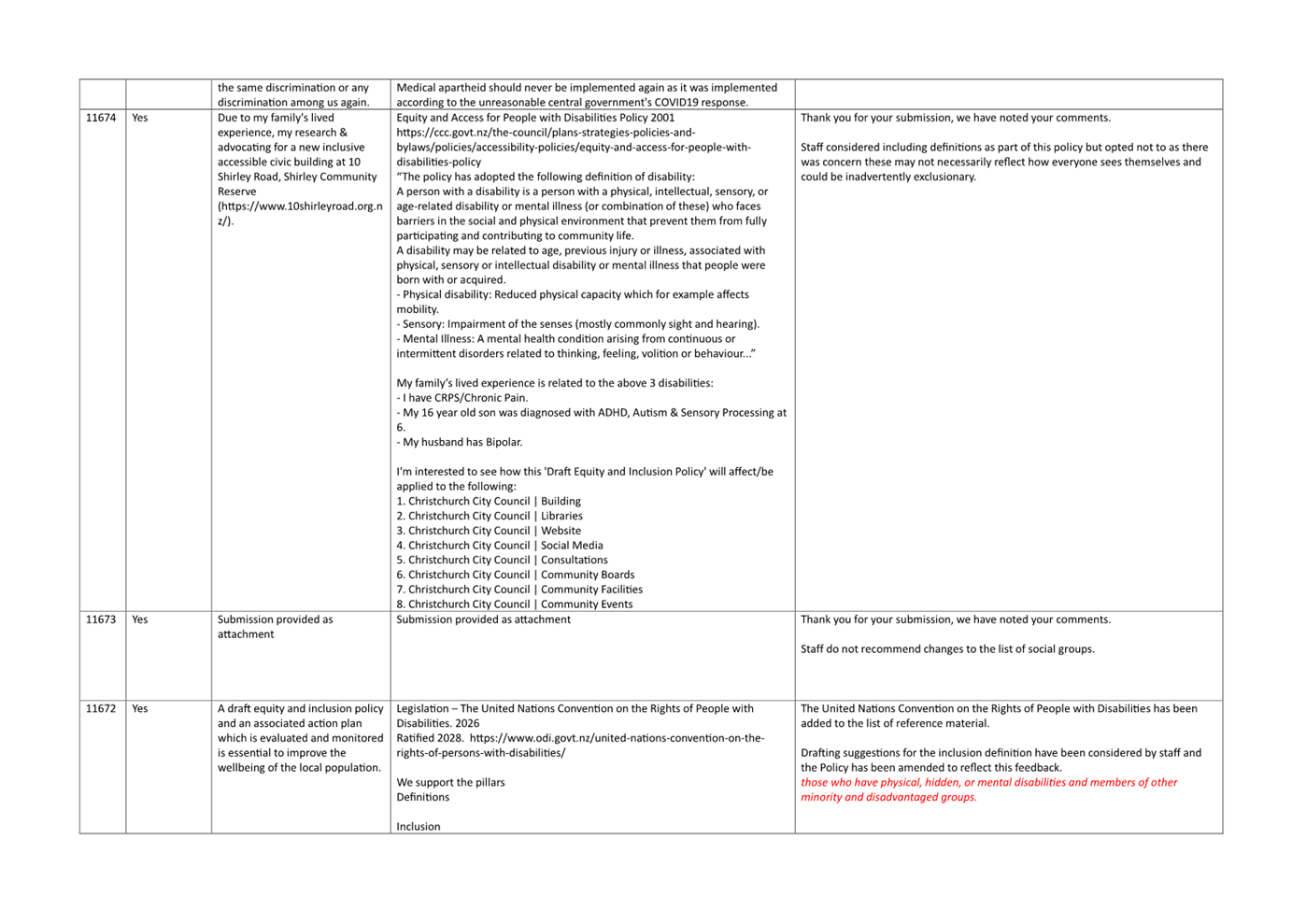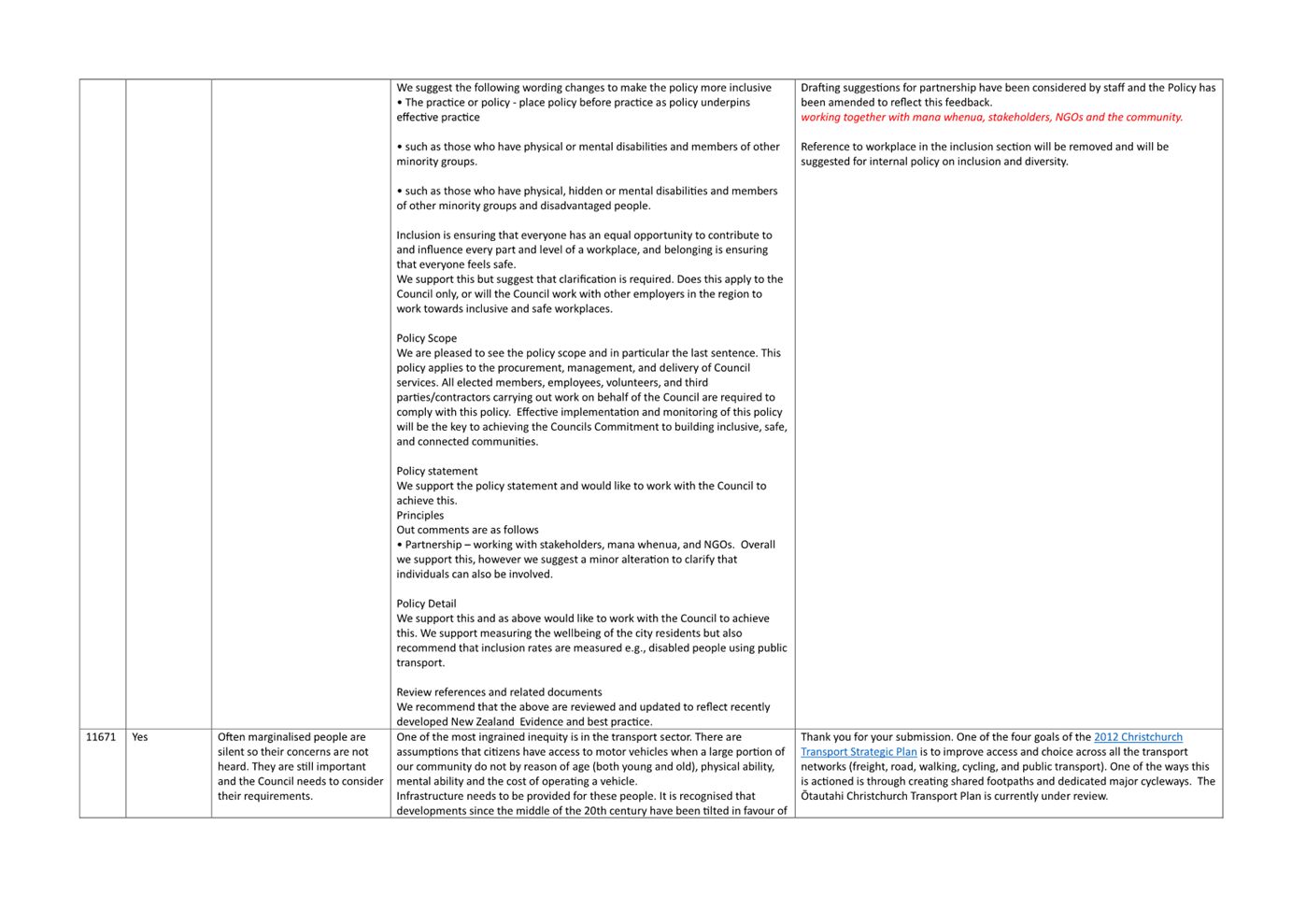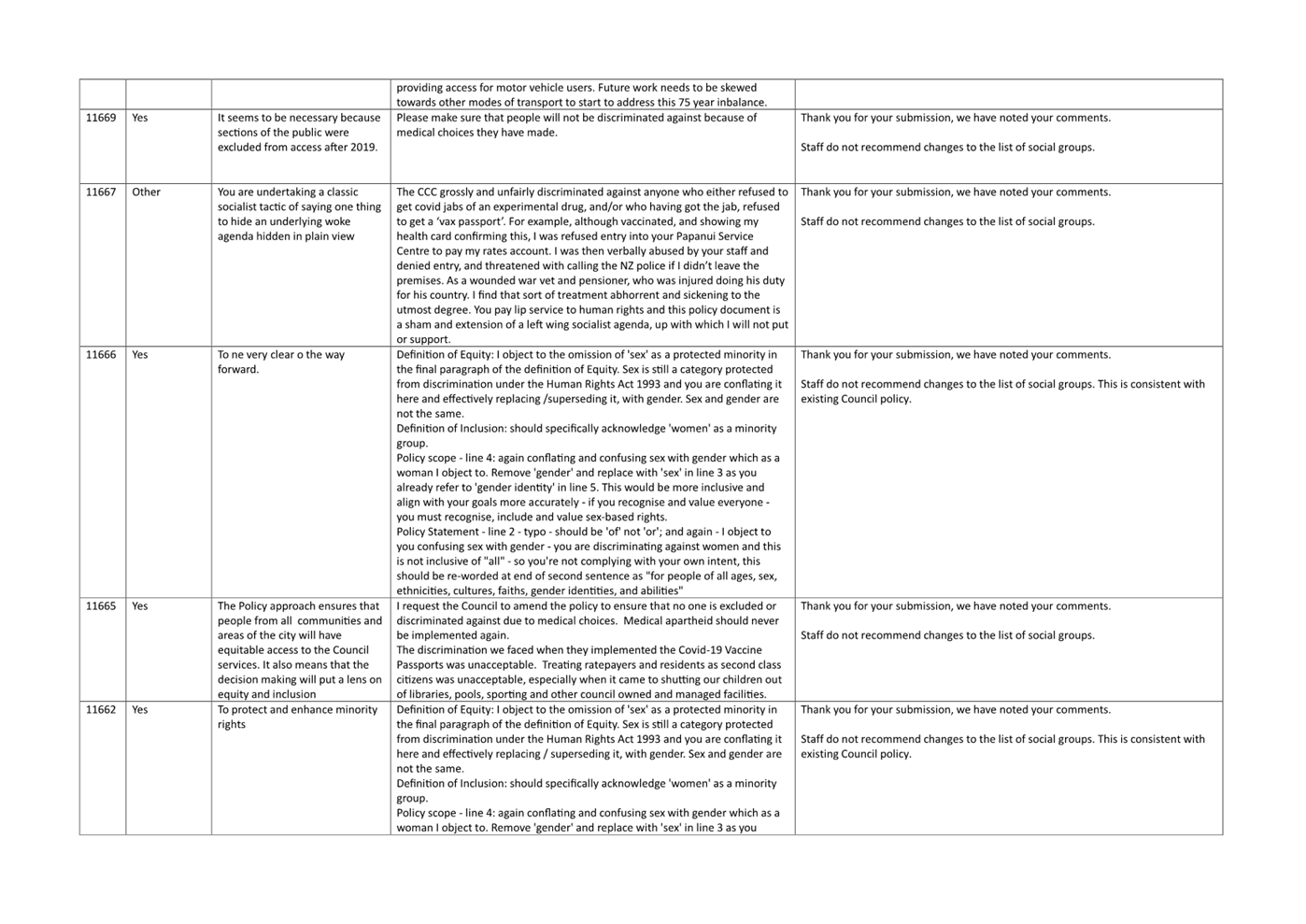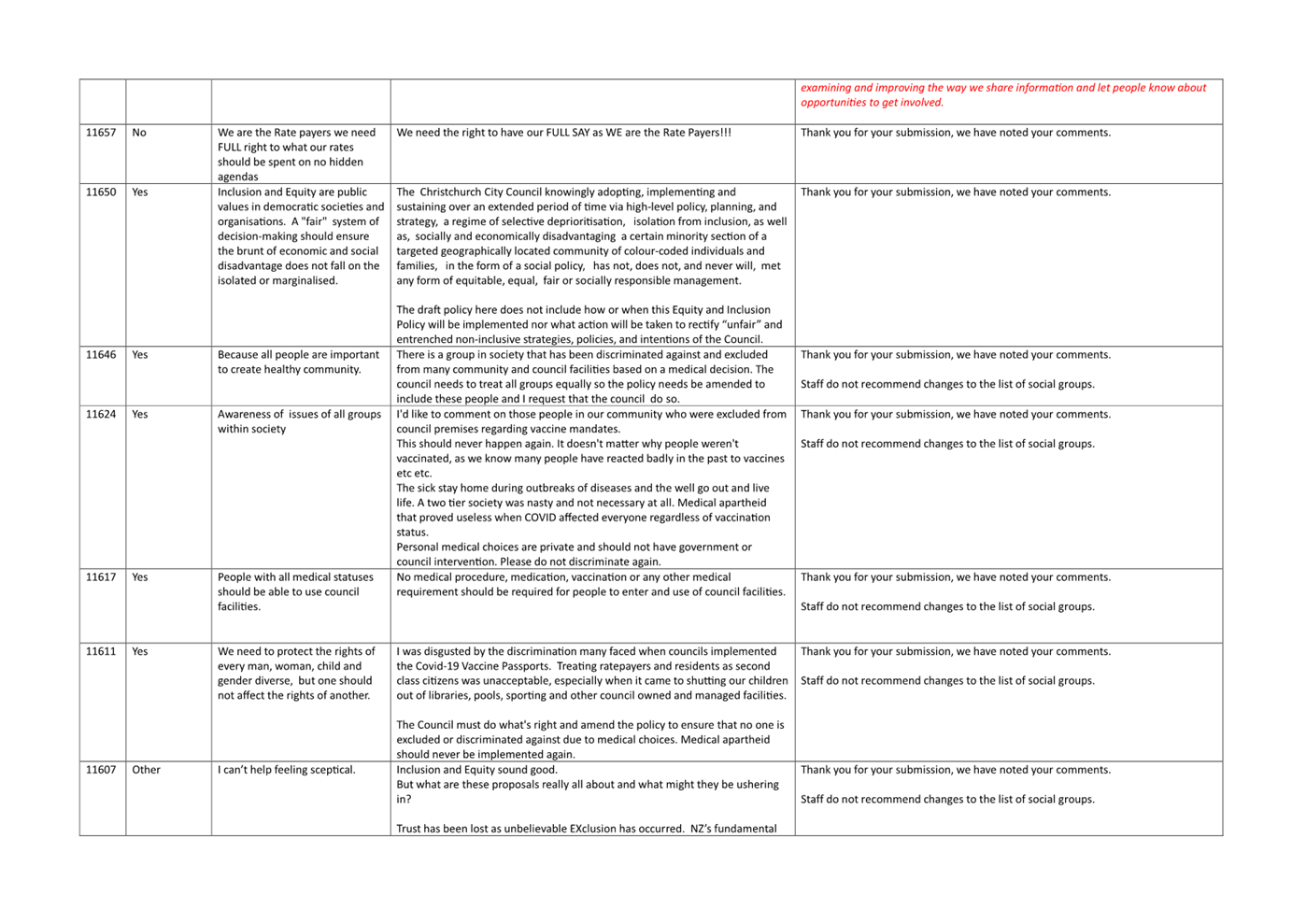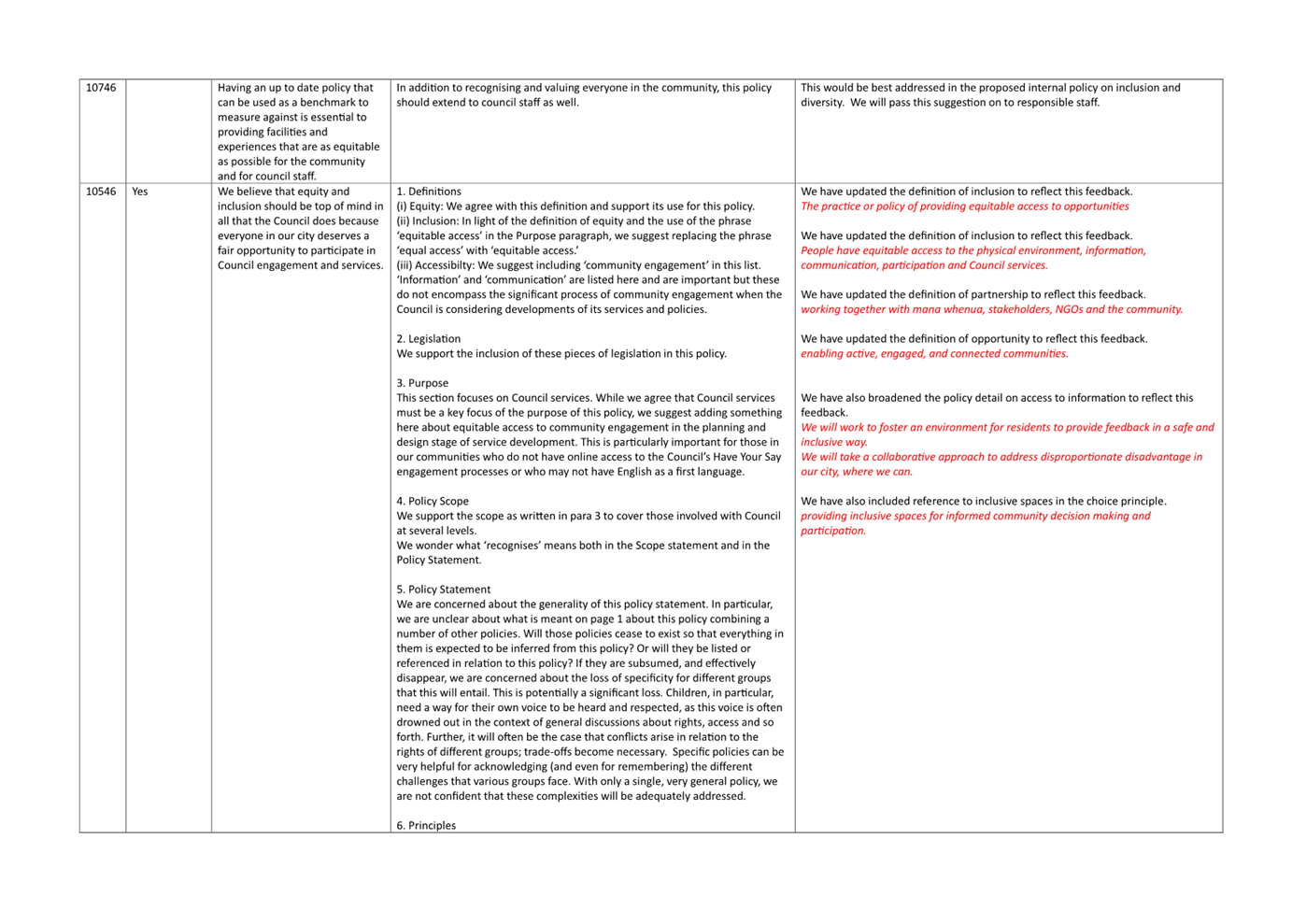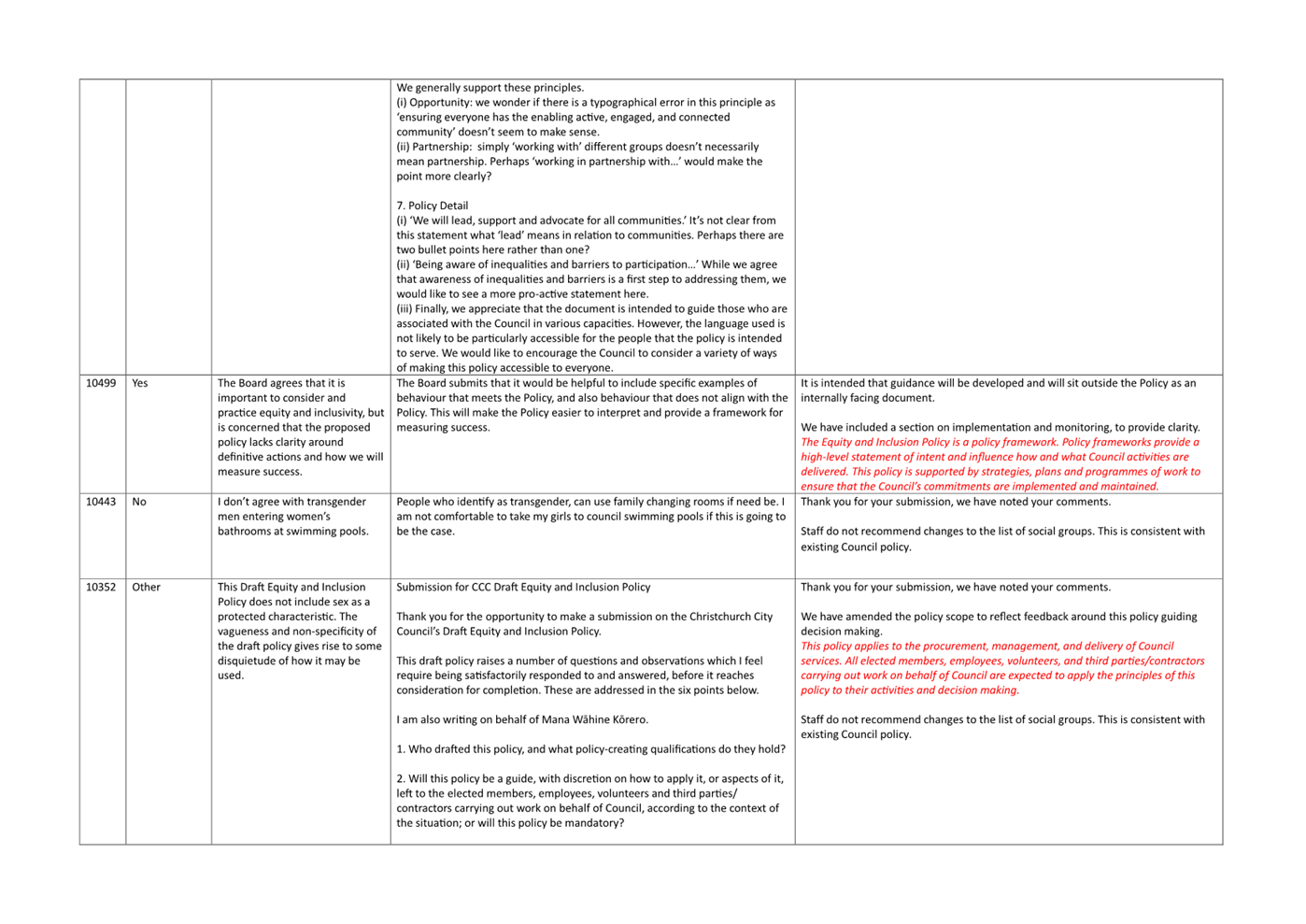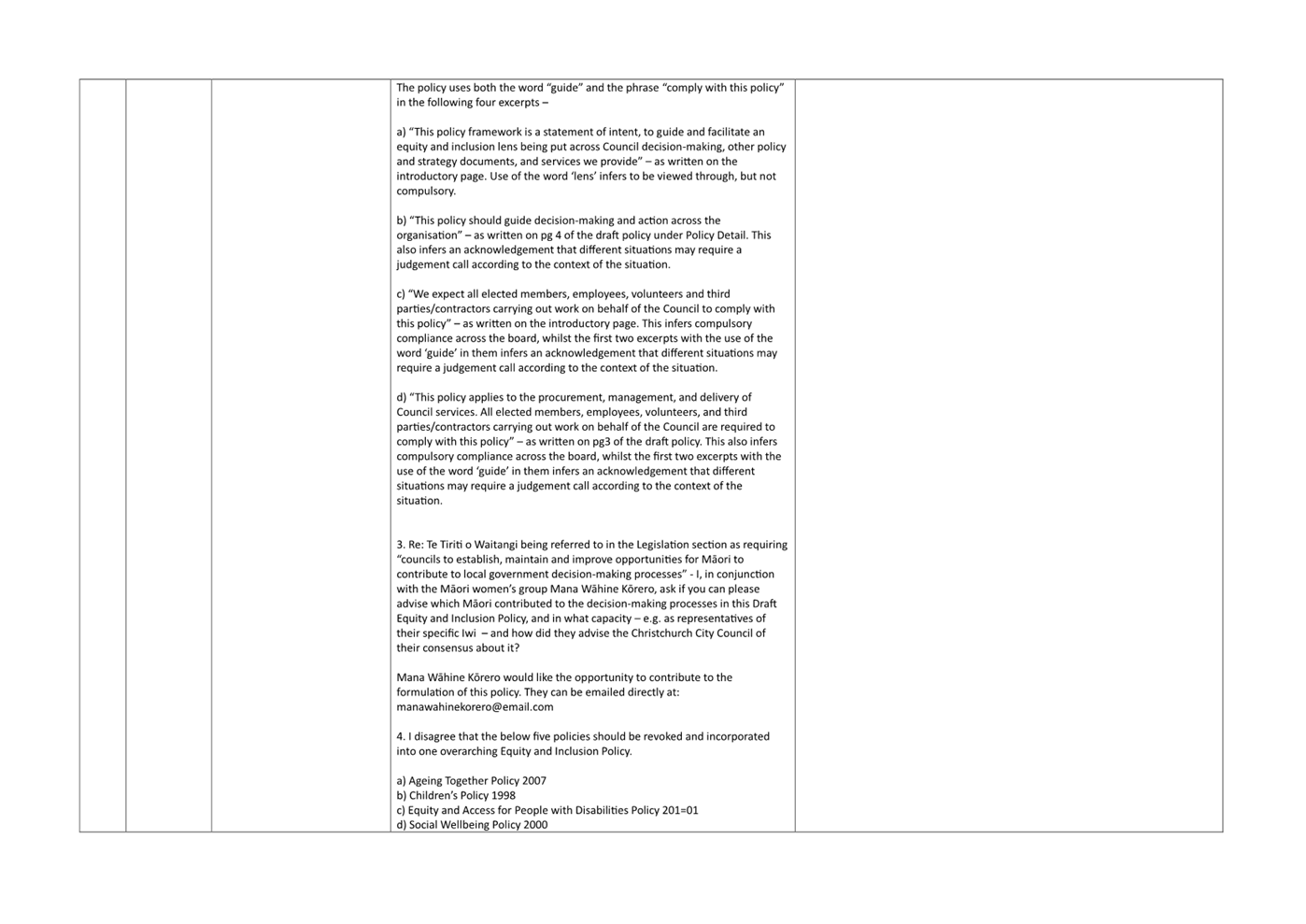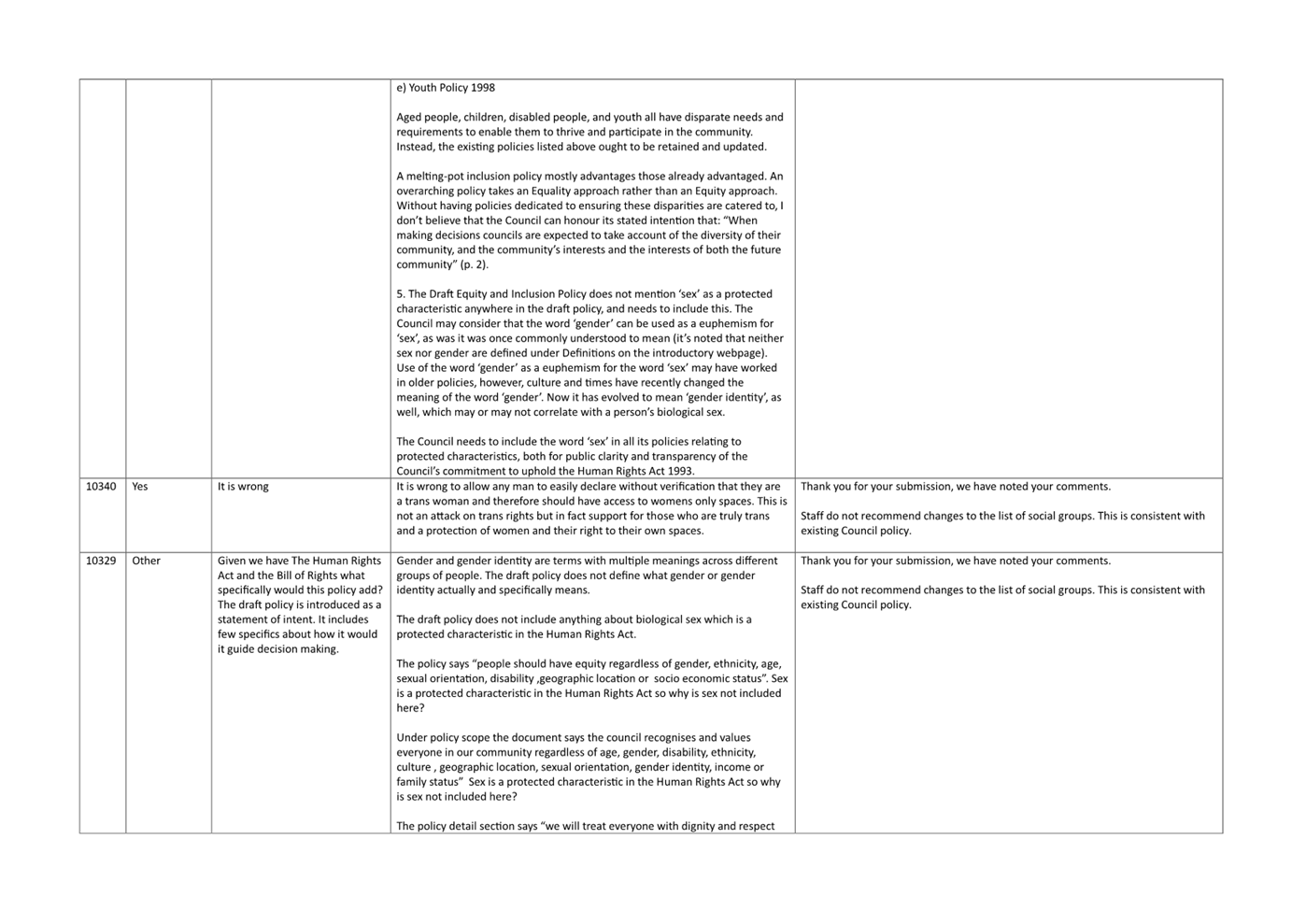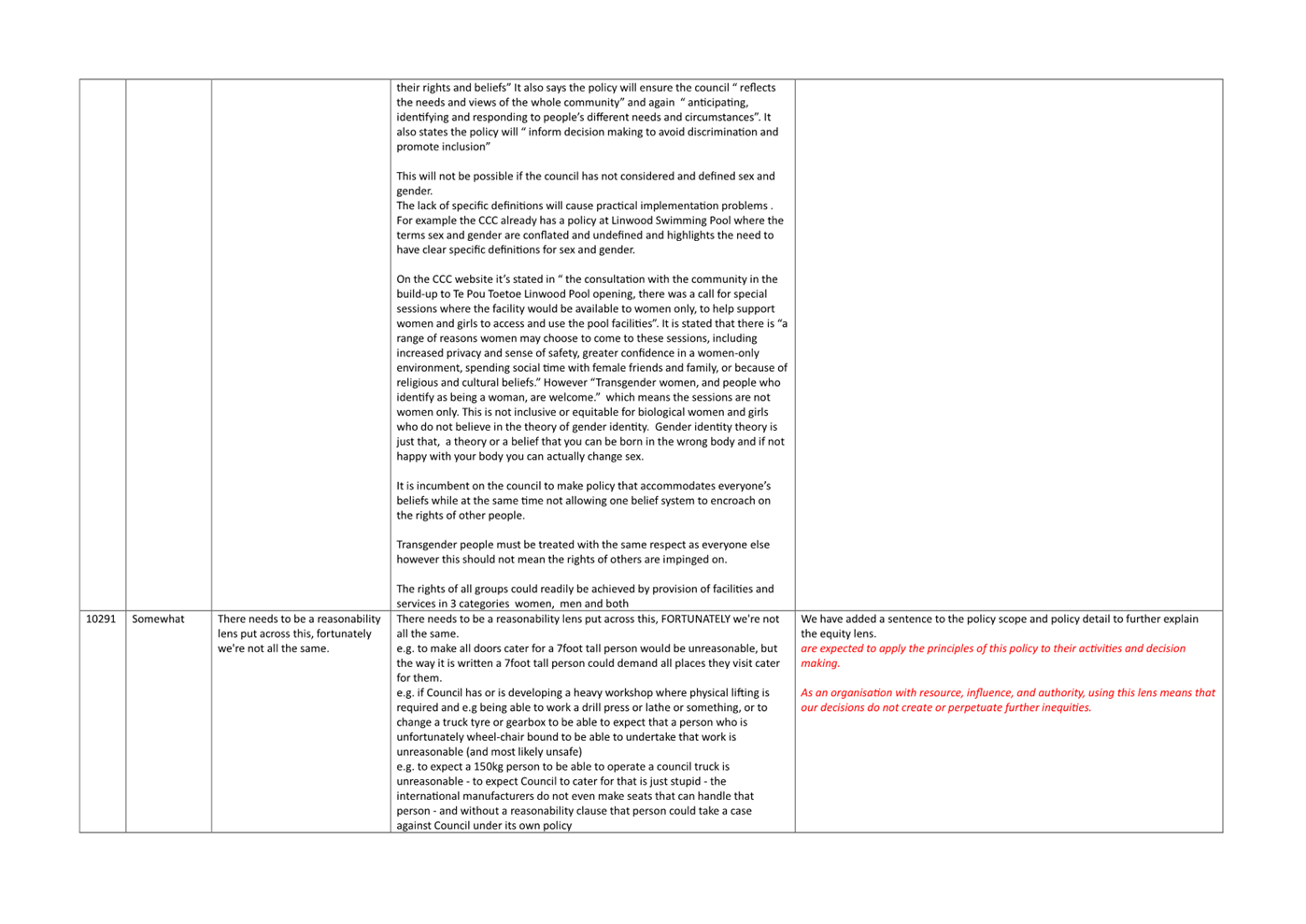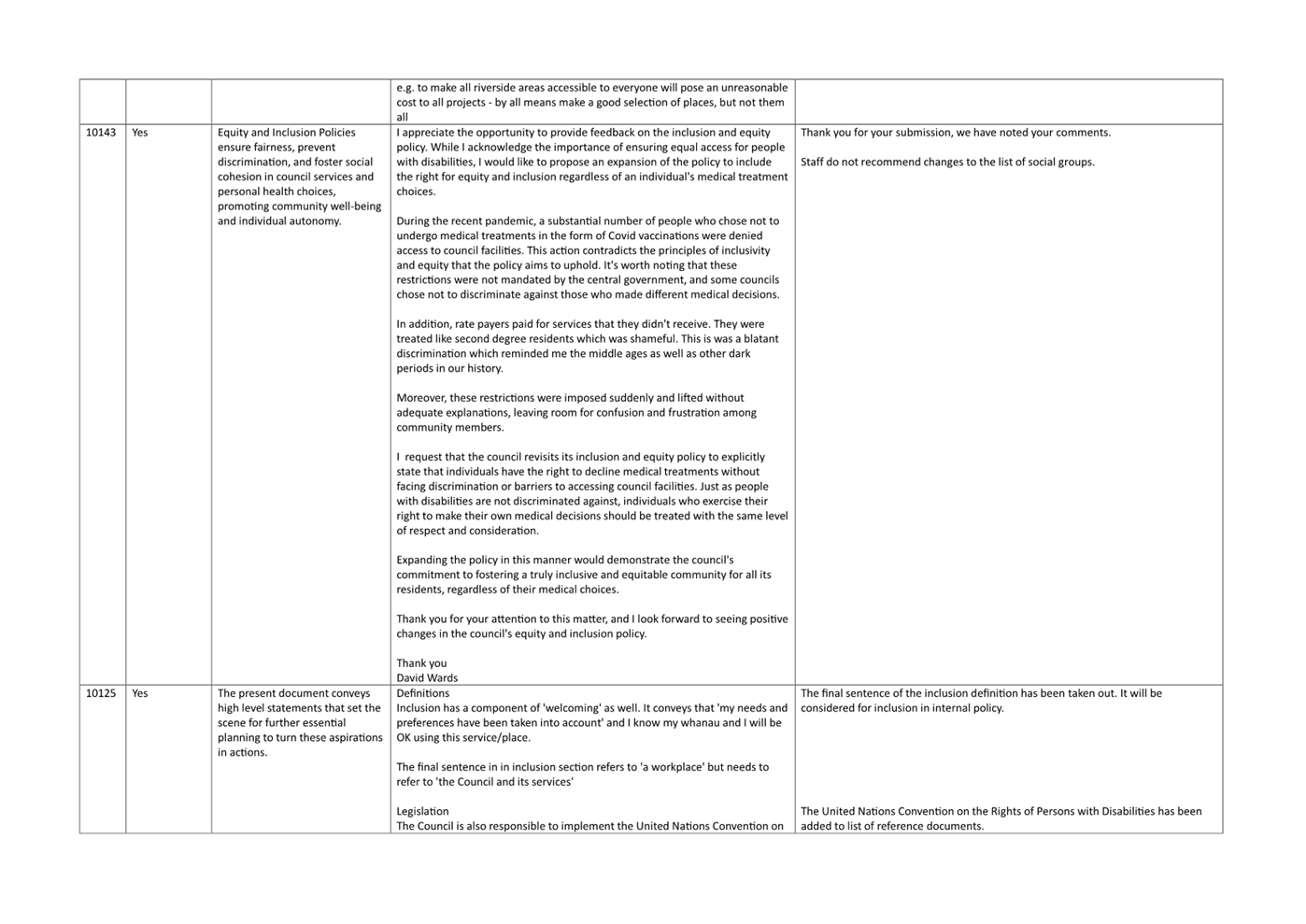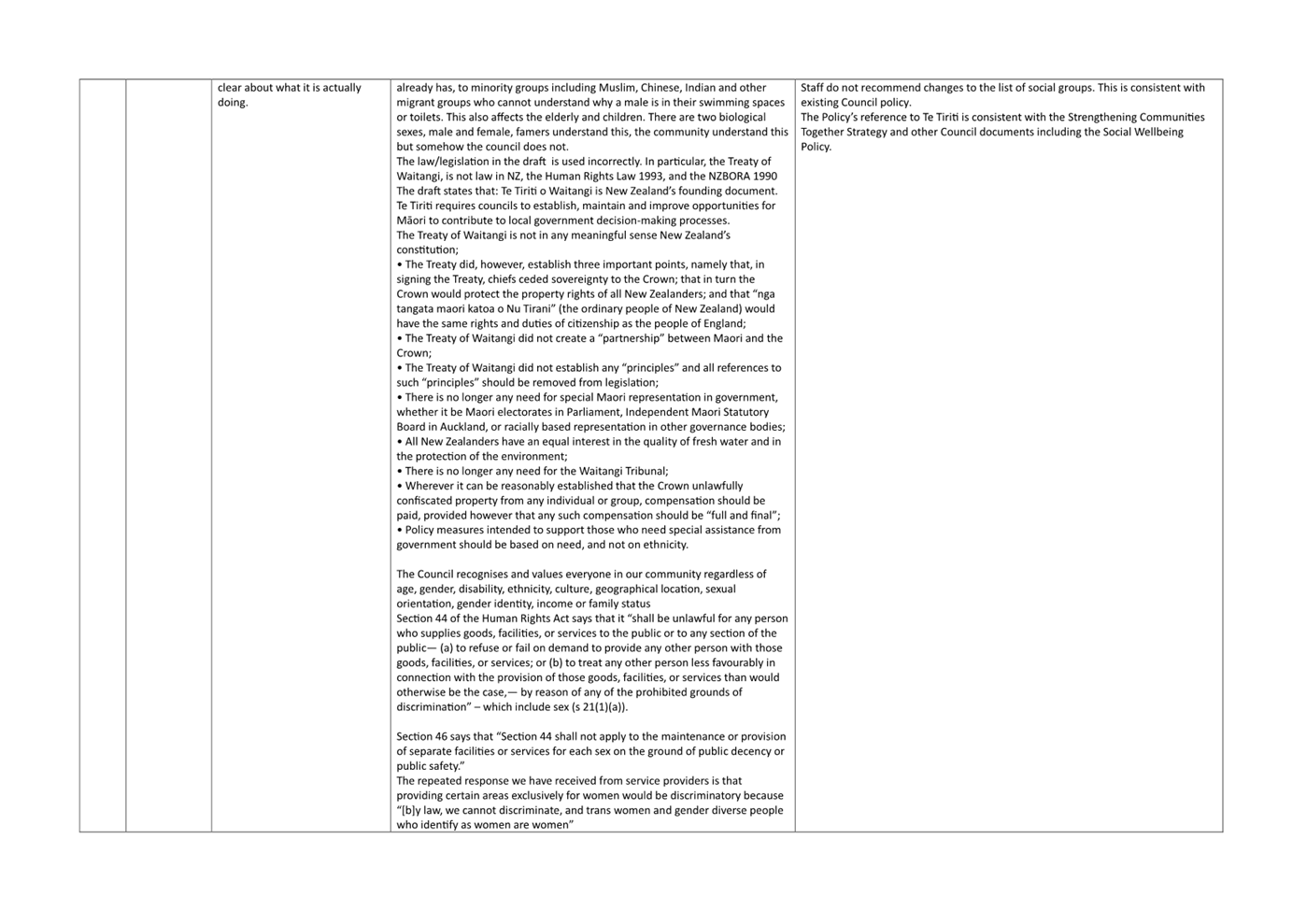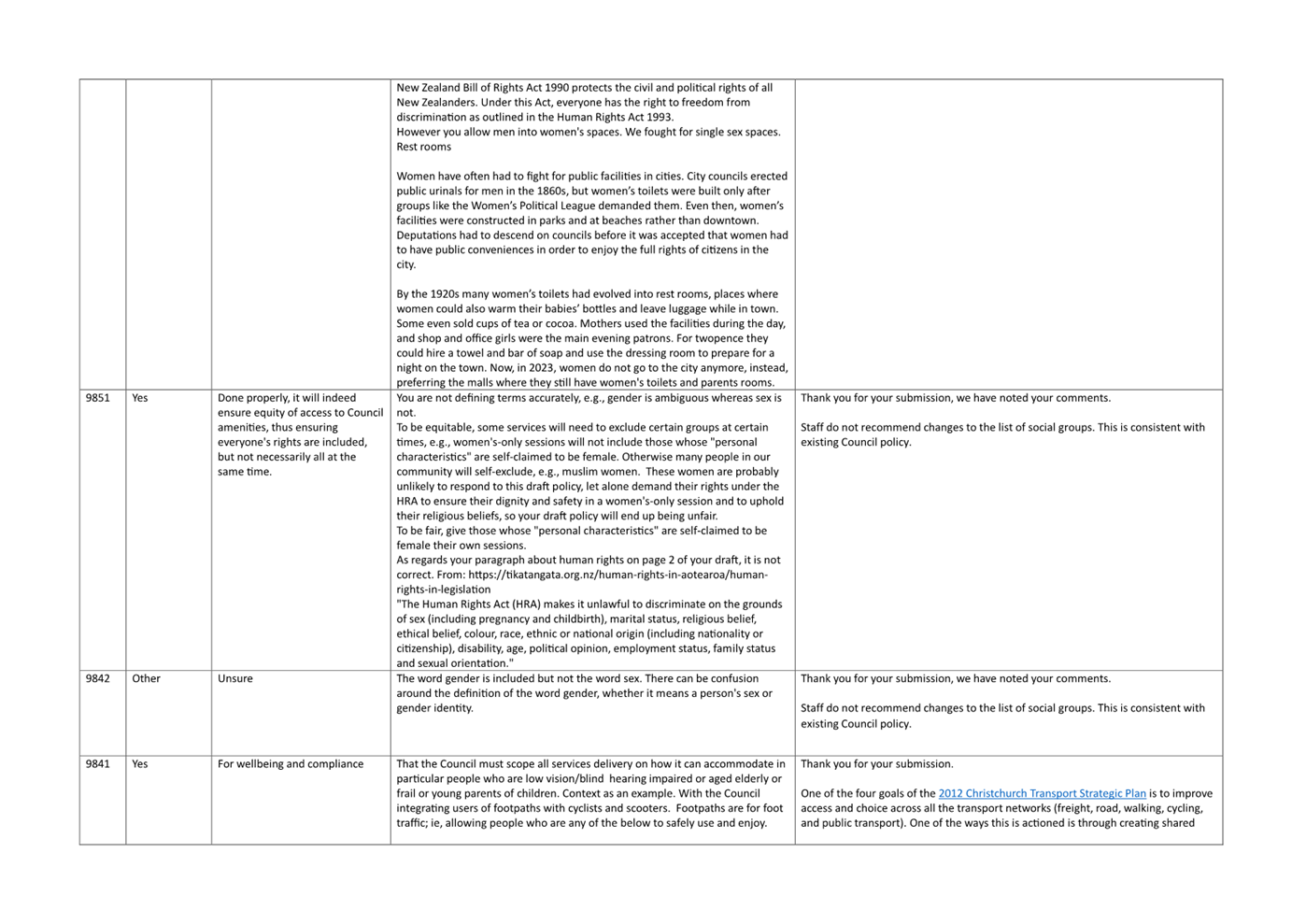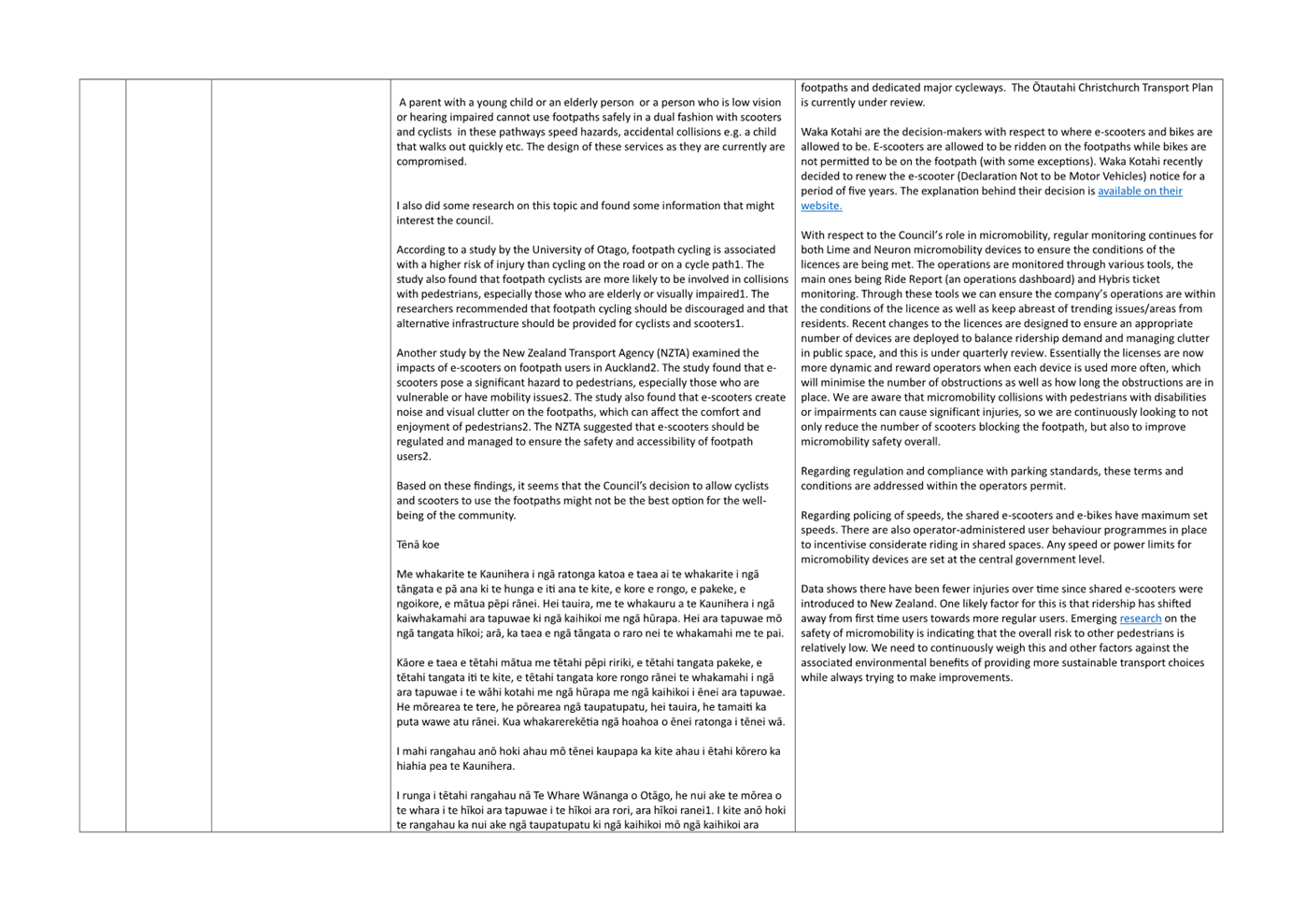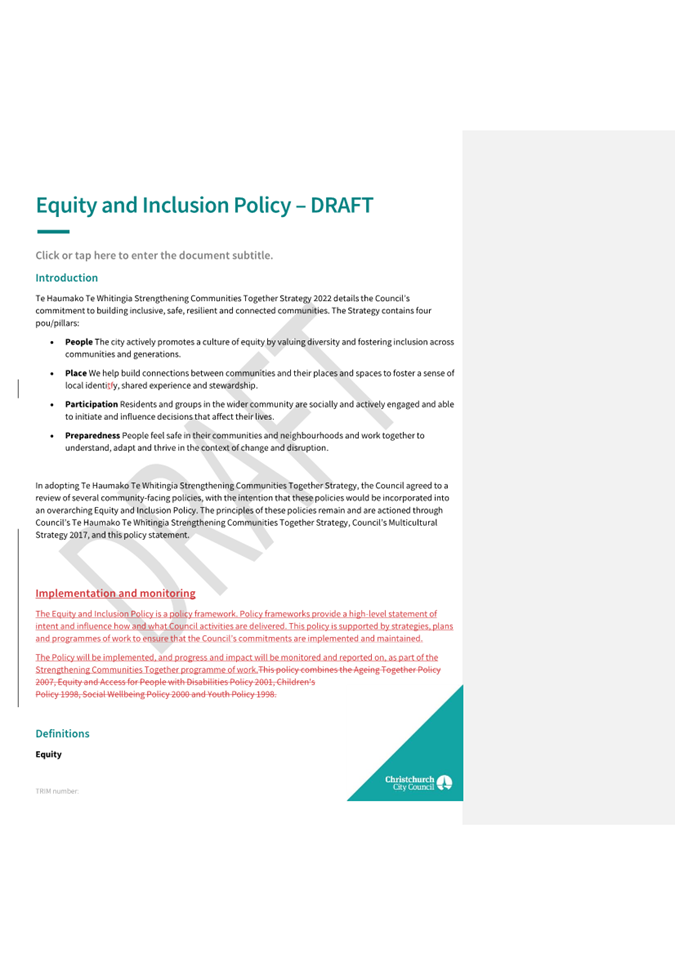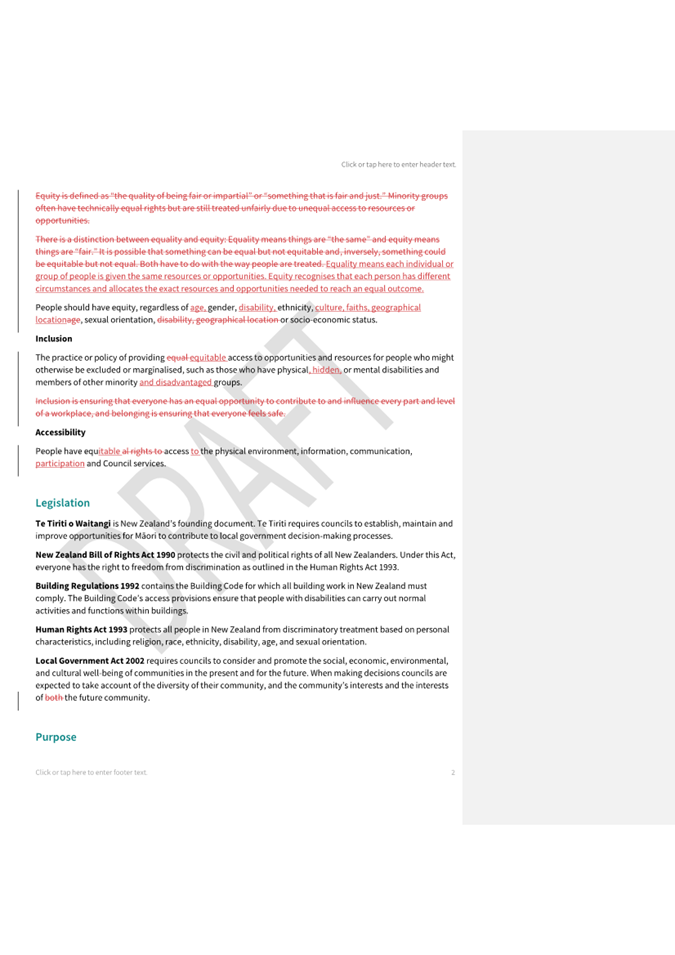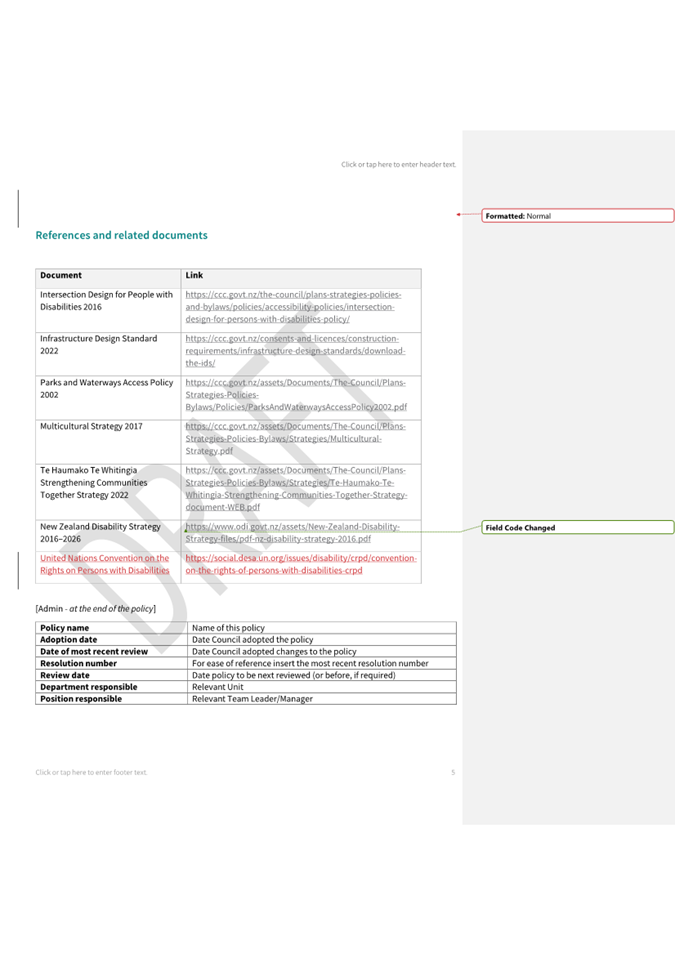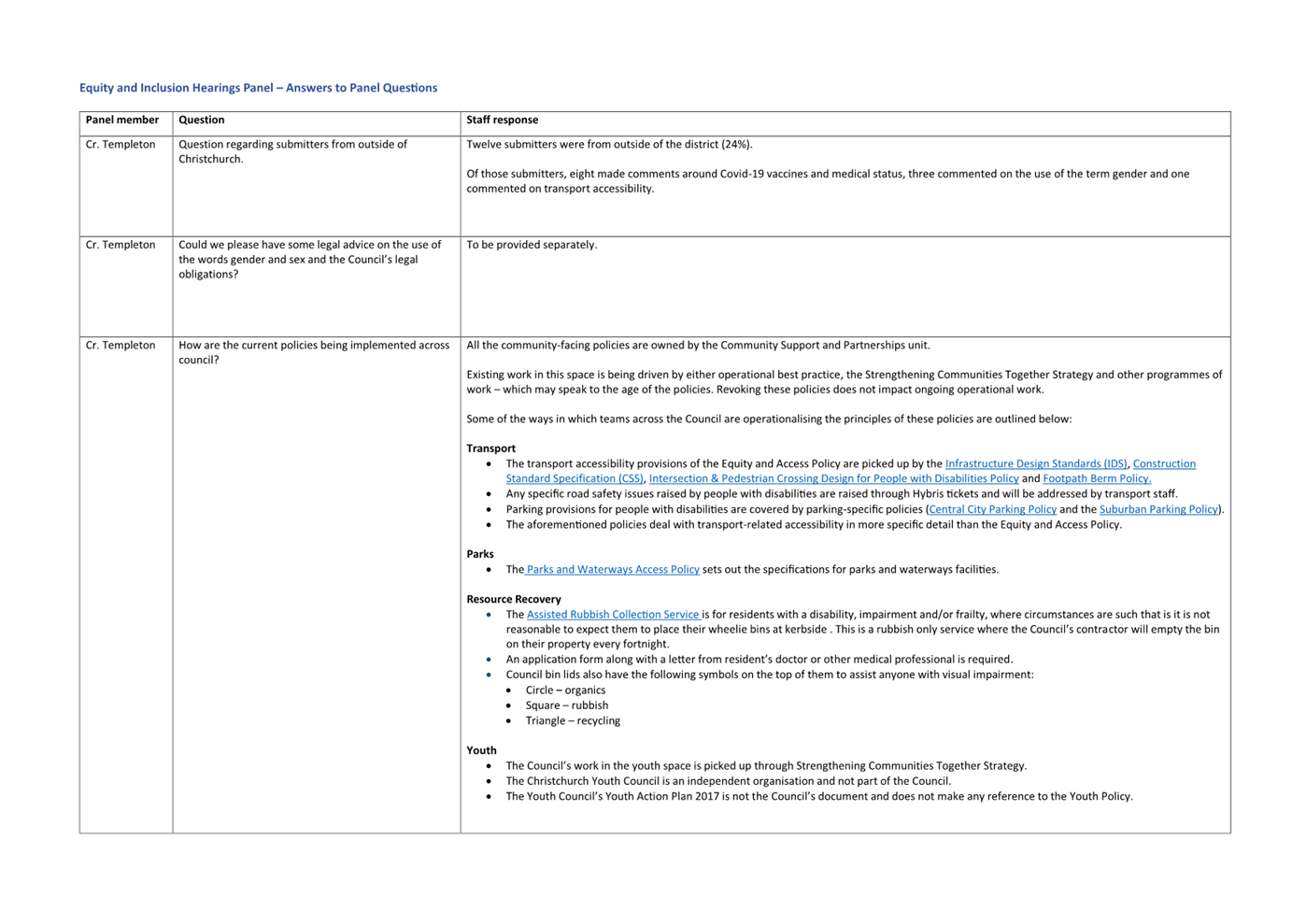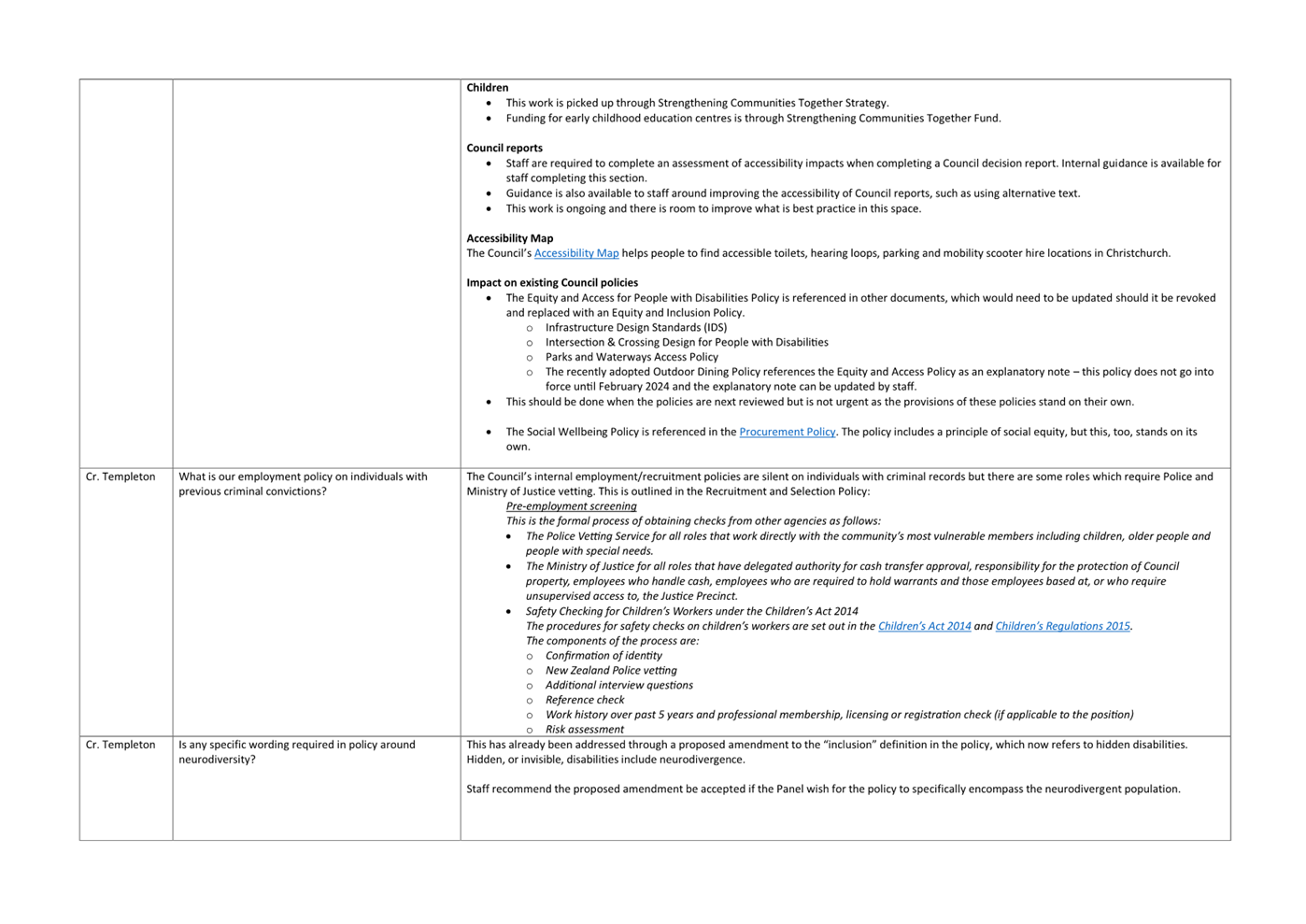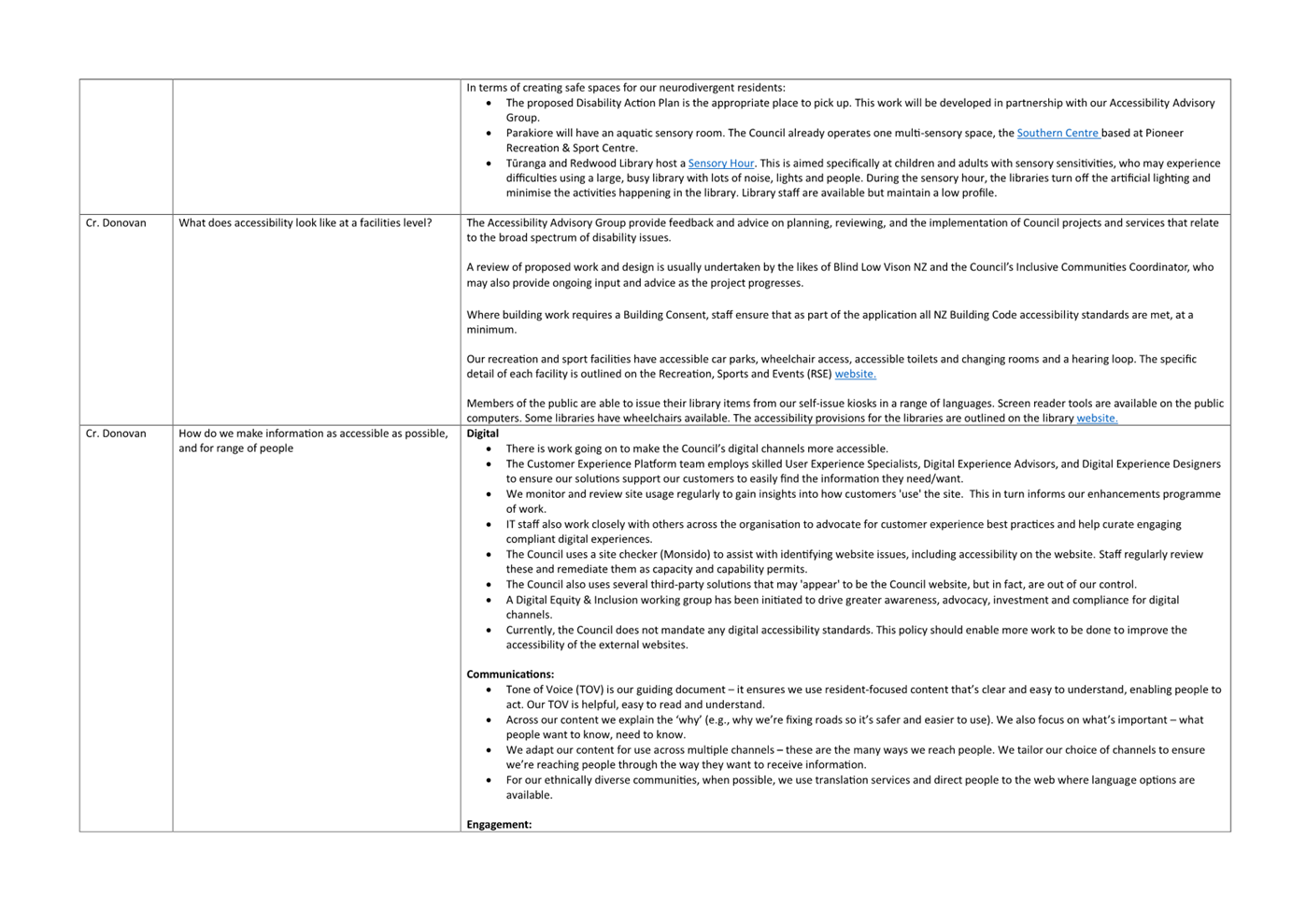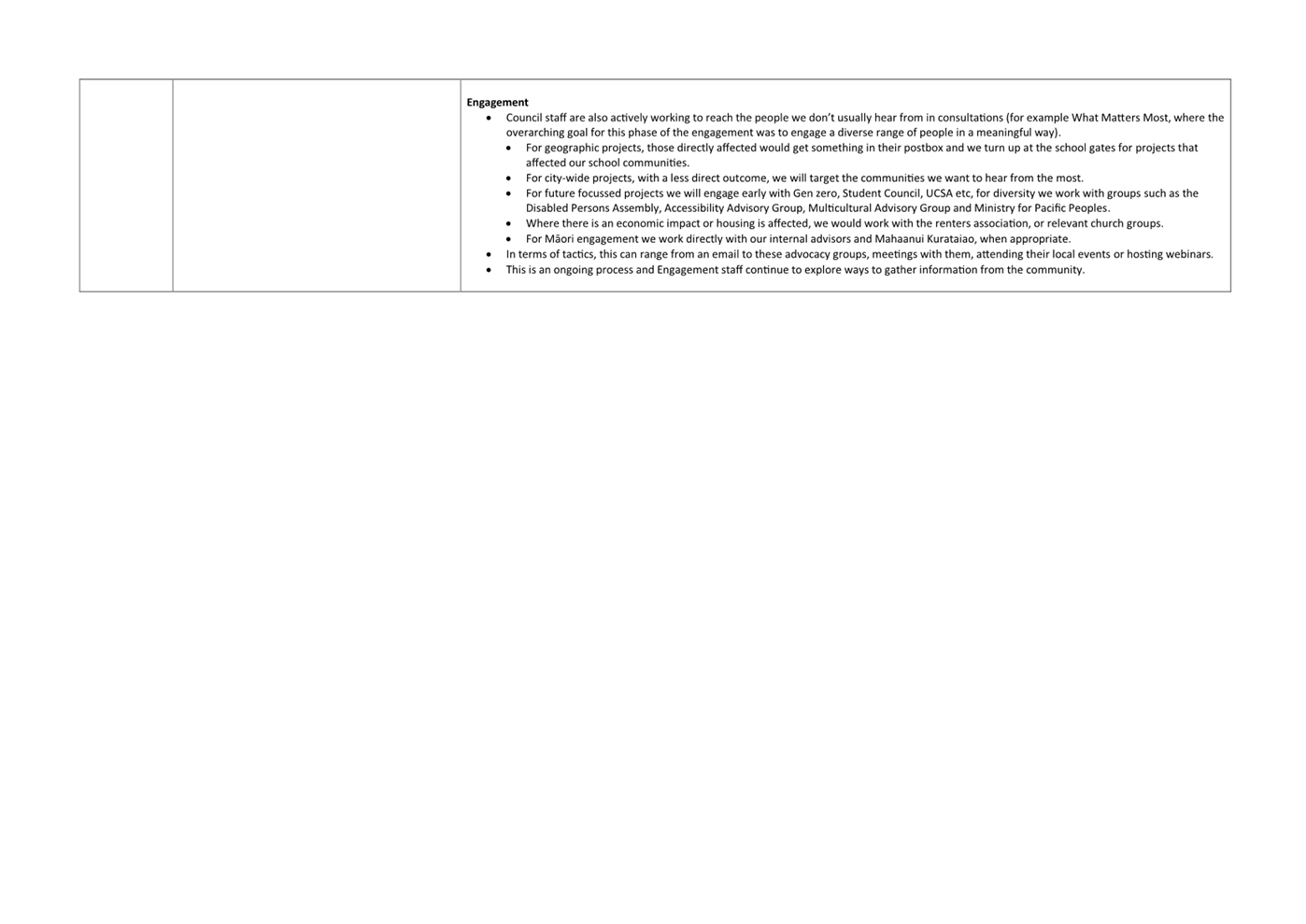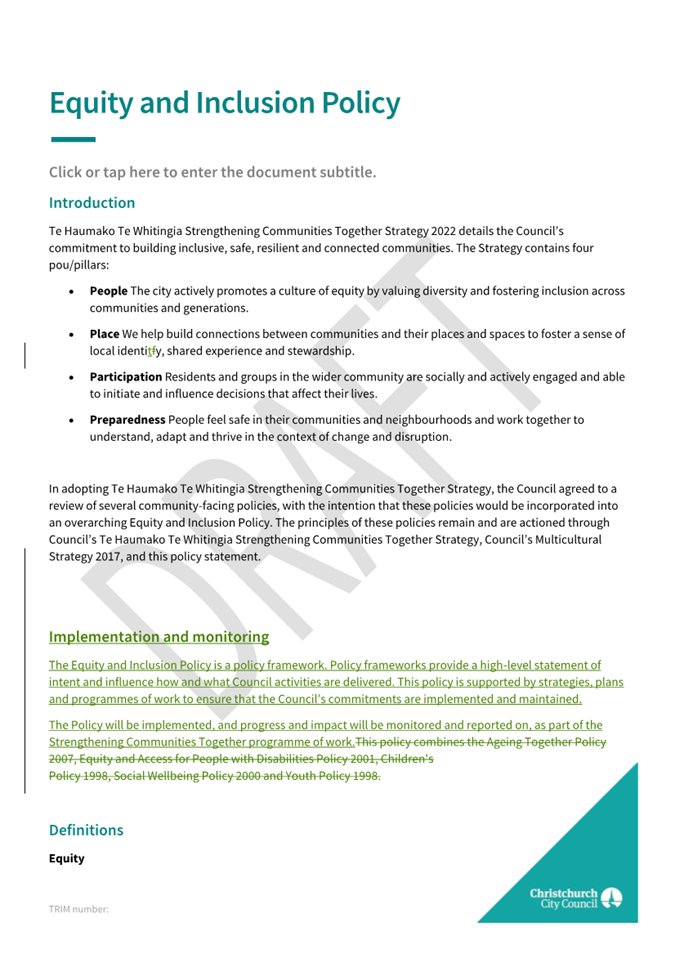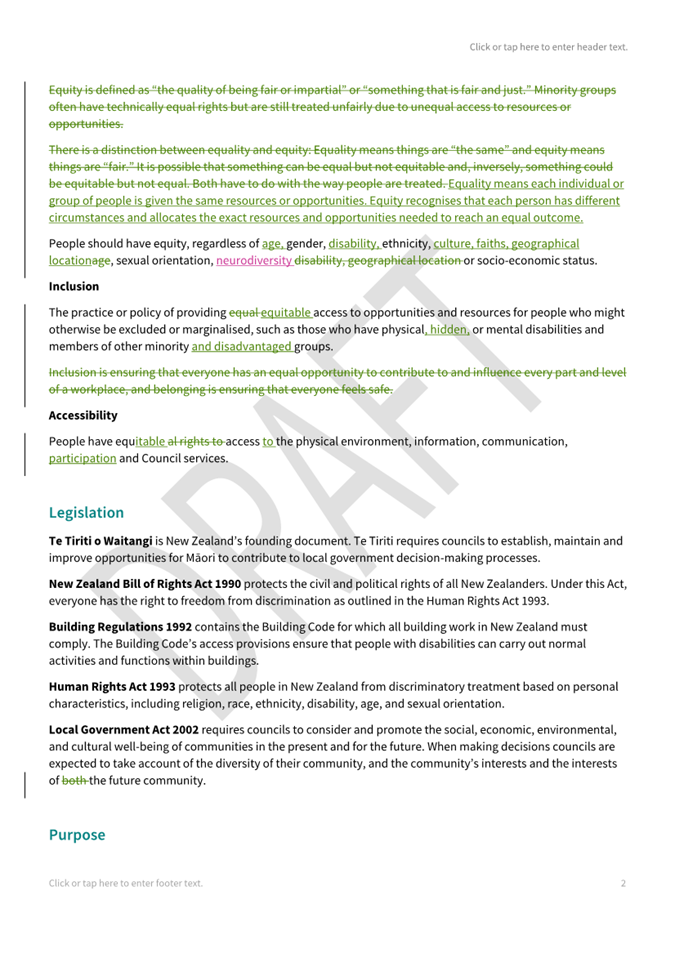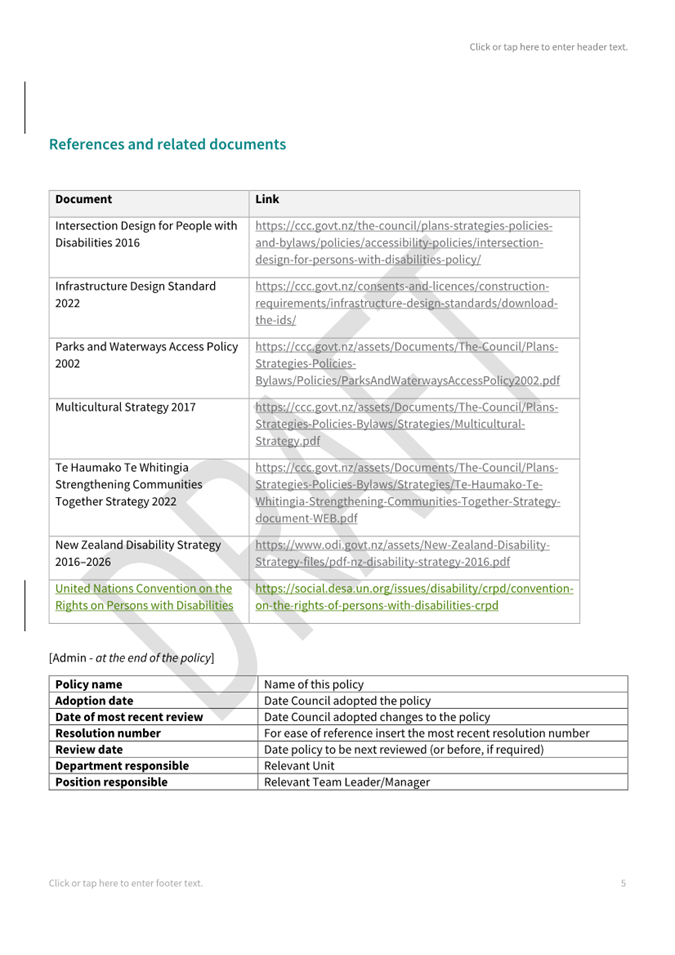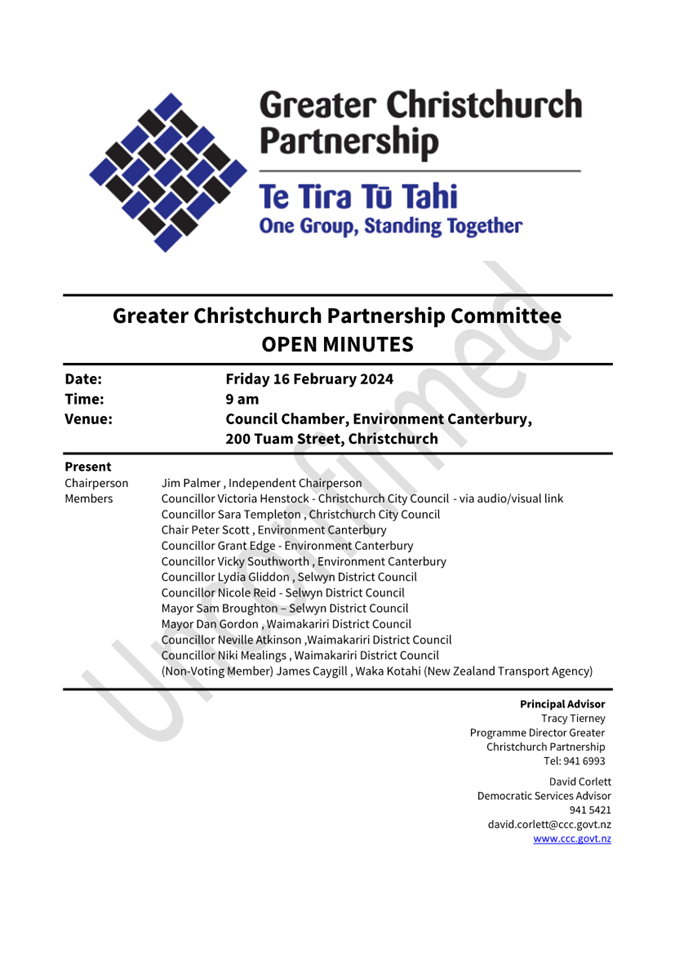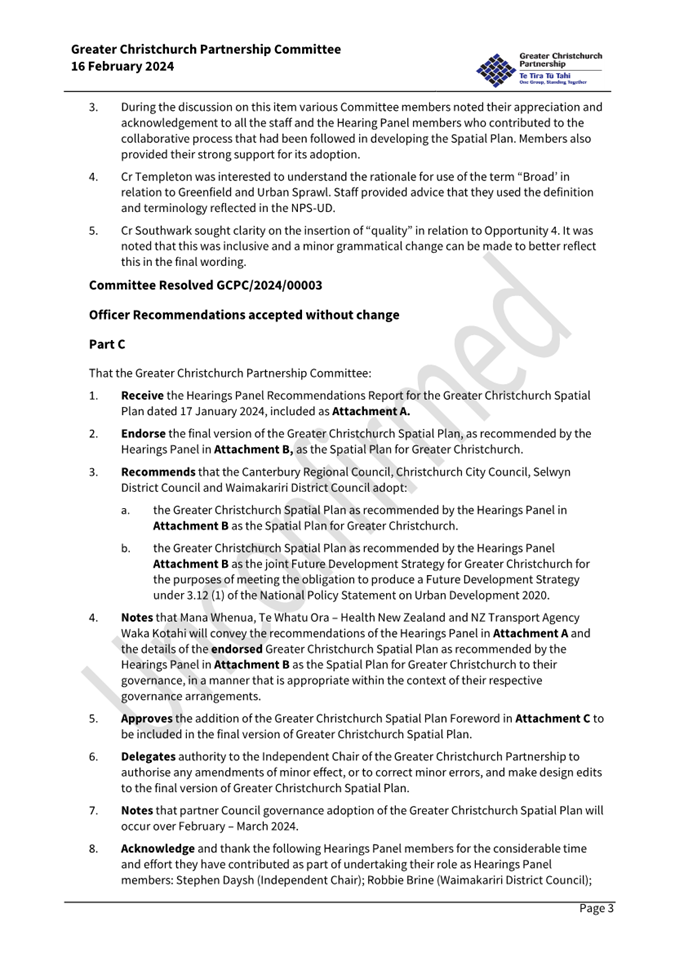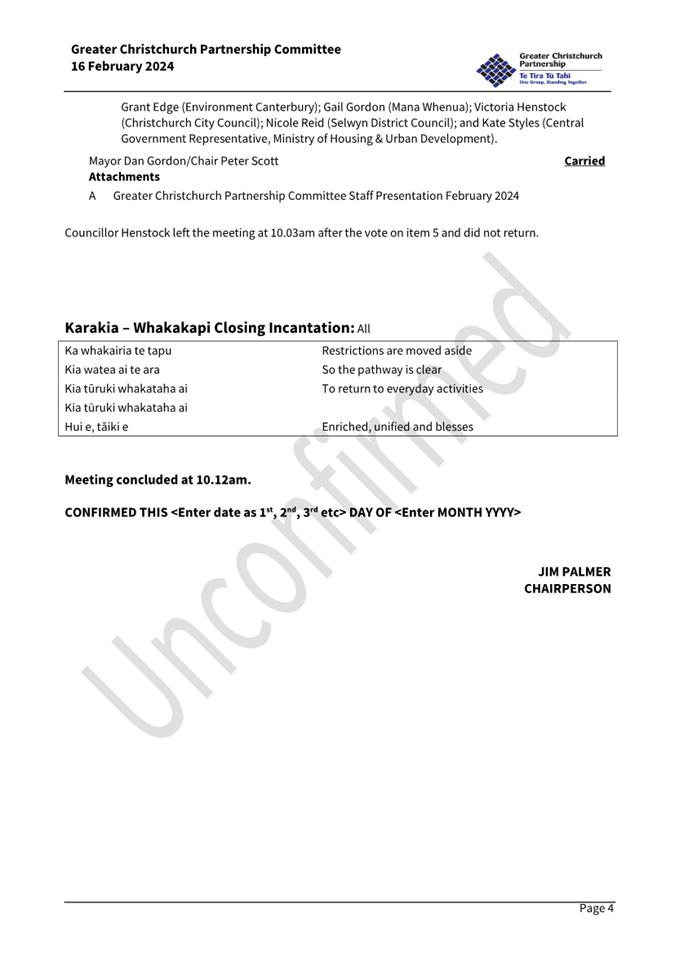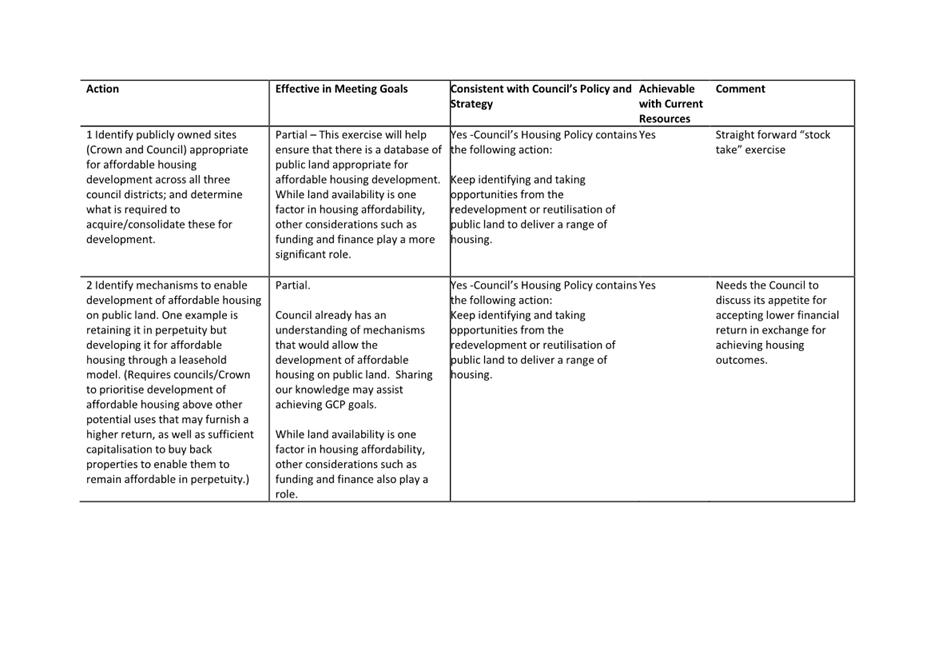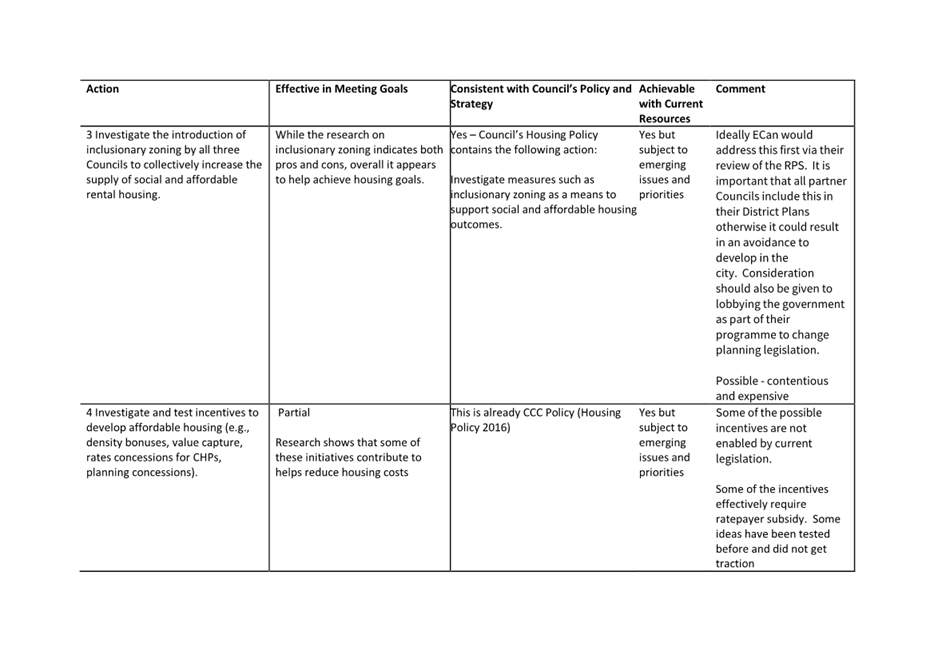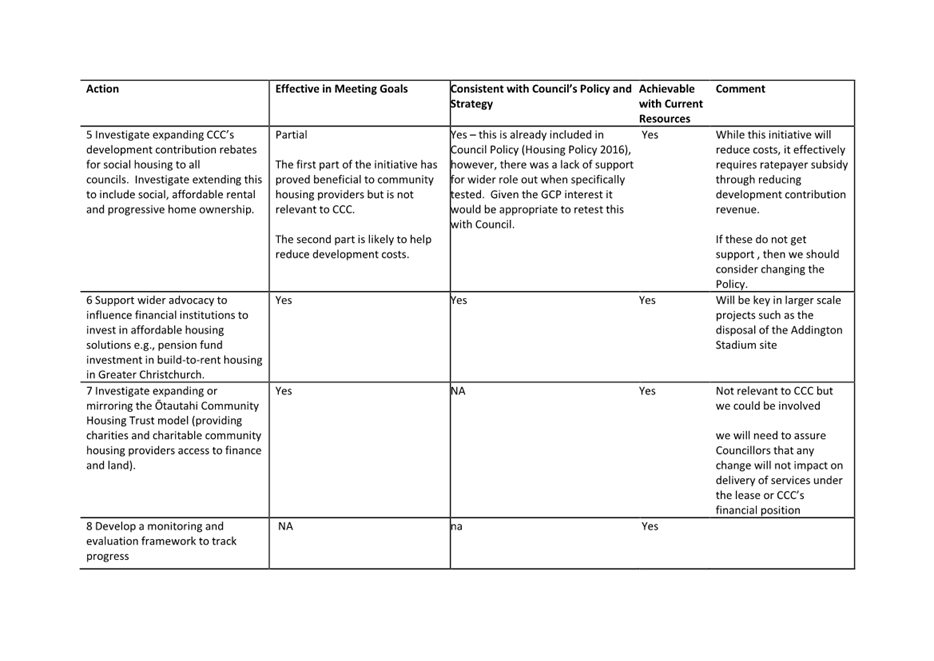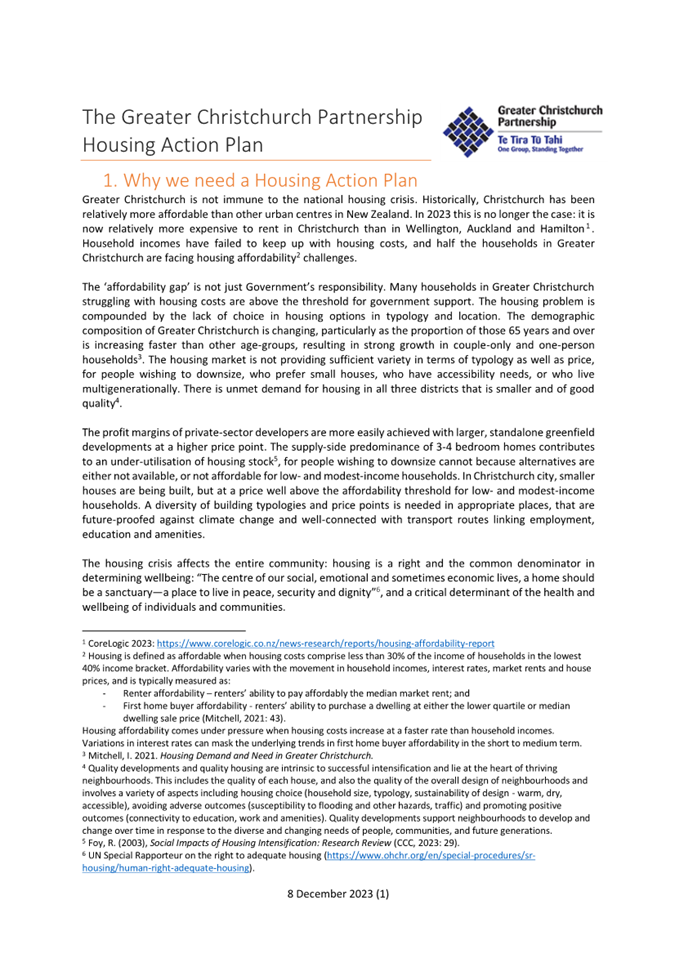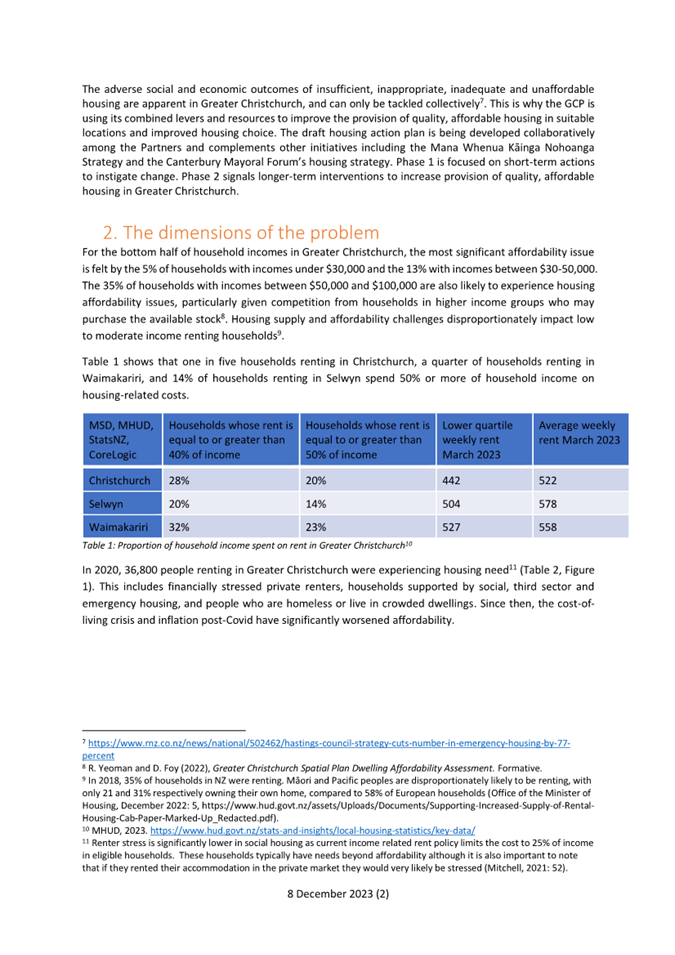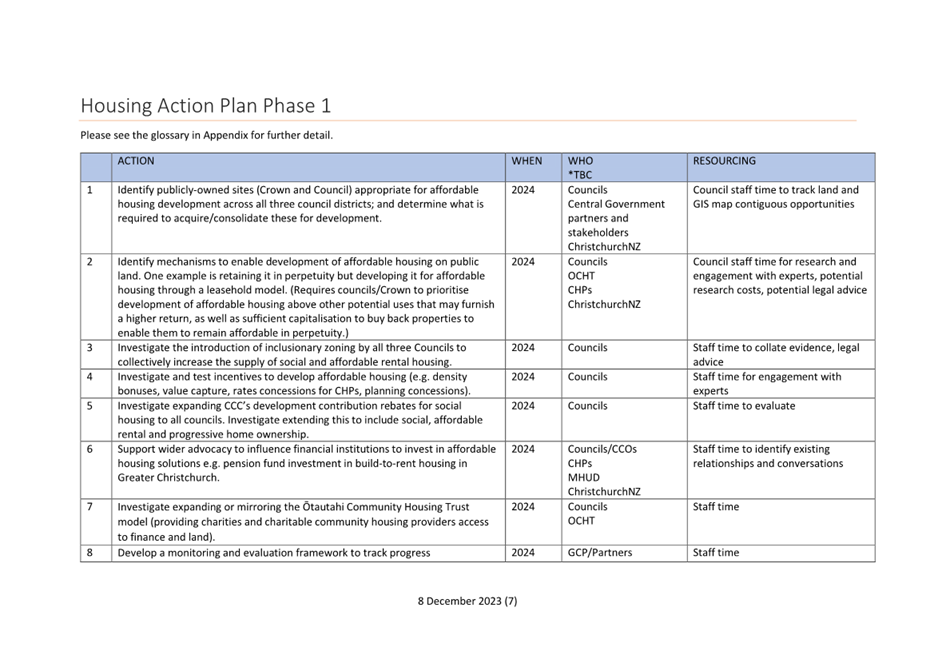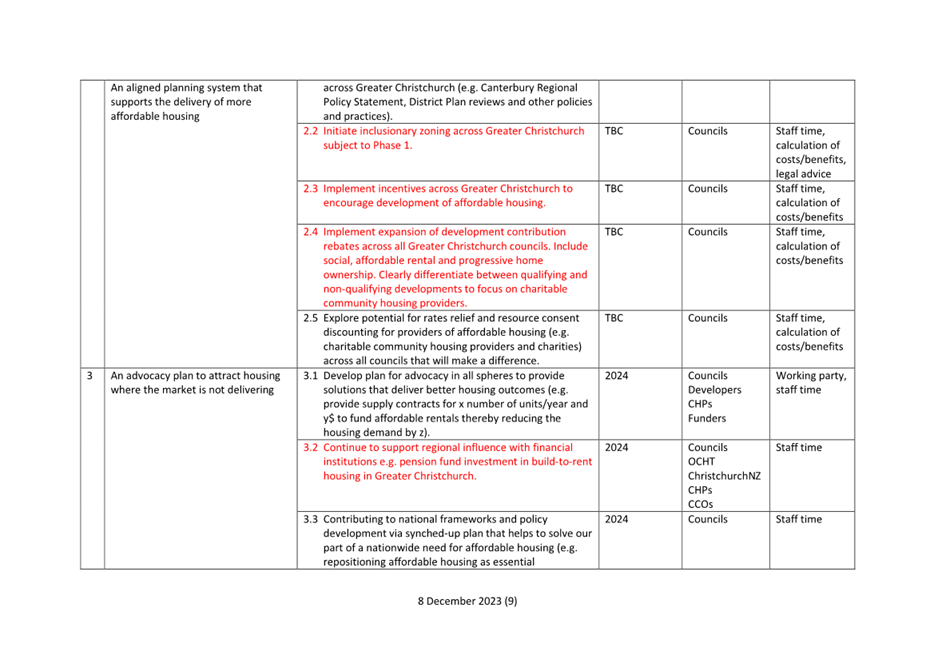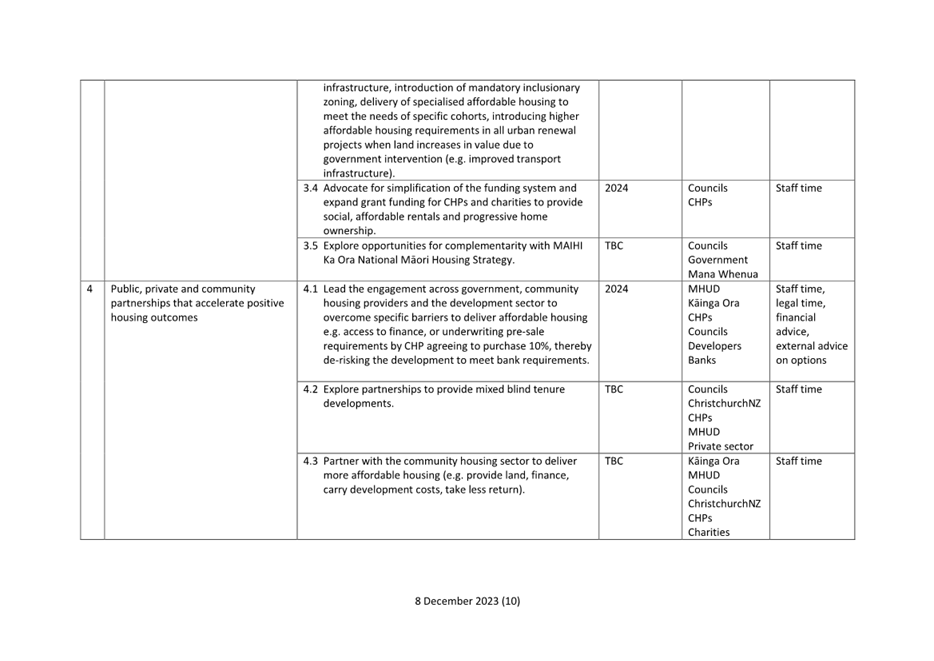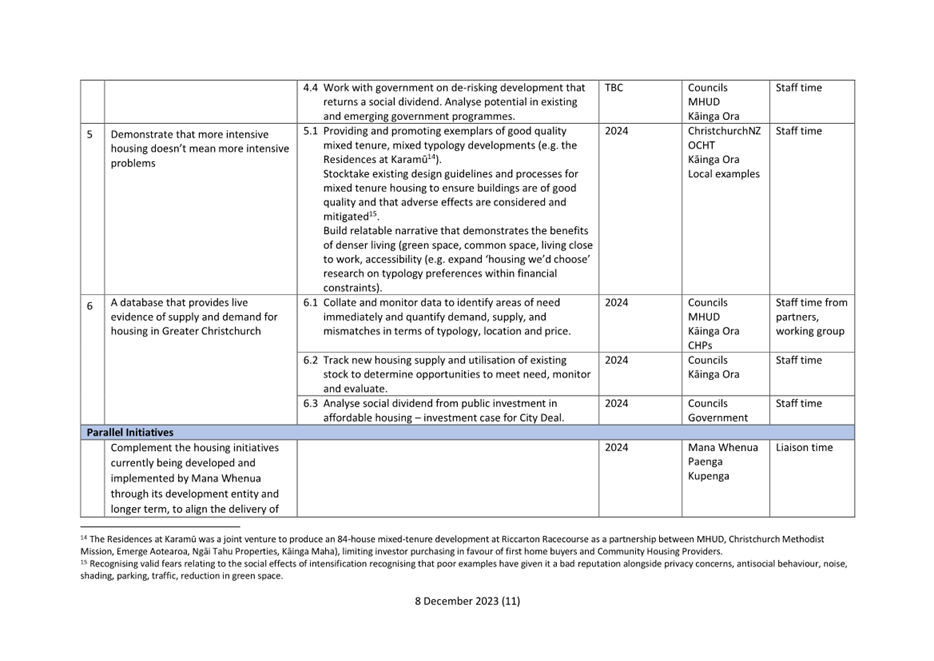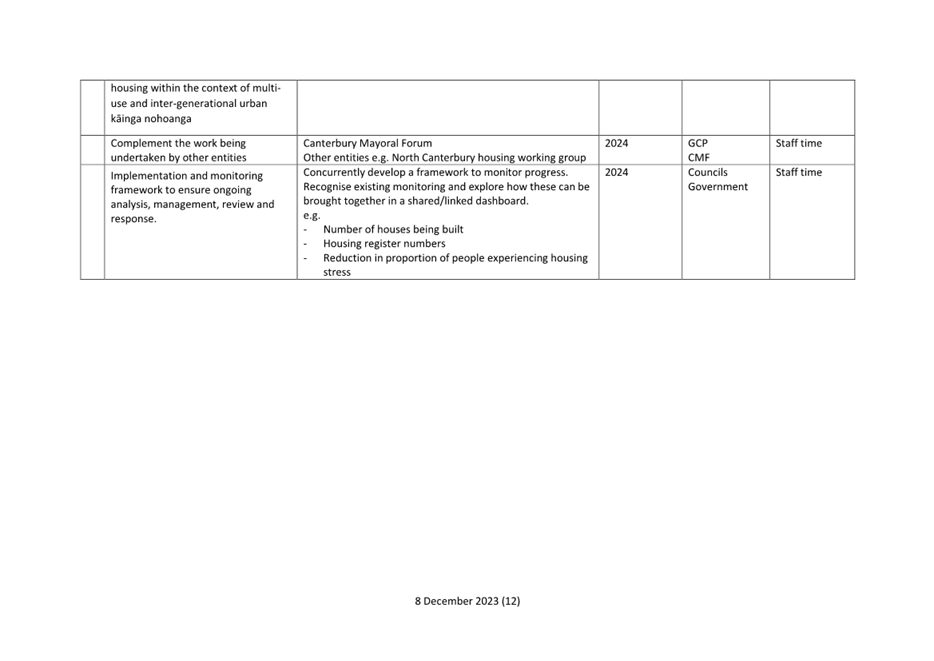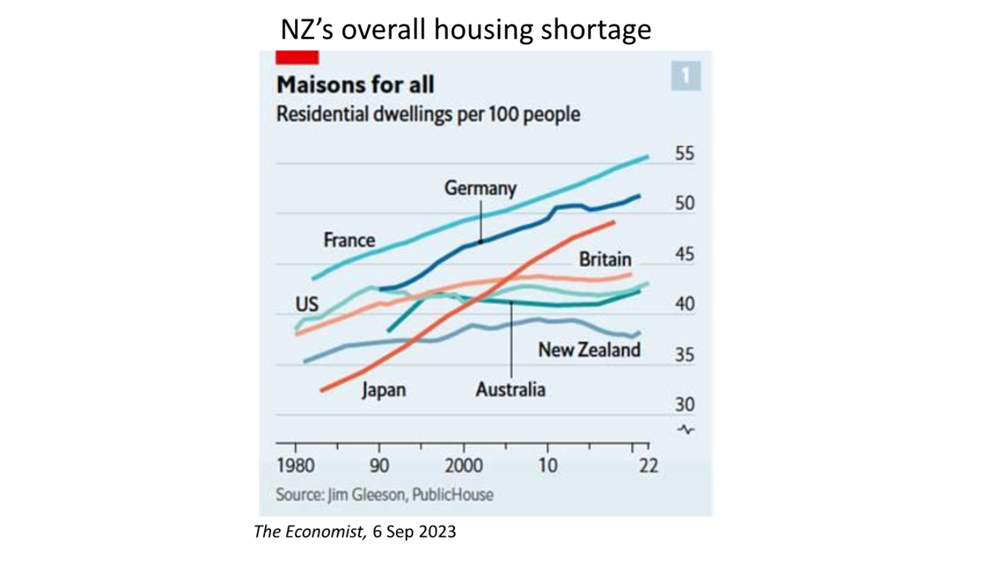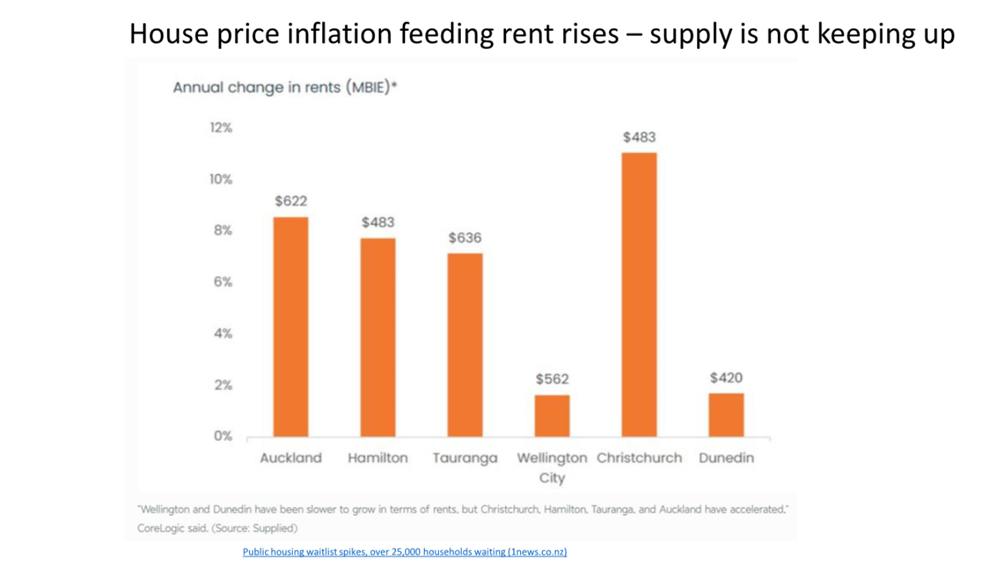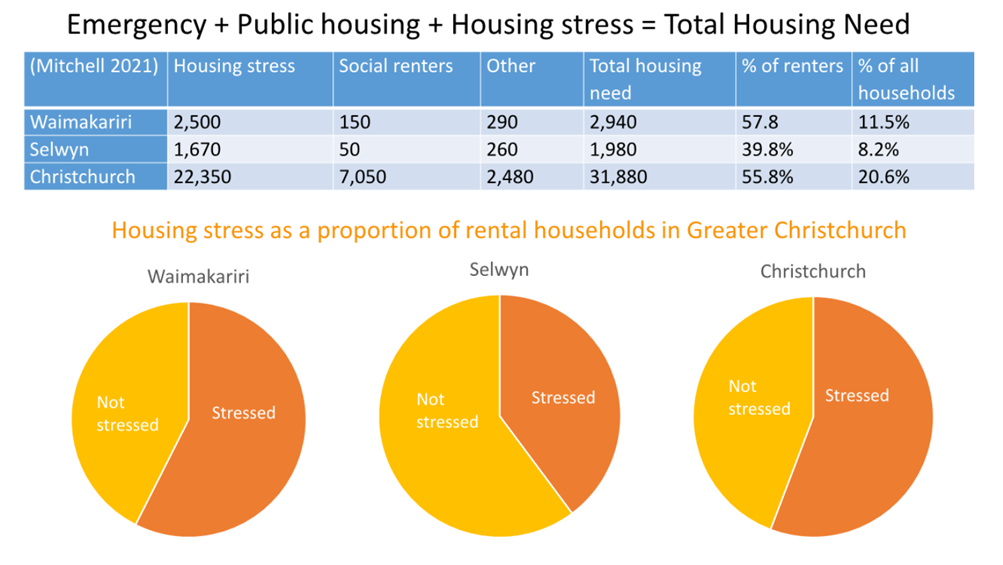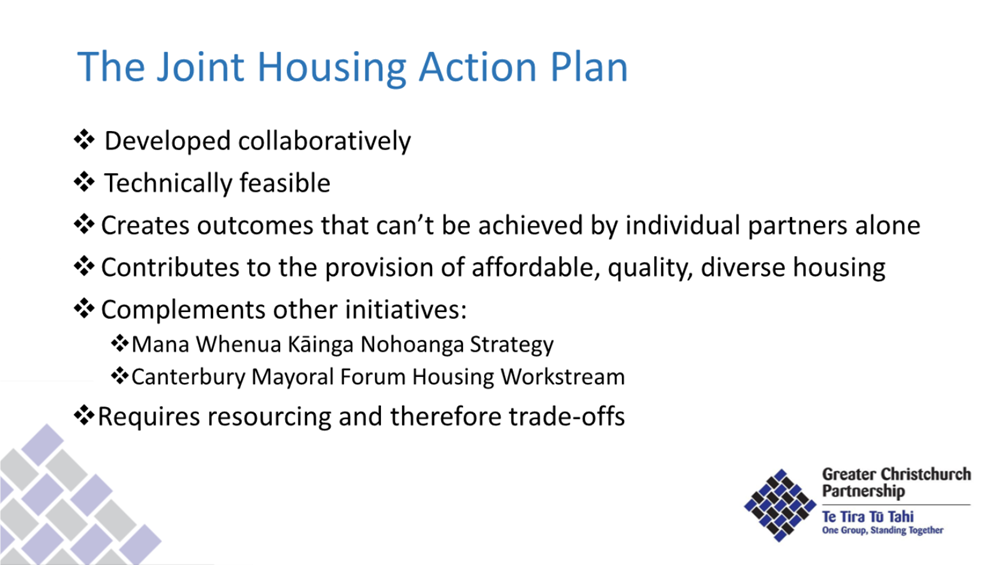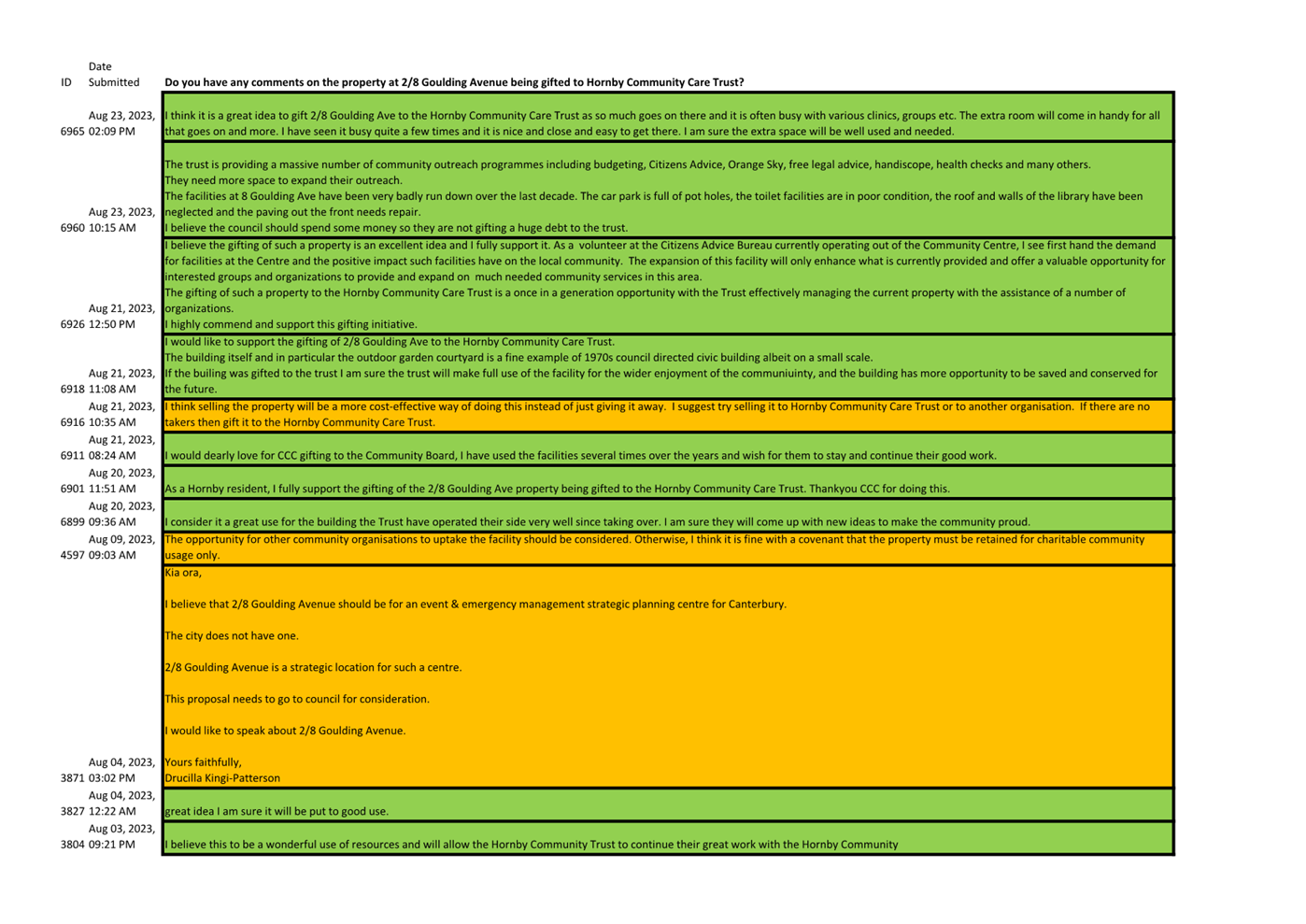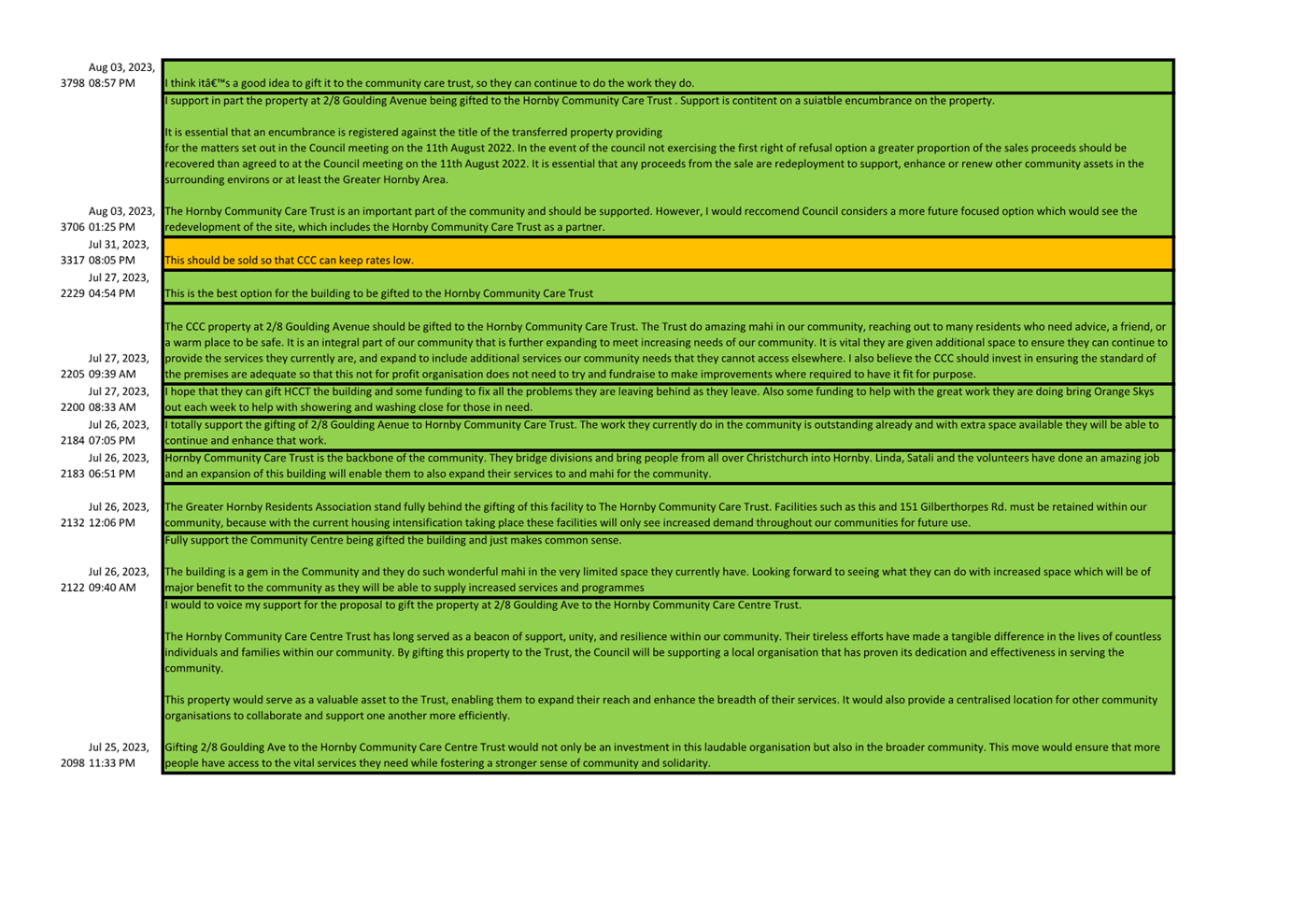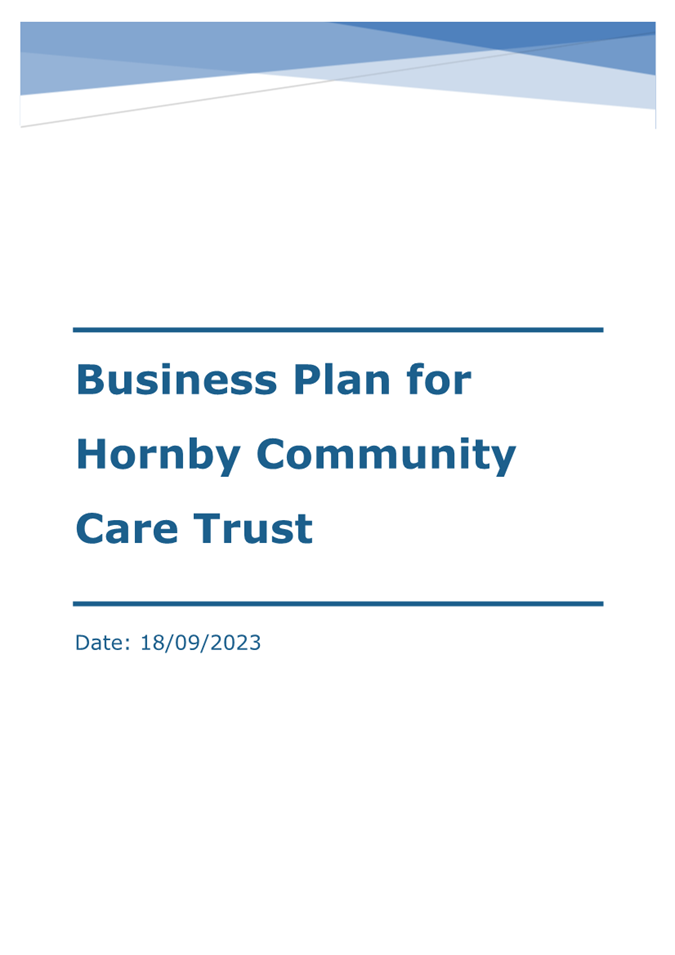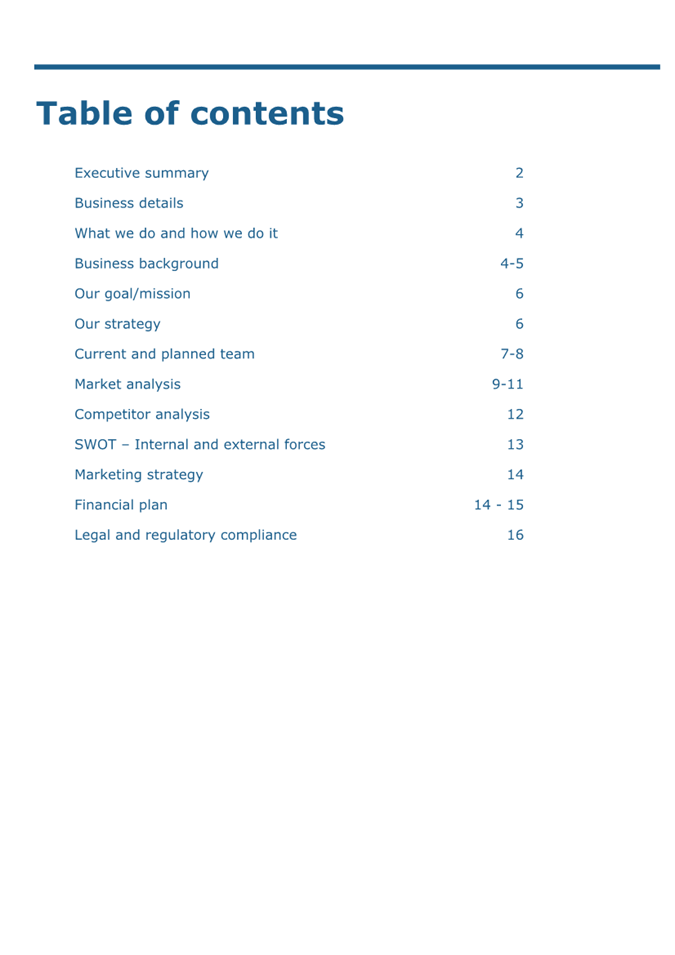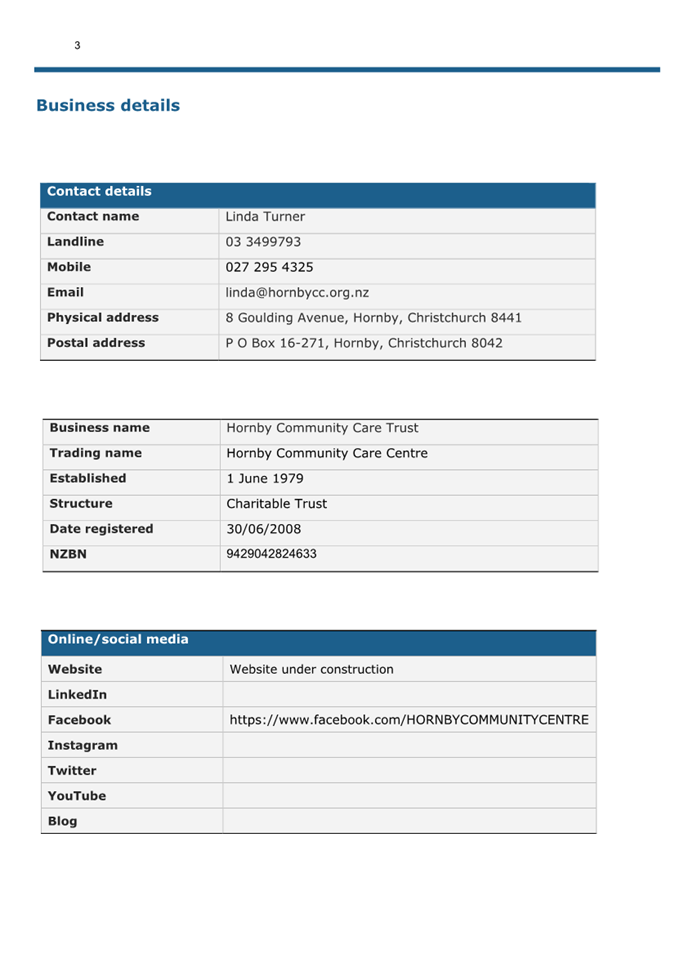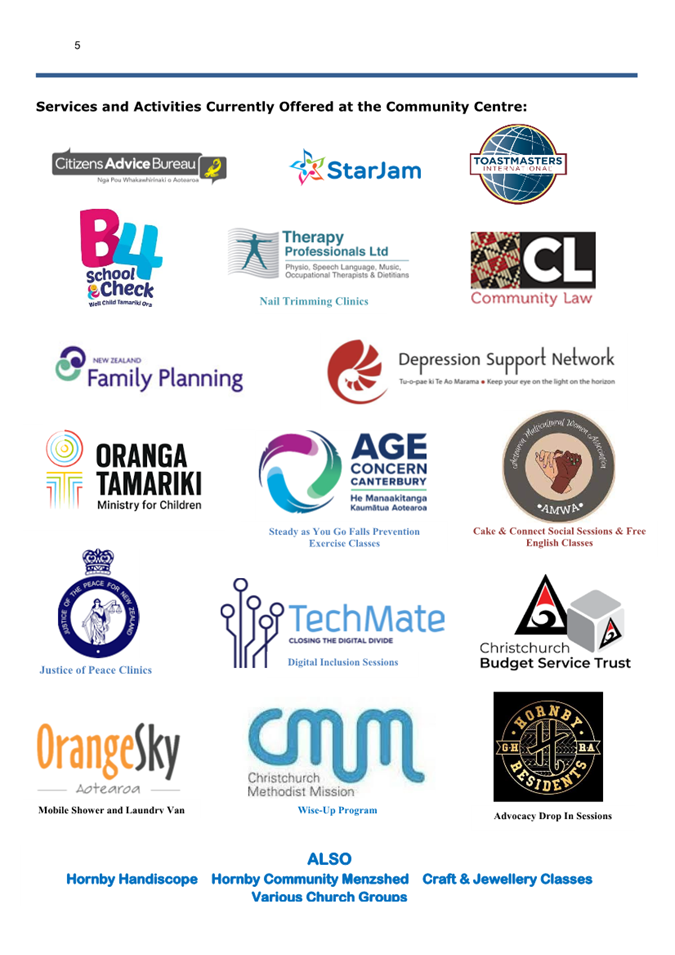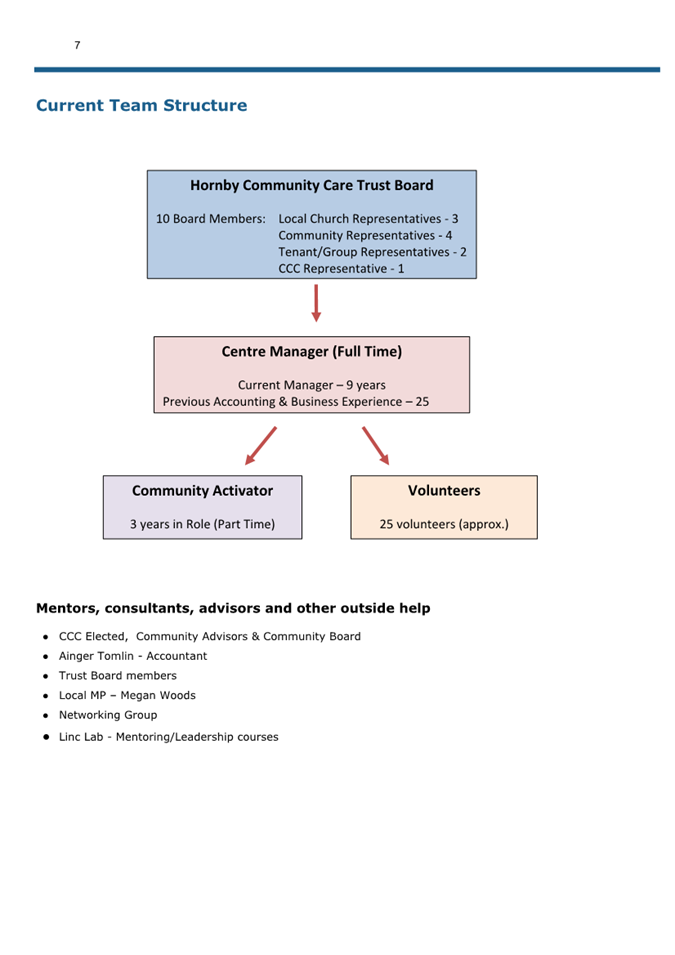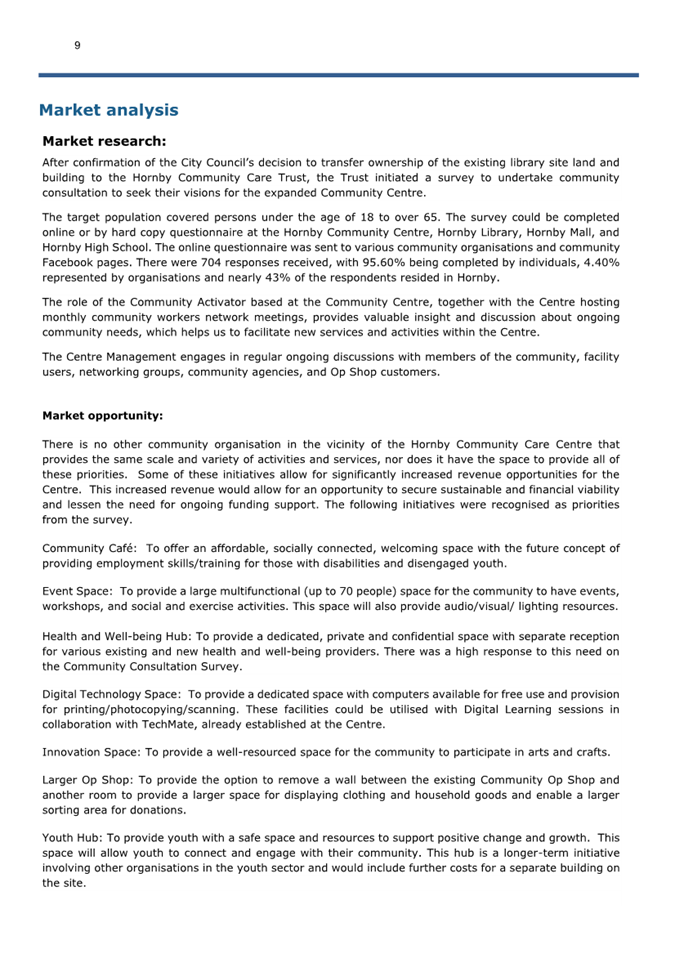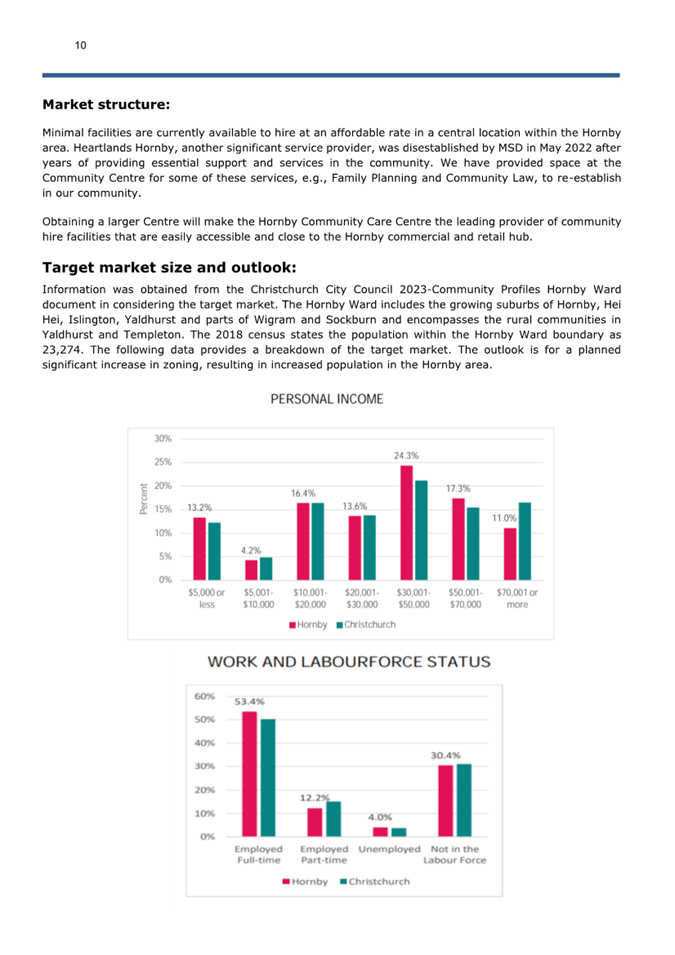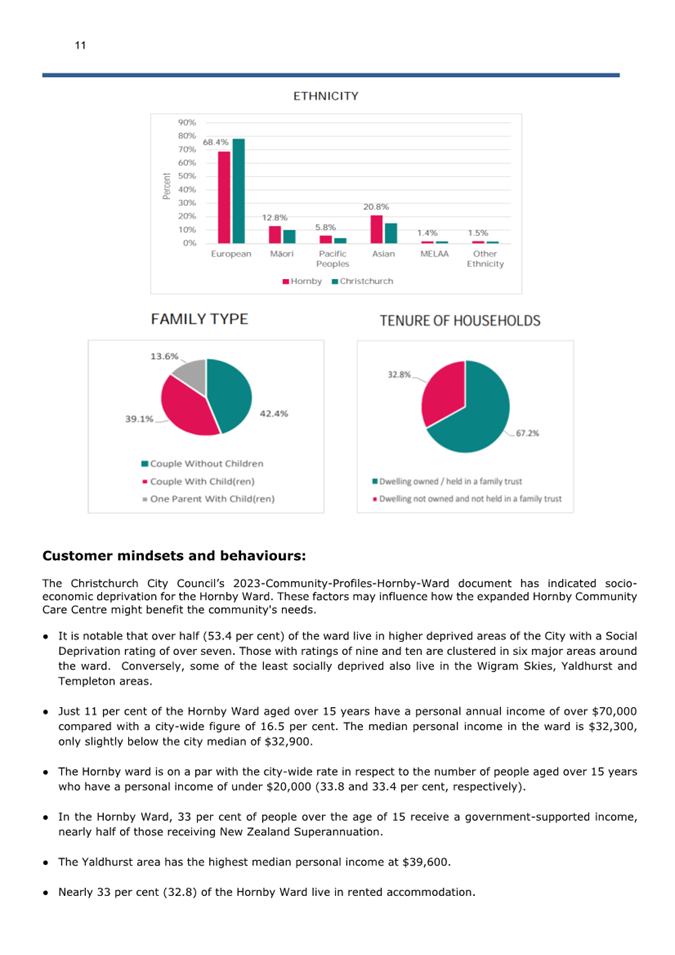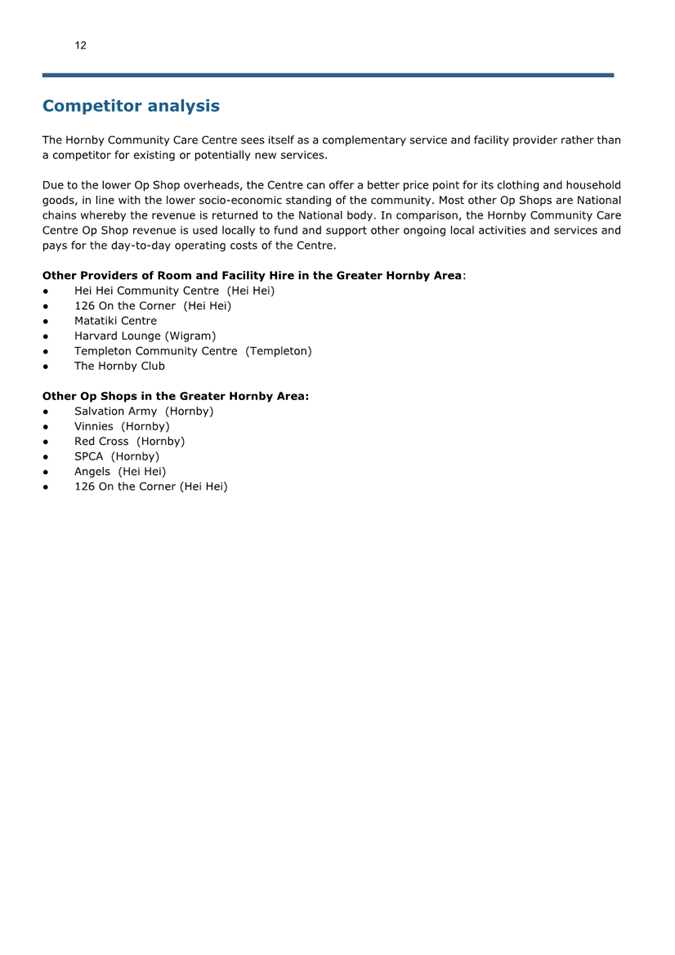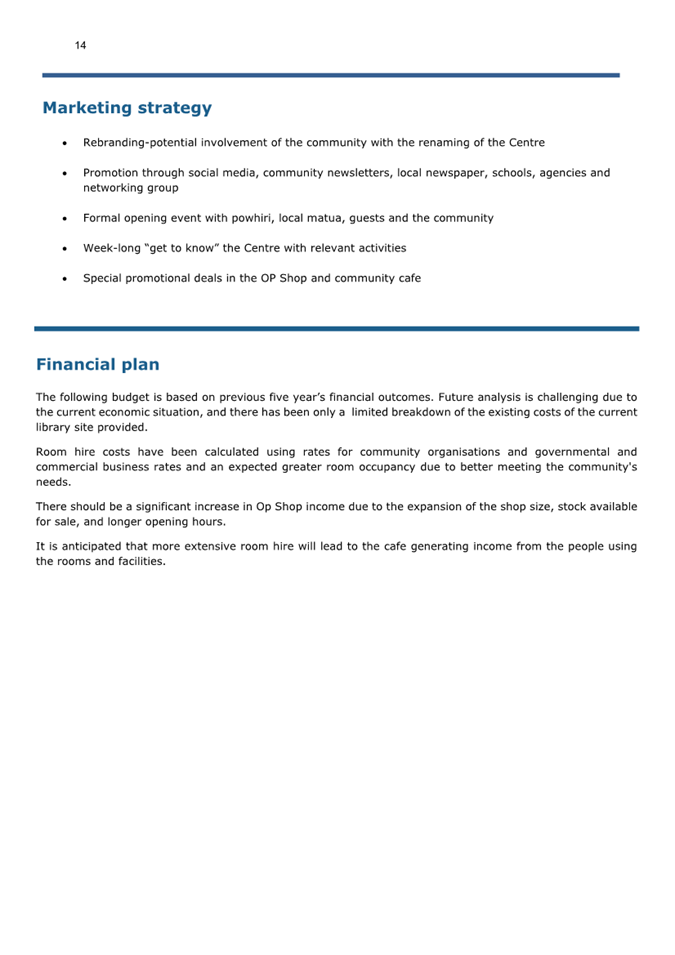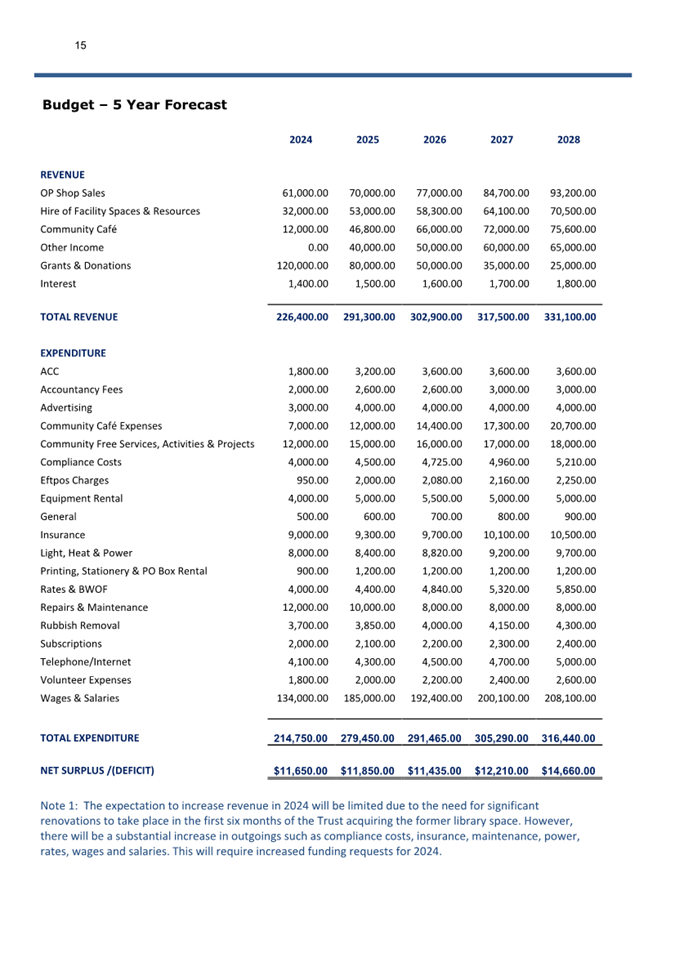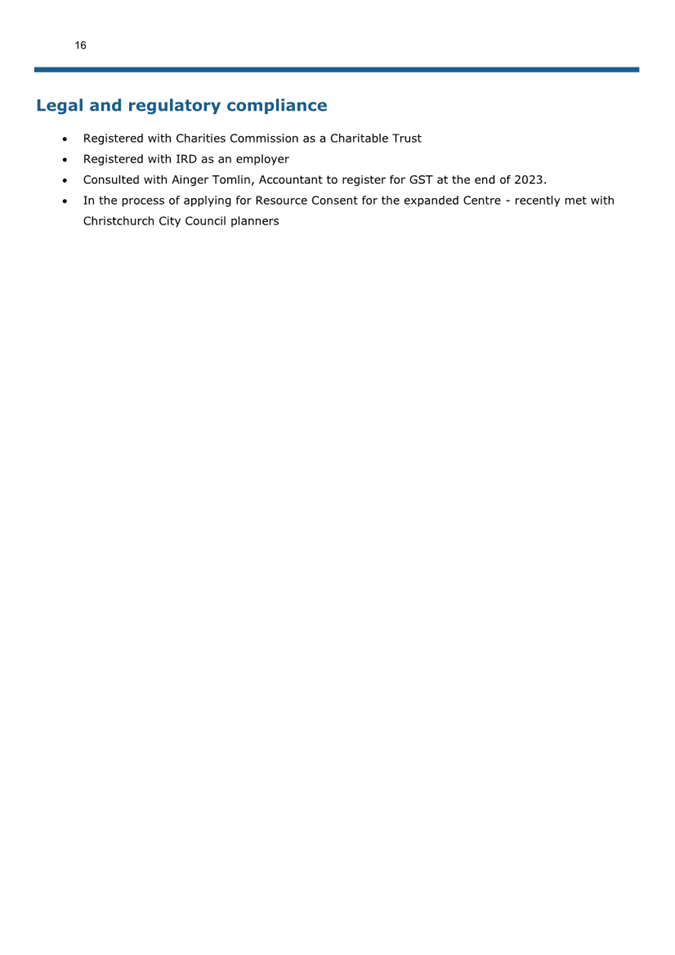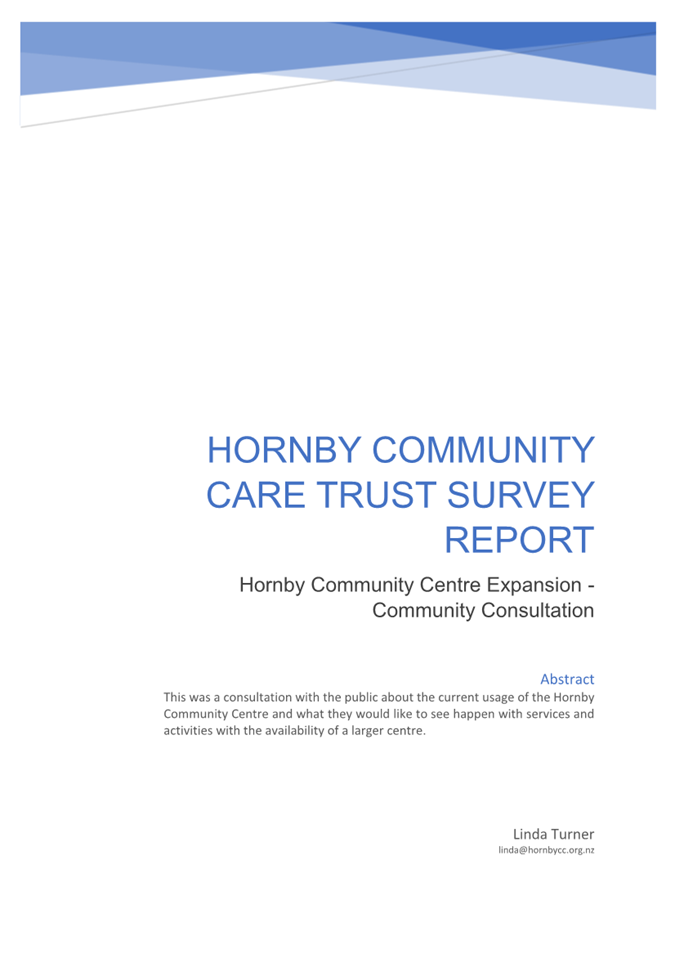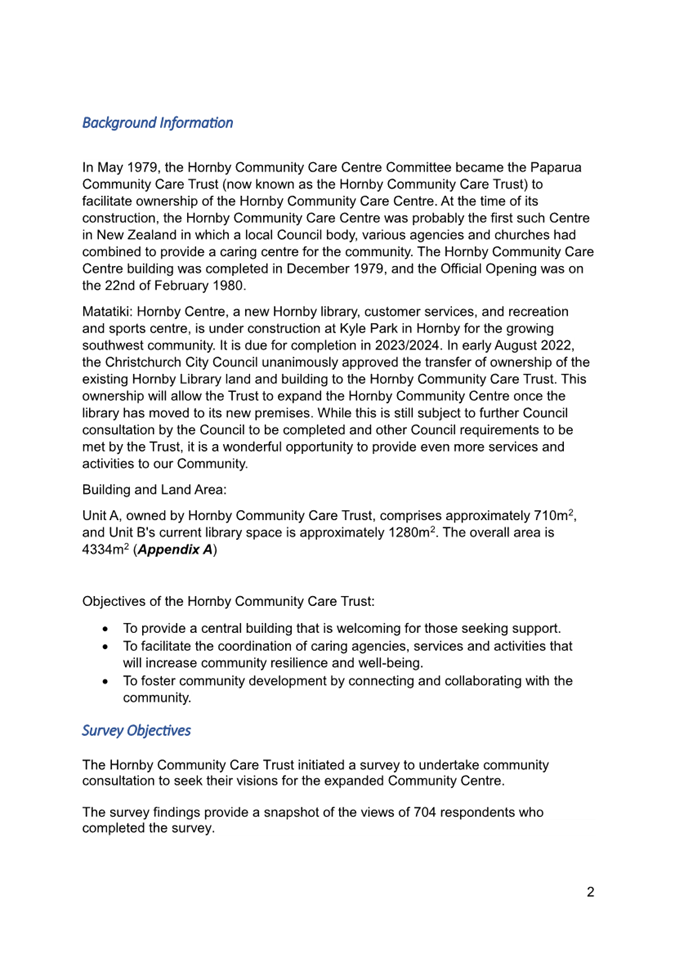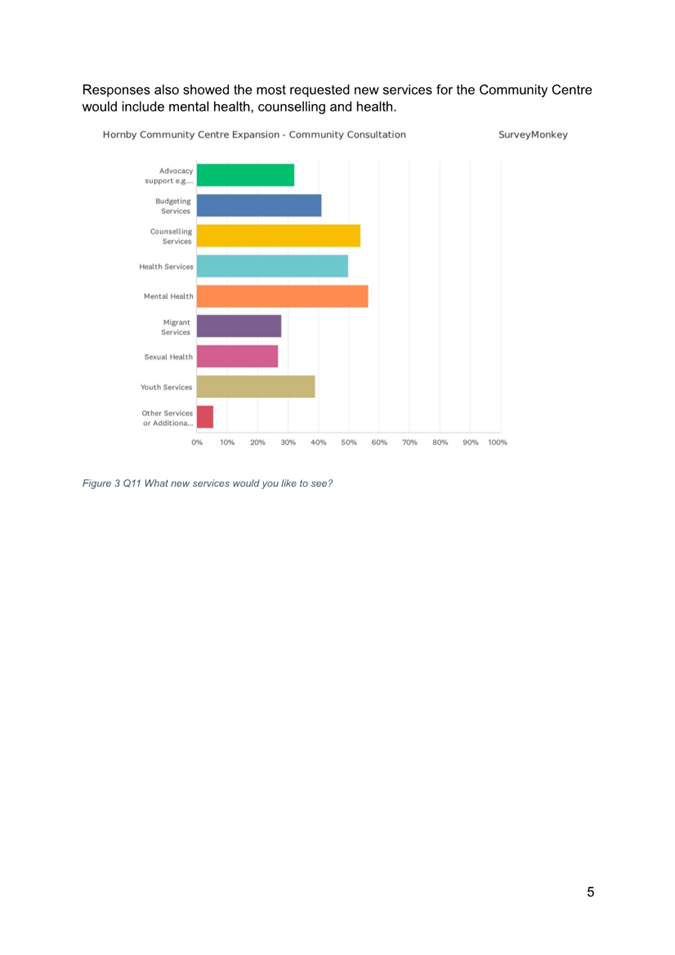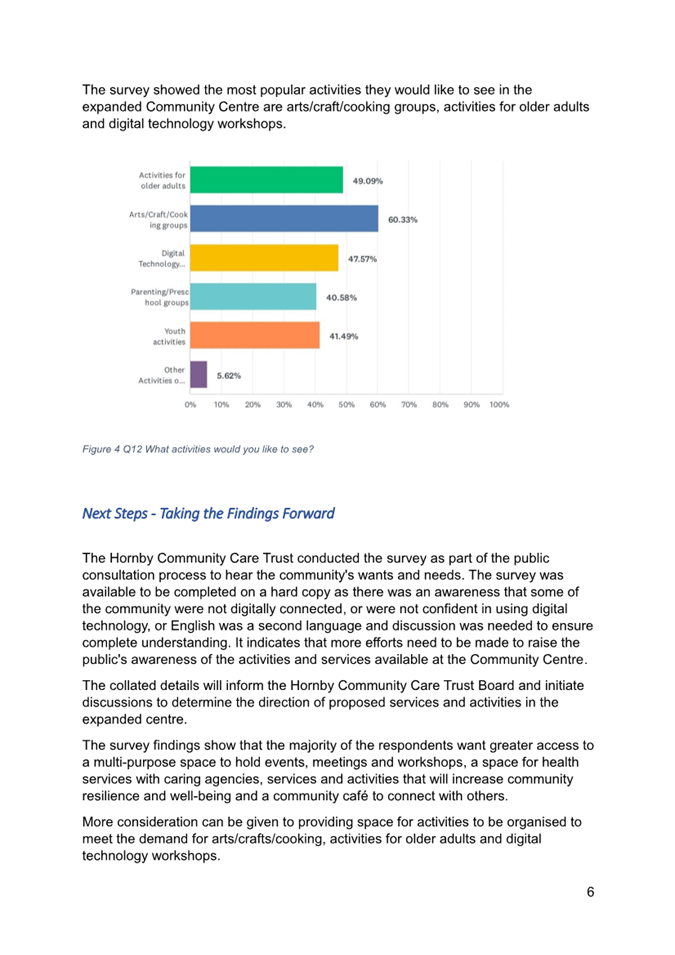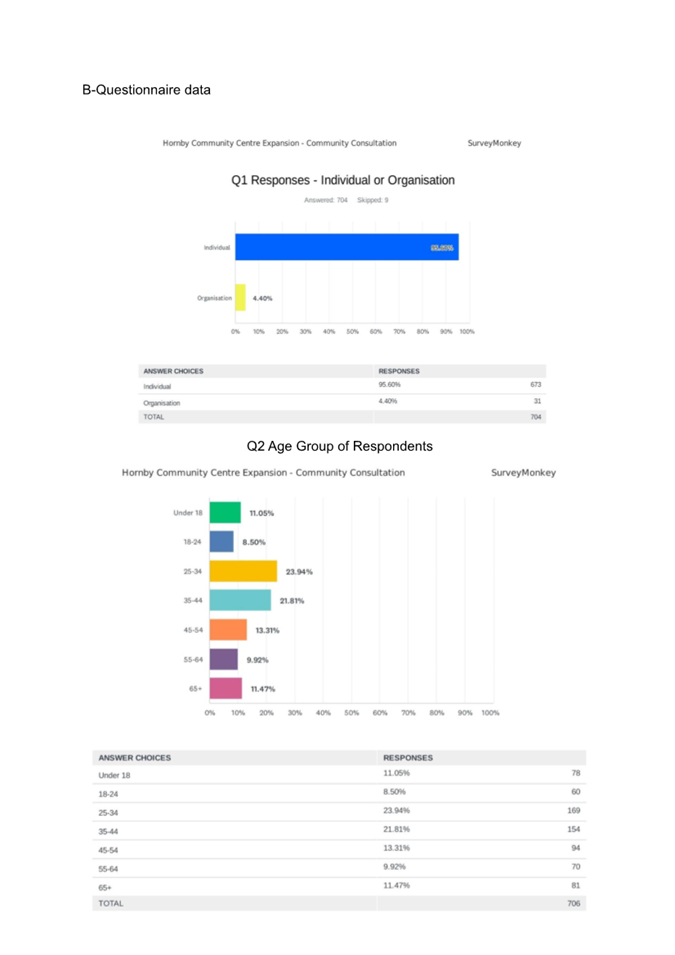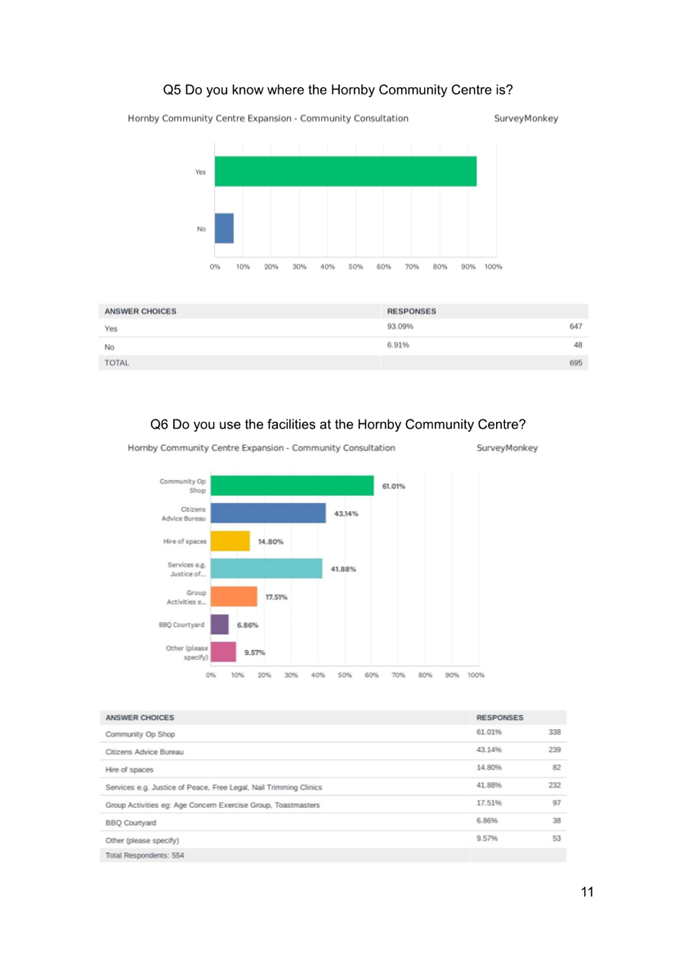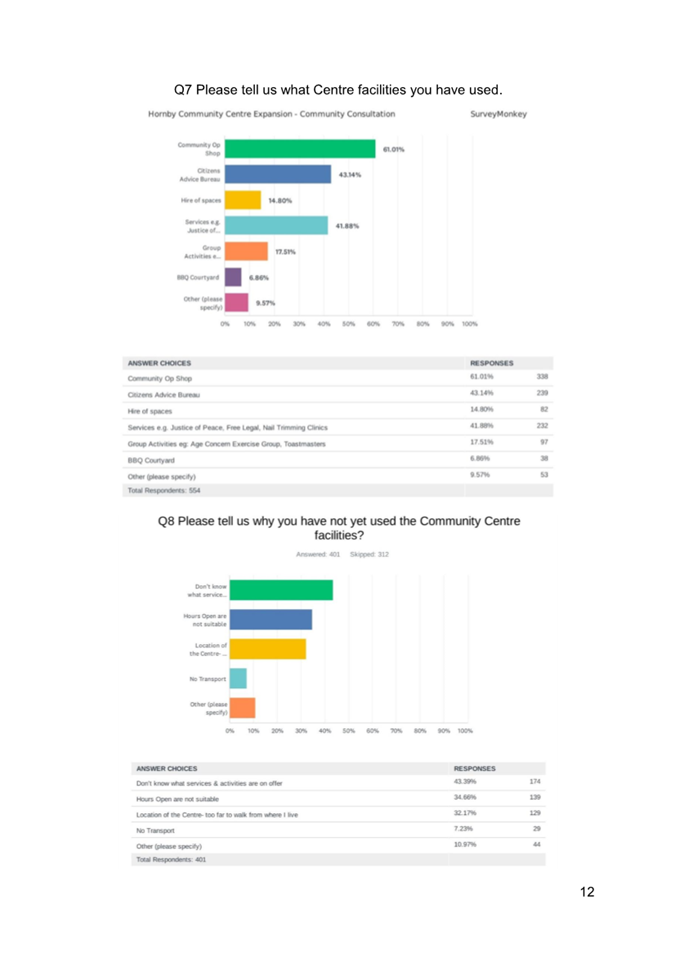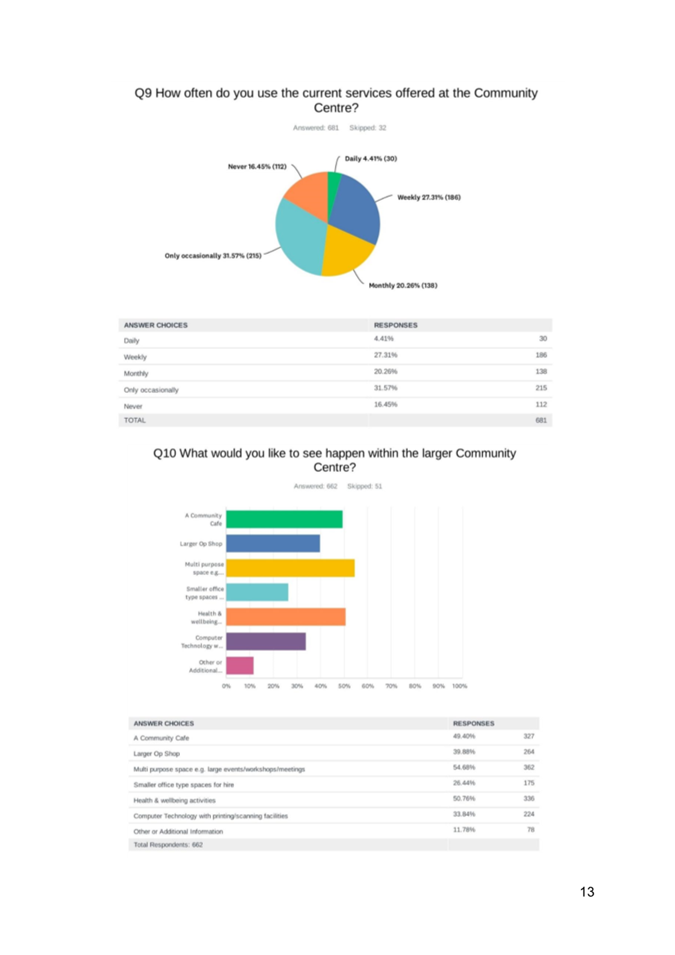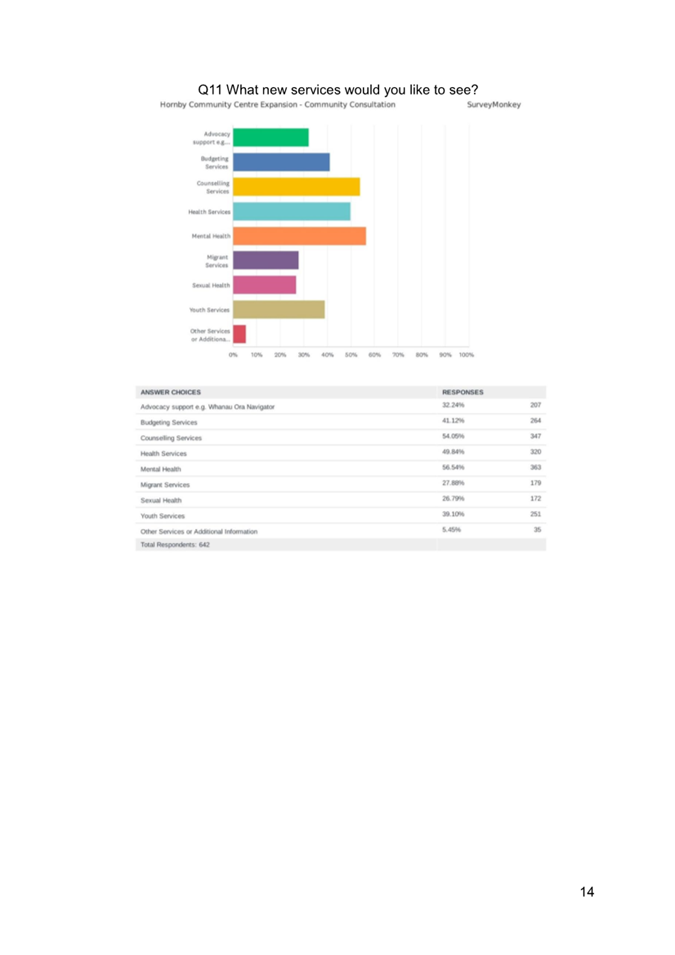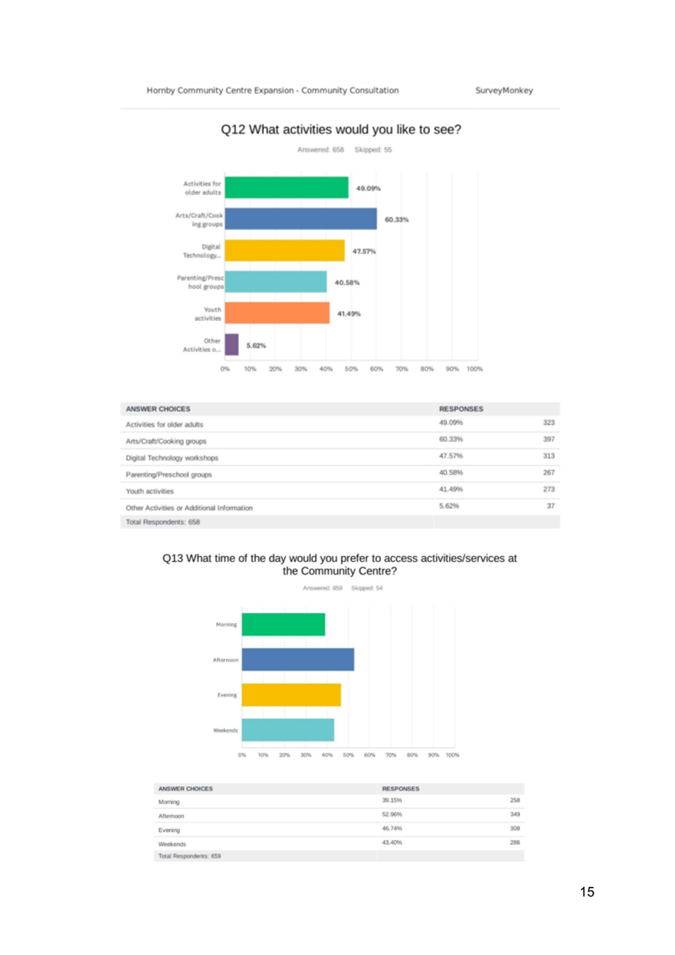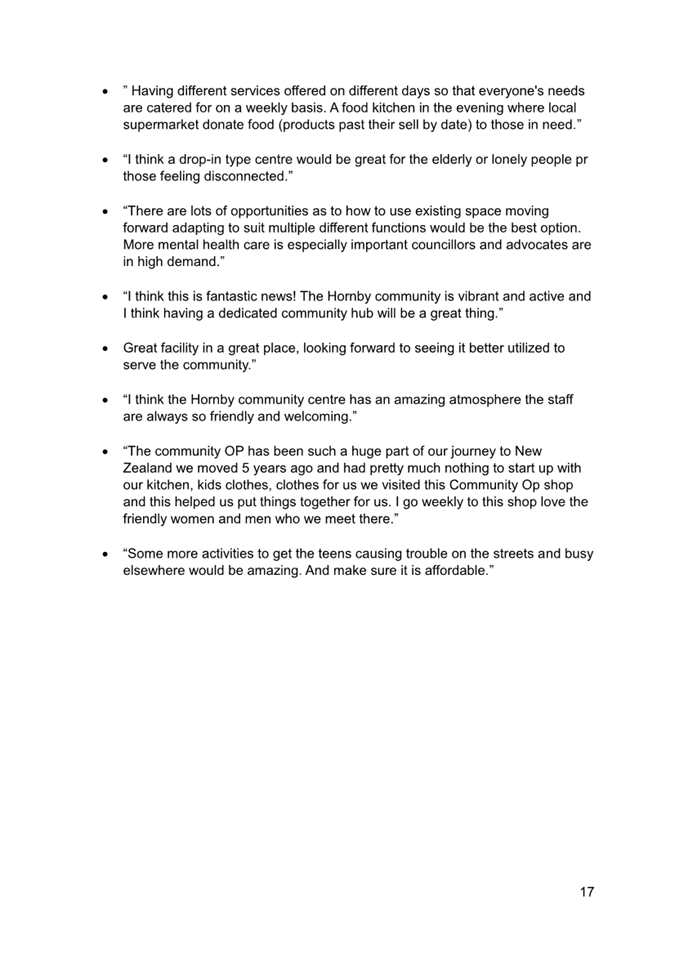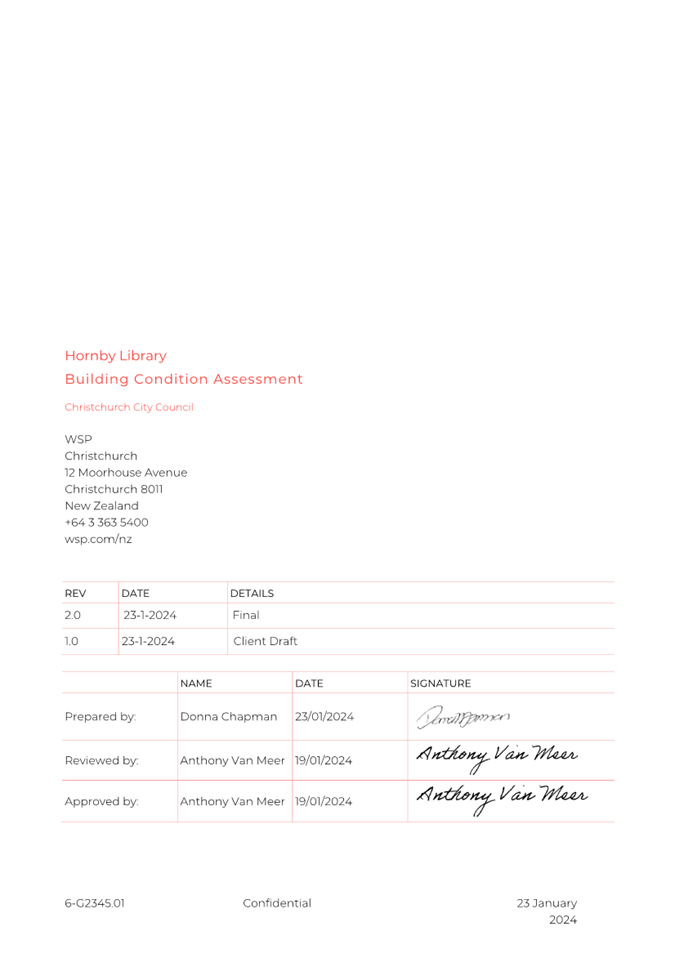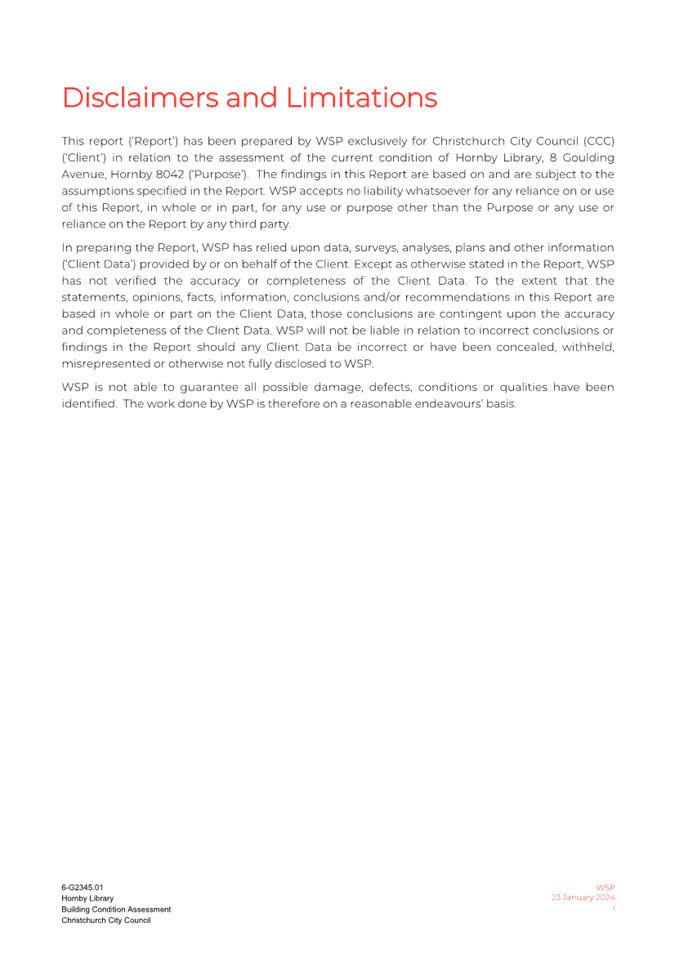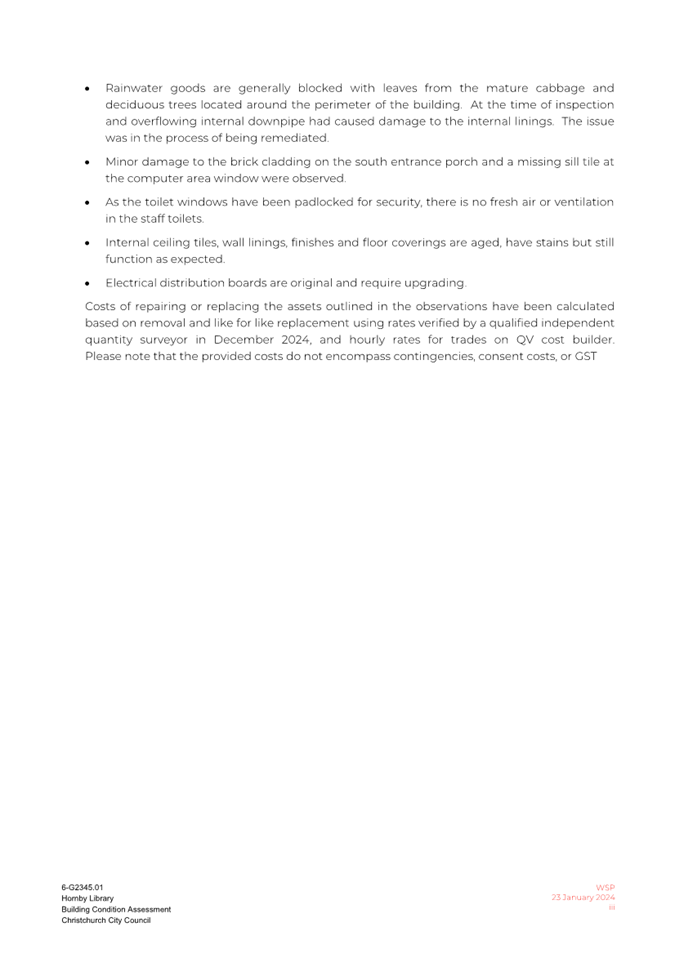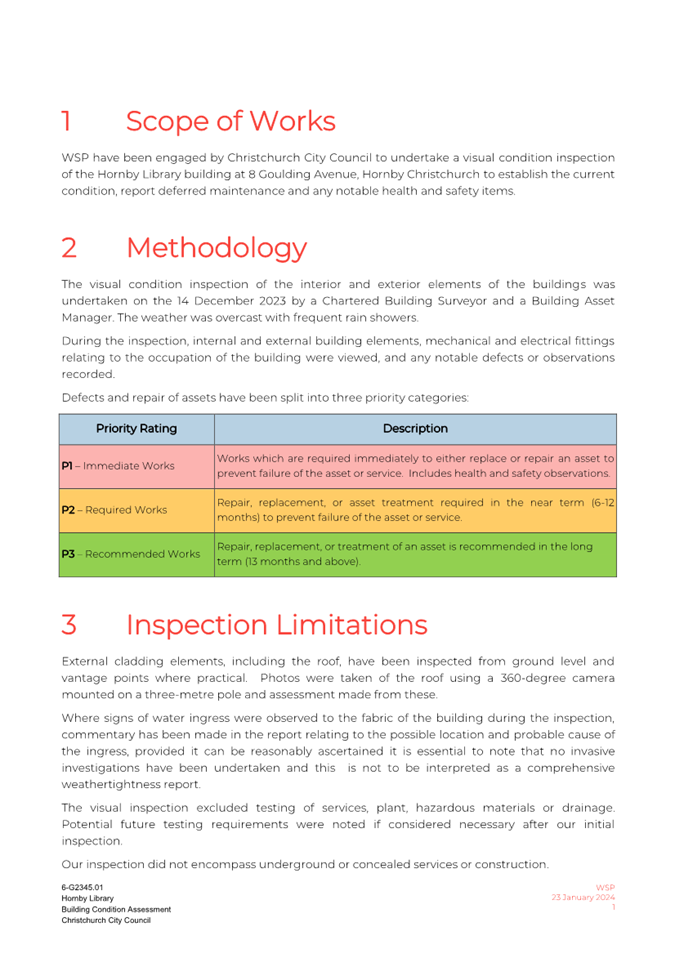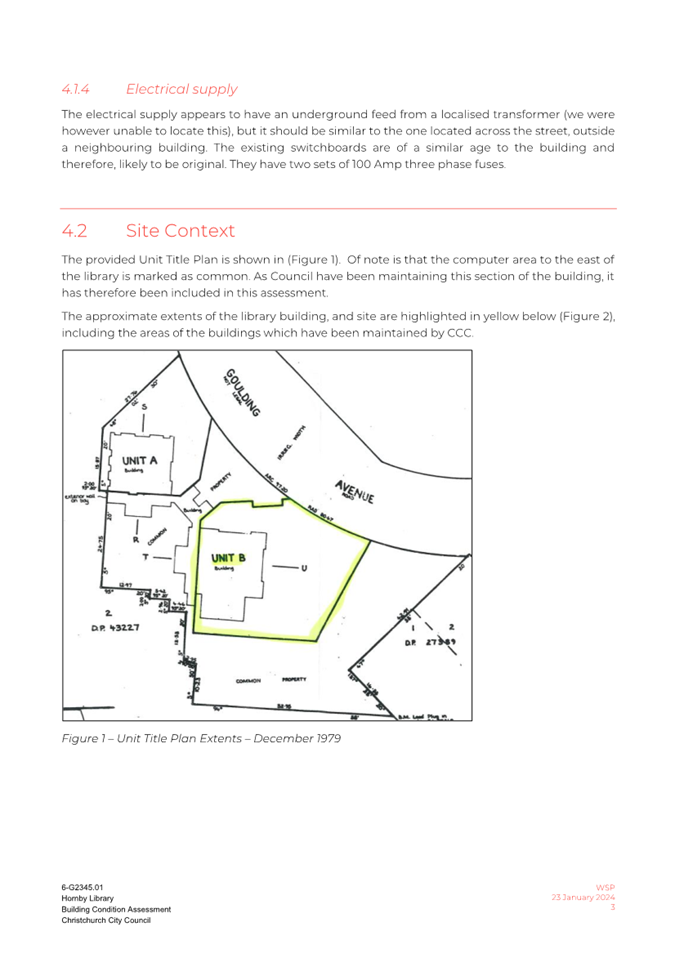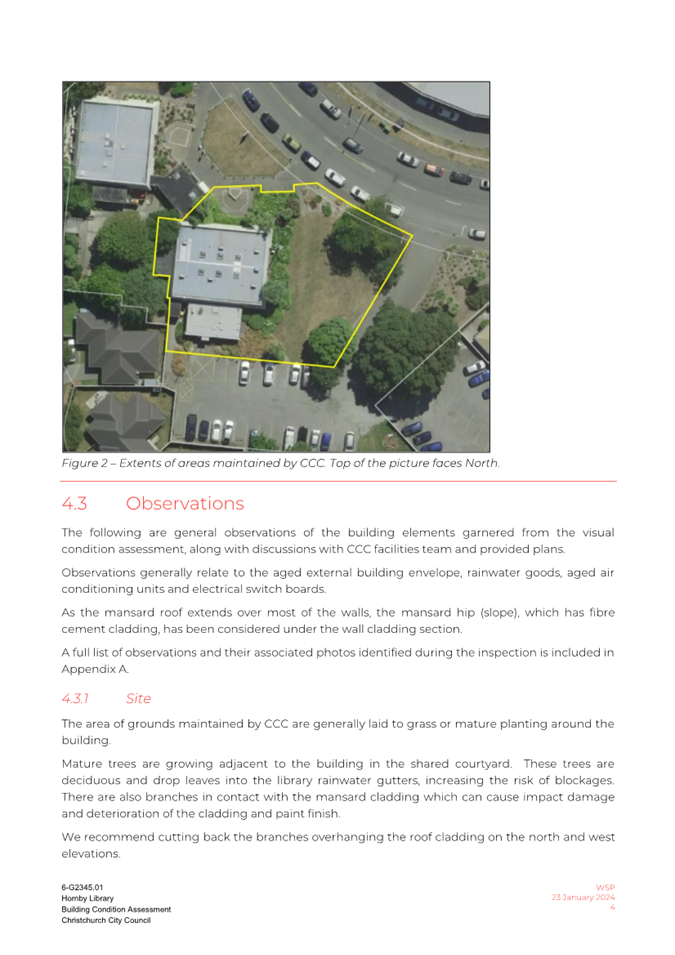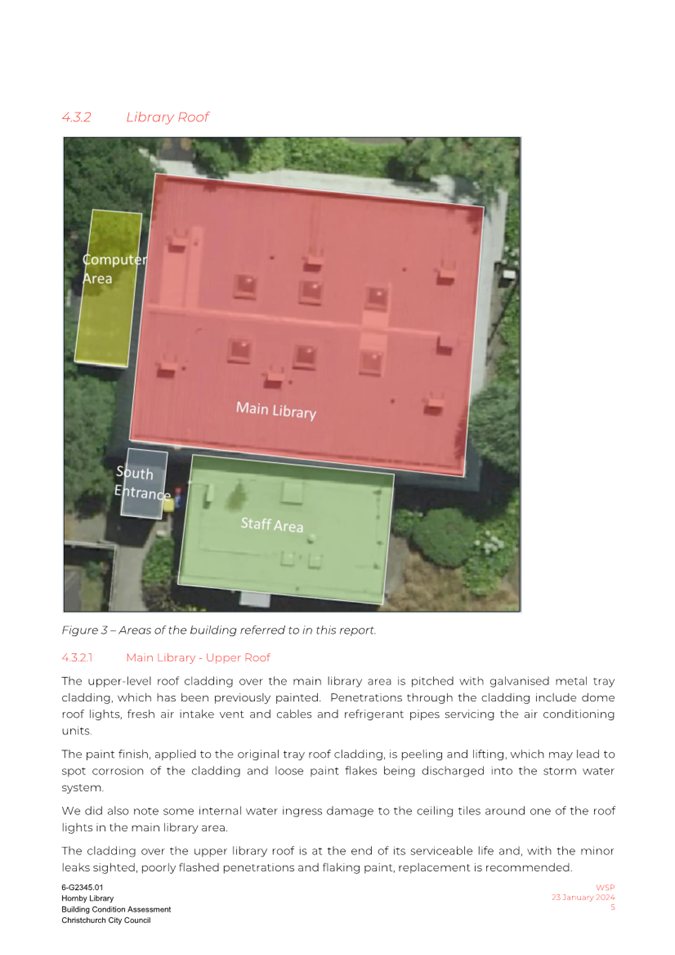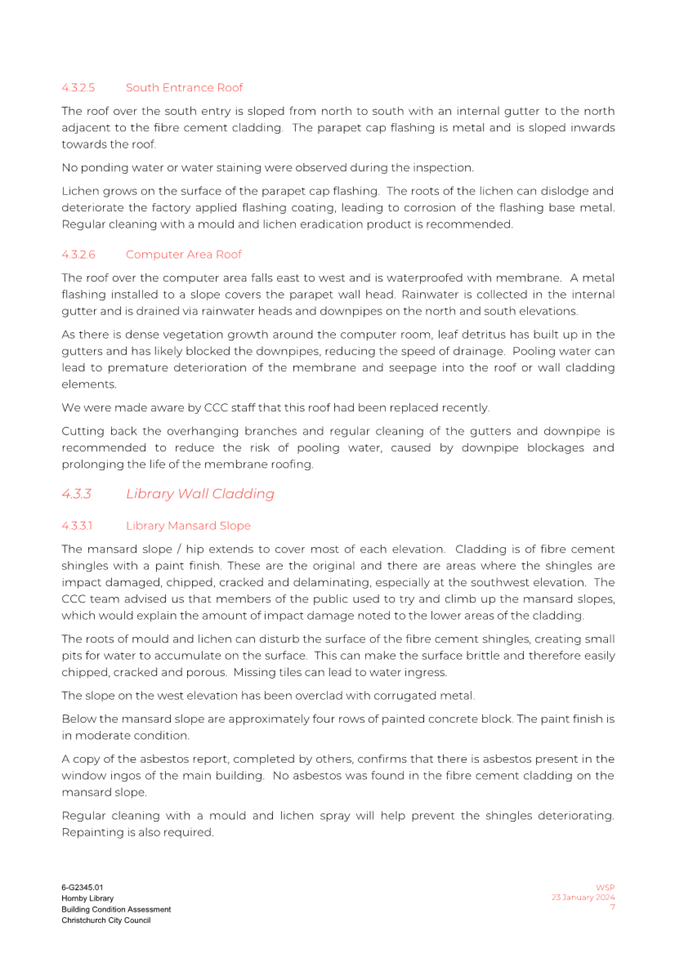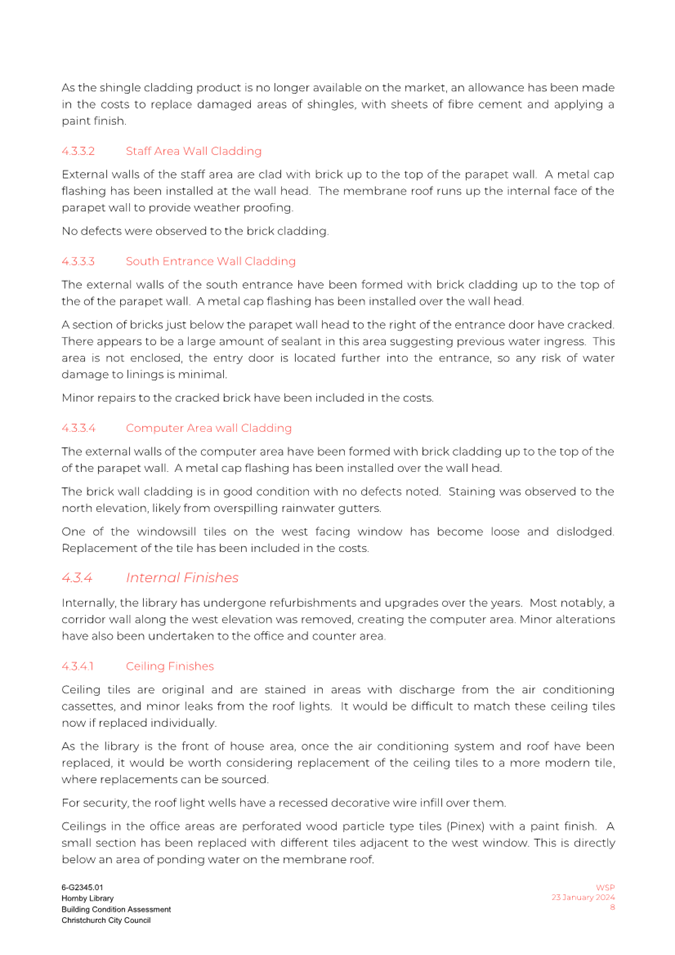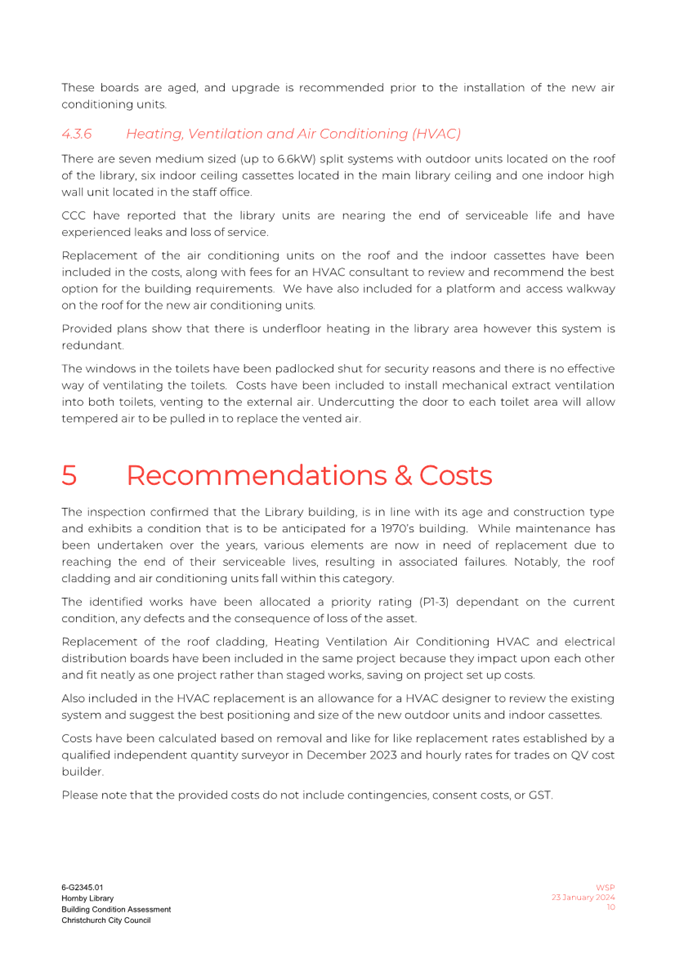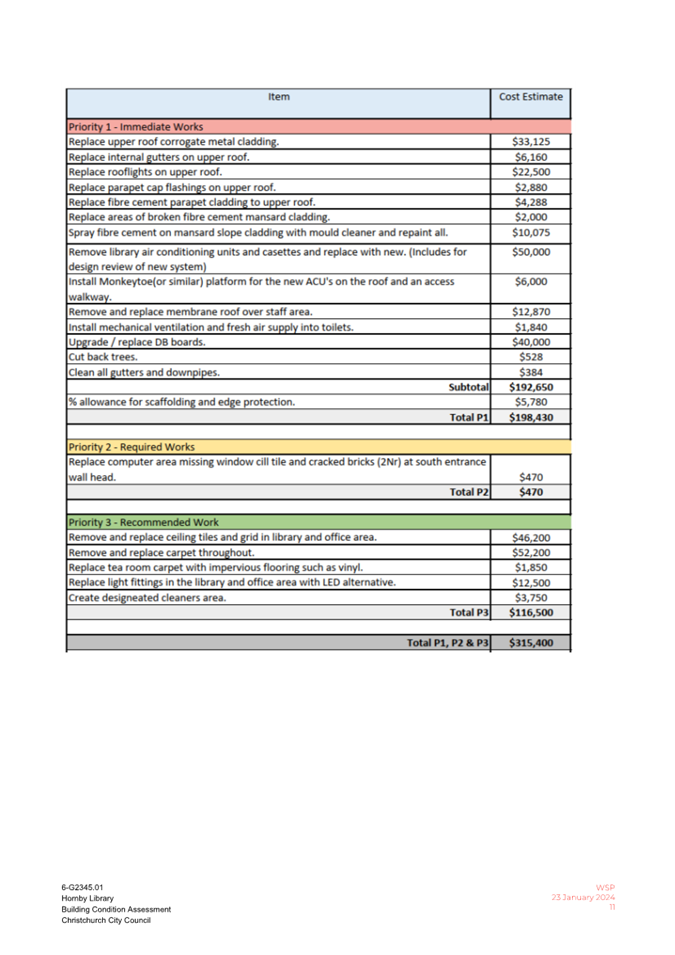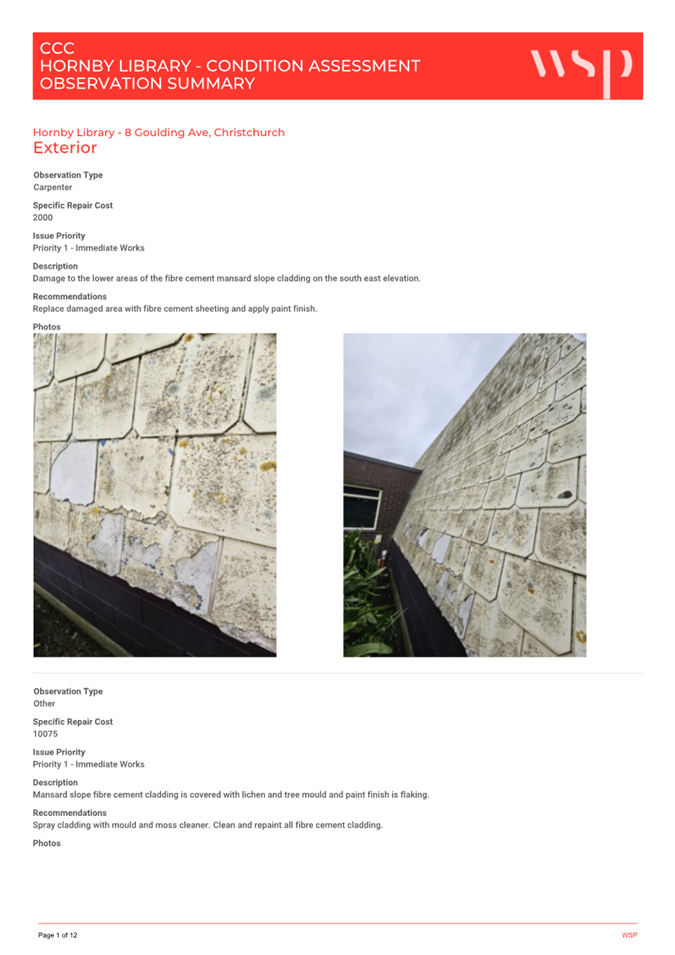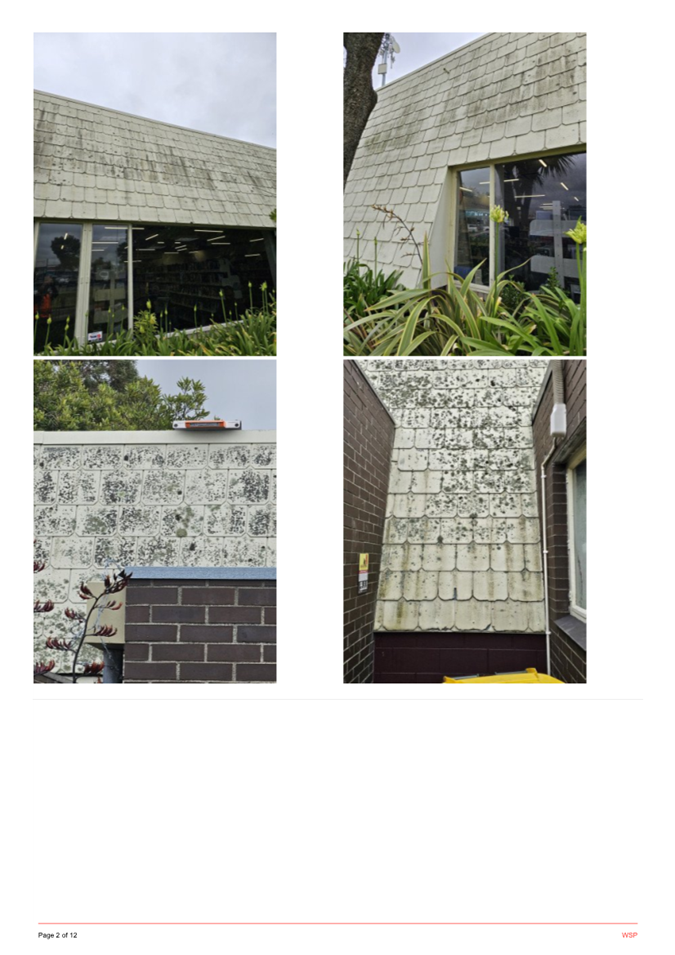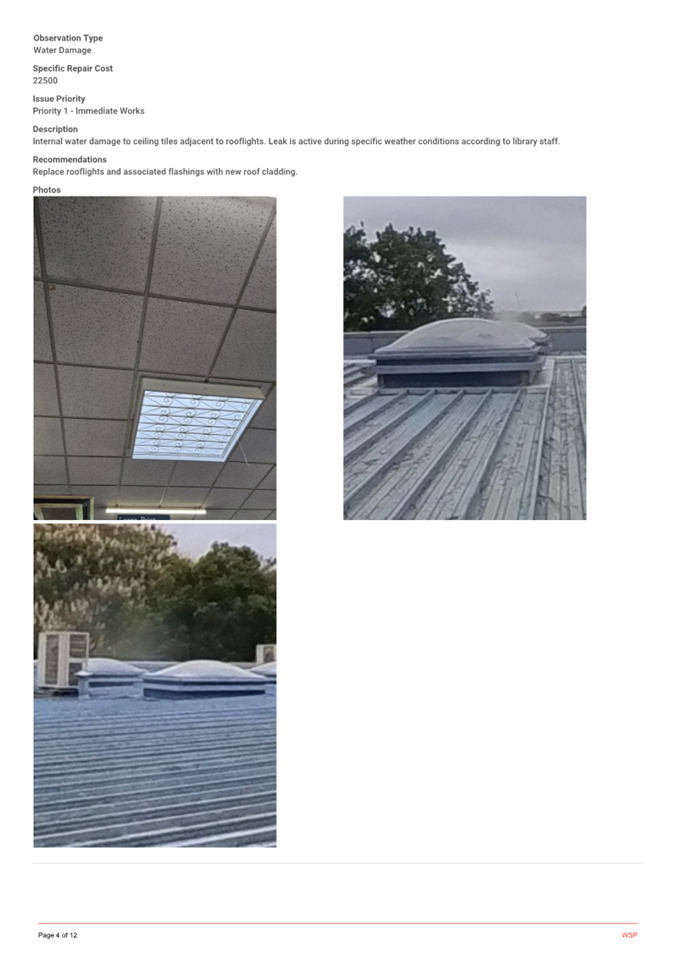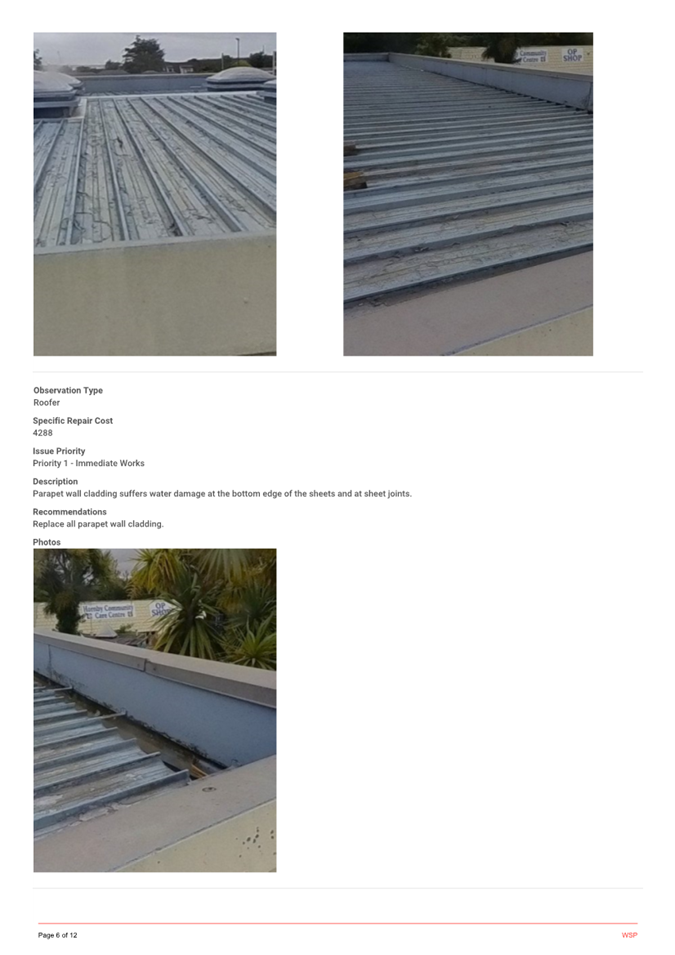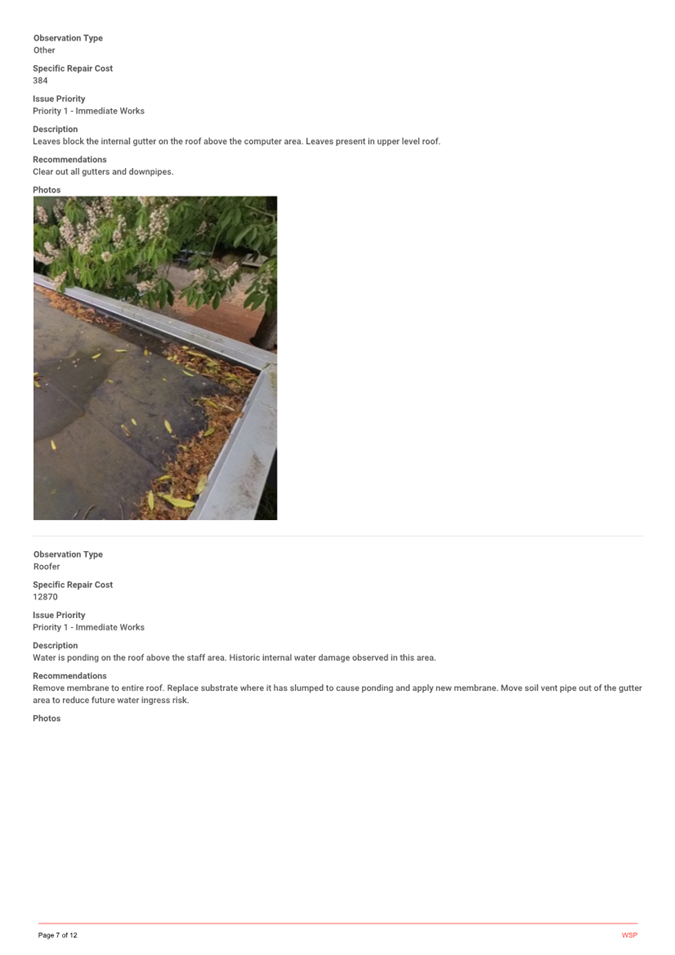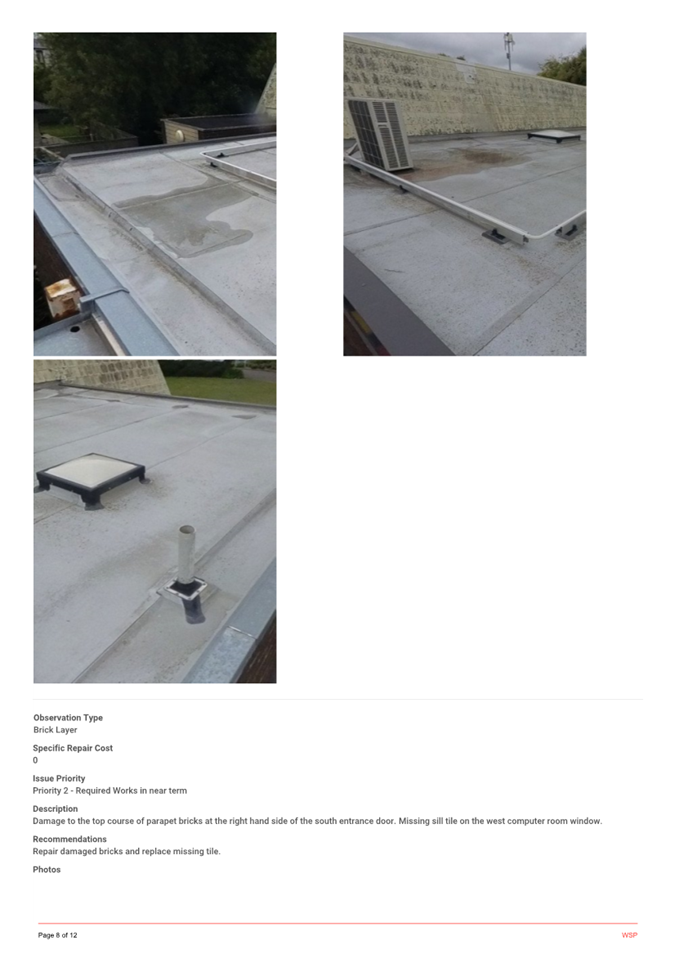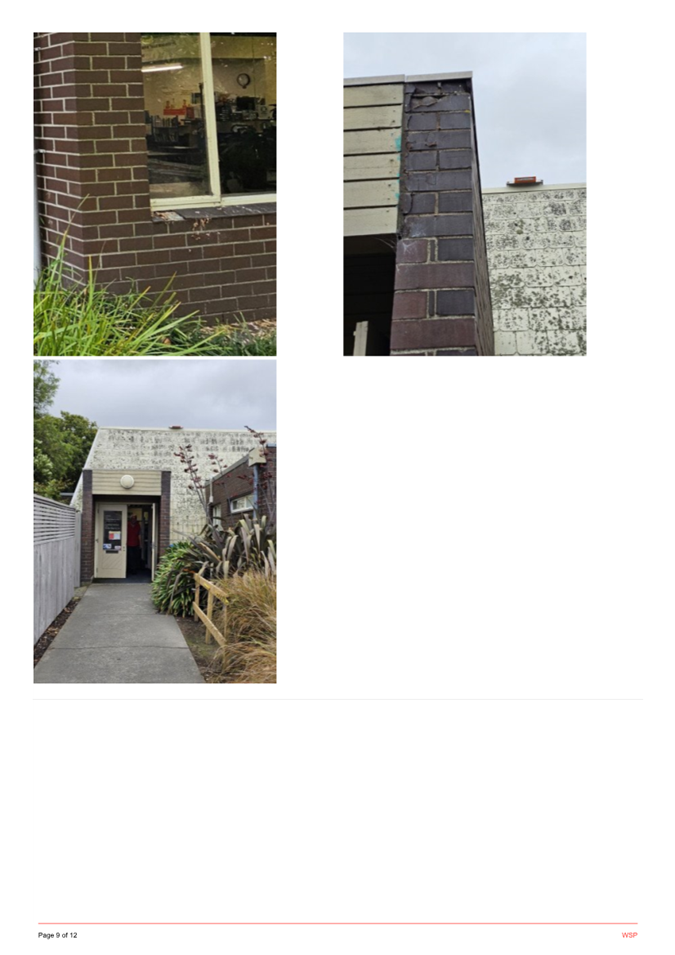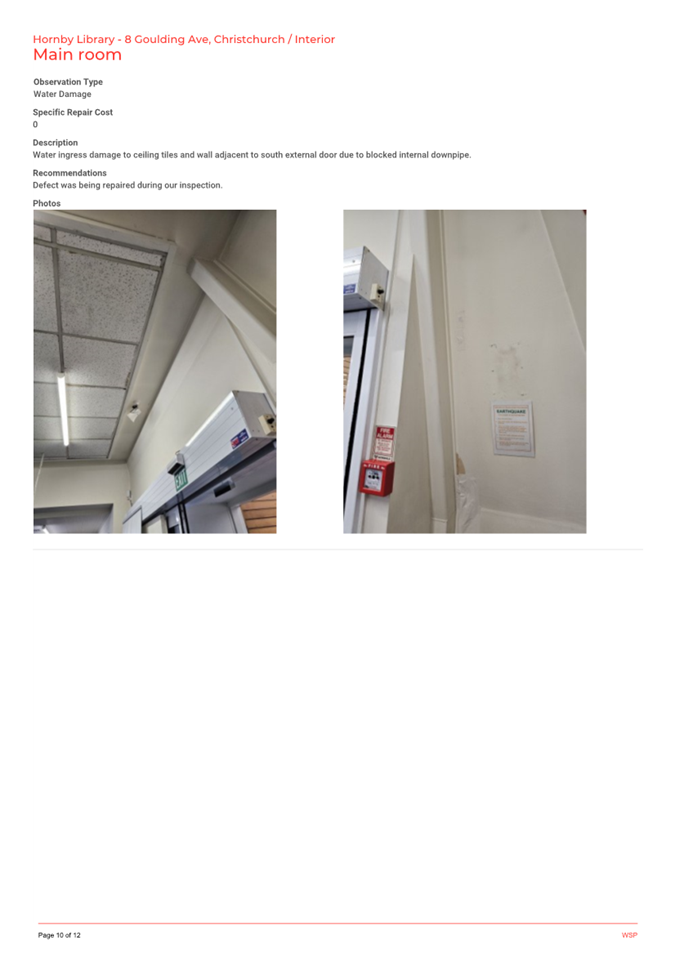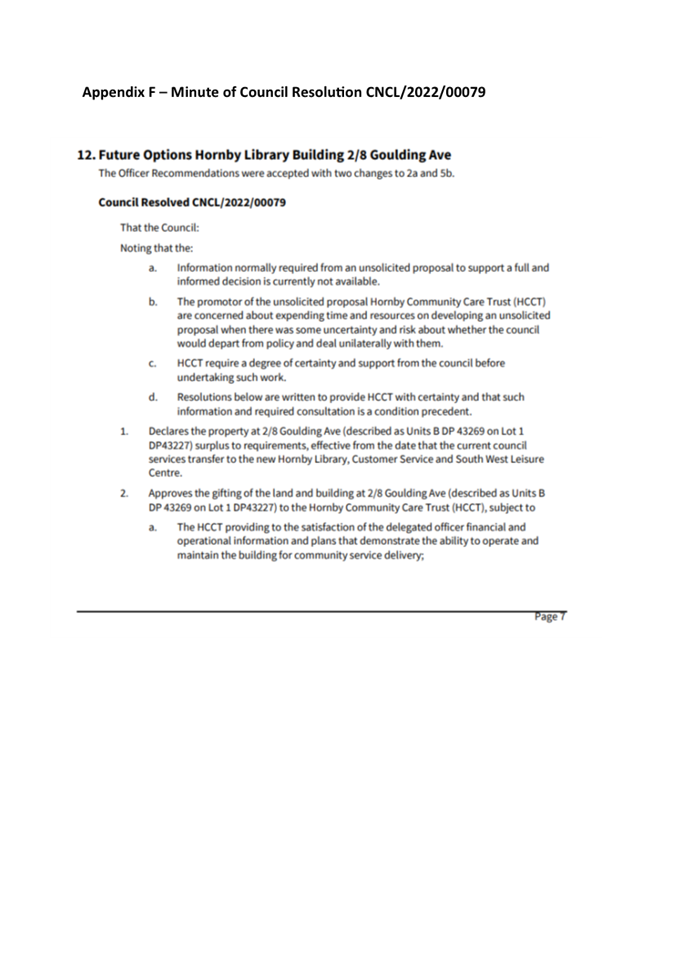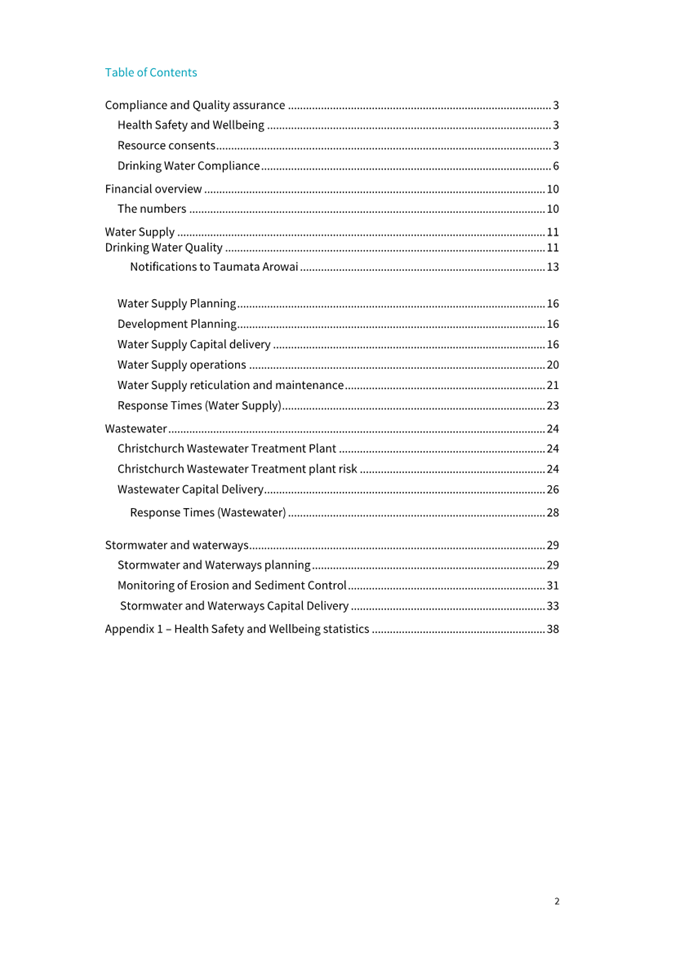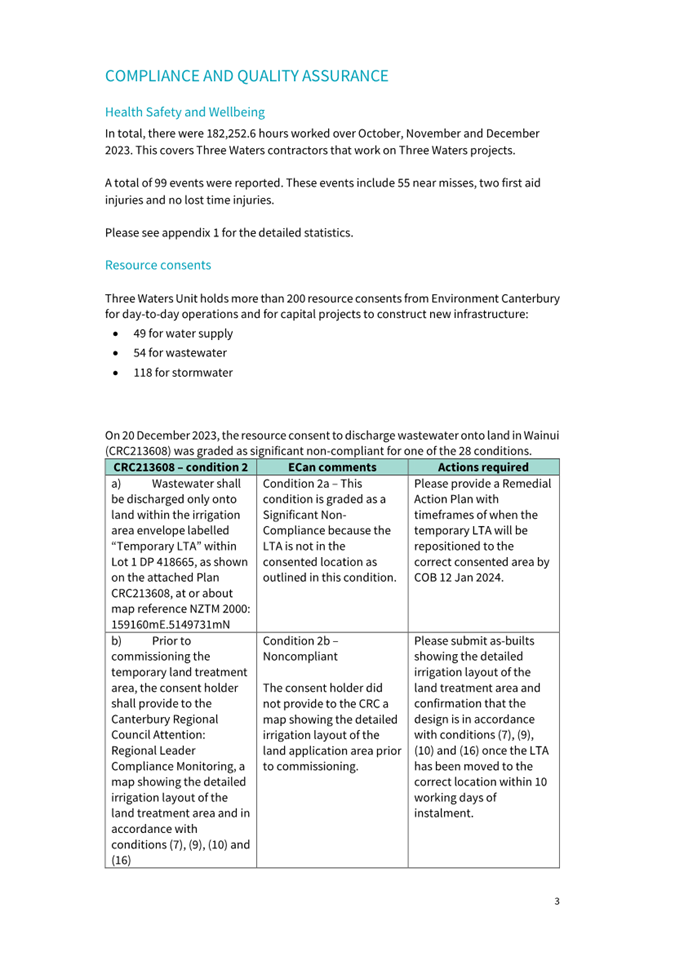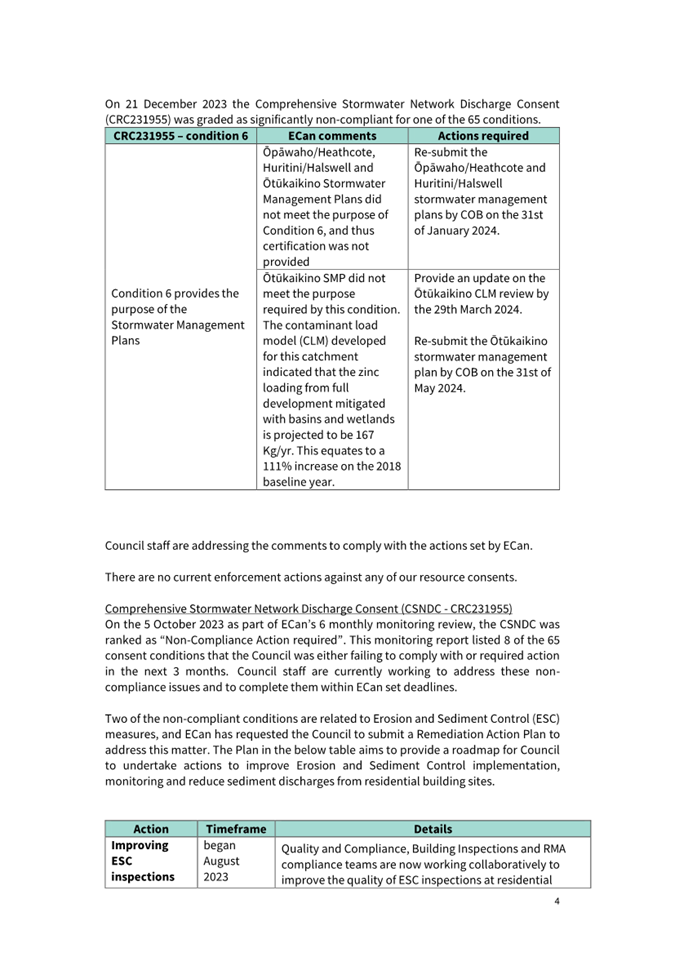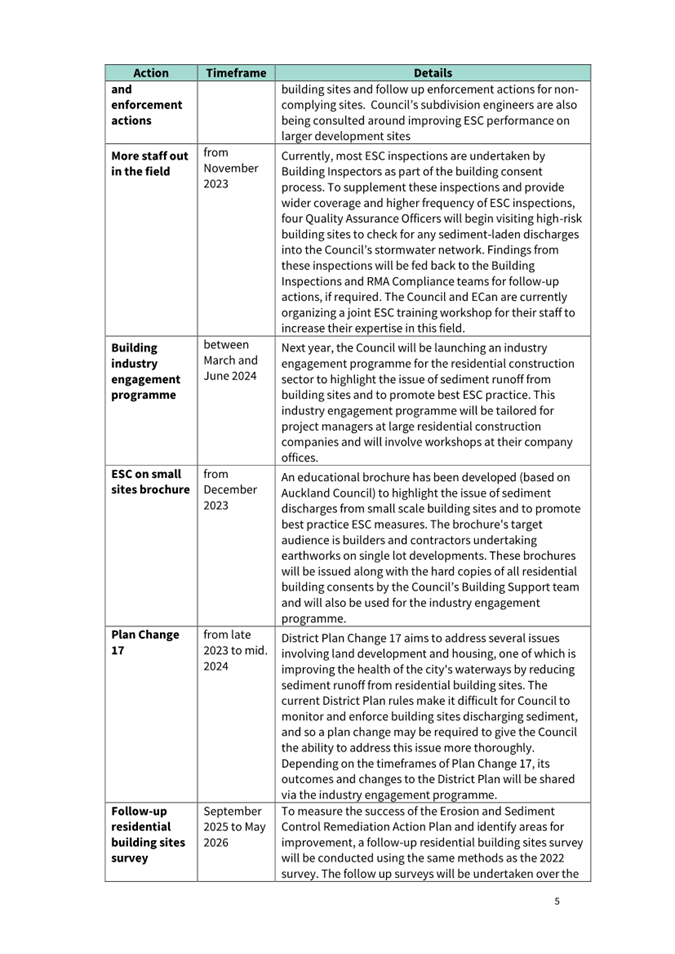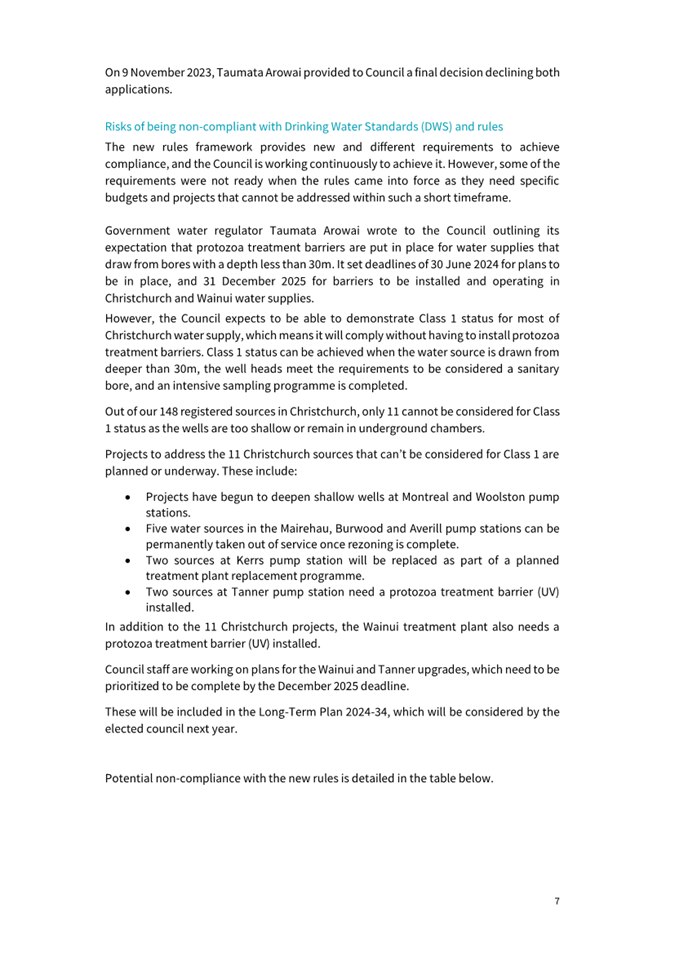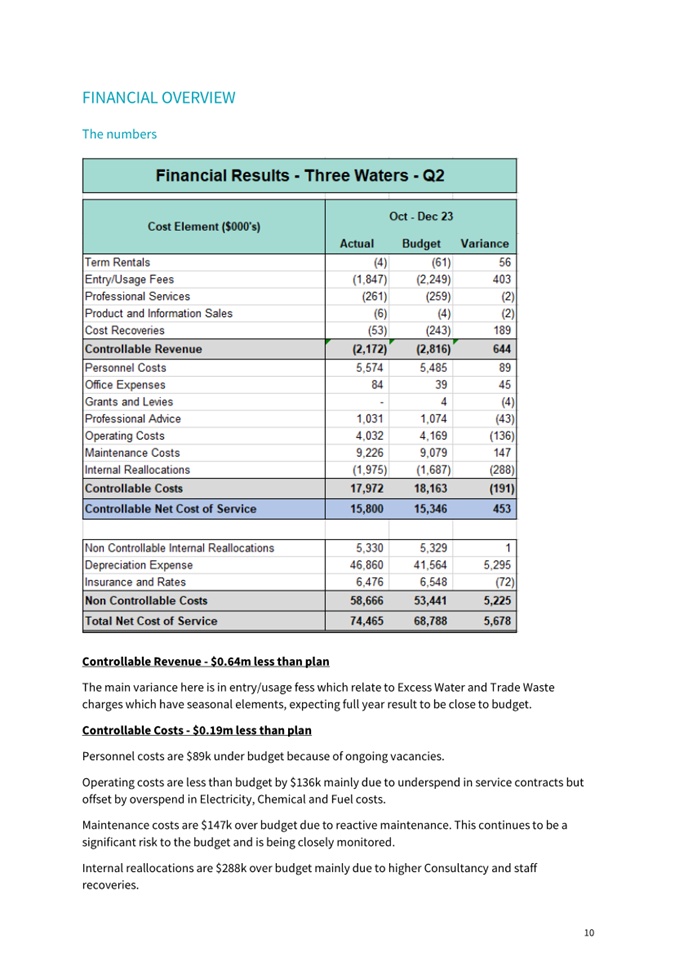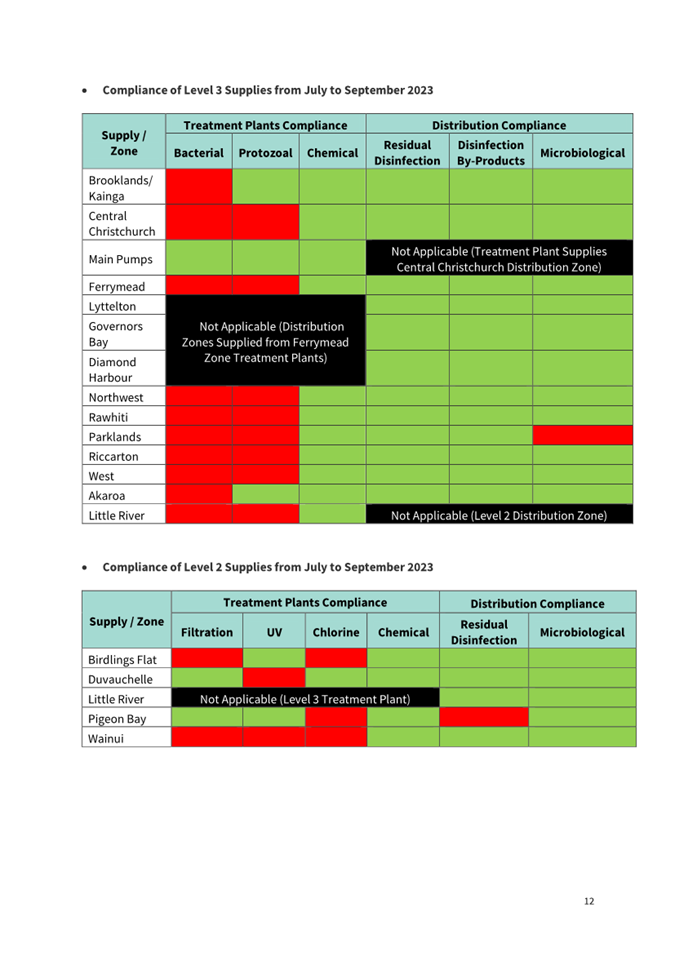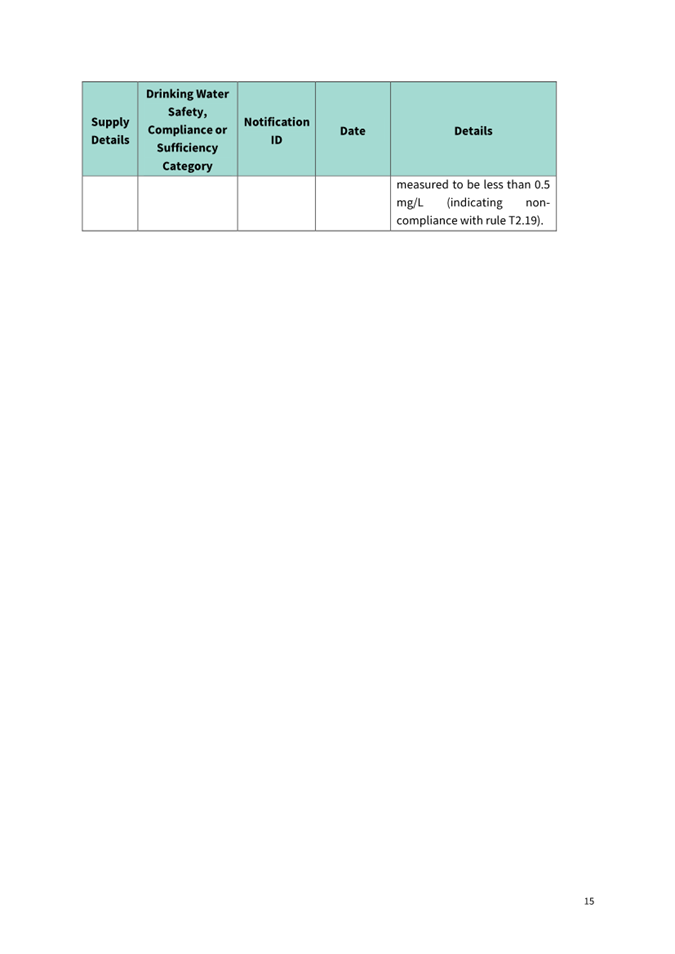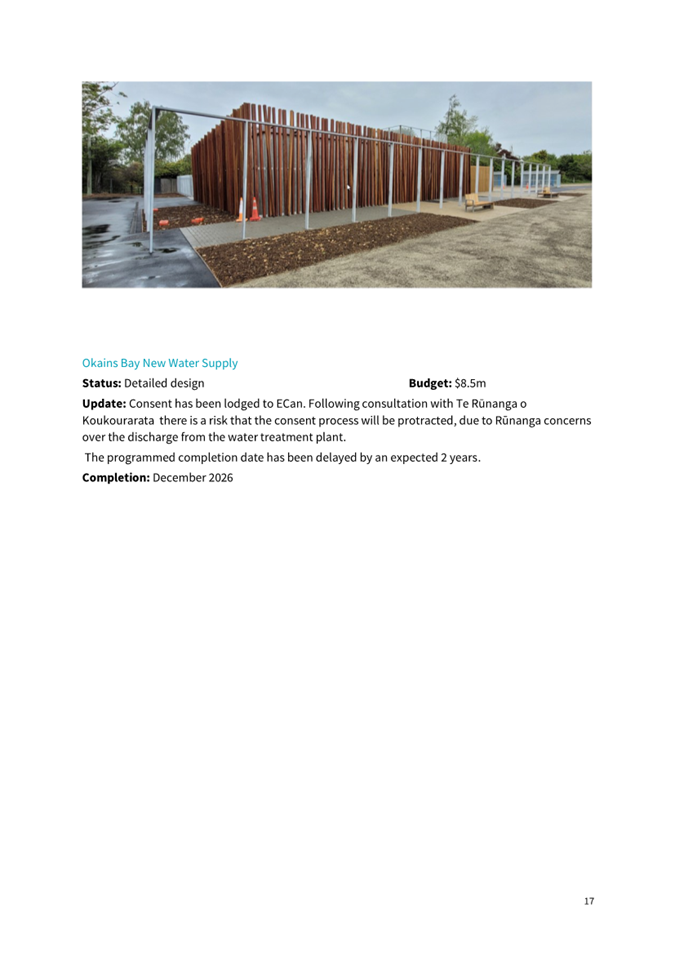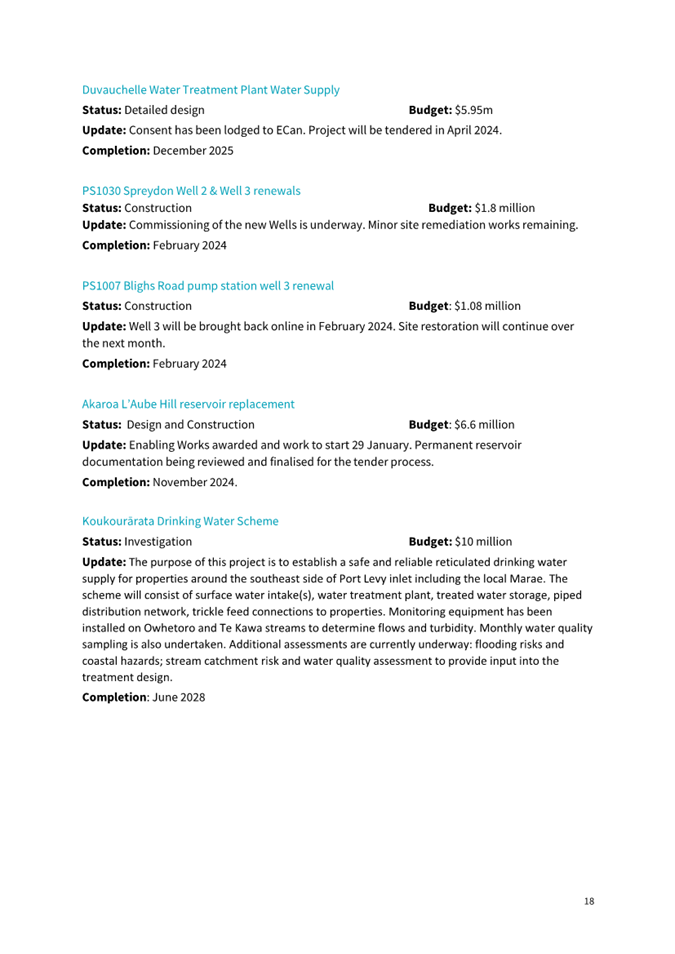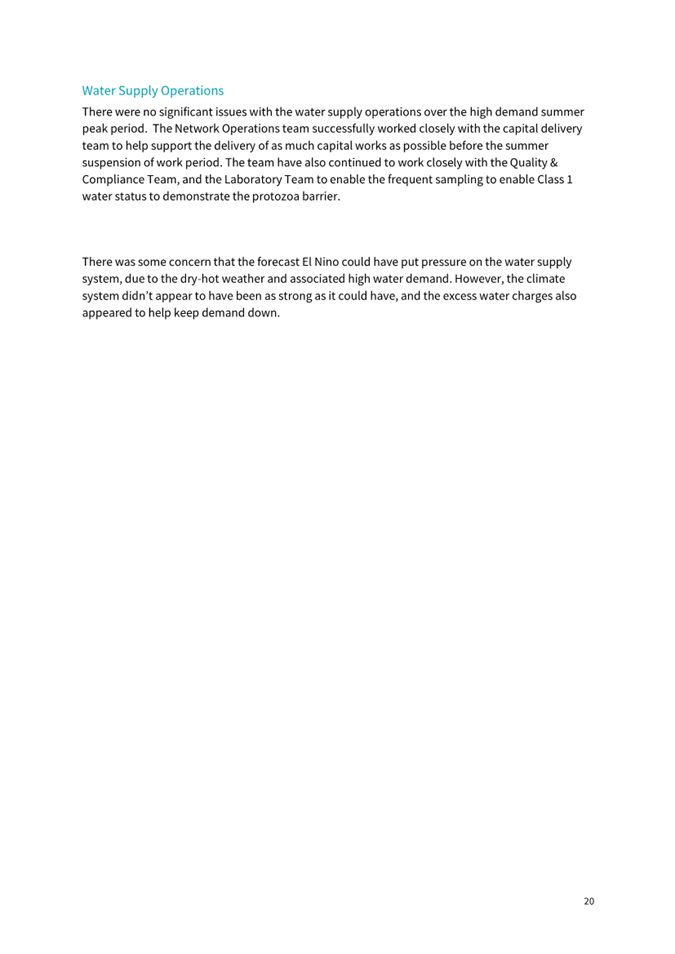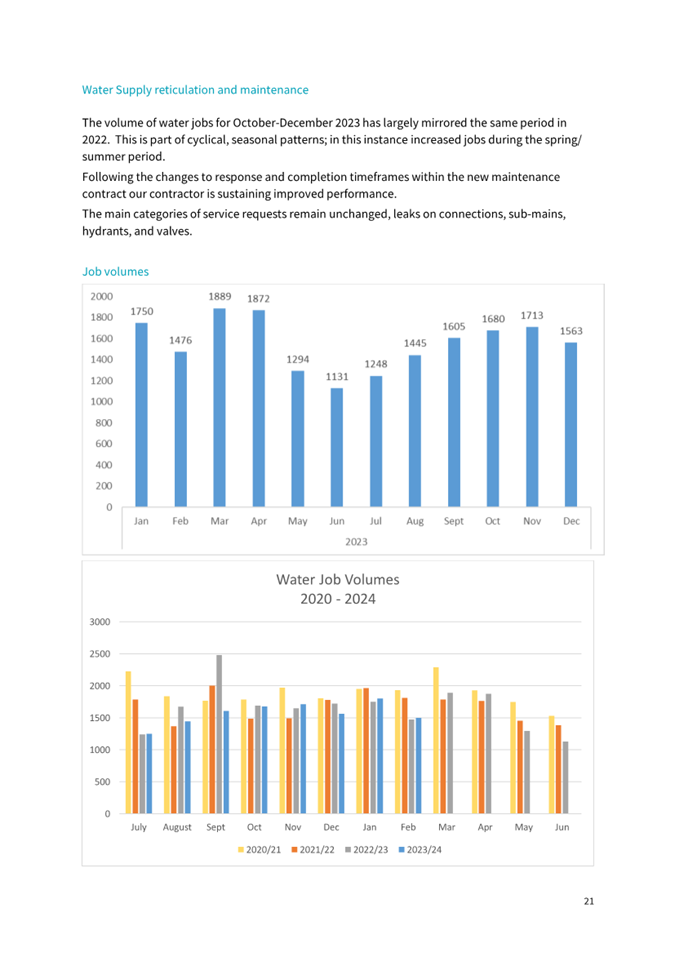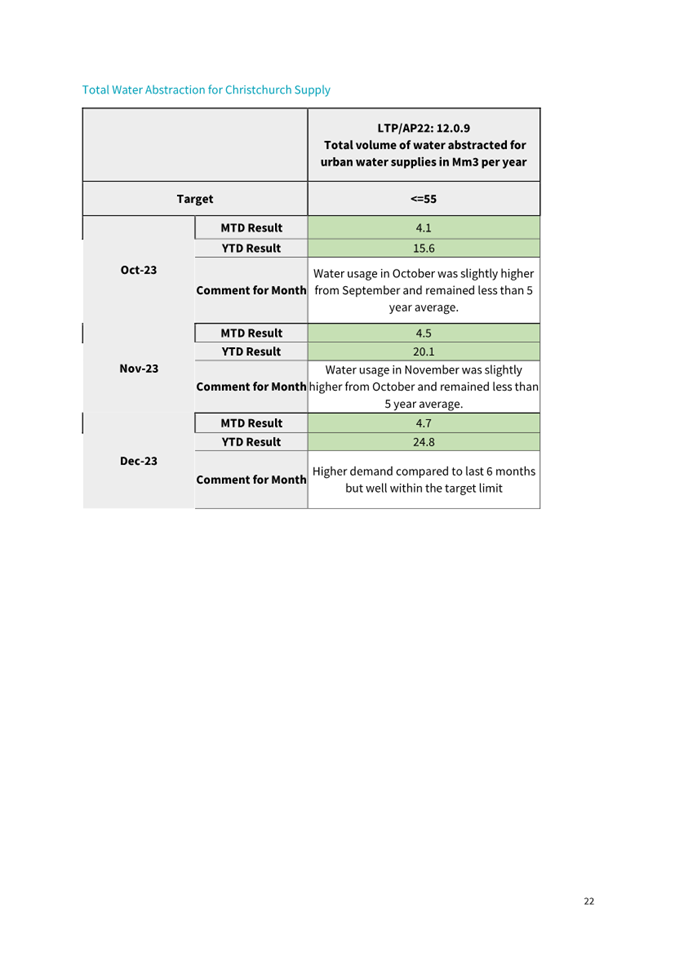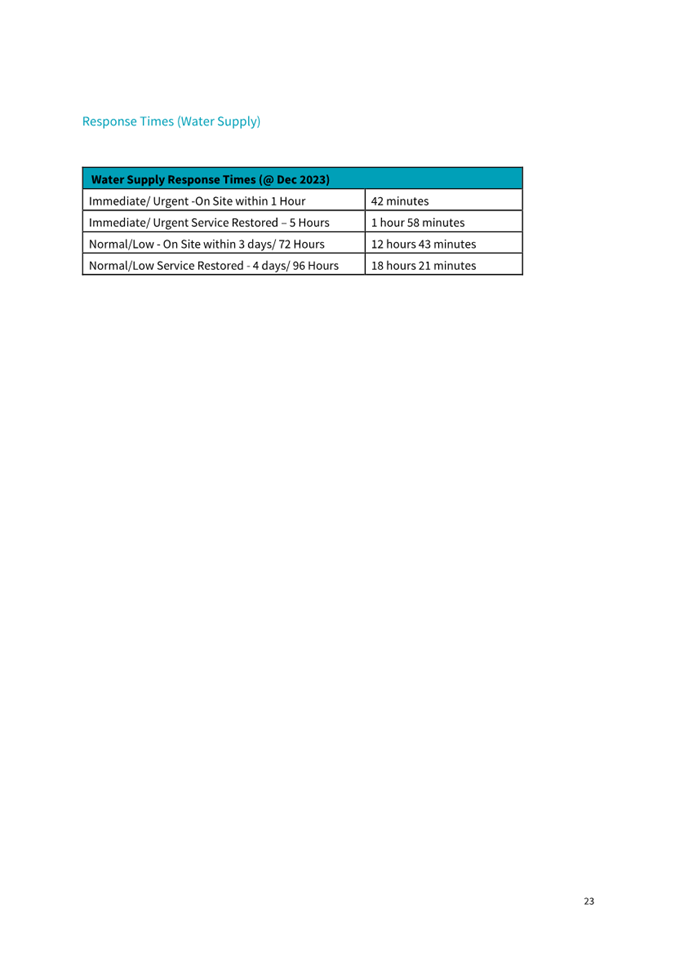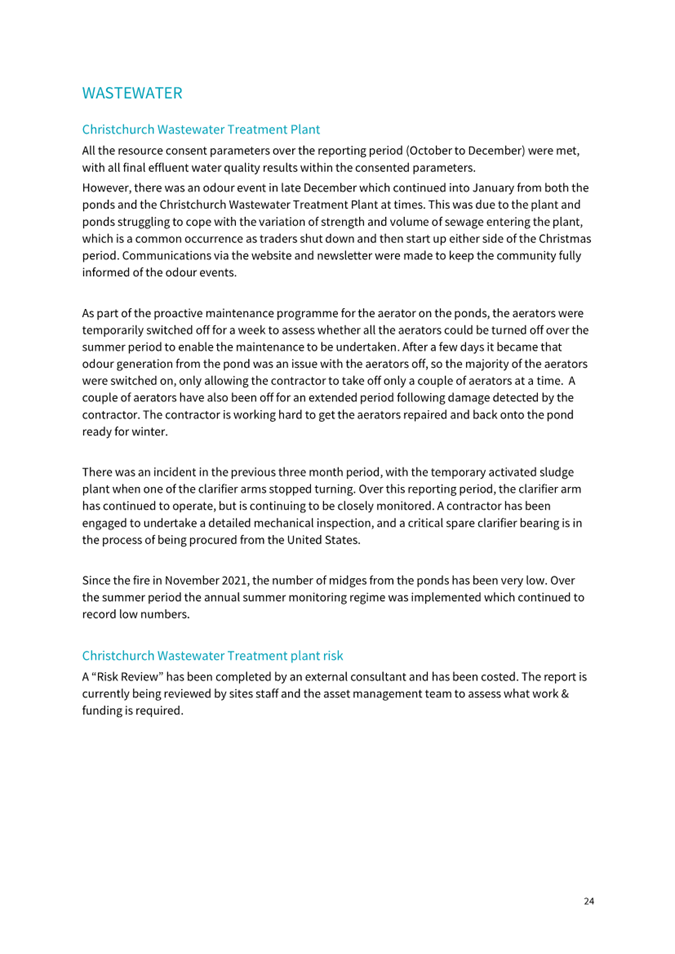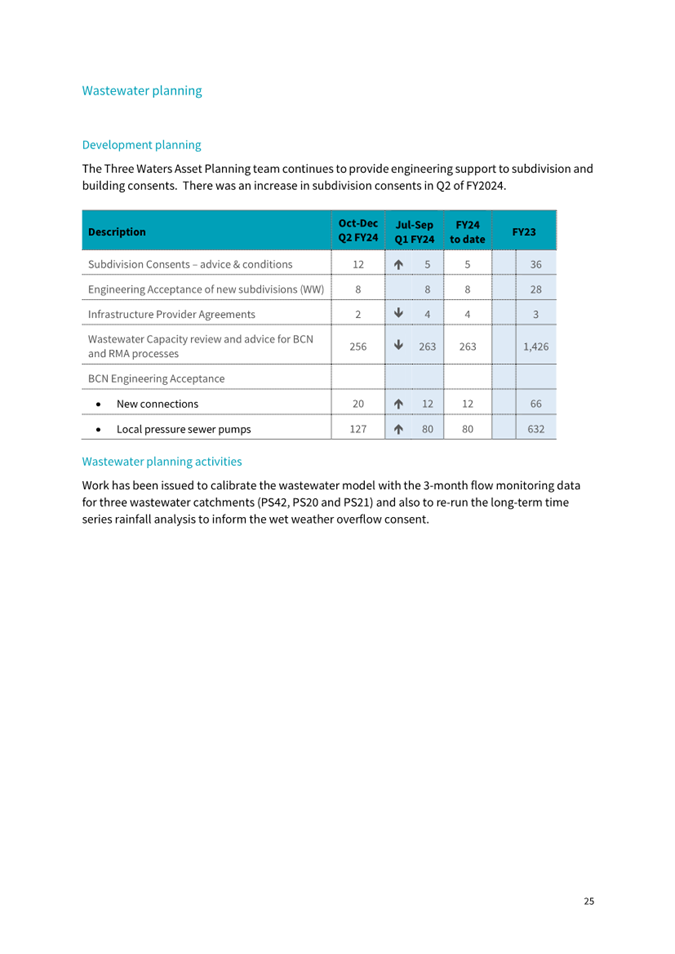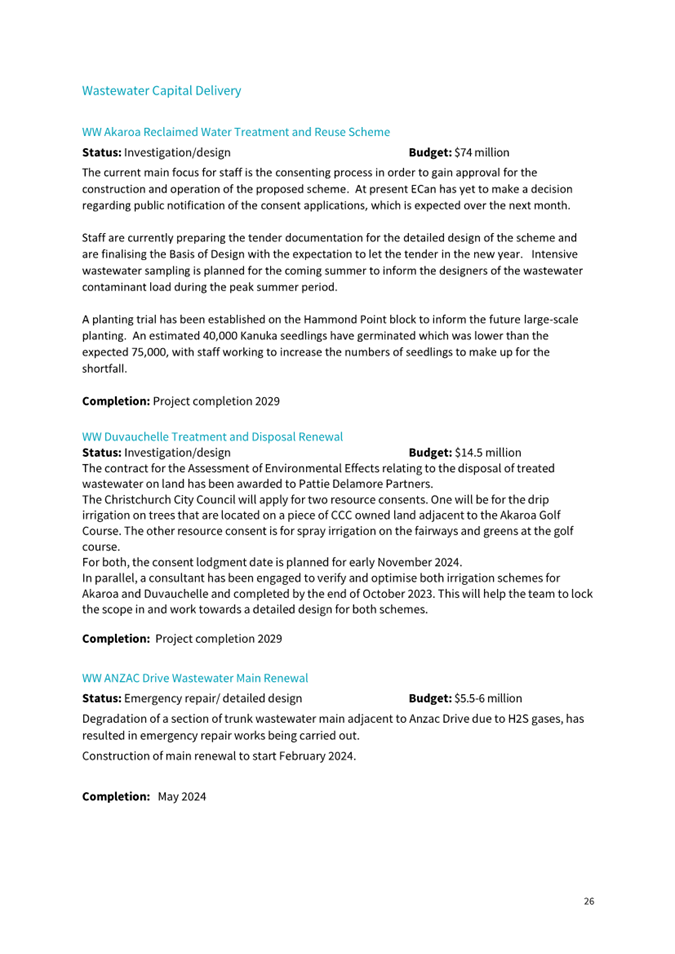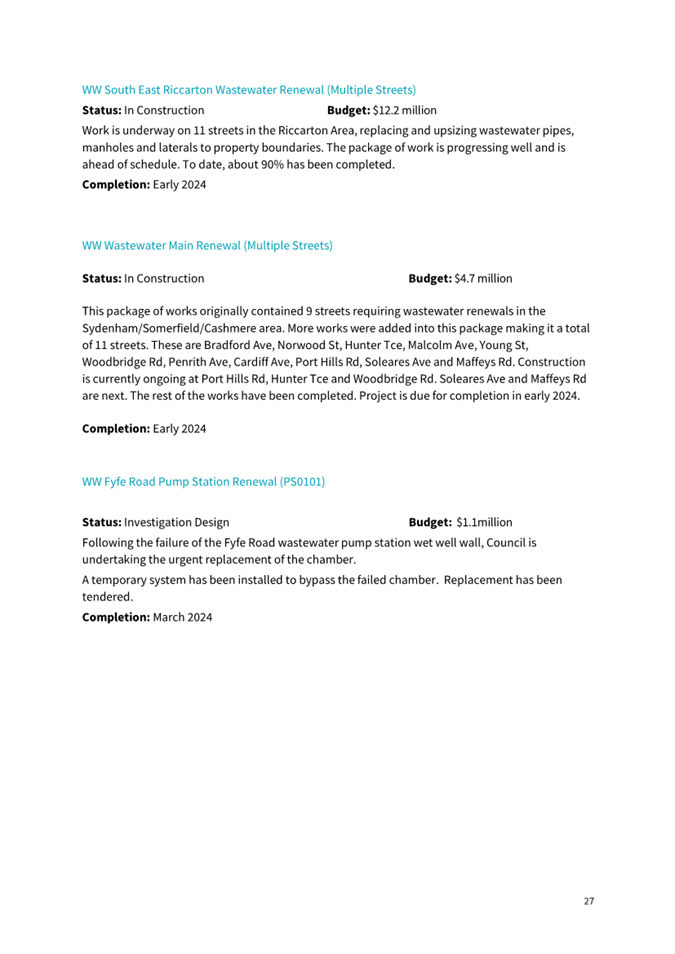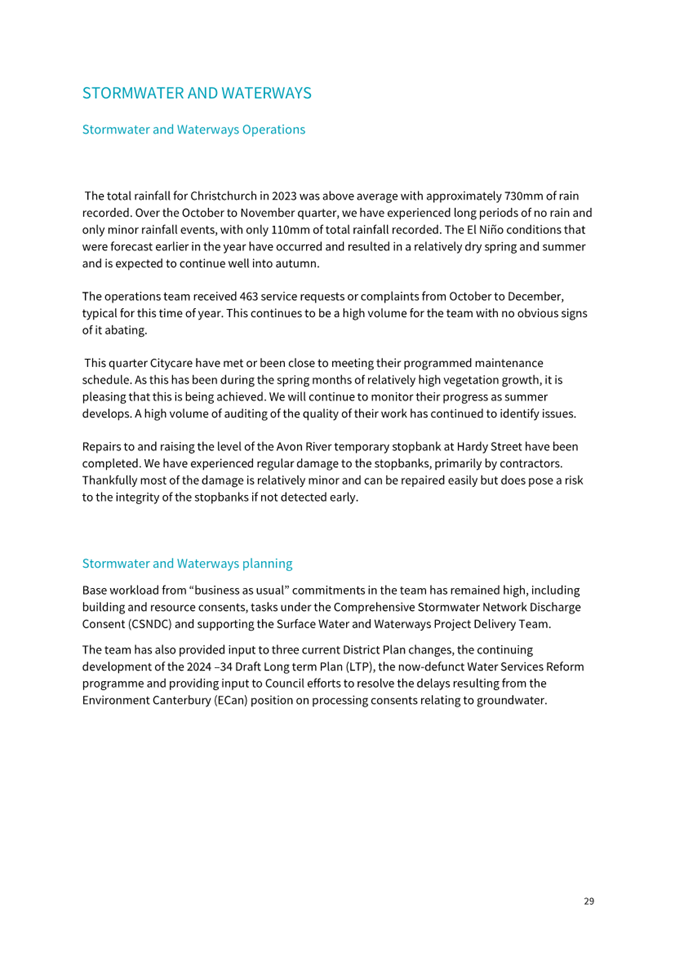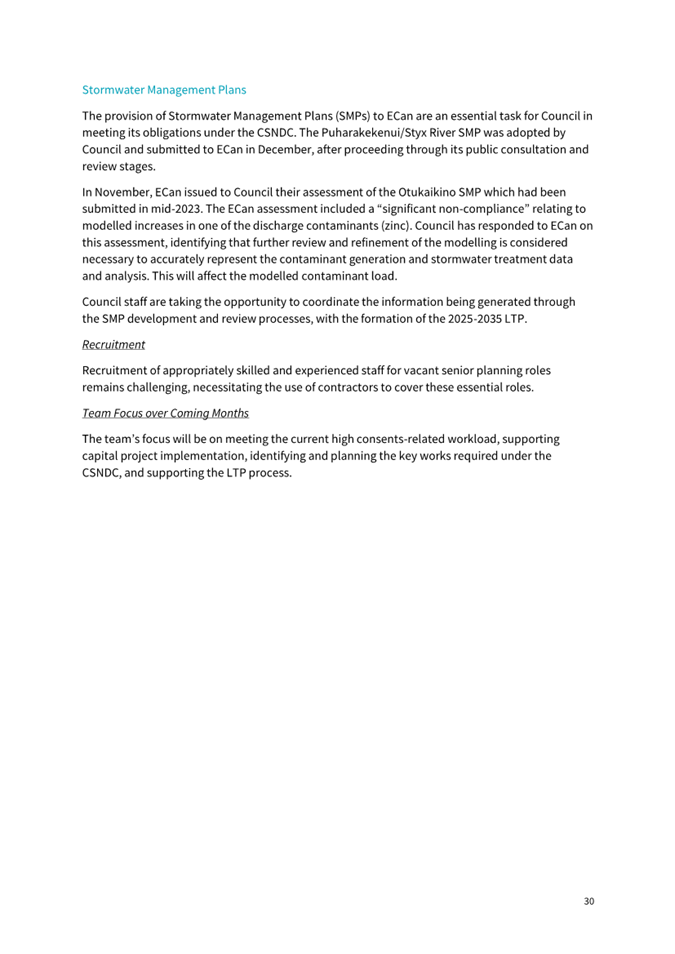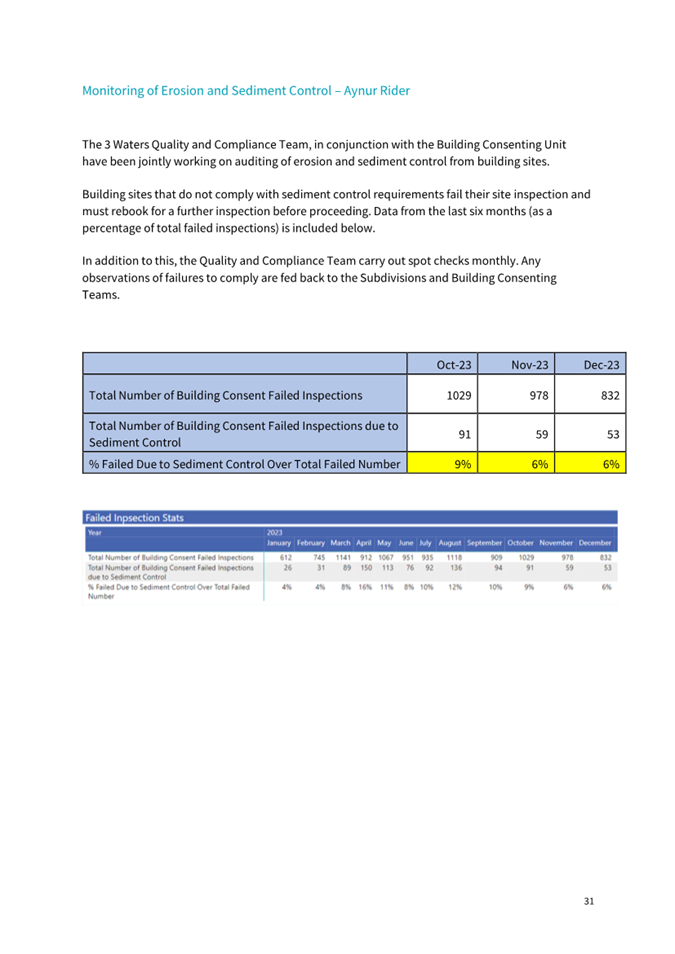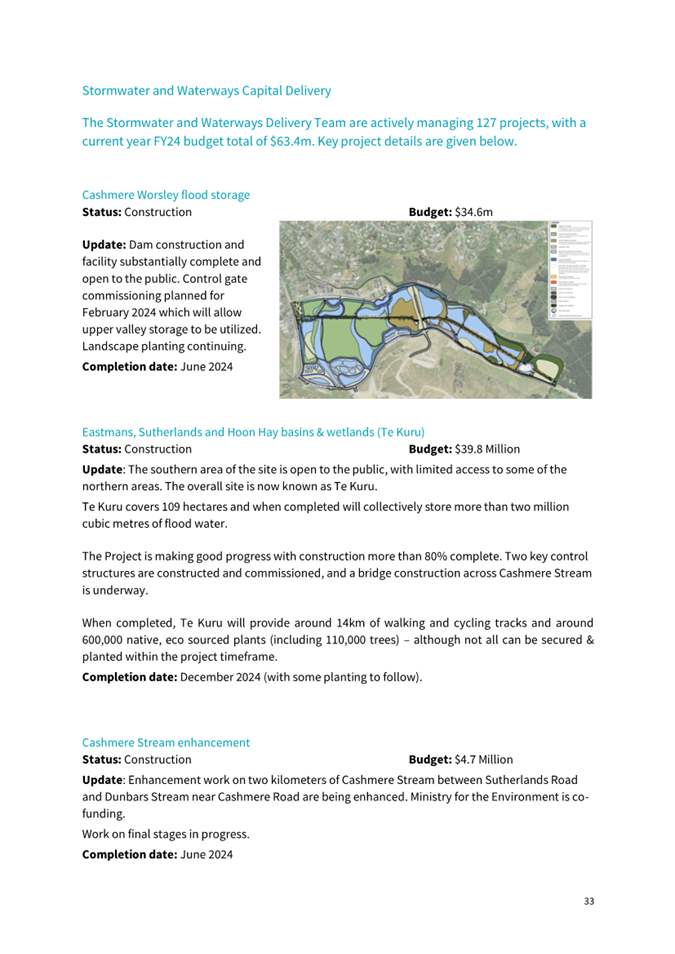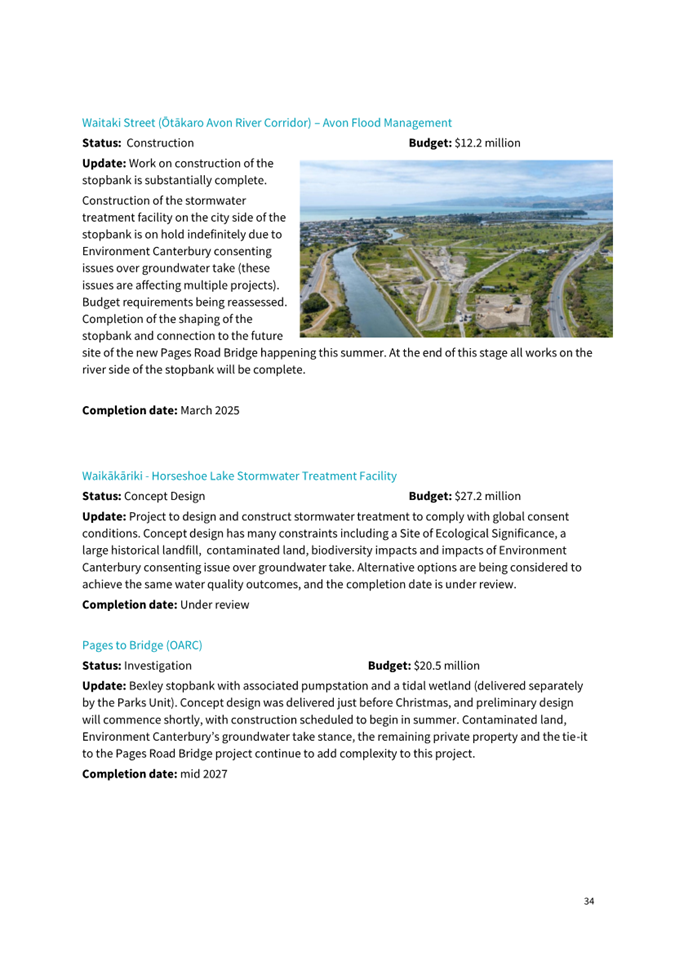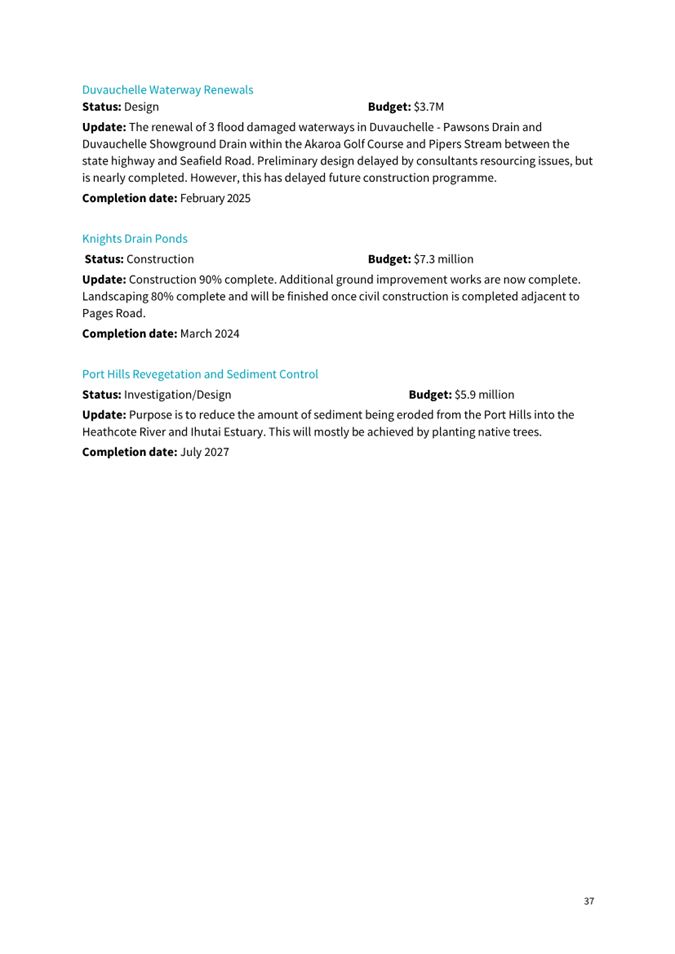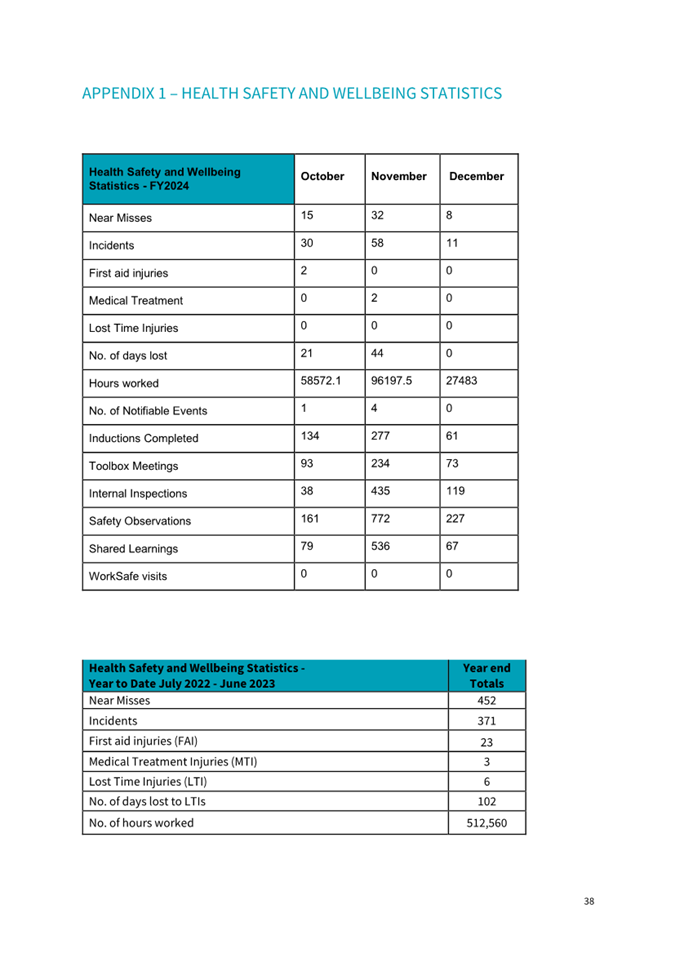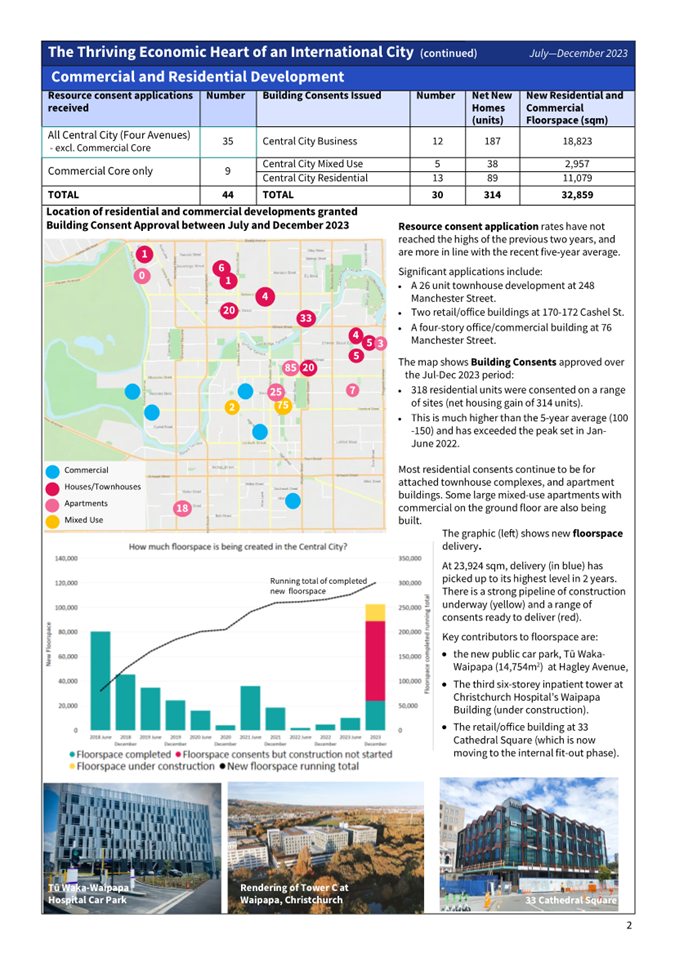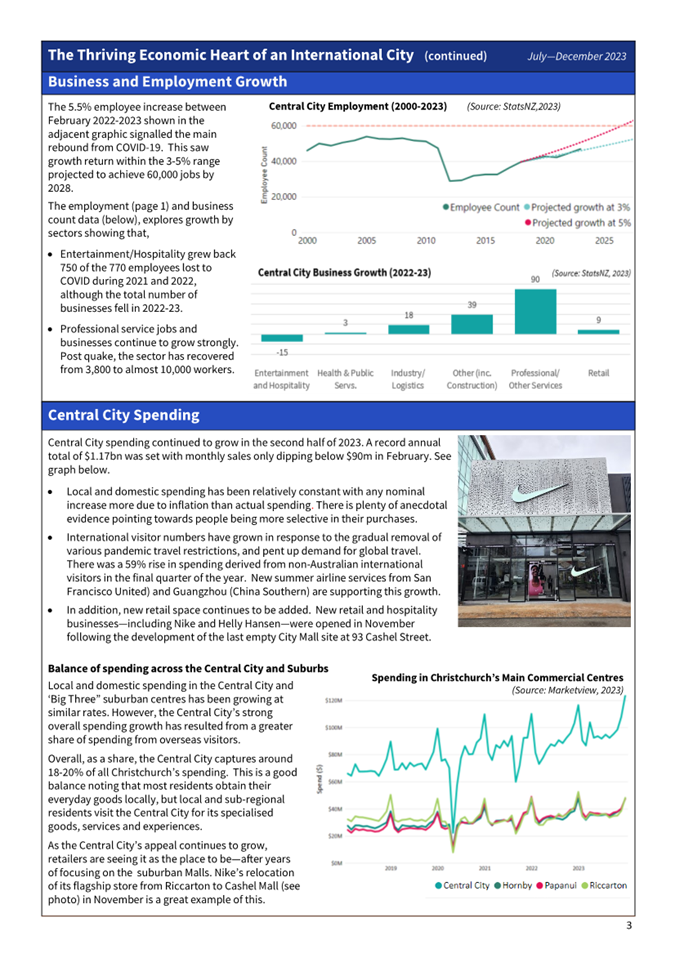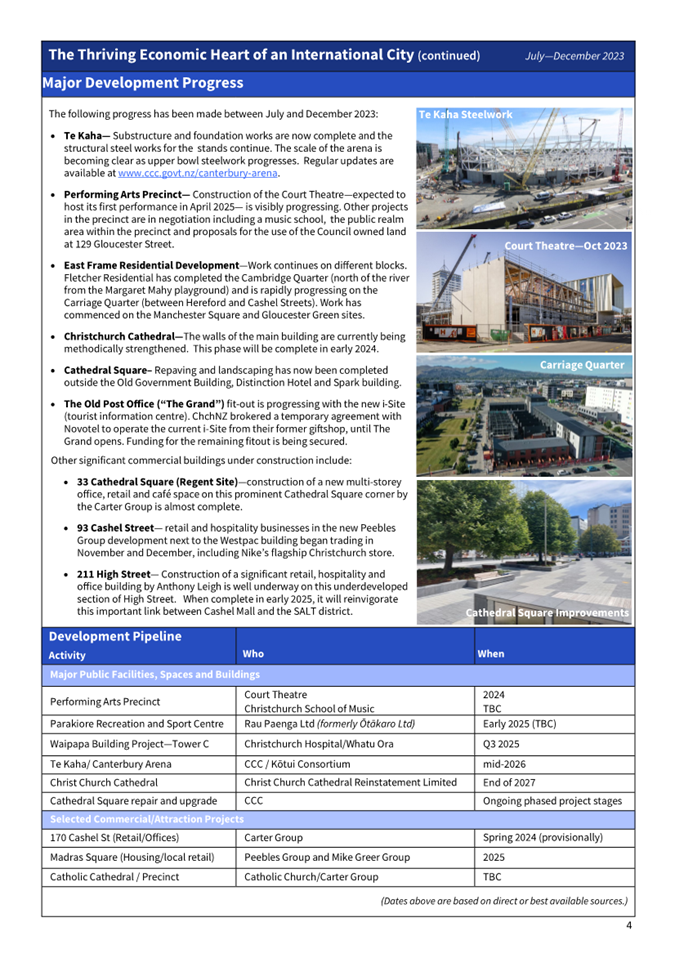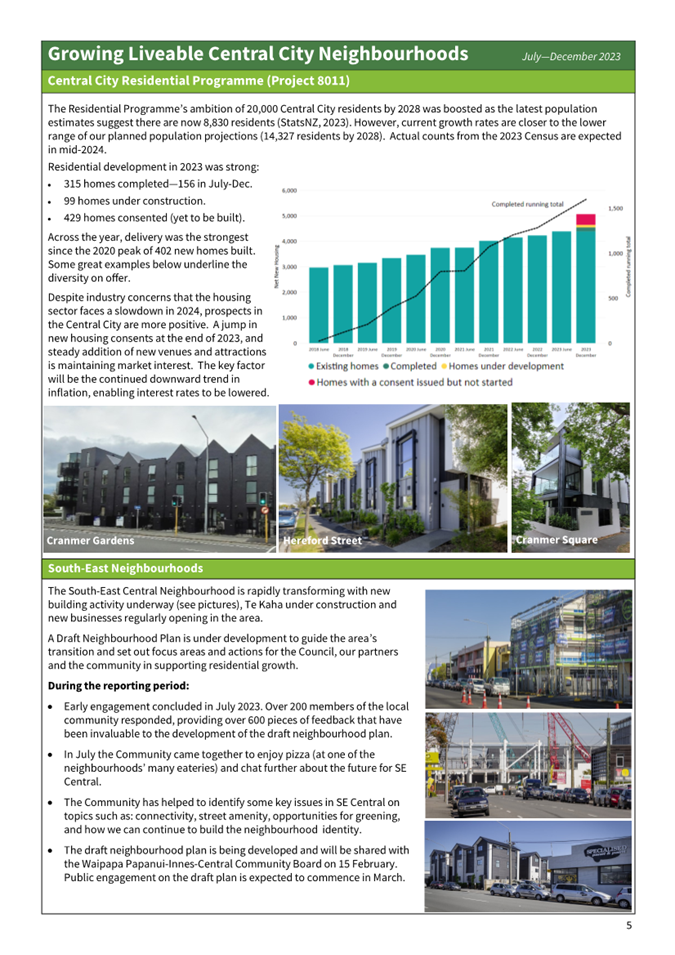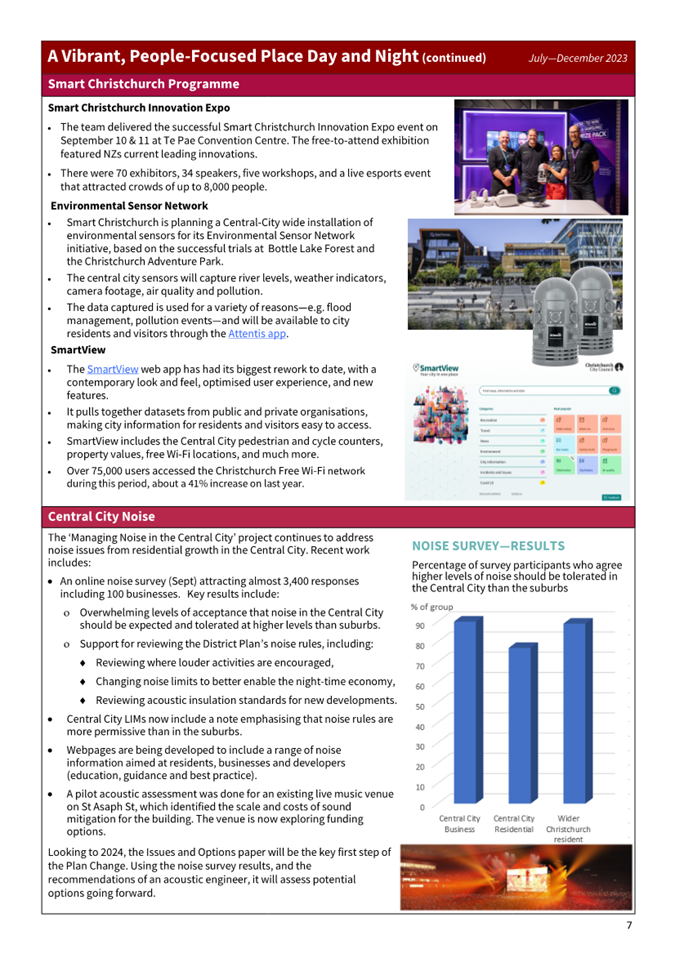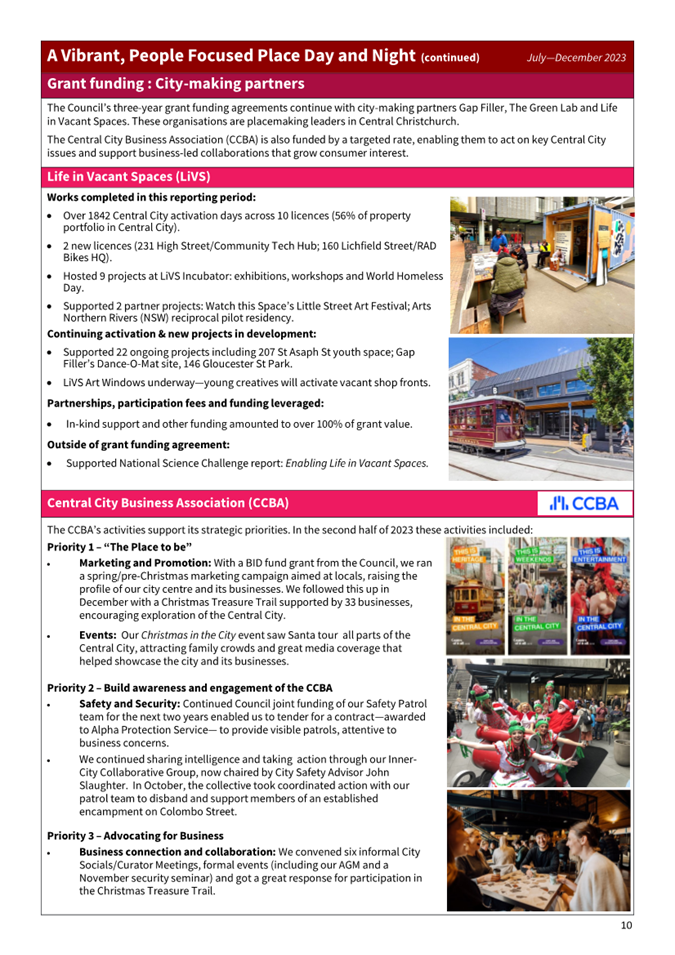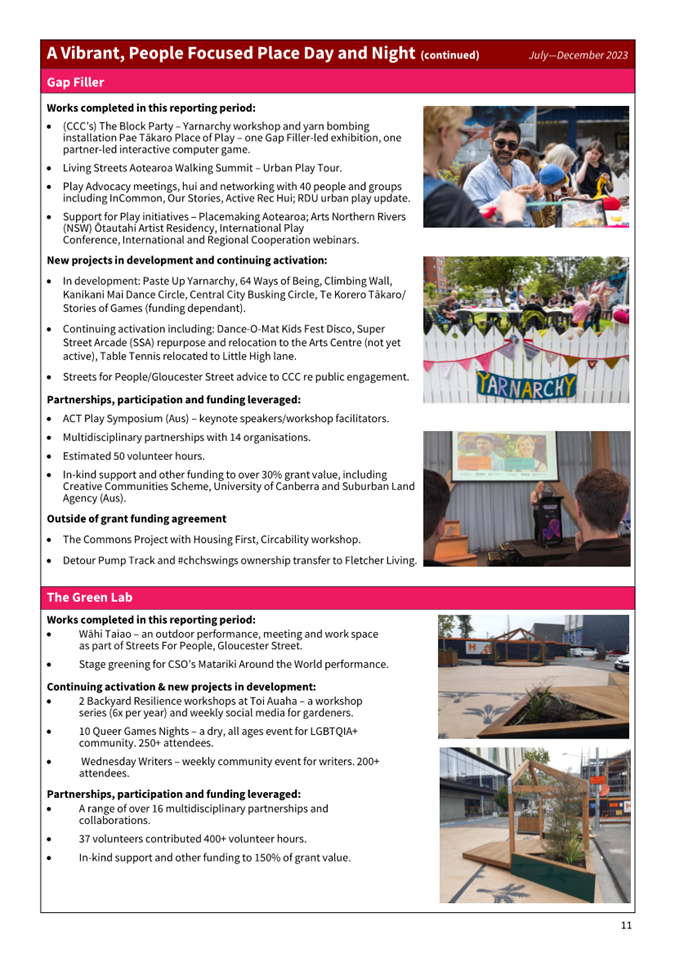
Christchurch City Council
Agenda
Notice of Meeting:
An ordinary meeting of the Christchurch
City Council will be held on:
Date: Wednesday 6 March 2024
Time: 9.30 am
Venue: Council Chambers, Civic Offices,
53 Hereford Street, Christchurch
Membership
|
Chairperson
Deputy Chairperson
Members
|
Mayor Phil Mauger
Deputy Mayor Pauline Cotter
Councillor Kelly Barber
Councillor Melanie Coker
Councillor Celeste Donovan
Councillor Tyrone Fields
Councillor James Gough
Councillor Tyla Harrison-Hunt
Councillor Victoria Henstock
Councillor Yani Johanson
Councillor Aaron Keown
Councillor Sam MacDonald
Councillor Jake McLellan
Councillor Andrei Moore
Councillor Mark Peters
Councillor Tim Scandrett
Councillor Sara Templeton
|
29 February 2024
|
|
|
Principal Advisor
Mary Richardson
Interim Chief Executive
Tel: 941 8999
|
|
Samantha Kelly
Team Leader Hearings & Committee Support
941 6227
Samantha.Kelly@ccc.govt.nz
www.ccc.govt.nz

|
Council
06 March 2024
|

|

|
Council
06 March 2024
|

|
TABLE OF CONTENTS NGĀ IHIRANGI
Karakia Tīmatanga................................................................................................... 5
1. Apologies Ngā Whakapāha................................................................................. 5
2. Declarations of Interest Ngā Whakapuaki Aronga.................................................. 5
3. Public
Participation Te Huinga
Tūmatanui............................................................ 5
3.1 Public Forum Te Huinga Whānui.......................................................................................... 5
3.2 Deputations by
Appointment Ngā Huinga Whakaritenga...................................................... 5
4. Presentation
of Petitions Ngā
Pākikitanga............................................................ 5
Council
5. Council
Minutes - 7 February 2024....................................................................... 7
6. Council
Minutes - 21 February 2024.................................................................... 15
Community Board Monthly
Reports
7. Monthly
Report from the Community Boards - February 2024................................ 25
Community Board Part A
Reports
8. Travis/Bower/Rookwood
Intersection Safety Improvements................................. 91
9. Shirley/Marshland/New
Brighton/North Parade Intersection Safety Improvement. 149
10. Waka
Kotahi Roading Improvements 206R Halswell Road (SH75) - Temporary Licence to Occupy
and Purchase of Land.......................................................................... 173
Staff Reports
11. 2023-2024
Residents' Survey Results................................................................ 203
12. Hearing
Panel's report to the Council on the proposed Equity and Inclusion Policy. 569
13. Decision
to adopt the Greater Christchurch Spatial Plan...................................... 621
14. Adoption
of the Greater Christchurch Partnership Joint Housing Action Plan......... 635
15. Consultation
Report - Future Options Hornby Library Building 2/8 Goulding Avenue 675
16. Application
to the 2023/24 Capital Endowment Fund - Hornby Community Care Trust 753
17. Hagley
Park Shelters Demolition...................................................................... 759
18. Three
Waters Activities Report - October, November and December 2023.............. 767
19. Central
City Biannual Report - July to December 2023......................................... 807
20. Resolution
to Exclude the Public...................................................................... 822
Karakia Whakamutunga
Whakataka te
hau ki te uru
Whakataka te
hau ki te tonga
Kia makinakina
ki uta
Kia mataratara
ki tai
E hi ake ana te
atakura
He tio, he
huka, he hau hu
Tihei mauri ora
1. Apologies Ngā Whakapāha
At the close of
the agenda no apologies had been received.
2. Declarations of Interest Ngā
Whakapuaki Aronga
Members are
reminded of the need to be vigilant and to stand aside from decision making
when a conflict arises between their role as an elected representative and any
private or other external interest they might have.
3. Public Participation Te Huinga
Tūmatanui
3.1 Public Forum Te Huinga Whānui
A period of up to 30 minutes is available
for people to speak for up to five minutes on any issue that is not the subject
of a separate hearings process.
|
3.1.1
|
Andrew Hamlin
Andrew Hamlin will speak regarding
whether a bylaw can be passed to regulate cats.
|
|
3.1.2
|
Life in Vacant Spaces Trust
Paul Lonsdale, Trustee and Chair, will
speak on behalf of the Life in Vacant Spaces Trust to provide an update on
the Trust’s work, partnerships, and new projects going forward.
|
3.2 Deputations by Appointment Ngā
Huinga Whakaritenga
Deputations may be heard on a matter or
matters covered by a report on this agenda and approved by the Chairperson.
There were no
deputations by appointment at the time the agenda was prepared.
4. Presentation of Petitions Ngā
Pākikitanga
There were no
Presentation of Petitions at the time the agenda was prepared.
|
Council
06 March 2024
|

|
|
5. Council
Minutes - 7 February 2024
|
|
Reference / Te Tohutoro:
|
24/199046
|
|
Report of / Te Pou Matua:
|
Katie
Matheis, Democratic Services Advisor (Katie.Matheis@ccc.govt.nz)
|
|
Senior Manager / Pouwhakarae:
|
Mary
Richardson, Interim Chief Executive (Mary.Richardson@ccc.govt.nz)
|
1. Purpose of Report Te Pūtake Pūrongo
For the
Council to confirm the minutes from the Council meeting held 7 February 2024.
2. Recommendation
Te Tūtohu Council
That the Council confirm the Minutes from the Council
meeting held 7 February 2024.
Attachments
Ngā
Tāpirihanga
|
No.
|
Title
|
Reference
|
Page
|
|
A⇩
|
Minutes Council - 7
February 2024
|
24/166588
|
8
|
Signatories Ngā Kaiwaitohu
|
Author
|
Katie Matheis
- Democratic Services Advisor
|
|
Council
06 March 2024
|

|
|
6. Council Minutes - 21 February 2024
|
|
Reference / Te Tohutoro:
|
24/288710
|
|
Report of / Te Pou Matua:
|
Katie
Matheis, Democratic Services Advisor (Katie.Matheis@ccc.govt.nz)
|
|
Senior Manager / Pouwhakarae:
|
Mary
Richardson, Interim Chief Executive (Mary.Richardson@ccc.govt.nz)
|
1. Purpose of Report Te Pūtake Pūrongo
For the
Council to confirm the minutes from the Council meeting held 21 February 2024.
2. Recommendation Te Tūtohu Council
That the Council confirm the Minutes from the Council
meeting held 21 February 2024.
Attachments Ngā Tāpirihanga
|
No.
|
Title
|
Reference
|
Page
|
|
A⇩
|
Minutes Council - 21
February 2024
|
24/273023
|
16
|
Signatories Ngā Kaiwaitohu
|
Author
|
Katie Matheis
- Democratic Services Advisor
|
|
Council
06 March 2024
|

|

Christchurch City Council
Minutes
Date: Wednesday 21 February 2024
Time: 9.33 am
Venue: Council Chambers, Civic Offices,
53 Hereford Street, Christchurch
Present
|
Chairperson
Deputy Chairperson
Members
|
Mayor Phil Mauger
Deputy Mayor Pauline Cotter
Councillor Kelly Barber
Councillor Melanie Coker
Councillor Celeste Donovan
Councillor Tyrone Fields
Councillor James Gough
Councillor Tyla Harrison-Hunt
– via audio / visual link
Councillor Victoria Henstock
Councillor Yani Johanson
Councillor Aaron Keown
Councillor Sam MacDonald
Councillor Jake McLellan
Councillor Andrei Moore
Councillor Mark Peters
Councillor Tim Scandrett
Councillor Sara Templeton
|
|
|
|
Principal Advisor
Mary Richardson
Interim Chief Executive
Tel: 941 8999
|
Katie Matheis
Democratic Services Advisor
941 5643
Katie.Matheis@ccc.govt.nz
www.ccc.govt.nz

Karakia Tīmatanga: Given by
all Councillors
The agenda was dealt with in the following
order.
1. Apologies
Ngā Whakapāha
|
Council Decision
There were no apologies received.
|
2. Declarations
of Interest Ngā Whakapuaki Aronga
There were no
declarations of interest recorded.
3. Public
Participation Te Huinga Tūmatanui
3.1 Public Forum Te Huinga
Whānui
|
3.1.1
|
Grant MacKinnon
Grant
MacKinnon spoke to thank the Council and its staff for their work and the
cooperation he’s experienced as a Central City residential developer
over the last 30 years.
|
3.2 Deputations by Appointment Ngā Huinga Whakaritenga
|
3.2.1
|
Canterbury Agricultural and Pastoral
Association
Representatives
of Canterbury Agricultural and Pastoral Association withdrew their request
for a deputation regarding Public Excluded Item 10.
|
4. Presentation
of Petitions Ngā Pākikitanga
There
was no presentation of petitions.
|
11. Resolution to Include Supplementary
Report
|
|
|
Council Resolved CNCL/2024/00009
That the
reports be received and considered at the Council meeting on Wednesday, 21
February 2024.
Open Items
12. Draft
Council Submission: draft Canterbury Regional Land Transport Plan 24-34
13. Mayor's
Monthly Report
Deputy
Mayor/Councillor Henstock Carried
|
Councillor Donovan left the meeting at 9.51am and returned at 9.55am
during consideration of Item 13.
|
13. Mayor's Monthly Report
|
|
|
Council Resolved CNCL/2024/00010
The Mayor’s Recommendations
accepted without change
That the Council:
1. Acknowledge the impacts of the 2024 Port Hills Fire on the
affected residents and note that the Mayor’s Welfare Fund was immediately
stood-up as the mechanism to receive financial donations to support affected
people and volunteers.
2. Thank Fire & Emergency New Zealand (FENZ), NZ Police and all
the responding agencies, including the Christchurch City Council staff for
their efforts in responding to the fire.
3. Note the Response Transition Report, informing the transition from
response into recovery, was updated on 20 February 2024.
4. Note a Recovery Plan is under development collaboratively with the
Council, Environment Canterbury, the Selwyn District Council and
others.
5. Note that the Mayor has requested that staff incorporate, in the
Recovery Plan, a relief funding mechanism for any impacted households that
receive an excess water use charge as a result of their efforts during or
immediately after the fires.
Mayor/Councillor
Scandrett Carried
|
Councillors Gough and MacDonald left the
meeting at 10.09am and returned at 10.11am during consideration of Item 5.
|
5. Response
to Notice of Motion - Open Briefings and Workshops
|
|
|
Council Resolved CNCL/2024/00011
Officer Recommendations accepted without
change
That the
Council:
1. Agrees that informal meetings with the
Council and Community Boards linked to a proposed decision are held in public
by default, including but not limited to:
a. Briefings
b. Workshops
c. Seminars
2. Notes that informal meetings for
Community Boards will be held in public by default after a full meeting round
and no later than 1 April 2024.
3. Notes that pre-meeting informals remain
as non-public session as they are for administrative or logistic purposes for
the meeting they refer to.
4. Notes that agenda setting meetings remain
as non-public sessions as they are for administrative or logistic purposes.
5. Notes that there is a process that
reviews public excluded briefings and releases information when appropriate.
6. Notes that the process will be reviewed
in six months.
Mayor/Councillor
Scandrett Carried
|
|
6. Committee
Structure Review
|
|
|
Council Officers Megan Pearce and Matthew
Boult joined the table to present Item 6 and answer questions from elected
members. The Officer Recommendations were Moved by Councillor MacDonald and
Seconded by Deputy Mayor Cotter.
During debate, Councillor Templeton put
forward an amendment to Recommendation 3 (refer italicised text below), which
was incorporated into the Motion with the agreement of the Mover and
Seconder.
The meeting then voted on the Motion as
amended which was declared carried.
|
|
|
Officer Recommendations
That the
Council:
1. Agree to retain the current committee structure,
2. Agree to receive six monthly forward work programme reports at
Council,
3. Agree to receive regular, six monthly information update reports
from operational service delivery units,
4. Agree that Committee Chairs will be responsible for updating the
Council on the work of the Committee when the committee minutes are received
by the Council.
|
|
|
Council Resolved CNCL/2024/00012
That the
Council:
1. Agree to retain the current committee structure,
2. Agree to receive six monthly forward work programme reports at
Council,
3. Agree to receive regular, six monthly information update reports
from operational service delivery units, including the forward work
programme for the units,
4. Agree that Committee Chairs will be responsible for updating the
Council on the work of the Committee when the committee minutes are received
by the Council.
Councillor MacDonald/Deputy
Mayor Carried
Councillors
Coker, Donovan, Johanson and Templeton requested that their vote against
Resolution 1 be recorded.
|
The meeting adjourned at 11.15am and
reconvened at 11.34am. Councillor Keown was not present at this time.
Councillor Keown returned at 11.38am during
consideration of Item 7.
The meeting adjourned at 11.57am and
reconvened at 12.00pm during consideration of Item 7.
The Mayor left the meeting at 12.11pm
during consideration of Item 7. Deputy Mayor Cotter assumed the Chair for
consideration of Items 7, 8, 12, 9 and Public Excluded Item 10.
Councillor Scandrett left the meeting at
12.19pm during consideration of Item 7.
Councillor Templeton left the meeting at
12.23pm during consideration of Item 7.
|
7. Better
Off Funding Citywide Safety
|
|
|
Council Officers Gary Watson, John
Filsell, and Michael Healy joined the table to present Item 7 and answer
questions from elected members. The Officer Recommendations were Moved by the
Mayor and Seconded by Deputy Mayor Cotter.
During debate, Councillor Donovan put
forward an amendment to Recommendation 4 (refer italicised text below), which
was Seconded by Councillor Johanson. At the conclusion of debate on the
amended Recommendation 4, the meeting voted by division and the amendment was
declared carried.
The substantive Motion was then debated,
voted on, and declared carried.
|
|
|
Officer Recommendations Moved
and Seconded
That the
Council:
1. Grant the Christchurch City Mission a
total sum of $560,000 over three years to deliver two outreach positions
working across the city to support, and promote housing options for,
Christchurch’s Street community.
2. Grant Youth and Cultural Development a
total sum of $750,000 over three years to deliver a Mobile Youth Work project
to address youth issues city wide and respond to hot spots as they arise.
3. Grant a total sum of $100,000 to provide
three smart poles in priority areas namely New Brighton, Hornby, and Papanui.
4. Set aside a total sum of $200,000 to
coordinate and deliver community safety, development, and cohesion
initiatives across the East of the city.
5. Establish a funding pool using the
remaining funds previously set aside by the Council for City-wide safety
initiatives, a total of $116,000, to allow the Council to deliver future
initiatives responding to issues as they arise.
6. Note the Council’s previous grant
to the Christchurch Central City Business Association of $244,000 to deliver
inner city safety patrols over three years.
7. Delegate authority to the Head of
Community Support and Partnerships to make the necessary arrangements to
implement the Council’s decision.
Mayor/Deputy
Mayor Moved/Seconded
|
|
|
Council Resolved CNCL/2024/00014
4.
Set aside a total sum of $200,000 to coordinate and deliver community safety,
development and cohesion initiatives in the East, with $100,000 for New
Brighton and $100,000 for Woolston and Eastgate, and delegate authority to
the Manager Community Governance of the Waitai Coastal-Burwood-Linwood to
implement the Council’s decision.
The division was declared carried
by 8 votes to 6 votes the voting being as follows:
For: Councillor Barber, Councillor Coker, Councillor Donovan,
Councillor Fields, Councillor Harrison-Hunt, Councillor Johanson, Councillor
McLellan and Councillor Templeton
Against: Mayor Mauger, Councillor Gough, Councillor Henstock, Councillor
MacDonald, Councillor Peters and Councillor Scandrett
Abstained: Deputy Mayor Cotter, Councillor Keown and Councillor Moore
Councillor
Donovan/Councillor Johanson Carried
|
|
|
Council Resolved CNCL/2024/00015
That the
Council:
1. Grant the Christchurch City Mission a
total sum of $560,000 over three years to deliver two outreach positions
working across the city to support, and promote housing options for,
Christchurch’s Street community.
2. Grant Youth and Cultural Development a
total sum of $750,000 over three years to deliver a Mobile Youth Work project
to address youth issues city wide and respond to hot spots as they arise.
3. Grant a total sum of $100,000 to provide
three smart poles in priority areas namely New Brighton, Hornby, and Papanui.
4. Set aside a total sum of $200,000 to
coordinate and deliver community safety, development and cohesion initiatives
in the East, with $100,000 for New Brighton and $100,000 for Woolston and
Eastgate, and delegate authority to the Manager Community Governance of the
Waitai Coastal-Burwood-Linwood to implement the Council’s decision.
5. Establish a funding pool using the
remaining funds previously set aside by the Council for City-wide safety
initiatives, a total of $116,000, to allow the Council to deliver future
initiatives responding to issues as they arise.
6. Note the Council’s previous grant
to the Christchurch Central City Business Association of $244,000 to deliver
inner city safety patrols over three years.
7. Delegate authority to the Head of Community Support and
Partnerships to make the necessary arrangements to implement the
Council’s decision.
Mayor/Deputy
Mayor Carried
Councillor Keown
did not take part in the vote on the substantive motion.
|
|
8. Metropolitan
Discretionary Response Fund - The New Zealand Symphony Orchestra Foundation
|
|
|
Council Resolved CNCL/2024/00016
Officer Recommendation accepted without
change
That the Council:
1. Decline the application from the New
Zealand Symphony Orchestra Foundation to its 2023/24 Discretionary Response
Fund for the Beyond Words Programme.
Councillor MacDonald/Councillor
Keown Carried
|
|
12. Draft Council Submission: draft
Canterbury Regional Land Transport Plan 24-34
|
|
|
The Officer Recommendations were accepted
without change, noting that the meeting agreed to appoint Councillors Donovan
and Keown to speak on behalf of the Council’s submission at the
forthcoming Regional Land Transport Plan hearing (refer resolution 4 below).
|
|
|
Council Resolved CNCL/2024/00017
Officer Recommendations accepted without
change
That the
Council:
1. Receive the attached draft submission
(Attachment A to this report) to the Canterbury Regional Transport Committee
on their Draft Regional Land Transport Plan 24-34.
2. Approve lodging the final submission with
any agreed amendments.
3. Requests the opportunity to speak to its
submission during the hearings on 18th-19th March 2024.
4. Appoints Councillors Donovan and Keown
to present on its behalf.
Councillor
Donovan/Councillor MacDonald Carried
|
|
9. Resolution
to Exclude the Public Te whakataunga kaupare hunga tūmatanui
|
|
|
Council Resolved CNCL/2024/00018
That at 12.40pm the resolution to exclude the public set out on
pages 39 to 40 of the agenda be adopted.
Deputy
Mayor/Councillor MacDonald Carried
|
The public were re-admitted to the meeting
at 12.46pm.
Karakia
Whakamutunga: Given by all Councillors
Meeting
concluded at 12.47pm.
CONFIRMED THIS 6TH DAY
OF MARCH 2024
Mayor Phil Mauger
Chairperson
|
Council
06 March 2024
|

|
|
7. Monthly
Report from the Community Boards - February 2024
|
|
Reference Te Tohutoro:
|
24/262450
|
|
Report of Te Pou Matua:
|
The
Chairpersons of all Community Boards
|
|
Senior Leader Pouwhakarae:
|
Andrew
Rutledge, Acting General Manager Citizens and Community
(Andrew.Rutledge@ccc.govt.nz)
|
1. Purpose of Report Te Pūtake Pūrongo
The purpose of this report is to provide the Council with an
overview of initiatives and issues recently considered by the Community
Boards. This report attaches the most recent Community Board Area Report
included in each Boards public meeting. Please see the individual agendas for
the attachments to each report.
Each Board will present important matters from their respective
areas during the consideration of this report and these presentations will be
published with the Council minutes after the meeting.
2. Community Board Recommendations Ngā Tūtohu a te Poari
Hapori
That the Council:
1. Receive the Monthly Report from the Community Boards February 2024.
Attachments Ngā Tāpirihanga
|
No.
|
Title
|
Reference
|
Page
|
|
a ⇩
|
Te Pātaka o Rākaihautū Banks Peninsula Community
Board Area Report February 2024
|
24/262452
|
26
|
|
b ⇩
|
Waihoro Spreydon-Cashmere-Heathcote Community Board Area Report
February 2024
|
24/262453
|
34
|
|
c ⇩
|
Waimāero Fendalton-Waimairi-Harewood Community Board Area
Report February 2024
|
24/262455
|
42
|
|
d ⇩
|
Waipapa Papanui-Innes-Central Community Board Area Report February
2024
|
24/262457
|
48
|
|
e ⇩
|
Waipuna Halswell-Hornby-Riccarton Community Board Area Report
February 2024
|
24/262460
|
62
|
|
f ⇩
|
Waitai Coastal-Burwood-Linwood Community Board Area Report
February 2024
|
24/262462
|
75
|
|
Council
06 March 2024
|

|
Report from Waitai Coastal-Burwood-Linwood Community Board – 12
February 2024
|
8. Travis/Bower/Rookwood
Intersection Safety Improvements
|
|
Reference Te Tohutoro:
|
24/227277
|
|
Report of Te Pou Matua:
|
Gemma
Dioni, Principal Advisor Transportation – Safety
(Gemma.Dioni@ccc.govt.nz)
Kiran Skelton, Engagement Advisor
(Kiran.Skelton@ccc.govt.nz)
Georgia Greene, Traffic Engineer
(Georgia.Green@ccc.govt.nz)
|
|
Senior Leader Pouwhakarae:
|
Jane
Parfitt, Interim General Manager Infrastructure, Planning and Regulatory
Services (Jane.Parfitt@ccc.govt.nz)
|
Purpose and Origin of Report Te Pūtake Pūrongo
1.1 For the Waitai Coastal-Burwood-Linwood Community Board to
approve a proposal for safety improvements at the Travis/Bower/Rookwood
intersection and that they recommend to Council the approval of two sections of
shared path.
1.2 The report has been written in response to safety concerns
raised at this intersection particularly for school children accessing the high
schools and for journeys across the community by people travelling by all
modes.
|
1. Waitai Coastal-Burwood-Linwood Community Board Decisions
Under Delegation Ngā
Mana kua Tukuna
|
|
|
Original Officer Recommendation accepted without
change
Part C
That the Waitai Coastal-Burwood-Linwood
Community Board:
3. Approves
the scheme design as detailed on plan TG147301, dated 22/01/2023 in
Attachment A to the agenda report.
4. Approves
pursuant to Clause 7 of the Christchurch City Council Traffic and Parking
Bylaw 2017 that the stopping of all vehicles be prohibited at any time on:
a. The south side of
Rookwood Avenue, commencing at its intersection with Bower Avenue and
extending in an easterly direction for a distance of 36 metres.
b. The west side of
Bower Avenue, commencing at its intersection with Travis Road and extending
in a northerly direction for 26 metres.
c. The north side of
Travis Road, commencing at its intersection with Bower Avenue and extending
in a westerly direction for a distance of 71 metres.
5. Approves
pursuant to Clause 7 of the Christchurch City Council Traffic and Parking
Bylaw 2017 that the parking of vehicles be restricted to a maximum period of
30 minutes between the times of 8am and 6pm Monday to Sunday, on the west
side of Bower Avenue, commencing at a point 26 metres north of its
intersection with Travis Road and extending in a northerly direction for a
distance of 18 metres.
6. Revokes
any previous resolutions pertaining to traffic controls made pursuant to any
bylaw to the extent that they are in conflict with the traffic controls
described in resolutions 4-5 above.
7. Approves
that these resolutions take effect when parking signage and/or road markings
that evidence the restrictions described in 1 to 4 are in place (or removed
in the case of revocations).
|
|
2. Waitai Coastal-Burwood-Linwood Community Board Recommendation
to Council
|
|
|
Part A
That the Council:
1. Approves
that in accordance with Clause 21 of the Christchurch City Council Traffic
& Parking Bylaw 2017, that the path on the north side of Travis Road,
commencing at its intersection with Bower Avenue, and extending in a westerly
direction for a distance of 40 metres, be resolved as a bi-directional Shared
Path and in accordance with section 11.4 of the Land Transport Act - Traffic
Control Devices Rules: 2004. This Shared Path is for the use by the classes
of road user only as defined in Section 11.1A of the Land Transport (Road
User) Rule: 2004.
2. Approves
that in accordance with Clause 21 of the Christchurch City Council Traffic
& Parking Bylaw 2017, that the path on the west side of Bower Avenue,
commencing at its intersection with Travis Road, and extending in a northerly
direction for a distance of 24 metres, be resolved as a bi-directional Shared
Path and in accordance with section 11.4 of the Land Transport Act - Traffic
Control Devices Rules: 2004. This Shared Path is for the use by the classes
of road user only as defined in Section 11.1A of the Land Transport (Road
User) Rule: 2004.
|
Attachments Ngā Tāpirihanga
|
No.
|
Report Title
|
Reference
|
Page
|
|
1
|
Travis/Bower/Rookwood Intersection
Safety Improvements
|
23/1667782
|
93
|
|
No.
|
Title
|
Reference
|
Page
|
|
a ⇩
|
Travis/Bower/Rookwood
Safety Improvements Plan
|
24/7309
|
105
|
|
b ⇩
|
Travis Bower Rookwood
improvements - Submission Table (Public)
|
24/86730
|
106
|
|
c ⇩
|
Consultation
attachment - Travis Bower Rookwood
|
24/98026
|
142
|
|
Council
06 March 2024
|

|
|
Travis/Bower/Rookwood Intersection Safety Improvements
|
|
Reference / Te Tohutoro:
|
23/1667782
|
|
Report of / Te Pou Matua:
|
Gemma
Dioni, Principal Advisor Transportation – Safety
Kiran Skelton, Engagement Advisor
Georgia Greene, Traffic Engineer
|
|
Senior Manager / Pouwhakarae:
|
Jane
Parfitt, Interim General Manager Infrastructure, Planning and Regulatory
Services (Jane.Parfitt@ccc.govt.nz)
|
1. Purpose and Origin of Report Te Pūtake Pūrongo
1.1 For the Waitai Coastal-Burwood-Linwood Community Board to
approve a proposal for safety improvements at the Travis/Bower/Rookwood
intersection and that they recommend to Council the approval of two sections of
shared path.
1.2 The report has been written in response to safety concerns
raised at this intersection particularly for school children accessing the high
schools and for journeys across the community by people travelling by all
modes.
1.3 The Travis/Bower/Rookwood intersection is a busy location
used by many people travelling to school or work, accessing the shops, or
moving across the community. Whether people are travelling through this
intersection on foot, by bicycle, by bus or driving, they should be able to do
so safely. There have been several crashes at the intersection, and the
intersection was raised during the Safe Speed Neighbourhood consultation as a
safety issue in this suburb.
1.4 The
decisions in this report are of low significance in relation to the
Christchurch City Council’s Significance and Engagement Policy. The level of significance was determined by the
low level of impact and low number of people affected by the recommended
decision. The community engagement and consultation outlined in this report
reflect the assessment.
1.5 The
recommended option is to construct speed humps on each approach and departure
at the intersection, provide improved pedestrian crossing points, and implement
new road markings in accordance with Attachment A.
2. Officer Recommendations Ngā Tūtohu
That the Waitai
Coastal-Burwood-Linwood Community Board recommends that the Council:
1. Approves
that in accordance with Clause 21 of the Christchurch City Council Traffic
& Parking Bylaw 2017, that the path on the north side of Travis Road,
commencing at its intersection with Bower Avenue, and extending in a westerly
direction for a distance of 40 metres, be resolved as a bi-directional Shared
Path and in accordance with section 11.4 of the Land Transport Act - Traffic
Control Devices Rules: 2004. This Shared Path is for the use by the classes of
road user only as defined in Section 11.1A of the Land Transport (Road User)
Rule: 2004.
2. Approves
that in accordance with Clause 21 of the Christchurch City Council Traffic
& Parking Bylaw 2017, that the path on the west side of Bower Avenue,
commencing at its intersection with Travis Road, and extending in a northerly direction
for a distance of 24 metres, be resolved as a bi-directional Shared Path and in
accordance with section 11.4 of the Land Transport Act - Traffic Control
Devices Rules: 2004. This Shared Path is for the use by the classes of road
user only as defined in Section 11.1A of the Land Transport (Road User) Rule:
2004.
That the Waitai
Coastal-Burwood-Linwood Community Board:
3. Approves
the scheme design as detailed on plan TG147301, dated 22/01/2023 in Attachment
A to the agenda report.
4. Approves
pursuant to Clause 7 of the Christchurch City Council Traffic and Parking Bylaw
2017 that the stopping of all vehicles be prohibited at any time on:
a. The south side of Rookwood Avenue, commencing
at its intersection with Bower Avenue and extending in an easterly direction
for a distance of 36 metres.
b. The west side of Bower Avenue, commencing at
its intersection with Travis Road and extending in a northerly direction for 26
metres.
c. The north side of Travis Road, commencing at
its intersection with Bower Avenue and extending in a westerly direction for a
distance of 71 metres.
5. Approves
pursuant to Clause 7 of the Christchurch City Council Traffic and Parking Bylaw
2017 that the parking of vehicles be restricted to a maximum period of 30
minutes between the times of 8am and 6pm Monday to Sunday, on the west side of
Bower Avenue, commencing at a point 26 metres north of its intersection with
Travis Road and extending in a northerly direction for a distance of 18 metres.
6. Revokes
any previous resolutions pertaining to traffic controls made pursuant to any
bylaw to the extent that they are in conflict with the traffic controls
described in resolutions 4-5 above.
7. Approves
that these resolutions take effect when parking signage and/or road markings
that evidence the restrictions described in 1 to 4 are in place (or removed in
the case of revocations).
3. Reason for Report Recommendations Ngā Take mō te Whakatau
3.1 The Travis/Bower/Rookwood roundabout is a busy intersection
with many people walking, cycling, accessing public transport and driving
through, particularly at school times. Whether people are travelling through
this intersection on foot, by bicycle, by bus or driving, they should be able
to do so safely. If Council are to achieve a reduction in death and serious
injuries on our roads, we need to create a safe transport system; one that
recognises humans make mistakes and that these mistakes do not need to cost us
our lives.
3.2 The current intersection layout and
pedestrian/cyclist crossing facilities (crossing widths, depths, aids for
visually impaired users) are inadequate to cater for the increasing demand in active
road users such as people walking, scooting and riding a bicycle, who are
crossing daily at the roundabout, many of whom are school students.
3.3 The
recommendations in this report will help to achieve the desired community
outcome of having well-connected communities and neighbourhoods, so people can
take fewer and shorter trips to access goods and services and have access to
safe and reliable low-emission travel choices.
3.4 A
roundabout is a primary safe system intervention (due to the reduced number of
conflict points and more favourable impact angles when compared with other
layouts), therefore it is proposed to retain the roundabout layout.
However, speeds and collision angles are proposed to be managed so as not to
result in unacceptably high entry speeds into the circulating carriageway. To
improve safety and accessibility for the community it is proposed to install traffic
calming across the entries and exits to the roundabout. Slowing vehicle speeds
using vertical traffic calming devices are part of the Safe System approach to
road safety. Vertical deflection devices are
increasingly being used to reduce the maximum comfortable operating speed for
vehicles to Safe System collision speeds, particularly at intersections.
3.5 The
science behind lowering speeds shows that lower vehicle speeds improve survival
rates and reduce serious harm to people who walk, cycle, scoot and use
motorcycles. Lower vehicle speed is particularly important for vulnerable
road users, who include children, the elderly and those with visual or mobility
impairments. For example, the survival rate of people over 60 is half that of
people younger than 60 at most vehicle impact speeds.
3.6 Even small reductions in speed improve survival and reduce
serious harm in the event of a collision with a vehicle. Several studies
show a 1 km/h and 5 km/h drop in average speed improves survival rates by 4%
and 20% respectively (Nilsson, 2004, Elvik et al. 2004). Serious harm is also
reduced as vehicle speeds reduce. The speed humps contribute to safer outcomes
by reducing vehicle speeds to the more survivable speed of 30km/h.
3.7 It
is proposed to provide improved pedestrian crossings for people walking, widen
and install a shared path on the northwest corner of the roundabout by removing
the short-left turn lane, and highlight the presence of people riding bicycles
on the entries and exits of the roundabout using sharrrow markings.
3.8 Options
within this report have been assessed against relevant industry-standard
guidance including the Standard Safety Intervention Toolkit Handbook produced
by NZTA Waka Kotahi, Austroads design guides and Christchurch City
Council’s Infrastructure Design Standard and Construction Standard
Specifications.
4. Alternative Options Considered Ētahi atu Kōwhiringa
Maintain the status quo
4.1 The
advantages of this option include:
4.2.1
There is no cost to Council.
4.2 The
disadvantages of the option include:
4.2.1 Does not support
safer outcomes for all users at the intersection.
Options considered through the
investigation process
4.3 Three options were proposed by the design team for the
intersection safety improvements:
|
Option 1
|
Option 2
|
Option 3
|
|
Raised tables in approach lanes only,
prior to pedestrian crossing points.
|
Raised tables in approach and departure
lanes, prior to pedestrian crossing points.
|
Raised tables in approach and departure
lanes, prior to pedestrian crossing points. Raised tables are to be full
height (kerb to kerb) Dual pedestrian/cyclist crossings on Travis Road west
and Bower Avenue north.
|
|
Removal of left turn lane on Travis Road
west with kerb buildout.
|
Removal of left turn lane on Travis Road
west with kerb buildout.
|
Removal of left turn lane on Travis Road
west with kerb buildout.
|
|
Refuge island adjustments and extensions
to reduce circulating vehicle speeds and provide more refuge depth for
pedestrians/cyclists to safely wait for a suitable gap in traffic.
|
Refuge island adjustments and extensions
to reduce circulating vehicle speeds and provide more refuge width and depth
for pedestrians/cyclists to safely wait for a suitable gap in traffic.
|
Refuge island adjustments and extensions
to reduce circulating vehicle speeds and provide more refuge width and depth
for pedestrians/cyclists to safely wait for a suitable gap in traffic.
|
|
Roundabout red surfacing and mountable
apron.
|
Roundabout red surfacing and mountable
apron.
|
Roundabout red surfacing and mountable
apron.
|
4.4 The
advantages and disadvantages for each option are presented below.
|
|
Option 1
|
Option 2
|
Option 3
|
|
Advantages
|
Traffic calming reduces vehicle speeds
entering the intersection.
|
Traffic calming reduces vehicle speeds
entering the intersection.
|
Traffic calming reduces vehicle speeds
entering the intersection.
|
|
Larger areas to accommodate groups of
school children crossing at the roundabout.
|
Larger areas to accommodate groups of
school children crossing at the roundabout.
|
Larger areas to accommodate groups of school
children crossing at the roundabout.
|
|
Disadvantages
|
Option 1 does not address the departure
speeds; therefore, monitoring and potential further works would be required
to ensure that safe speeds are maintained for pedestrians crossing the
departure lanes at the roundabout.
|
Option 2 shifts the crossing points
further away from the roundabout and therefore potentially away from the
pedestrian desire lines. There is also increased risk of conflict with
traffic turning left from the BP accessway #2 across the pedestrian crossing
point, where drivers are less likely to be aware of crossing activity to
their left. However, a traffic calming device is provided in advance of the
crossing.
|
Full height platforms on the approach to
crossing points and at the crossing points would be more expensive. Not just
for the platform itself but also for the associated changes to stormwater and
lighting upgrades for any priority crossing points.
|
4.5 The
option that was preferred was Option 2, however the speed platforms were changed
to standard CCC speed humps, to achieve the desired slower speeds but at a
lower cost than the platforms. These are similar to those that have been
installed at roundabouts in St Martins, Avonhead and Knights Stream. An example
of the speed humps on the approach to a roundabout is shown below, the
photograph was taken at the Merrin/Withells intersection.

Option to control by traffic
signals:
4.6 The
advantages of this option include:
4.6.1 Movements are
controlled by traffic signals so during peak hours, each approach to an
intersection will be provided with time for vehicles to cross or turn at an
intersection.
4.6.2 Provides pedestrian
crossings controlled by traffic signals. Subject to design these crossings can
be fully protected by holding traffic back from turning when pedestrians are
crossing using arrows at the cost of time to vehicles.
4.6.3 At signalised
intersections different movements are separated in time and therefore the risk
to compliant cyclists is generally lower than at unsignalised intersections.
4.7 The
disadvantages of the option include:
4.7.1 Creates additional
delay to all road users at off-peak times.
4.7.2 Traffic signals alone
are not a primary safe system treatment and the risk of collision to all road
users including active transport users remains. To address this, a raised
safety platform would be incorporated into the design.
4.7.3 The estimated
construction cost of a signal-controlled intersection, excluding land purchase,
lighting upgrades and design and management, but including the raised safety
platform could be approximately $1.5-2.5 million.
4.7.4 This option cannot
currently be funded from the Traffic Operations Minor Road Safety budgets and
would need to be included and funded through the Long-Term Plan.
5. Detail Te Whakamahuki
5.1 Improving safety on local roads in Christchurch is a
priority for the Christchurch City Council. Providing safe infrastructure
is key to ensure people get to where they are going safely, irrespective of the
mode of travel. CCC has a Level of Service to reduce the number of
deaths or serious injuries from all crashes by 40% in 2030 that is a reduction
of 5 or more per year, and for this to be under 71 crashes per year within the
10-year period. This is also a goal in the Road Safety Action Plan, which is a collaborative
plan between Christchurch City Council, NZTA Waka Kotahi, ACC, FENZ and New
Zealand Police.
5.2 The roundabout is located in the suburb of North New
Brighton. Located close to the intersection is Shirley Boys High School,
Avonside Girls High school, local community shops and medical centre, and
Rawhiti School is located just to the east.
5.3 There
is generally a single approach and departure lane on each arm of the
intersection, except for Travis Road (west) that has a short-left turn lane,
measuring approximately 18-20 metres.
5.4 Pedestrians
are provided with a crossing point through the median islands on all approaches,
however they are narrow and cannot always accommodate the number of children
crossing. There are on road cycle lanes on Travis Road only.
5.5 There
are large numbers of people walking and scootering through the intersection,
with the main demand in the morning peak and after school has finished from
school children travelling to the high schools.
5.6 There
are approximately 25 people who cycle through the roundabout in the morning
peak and lunch time period (2023 traffic count).
5.7 There
are two bus routes that pass through the intersection the 80 (north-south
route) and the 60 (east-west route). There are bus stops on Travis Road and
both Bower Avenue approaches to the intersection. In 2023, there were an
average of 71 boardings a day at the westbound stop on Travis Road and 69 at
the southbound stop on Bower Avenue.
5.8 There
are approximately 1400 vehicles passing through the intersection in the morning
peak and evening peak. This reduces only slightly during the off-peak midday
period.
5.9 Between
2017-2021, when the original analysis was undertaken, there were a total of 13
reported crashes (one serious, five minor, seven non-injury) at the
Travis/Bower/Rookwood roundabout (Waka Kotahi Crash Analysis System). The main
crash types were vehicle against vehicle crossing/turning (five crashes) and
rear end/obstruction (six crashes) types. There were also two pedestrian
crashes (one of which was the serious injury crash) that occurred on Bower Road
north while pedestrians were trying to cross the road. The serious pedestrian
accident was in 2021 and was attributed to a distracted driver moving north
through the roundabout who hit a pedestrian trying to run across Bower Avenue
north, this crash occurred in the evening. The minor pedestrian accident
occurred in 2019 where a pedestrian mistakenly assumed a southbound vehicle on
Bower Avenue north was giving way, proceeded to cross the road, and was hit by
a vehicle, during daylight hours.
5.10 The design team
carried out a further crash analysis for the full year of 2022, and to obtain
data for 2023. This showed there was one minor crash in 2022, which involved a
vehicle on Bower Avenue north failing to give way on entering the roundabout
and crashing with a person riding their bicycle through the roundabout during
daylight hours.
5.11 At the time this
report was written, six crashes have been recorded in 2023 (data for 2023 is
not yet fully complete in the Crash Analysis System). Three of these crashes
have resulted in serious injuries to people riding their bicycle through the
intersection. The crashes occurred outside of the peak hours on weekdays. The
remaining three crashes resulted in two minor injuries and one non-injury to
people travelling in vehicles.

Number of crashes per year by mode (four of
the seven crashes involving people walking or biking resulted in serious
injury).
5.12 There are three accessways into the BP petrol station
through which vehicles can enter and exit in both directions. Accesses for
frequent heavy vehicle movements create a hazardous walking environment for
pedestrians and increase the number of conflict points for people riding
bicycles.
5.13 A Safe System Assessment was completed as part of the
development of the proposal for the safety improvements. The assessment
considered the existing layout and the proposed option. The Safe System
Assessment is a formal examination of a road related program, project or
initiative that assesses the safety of the existing intersection and the
proposals. The process assesses if, and how, existing or future changes
align with safe system principles with a focus on safer roads and safer speeds.
The assessment provides a score for the existing arrangement and a score for
the options from a total score of 448 (the lower score the safer the outcomes).
5.14 A
summary of the scores from the Safe System Assessment can be found below. Note
that the lower the score, the safer the option.

Safe System Assessment (black is existing
conditions and orange is the proposed option)
5.15 The proposed
option, incorporating a primary safe system treatment (raised traffic calming),
is the only option to decrease the severity of crash types and achieve safe
system speeds for vulnerable users.
5.16 Following
consultation, a change has been made to the proposal, which is to re-instate
the parking on the east side of Bower Avenue (north) outside QEII Dental Care.
5.17 An additional
crossing point was requested on Travis Road by the two local schools during
consultation. This will be investigated separately in combination with targeted
engagement with directly affected properties. A report to the Community Board
will be prepared if a crossing point can be accommodated.
5.18 In
response to the top three key themes raised during engagement, staff provide
the following responses:
5.18.1 Change the intersection to
traffic signals
The addition of the speed humps
and crossings achieve a significant and much needed improvement to user safety
at a more affordable cost than traffic signals. This project would not preclude
traffic signals in the future if they were required and affordable.
5.18.2 Speed humps
The
vertical traffic calming devices (speed humps) are designed to control speeds
to 30km/h and as such, at the most congested times of the day (where travel
speeds are less) they are not expected to be detrimental to the efficiency of
the roundabout and exacerbate further any existing congestion related issues.
Slower speeds and improved facilities help to make people travelling outside of
vehicles feel safer, enabling more people to choose other transport options.
5.18.3 Left hand turn removal
Traffic modelling shows that
there are minor increases to delays during the busy morning and evening peak
periods. The short-left turn lane has been removed to reduce the width
to a single lane exit which will improve visibility for drivers exiting.
Currently a through or right turning vehicle will mask the left turning vehicle
creating additional risk in the intersection for any person travelling across
this entry. It was also raised by some submitters
that they felt the turning lane was dangerous as a person waiting at the limit
line had given way to someone, but another driver continued and hit a person
riding a bicycle. It was also commented on that it would make it simpler for
people on Bower Avenue to understand where vehicles are going from Travis
Road. The width of the shared path will be able to accommodate more
people walking, cycling and scootering and facilitate the left turn by people
on bicycles accessing Bower Avenue.
The Waka Kotahi
Cycling Network Guidance states that cycle lanes should not be used at
roundabouts, as they put cyclists in a less safe position. Where cyclists
use the roadway at roundabouts, they are encouraged to ‘take’ the
lane so people riding a bicycle are in a central position within the lane
(similar to a driver) and that people approaching are in a single file (this
also supports the removal of the short-left lane). To do this safely and to
feel comfortable, vehicle speeds need to below 30km/h. The guidance
recommends that cycle lanes and road shoulders should be terminated prior to
the entry of the roundabout and sharrows be marked to indicate that cyclists
share the lane. While there are only on-road cycle lanes on Travis Road, the
sharrow markings have been provided on each approach.
5.19 The decision
affects the following Community Board area:
5.19.1 Waitai Coastal-Burwood-Linwood.
6. Community
Views and Preferences Ngā mariu ā-Hāpori
Public
Consultation Te Tukanga Kōrerorero
6.1 Early
engagement with affected businesses, key transport stakeholders and nearby
schools started in October 2023. Staff visited businesses located near the
intersection and left material inviting them to contact staff with any
questions or book in a time to meet.
6.2 Staff
heard back from 12 out of 16 local businesses that were approached, all who
responded broadly support the proposals. QEII Food Market raised concerns about
the impact parking removal would have on their business and the plans were
amended. Key feedback included:
· Agreement with the proposal and the issues it sets out to address.
· School students don’t appear to use to existing pedestrian
refuge island to cross.
· Rubbish can be an issue in the area.
6.3 Staff
heard back from three out of six transport stakeholders that were approached.
All transport stakeholders that responded were supportive of the proposal and
in agreement with the issues it set to address. Environment Canterbury,
although supportive of the overall plan and the goal to reduce speeds, were not
supportive of speed humps. Their main concerns were that speed humps would
negatively impact bus services through increased wear and tear and customer
discomfort.
6.4 Staff
met with Avonside Girls and Shirley Boys High School and ran a focus group with
students at Shirley Boys High School, asking for their thoughts on the plans.
Key feedback included:
· Agreement with the proposal and the issues it sets out to address.
· Students finding cycling through the intersection dangerous/cars not
sharing the corridor.
· Speeding cars make it difficult to cross the road before school
(8:20-8:30am).
· Many students who cycle do not use the intersection as they feel
unsafe.
· Students cycling is increasing year-on-year.
6.5 Public
consultation started on 7 November 2023 and ran until 5 December 2023. An email
was sent to 32 key stakeholders, including emergency services, Canterbury AA,
Spokes, Environment Canterbury, North Beach Residents’ Association and
the Disabled Persons’ Assembly. Local businesses were provided with
leaflets containing information about the proposal and inviting submissions on Kōrero Mai
| Let’s Talk.
6.6 The
consultation was posted on the council Facebook page and Newsline, inviting submissions on
Kōrero Mai | Let’s Talk.
6.7 Physical
and digital signage was installed at Taiora QEII and on the streets near the
intersection, for the duration of the consultation.
6.8 Staff attended the North Beach Residents’ Association monthly
meeting to discuss the proposal and answer questions. Attendees provided mixed
feedback. Some members were supportive of the proposal, acknowledging the need
for safety improvements at the intersection. Others raised concerns about the
speed humps and left hand turn removal and questioned whether alternatives had
been considered.
Summary of Submissions Ngā
Tāpaetanga
6.9 Submissions
were made by six recognised organisations – Sustain South Brighton,
Environment Canterbury, Go Bus, Spokes Canterbury, Te Tāhuhu o Te
Mātauranga Ministry of Education and UC Climate Action Club; one local business
– QEII Shopping Centre; two schools – Avonside Girls and Shirley
Boys High School and 156 individuals. A full table of public submission
feedback is available in Attachment B.
6.10 Submitters were
asked how safe they feel travelling through the intersection now, compare to
how safe they think they would feel if the proposed changes were made. Overall,
submitters felt the proposal was safer than the current intersection.
6.11 The main themes
from consultation were:
· Requests for traffic lights at this intersection (42 submissions
related to this theme)
· Support for speed humps and their effectiveness to slow traffic down
(38 submissions related to this theme)
· Concern that the proposal would cause more congestion by removing
the left turning lane and narrowing traffic (23 submissions related to this
theme)
· Requests for pedestrian crossing supports. (E.g. raised zebra
crossings and painted lines to define boundaries between the road and
pedestrians) (21)
· Support the removal of the left turning lane from Travis Road onto
Bower Avenue (20)
· Requests for more to be done to make the intersection safer for
cyclists and pedestrians (5)
6.12 A full analysis
of submissions is available in Attachment C.
7. Policy
Framework Implications Ngā Hīraunga ā- Kaupapa
here
Strategic AlignmentTe Rautaki
Tīaroaro
7.1 Council’s strategic priorities have
been considered in formulating the recommendations in this report, including, residents
having equitable access to a range of transport options that make it easy and
safe to get around the city, and reduce emissions as a Council and as a City.
7.2 This report supports the Council's
Long Term Plan (2021 - 2031):
7.3 Transport
7.3.1 Activity: Transport
· Level
of Service: 10.0.6.1 Reduce the number of death and serious injury crashes on
the local road network - <=96 crashes.
· Level
of Service: 10.5.1 Limit deaths and serious injury crashes per capita for
cyclists and pedestrians - <= 12 crashes per 100,000 residents.
Policy Consistency Te Whai Kaupapa here
7.4 The decision is consistent with
Council’s Plans and Policies.
Impact on Mana Whenua Ngā Whai Take
Mana Whenua
7.5 The decision
does not involve a significant decision in relation to ancestral land or a body
of water or other elements of intrinsic value, therefore this decision does
specifically impact Mana Whenua, their culture and traditions.
7.6 The decision
does not involve a matter of interest to Mana Whenua and will not impact on our
agreed partnership priorities with Ngā Papatipu Rūnanga.
7.7 The effects of
this proposal upon Mana Whenua are expected to be insignificant as the proposal
involves minor work within the existing carriageway.
Climate Change Impact Considerations Ngā
Whai Whakaaro mā te Āhuarangi
7.8 The decisions in
this report are likely to:
7.8.1 Contribute neutrally to adaptation to
the impacts of climate change.
7.8.2 Contribute positively to emissions
reductions.
7.9 The emission
reductions associated with this proposal have not been estimated.
7.10 Improving the ability for people to walk and cycle are a
key part of council’s emissions reduction efforts by providing a safe,
low emission way for residents to move around the city.
7.11 From the 2022 Life in
Christchurch Transport Survey, inconsiderate and dangerous behaviour from other
road users and sharing the road with cars were the main reasons respondents
found it difficult to cycle.
7.12 Improving safety and making the
intersection feel safer would address some of the barriers to people making
sustainable travel choices. Removing these barriers will lead to reductions in
vehicle kilometres travelled and consequently emissions from transport.
7.13 The National Emissions Reduction Plan (ERP) states we will
have to ‘substantially improve infrastructure for walking and
cycling’ to meet our emissions targets (including a 20% reduction in
light Vehicle Kilometres Travelled by 2035 - required under the ERP). Improving
the quality of walking and cycling infrastructure is also a key part of the
Ministry of Transport and Waka Kotahi’s efforts to decarbonise the
transport system, so improving safety for these users would be consistent with
national direction.
Accessibility Considerations Ngā Whai
Whakaaro mā te Hunga Hauā
7.14 This proposal improves accessibility for
pedestrians/cyclists, by providing a safer means of crossing at the
intersection.
8. Resource Implications Ngā Hīraunga Rauemi
Capex/Opex Ngā Utu Whakahaere
8.1 Cost
to Implement – $380k. This is an estimate and not a tendered price.
8.2 Maintenance/Ongoing
costs - To be covered under the area maintenance
contract, the effects will be minimal to the overall asset.
8.3 Funding
Source – Traffic Operations Minor Road Safety Budget.
8.4 Funding
support - Waka Kotahi have confirmed that funding support at 51% is approved
for this intersection through the low-cost low-risk programme. Activities
funded through the Low-Cost Low-Risk investment pathway do not need to
calculate a benefit-cost ratio. Funding support is only guaranteed for this
financial year.
Other He mea anō
8.5 None identified.
9. Legal Implications Ngā Hīraunga ā-Ture
Statutory power to undertake proposals in
the report Te Manatū Whakahaere Kaupapa
9.1 Part
1, Clauses 7 and 8 of the Christchurch City Council Traffic and Parking Bylaw
2017 provides Council with the authority to install parking restrictions by
resolution.
9.2 The
Community Boards have delegated authority from the Council to exercise the
delegations as set out in the Register of Delegations. The list of
delegations for the Community Boards includes the resolution of stopping
restrictions and traffic control devices. The shared path is outside of
Community Board delegations and the decisions remains with Council.
9.3 The
installation of any signs and/or markings associated with traffic control
devices must comply with the Land Transport Rule: Traffic Control Devices 2004.
Other Legal Implications Ētahi atu
Hīraunga-ā-Ture
9.4 There
is no other legal context, issue or implication relevant to this decision.
9.5 This
specific report has not been reviewed and approved by the Legal Services Unit
however the report has been written using a general approach previously
approved of by the Legal Services Unit, and the recommendations are consistent
with the policy and legislative framework outlined in sections 9.1 to 9.3.
10. Risk Management Implications Ngā Hīraunga Tūraru
10.1 None identified.
Attachments Ngā Tāpirihanga
|
No.
|
Title
|
Reference
|
Page
|
|
a
|
Travis/Bower/Rookwood
Safety Improvements Plan
|
24/7309
|
|
|
b
|
Travis Bower
Rookwood improvements - Submission Table (Public)
|
24/86730
|
|
|
c
|
Consultation
attachment - Travis Bower Rookwood
|
24/98026
|
|
In addition to the attached documents, the following background
information is available:
|
Document
Name – Location / File Link
|
|
Not
applicable
|
Confirmation of Statutory
Compliance Te Whakatūturutanga ā-Ture
|
Compliance with Statutory Decision-making
Requirements (ss 76 - 81 Local Government Act 2002).
(a) This report contains:
(i) sufficient information about all reasonably practicable
options identified and assessed in terms of their advantages and
disadvantages; and
(ii) adequate consideration of the views and preferences of
affected and interested persons bearing in mind any proposed or previous
community engagement.
(b) The information reflects the level of significance of the
matters covered by the report, as determined in accordance with the Council's
significance and engagement policy.
|
Signatories Ngā Kaiwaitohu
|
Authors
|
Gemma Dioni -
Principal Advisor Transportation - Safety
Kiran Skelton
- Engagement Assistant
Georgia Greene
- Traffic Engineer
|
|
Approved By
|
Katie Smith -
Team Leader Traffic Operations
Stephen Wright
- Manager Operations (Transport)
Lynette Ellis
- Head of Transport & Waste Management
|
|
Council
06 March 2024
|

|

|
Council
06 March 2024
|

|
Report from Joint Meeting - Waipapa Papanui-Innes-Central and Waitai
Coastal-Burwood-Linwood Community Boards – 13 February 2024
|
9. Shirley/Marshland/New
Brighton/North Parade Intersection Safety Improvement
|
|
Reference Te Tohutoro:
|
24/240471
|
|
Report of Te Pou Matua:
|
Gemma
Dioni, Principal Advisor Transportation – Safety
(Gemma.Dioni@ccc.govt.nz)
Georgia Greene, Traffic Engineer (Georgina.Greene@ccc.govt.nz)
Danielle Endacott, Engagement Advisor (Danielle.Endacott@ccc.govt.nz)
|
|
Senior Leader Pouwhakarae:
|
Jane
Parfitt, Interim General Manager Infrastructure, Planning and Regulatory
Services (Jane.Parfitt@ccc.govt.nz)
|
Purpose and Origin of Report Te Pūtake Pūrongo
1.1 For the Waipapa Papanui-Innes-Central and Waitai
Coastal-Burwood-Linwood Community Board to approve a proposal for safety
improvements at the Shirley/Marshland/New Brighton/North Parade intersection,
and make a recommendation to Council for a shared path.
1.2 The report has been written in response to ongoing safety
concerns at this intersection particularly for people travelling across the
community by all different modes.
|
1. Joint Meeting - Waipapa Papanui-Innes-Central and Waitai
Coastal-Burwood-Linwood Community Boards Consideration Te Whaiwhakaarotanga
|
|
|
The Joint Boards considered the submissions attached to the
report, and deputations received at the Joint Boards meeting, which are
available to view within the recording of the meeting at the link on the
front of the Joint Boards meeting agenda.
The Officer recommendations were
accepted with the addition of a noting provision (refer Joint Board
resolution 5. below).
Secretarial Note: Subsequent to the Joint Community Board meeting held on 13
February 2024, Council Officers advised that a recommendation regarding the
revocation of the bus lane on the north side of Shirley Road was omitted from
the original Officer Recommendations and report. Therefore, a further
recommendation has been included for the Council’s consideration (refer
to new recommendation 7 below):
That the Council:
7. Approves that the bus lane on the north side of Shirley Road operating at
any time to the right of the left turn lane commencing at a point 10.5 metres
west of its signalised intersection with Marshland Road/New Brighton
Road/North Parade and extending in an easterly direction for a distance of
9.5 metres be revoked.
|
|
2. Officer Recommendations Ngā Tūtohu
|
|
|
That the Waipapa Papanui-Innes-Central Community Board and Waitai
Coastal-Burwood-Linwood Community Board recommends that the Council:
1. Approves that in accordance with Clause 21 of the Christchurch
City Council Traffic & Parking Bylaw 2017, that the path on the north
side of Shirley Road, commencing at its intersection with Marshland Road, and
extending in a westerly direction for a distance of 71 metres, be resolved as
a bi-directional Shared Path and in accordance with section 11.4 of the Land
Transport Act - Traffic Control Devices Rules: 2004. This Shared Path is for
the use by the classes of road user only as defined in Section 11.1A of the
Land Transport (Road User) Rule: 2004.
2. Approves that in accordance with Clause 21 of the Christchurch
City Council Traffic & Parking Bylaw 2017, that the path on the west side
of Marshland Road, commencing at its intersection with Shirley Road, and
extending in a northerly direction for a distance of 14 metres, be resolved
as a bi-directional Shared Path and in accordance with section 11.4 of the
Land Transport Act - Traffic Control Devices Rules: 2004. This Shared Path is
for the use by the classes of road user only as defined in Section 11.1A of
the Land Transport (Road User) Rule: 2004.
That the Waipapa Papanui-Innes-Central
Community Board and Waitai Coastal-Burwood-Linwood Community Board:
3. Approves the scheme design as detailed on plan TP362801, dated
22/01/2024 in Attachment A to the agenda report.
4. Approves pursuant to Clause 7 of the Christchurch City Council
Traffic and Parking Bylaw 2017 that the stopping of all vehicles be
prohibited at any time on:
a. The north side of Shirley Road, commencing at its intersection
with Marshland Road and extending in a westerly direction for a distance of
111 metres.
b. The west side of Marshland Road, commencing at its intersection
with Shirley Road and extending in a northerly direction for a distance of 75
metres.
5. Revokes any previous resolutions pertaining to traffic controls
made pursuant to any bylaw to the extent that they are in conflict with the
traffic controls described in resolution 4 above.
6. Approves that these resolutions take effect when parking signage
and/or road markings that evidence the restrictions described in 1 to 4 are
in place (or removed in the case of revocations).
|
|
3. Joint Meeting - Waipapa
Papanui-Innes-Central and Waitai Coastal-Burwood-Linwood Community Boards Decisions Under Delegation Ngā Mana kua Tukuna
|
|
|
Part C
That the Waipapa Papanui-Innes-Central
Community Board and Waitai Coastal-Burwood-Linwood Community Board:
1. Approve the scheme design as detailed on plan TP362801, dated
22/01/2024 in Attachment A to the agenda report.
2. Approve pursuant to Clause 7 of the Christchurch City Council
Traffic and Parking Bylaw 2017 that the stopping of all vehicles be
prohibited at any time on:
a. The north side of Shirley Road, commencing at its intersection
with Marshland Road and extending in a westerly direction for a distance of
111 metres.
b. The west side of Marshland Road, commencing at its intersection
with Shirley Road and extending in a northerly direction for a distance of 75
metres.
3. Revoke any previous resolutions pertaining to traffic controls
made pursuant to any bylaw to the extent that they are in conflict with the
traffic controls described in resolution 2 above.
4. Approve that these resolutions take effect when parking signage
and/or road markings that evidence the restrictions described in resolutions
1 and 2, and recommendations 1 and 2 to Council, are in place (or removed in
the case of revocations).
5. Note
that staff will address the way-finding and markings as referenced in the
deputation, and investigate the installation of a “press” phasing
for safer pedestrian crossing.
|
|
4. Joint
Meeting - Waipapa Papanui-Innes-Central and Waitai Coastal-Burwood-Linwood
Community Boards
Recommendation to Council
|
|
|
Part A
That the Waipapa Papanui-Innes-Central Community Board
and Waitai Coastal-Burwood-Linwood Community Board recommend that the
Council:
1. Approves that in accordance with Clause 21
of the Christchurch City Council Traffic & Parking Bylaw 2017, that the
path on the north side of Shirley Road, commencing at its intersection with
Marshland Road, and extending in a westerly direction for a distance of 71
metres, be resolved as a bi-directional Shared Path and in accordance with
section 11.4 of the Land Transport Act - Traffic Control Devices Rules: 2004.
This Shared Path is for the use by the classes of road user only as defined
in Section 11.1A of the Land Transport (Road User) Rule: 2004.
2. Approves that in accordance with Clause 21
of the Christchurch City Council Traffic & Parking Bylaw 2017, that the
path on the west side of Marshland Road, commencing at its intersection with
Shirley Road, and extending in a northerly direction for a distance of 14
metres, be resolved as a bi-directional Shared Path and in accordance with
section 11.4 of the Land Transport Act - Traffic Control Devices Rules: 2004.
This Shared Path is for the use by the classes of road user only as defined
in Section 11.1A of the Land Transport (Road User) Rule: 2004.
That the Council:
7. Approves that the bus lane on the north side
of Shirley Road operating at any time to the right of the left turn lane
commencing at a point 10.5 metres west of its signalised intersection with
Marshland Road/New Brighton Road/North Parade and extending in an easterly
direction for a distance of 9.5 metres be revoked.
|
Attachments Ngā Tāpirihanga
|
No.
|
Report Title
|
Reference
|
Page
|
|
1
|
Shirley/Marshland/New Brighton/North
Parade Intersection Safety Improvement
|
23/1835650
|
153
|
|
No.
|
Title
|
Reference
|
Page
|
|
a ⇩
|
Shirley/Marshland/New
Brighton/North Parade Safety Improvements
|
24/75999
|
166
|
|
b
|
Shirley/Marshland/New
Brighton North Parade submissions
|
Link
to submissions
|
|
c ⇩
|
Shirley/Marshland/New
Brighton/North Parade submission analysis
|
24/99216
|
167
|
|
Council
06 March 2024
|

|
|
Shirley/Marshland/New Brighton/North Parade Intersection
Safety Improvement
|
|
Reference / Te Tohutoro:
|
23/1835650
|
|
Report of / Te Pou Matua:
|
Gemma
Dioni, Principal Advisor Transportation - Safety
Georgia Greene, Traffic Engineer
Danielle Endacott, Engagement Advisor
|
|
Senior Manager / Pouwhakarae:
|
Jane
Parfitt, Interim General Manager Infrastructure, Planning and Regulatory
Services (Jane.Parfitt@ccc.govt.nz)
|
1. Purpose and Origin of Report Te Pūtake Pūrongo
1.1 For the Waipapa Papanui-Innes-Central and Waitai
Coastal-Burwood-Linwood Community Board to approve a proposal for safety
improvements at the Shirley/Marshland/New Brighton/North Parade intersection,
and make a recommendation to Council for a shared path.
1.2 The report has been written in response to ongoing safety
concerns at this intersection particularly for people travelling across the
community by all different modes.
1.3 This
intersection is within the top 1% of intersections within the Christchurch
District in terms of there being a risk of a crash, compared to over 5700
Council controlled intersections citywide (excludes State Highway
intersections). This intersection is currently ranked at number 37. The
intersection safety improvements were identified through a co-design process
with Waka Kotahi NZ Transport Agency for the 2021-2024 National Land Transport
Programme Funding Cycle. The Pipeline Development Tool (PDT) used in this
process helps road controlling authorities and their funding partners plan road
safety interventions, understand their benefits, including the expected
reduction in death and serious injury, and identifies the most effective
interventions at a local, regional, and national level.
1.4 The intersection is a busy location used by many people
travelling to school or work, accessing the shops or moving across the
community. Whether people are travelling through this intersection on
foot, by bicycle, by bus or driving, they should be able to do so safely.
1.5 The decisions in this report are of medium significance in
relation to the Christchurch City Council's Significance and Engagement Policy.
The level of significance was determined by the high volume of people impacted
and the level of interest on all intersection upgrades.
1.6 The
recommended option is to construct safe speed platforms on each approach to the
intersection, and remove the left turn slip lane from Shirley Road into
Marshland Road as shown in Attachment A.
2. Officer Recommendations Ngā Tūtohu
That the Waipapa
Papanui-Innes-Central Community Board and Waitai Coastal-Burwood-Linwood
Community Board recommends that the Council:
1. Approves that in accordance with Clause 21 of the Christchurch City
Council Traffic & Parking Bylaw 2017, that the path on the north side of
Shirley Road, commencing at its intersection with Marshland Road, and extending
in a westerly direction for a distance of 71 metres, be resolved as a
bi-directional Shared Path and in accordance with section 11.4 of the Land
Transport Act - Traffic Control Devices Rules: 2004. This Shared Path is for
the use by the classes of road user only as defined in Section 11.1A of the
Land Transport (Road User) Rule: 2004.
2. Approves that in accordance with Clause 21 of the Christchurch City
Council Traffic & Parking Bylaw 2017, that the path on the west side of
Marshland Road, commencing at its intersection with Shirley Road, and extending
in a northerly direction for a distance of 14 metres, be resolved as a
bi-directional Shared Path and in accordance with section 11.4 of the Land
Transport Act - Traffic Control Devices Rules: 2004. This Shared Path is for
the use by the classes of road user only as defined in Section 11.1A of the
Land Transport (Road User) Rule: 2004.
That the Waipapa
Papanui-Innes-Central Community Board and Waitai Coastal-Burwood-Linwood
Community Board:
3. Approves the scheme design as detailed on plan TP362801, dated
22/01/2024 in Attachment A to the agenda report.
4. Approves pursuant to Clause 7 of the Christchurch City Council
Traffic and Parking Bylaw 2017 that the stopping of all vehicles be prohibited
at any time on:
a. The north side of Shirley Road, commencing at its intersection with
Marshland Road and extending in a westerly direction for a distance of 111
metres.
b. The west side of Marshland Road, commencing at its intersection with
Shirley Road and extending in a northerly direction for a distance of 75
metres.
5. Revokes any previous resolutions pertaining to traffic controls made
pursuant to any bylaw to the extent that they are in conflict with the traffic
controls described in resolution 4 above.
6. Approves that these resolutions take effect when parking signage
and/or road markings that evidence the restrictions described in 1 to 4 are in
place (or removed in the case of revocations).
3. Reason for Report Recommendations Ngā Take mō te Whakatau
3.1 The
Shirley/Marshland/North Parade/New Brighton intersection is busy with many
people walking, cycling, accessing public transport and driving through,
particularly at school times and when people are travelling to work. Whether
people are travelling through this intersection on foot, by bicycle, by bus or
driving, they should be able to do so safely. If Council are to reduce death
and serious injury crashes on our transport network, we need to create a safe
transport system; one that recognises humans make mistakes and that these
mistakes do not need to cost us our lives.
3.2 Options
within this report have been assessed against relevant industry-standard
guidance including the Standard Safety intervention toolkit Handbook produced
by NZTA Waka Kotahi and Austroads design guides. Traffic signals are not
typically identified and promoted as a Safe System solution, primarily due to
the angle and impact speed of crashes at signalised intersections. Safe Speed
Platforms (Raised Safety Platforms) are a vertical deflection device
increasingly used to reduce the maximum comfortable operating speed for
vehicles to Safe System collision speeds. The tolerable limit (survivable
speed) for people walking, cycling, scooting or motorcycling, is 30 km/h.
3.3 Since
the installation of the platform at the Lincoln/Barrington/Whiteleigh
intersection, safer speeds by drivers entering the intersection have been
achieved as shown in the chart below. In the
preceding five-year period (2018-2022) there were 21 reported crashes at the
Lincoln/Barrington/Whiteleigh intersection including two crashes resulting in
serious injury. There have been no reported crashes at this intersection in
2023 (as of 16/01/2024).

Approach 85th percentile operating speeds at the
Lincoln/Barrington/Whiteleigh intersection (vehicle speeds are shown along the
bottom)
3.4 Speed surveys have also
recently been completed (December 2023) at the new platforms at the
intersection of Briggs/Marshland/Lake Terrace. The survey showed that the
average free flow speed recorded on the Marshland Road approaches was 31.2km/h
and 28.5km/h on Briggs Road. This again shows that the platforms are reducing
vehicle entry speeds into the intersection to the safe system collision speeds.
It is too early to understand the changes in crashes at this location.
3.5 It
is proposed to provide improved pedestrian crossings for people walking, by
removing the slip lane from Shirley Road to Marshland Road. The primary reason
for the removal of the slip lane is that they can make crossing a road feel
unsafe for people walking, particularly children, the elderly and mobility or
visually impaired pedestrians. Drivers are focussing on what traffic may be
coming from the right to see if they can pass through without stopping, which
can sometimes lead to people speeding up to take the gap. The location is
surrounded by activities that generate foot traffic such as the schools to the
south, so we want to make it safer for them to cross the road. Removing the
slip lane, also allows for the crosswalk on the west side of the intersection
to be re-aligned. An additional benefit is that operationally, there is a
greater ability to better manage the left turn movement as it can be controlled
by the signals. The removal of the slip lane has been modelled, which
shows that the introduction of a new left-turn movement into the signal phasing
results in a slight deterioration of the Level of Service at the left-turn
movement from Shirley Road.
3.6 The
recommendations in this report will help to achieve the desired community
outcome of having well-connected communities and neighbourhoods, so people can
take fewer and shorter trips to access goods and services and have access to
safe and reliable low-emission travel choices.
4. Alternative Options Considered Ētahi atu Kōwhiringa
4.1 A Safe System Assessment was completed as part of the
optioneering for the improvements. The assessment considered the existing
signals, improvements to the existing signal-controlled intersection and the
raised platforms. The Safe System Assessment is a formal examination of a road
related program, project or initiative that assesses the safety of the existing
intersection and the proposals. The process assesses if, and how,
existing or future changes align with safe system principles with a focus on
safer roads and safer speeds. The assessment provides a score for the
existing arrangement and a score for the options from a total score of 448 (the
lower score the safer the outcomes).
4.2 Three options were reviewed by the consultant design team:
4.2.1 Option 1 - Vehicle
limit lines to be adjusted to provide greater separation from crosswalks and
advanced cycle stop lines. Refresh road markings, including coloured surfacing.
4.2.2 Option 2 –
Fully protected right-turn phasing from the northern and southern approach as
well as pedestrian protection against left and right-turning traffic, review of
mast arm provision, repaint the traffic signals, and the elements of Option 1.
4.2.3 Option 3 –
Option 1 and 2 in addition to the inclusion of Safe Speed Platforms, which are
a primary safe system treatment option.
4.3 A
summary of the scores from the Safe System Assessment can be found below. Note
that the lower the score, the safer the option.

Summary of Safe System
Assessment
4.4 In
addition to the overall scores, different crash types are assessed. Due to the
straight road alignment and solid median some crash types did not change in the
three options. With the other crash types, there is an evident decrease in
score with each option, with Option 2 scoring mostly the same as Option 1
except where intersection collisions were assessed. Protected right-turn
phasing on all approaches will likely decrease the safe system score, and while
effective, is not a primary treatment as they do not physically control vehicle
speeds travelling into the intersection. Option 3, being a primary treatment,
is the only option to decrease the severity of crash types and achieve safe
system speeds for vulnerable users. The Standard Safety Intervention Toolkit
assumes a death and serious injury reduction of 40% by implementing raised
safety platforms at existing signalised intersection.

Summary safe system assessment
collision type
4.5 The
Safe System Assessments were completed at investigations stage. The Safe System
Audit completed independently of the project team raised concerns around the
retention of the slip lane. It was at this stage that the design team accepted
the auditors’ recommendations to remove the slip lane.
Maintain the status quo
4.6 The
advantages of this option include:
4.6.1 There is no cost to
Council.
4.7 The
disadvantages of the option include:
4.7.1 Does not support
safer outcomes for all users at the intersection.
Option 1 – Road marking changes
4.8 The
advantages of this option include:
4.8.1 Provides minor
improvements to pedestrian and cycle safety.
4.9 The
disadvantages of the option include:
4.9.1 There is a cost to
Council to change the crosswalks and signal pole locations.
4.9.2 Slight decrease in
the likelihood of a collision; however, severity is not reduced.
4.9.3 Does not support
safer outcomes for all users, particularly active users such as children
walking, scooting and riding to school, at the intersection.
Option 2- Traffic signal changes and road marking
changes
4.10 The advantages
of this option include:
4.10.1 Provides additional protection
for people crossing the road. Provides minor improvements for people on
bicycles.
4.11 The
disadvantages of the option include:
4.11.1 There is a cost to Council to
improve the traffic signal phasing and the elements of Option 1.
4.11.2 Severity of collisions does not
decrease with the installation of protected phasing. Potential for additional
delay if all right turn movements are protected.
4.11.3 Does not support safer outcomes
for all users, particularly active users such as children walking, scooting and
riding to school, at the intersection.
5. Detail Te Whakamahuki
5.1 Improving safety on local roads in Christchurch is a
priority for the Christchurch City Council. Providing safe infrastructure
is key to ensure people get to where they are going safely irrespective of
their mode of travel. CCC has a Level of Service to reduce the number of
deaths or serious injuries from all crashes by 40% in 2030 that is a reduction
of 5 or more per year, and for this to be under 71 crashes per year within the
10-year period. This is also a goal in the Road Safety Action Plan, which is a collaborative
plan between Christchurch City Council, Waka Kotahi, ACC, FENZ and New Zealand
Police.
5.2 The intersection is located in the suburb of Shirley.
Located close to the intersection is Te Oraka Shirley Intermediate School,
Pareawa Banks Avenue School, The Palms Shopping Centre, Food outlets, World
Mission Church of God and residential properties.
5.3 Pedestrians
are provided with crossings on each arm of the intersection. On the northwest
corner, people walking have to cross a slip lane before being able to access
the signals. There are groups of people walking and scootering through
the intersection, with the main demand in the morning peak from school children
travelling to the schools, and in the afternoon when travelling home or visiting
the shops around the intersection.
5.4 There
are on road cycle lanes on each approach and departure, except for Shirley Road
for eastbound users, and the exit on New Brighton Road for eastbound
users. The 2023 intersection count showed that there are approximately 53
cyclists travelling through the intersection in the morning peak, 30 in the
lunch time period reducing to 15 in the evening peak.
5.5 There
are four bus routes that pass through the intersection including the Orbiter,
number 7, 60 and 135 services. There are bus stops on all approaches and
departures to the intersection. There are no changes proposed to bus routes or
stops.
5.6 There
are approximately 2300 vehicles passing through the intersection in the morning
peak and close to 3000 in the evening peak. There are approximately 1900
vehicles passing through at lunchtime.
5.7 In
the 10-year period from 2014-2023 (noting that data for 2023 is incomplete),
there have been 27 reported crashes by Police, including one serious crash
involving a person riding a motorcycle. There have been three crashes
involving people walking and crossing at the intersection. The remaining
crashes were single vehicle or multiple vehicle crashes.
5.8 The
serious crash involving a person on a motorbike was a result of a right turning
vehicle from Shirley Road failing to give-way to the motorcycle rider
travelling westbound from New Brighton Road. This crash type occurred another
eleven times resulting in minor or non-injuries:
· Three crashes occurred on a green signal when people turning right
from Marshland Road (north) failed to give-way to northbound users (two), and
once from a vehicle turning right from New Brighton Road and crashing with an
eastbound vehicle.
· Four crashes occurred when both vehicles entered the intersection on
orange signals and vehicles turning have collided with vehicles travelling
straight through. This occurred twice when vehicles were turning right from
Marshland Road into Shirley Road, once when a driver was turning right into New
Brighton Road from Marshland Road, and once when a driver was turning right
from North Parade into New Brighton Road.
· Three crashes occurred when a driver has entered the intersection on
a red signal. The red-light runners came from all different approaches (none
from the north). Two crashes involved drivers travelling straight through the
intersection and were hit on the side of the vehicle in a right-angle crash,
the third crash involved a vehicle travelling straight through and has crashed
with a vehicle turning right.
· One of this crash type was unknown as neither driver could recall
what happened.
5.9 There
were eight crashes at the intersection that resulted in damage to the rear of a
vehicle.
· Three of these crashes occurred on the Marshland Road (north)
approach due to inattentiveness, turning right from the petrol station over the
median and misinterpreting the length of the queue, and merging after leaving
the Palms.
· Two crashes occurred on Marshland Road (north) exit lane, where
people have stopped for a queue of traffic and the person following has been
travelling to close and hasn’t been able to stop. Another similar crash
type occurred at the exit to the service station when a driver has exited and
hit the rear of a vehicle in front in a queue.
· One crash occurred on the New Brighton Road approach, when vehicles
were waiting to turn right. It was not clear at what speed the driver hit the
third vehicle but all cars in front hit the rear of preceding vehicles.
· One crash also occurred on the New Brighton Road exit, when a
vehicle stopped for a queue and another driver has hit the rear of the vehicle.
5.10 Four crashes
have resulted as a loss of control, two involving drivers turning left from
Shirley Road into Marshland Road, one involving a driver turning right from
Marshland Road into Shirley Road, and one involving a driver travelling west
from New Brighton Road. The drivers have either hit a median, traffic signal or
another vehicle.
5.11 Crashes
involving people walking (three) were all random. One crash involved a person
crossing Marshland Road north of the intersection and was hit by a vehicle, one
pedestrian was walking along the footpath on Shirley Road and was hit by a
vehicle exiting a business premise, the remaining pedestrian was crossing at
the lights at the intersection and was hit by a vehicle turning right.
5.12 Following
consultation, several changes have been made to the proposal, these include:
5.12.1 Creation of a short-left lane on
New Brighton Road approach to accommodate a short mixing lane for left turning
vehicles and people on bicycles. Currently drivers wanting to travel through
the intersection are delayed by left turning traffic particularly when there
are lots of children crossing in the morning peak period. Separating out the
left turners means that these vehicles will be able to travel through the
intersection. This also addresses a concern that people waiting to turn left in
these conditions may not see a person riding in the cycle lane and turn over
the person riding. Having a shared lane where people mix into the lane under
low speeds due to the raised safety platform will result in one person at a
time through this lane at the intersection. The 2023 counts show that
there are 153 left turners in the morning peak, which drops to 83 in the evening
peak and 62 in the off-peak. There is insufficient room on the footpath to
accommodate a shared path in this location.
5.12.2 Lengthening of the right turn
bay on New Brighton Road by changing the design of the island.
5.12.3 Addition of a shared path on the
northwest corner. This was requested as people riding may feel uncomfortable
riding in the left lane to make the left turn or travel through the
intersection. The 2023 counts show that there are 103 left turners in the
morning peak, 185 in the evening peak and 183 in the off-peak.
5.12.4 Providing an additional cutdown
for westbound cyclists to use the shared path on the south side of Shirley Road
at the bus stop as people felt that it was too narrow in this location to ride
comfortably on the road.
5.12.5 Upgrading the signal
hardware to allow for further changes in future. It is proposed to retain the
current phasing arrangement, which requires right turning traffic from Shirley
Road and New Brighton Road to filter through straight and left turning traffic.
5.13 Requests for further education
for drivers including not driving through red lights, not using mobile phones,
nor waiting in advanced stop boxes have been referred to our Travel Demand
management Team.
5.14 The decision
affects the following wards/Community Board areas:
5.14.1 Waipapa Papanui-Innes-Central
5.14.2 Waitiai Coastal-Burwood-Linwood
6. Community Views and Preferences Ngā mariu
ā-Hāpori
Public
Consultation Te Tukanga Kōrerorero
6.1 Early
engagement with affected businesses, key transport stakeholders and nearby
schools started in October 2023. Staff visited businesses located near the
intersection and left material inviting them to contact staff with any
questions or book in a time to meet.
6.2 Staff
heard from seven out of the eight businesses that were approached, including
The Palms Shopping Centre, Burger King, Z Energy Limited, and KFC. Key feedback
included:
· Agreement with the plans and the issues it sets out to address.
· Request for clarification around construction timeframes and any
possible impacts to entry/exit points to the businesses.
6.3 Staff
heard from four out of the 11 transport stakeholders that were approached. Generation
Zero were supportive of the plans and in agreement with the issues it set to
address. The Automobile Association requested information clarification
including how the plans may affect traffic flow.
6.4 Staff
met with Shirley Intermediate and Pareawa Banks Avenue School. Both schools
supported the plans and felt that they would make the intersection safer for
all road users including students and families getting to and from school. The
schools shared information on the consultation with their school communities.
6.5 Public
consultation started on 8 November 2023 and ran until 6 December 2023. An email
was sent to 165 key stakeholders, including emergency services, the local
preschools, local resident associations, and the Disabled Persons’
Assembly. Local businesses were provided with leaflets and/or emailed with
information about the plans and the opportunity to provide feedback on Kōrero Mai | Let’s Talk.
6.6 The
consultation was posted on the council Facebook page (reach: 89,835) and
Richmond Avonside Dallington Shirley Locals (R.A.D.S) Facebook page, the
council Instagram page and Newsline
(2,128 views), inviting submissions on Kōrero Mai | Let’s Talk.
6.7 The
consultation was advertised in the Pegasus Post newspaper.
6.8 Consultation
documents were delivered to local preschools and schools to be made available
to staff and families. Consultation material was also displayed in the Shirley
Library.
6.9 Physical
and digital signage was displayed at Taiora QEll Recreation and Sport Centre,
The Palms washrooms and on the streets of the intersection, for the duration of
the consultation.
6.10 Residential
addresses located directly around the intersection and between the Shirley Road
intersections with Hills and Marshlands were delivered consultation material.
Summary of Submissions Ngā Tāpaetanga
6.11 Submissions were received from
five recognised organisations – Environment Canterbury, Spokes
Canterbury, Go Bus Transport, Ministry of Education, UC Climate Action Club; 1
local business – Z Energy Limited (Z); and 173 individuals.
6.12 A copy of all public submission
feedback is available in Attachment B.
6.13 Submitters were asked how safe
they feel travelling through the intersection now, compared to how safe they
think they would feel if the proposed changes were made.
6.14 The existing
Shirley Road, Marshland Road, New Brighton Road, North Parade intersection is
perceived as ‘very safe’ by 81 submitters. If the proposed changes
were implemented, this number decreases to 44 (26% decrease).
However, the existing intersection is perceived as ‘somewhat safe’
by 31 submitters, which increases to 44 (7.3% increase) if the
proposed changes are implemented.
6.15
The table below shows
how perception shifted between how safe
people feel using the intersection as it is today, to how safe they think they
will feel following the proposed changes.
6.16 Overall, there was a shift away
from people feeling very safe. However, when submitters were asked to comment
on the project, they did not generally raise concerns about how the changes
would make them feel less safe or make requests to amend the plans to make them
feel safer.
6.17 The main themes
from consultation were:
· Oppose the safe speed platforms (47)
· Concern about cost (37)
· Concern about congestion (31)
· Oppose the removal of the slip lane from Shirley Road to Marshland
Road (30)
6.18 A full breakdown analysis, key themes from submitters is available
in Attachment C.
Concern
around the use of safety platforms
6.19 Whether driving, walking or cycling, you
are more likely to have a crash at an intersection than any other part of the
road network. Christchurch has one of the highest intersection risk ratings of
any city in New Zealand. Slowing traffic through intersections using features
like safe speed platforms reduces both the number and severity of potential
crashes. Not everyone has access to a car. It is important that everyone,
including elderly and children, have access to safe and convenient means of
travel. We have to provide transport choices for walking, cycling
and public transport, designed in a way that is safe and easy-to-use for
everyone, and located where there is the greatest need, like outside schools.
6.20 The addition of
the speed platforms is to achieve a significant and much needed improvement to
user safety. No one expects a crash, but people make mistakes – including
those who are careful and responsible drivers. Speed is the key factor in deaths
and serious injuries – no matter what the cause of a crash is, its speed
that determines whether or not you’ll walk away from it. We can prevent
serious injury and harm through a safe system approach, which incorporates safe
speeds and safe infrastructure, which includes treatments such as vertical
traffic calming. Slower speeds will provide more time for all users to observe
each other and reduce the risk of crashes resulting in a significant reduction
to the likelihood of crashes and, in the unfortunate event crashes do occur,
less severe injuries.
6.21 The science
behind lowering speeds shows that lower vehicle speeds improve survival rates
and reduces serious harm to people who walk, cycle, scoot and use
motorcycles. Lower vehicle speed is particularly important for vulnerable
road users, who include children, the elderly and those with visual or mobility
impairments. For example, the survival rate of people over 60 is half that of
people younger than 60 at most vehicle impact speeds.
6.22 Even small
reductions in speed improve survival and reduce serious harm in the event of a
collision with a vehicle. Several studies show a 1 km/h and 5 km/h drop
in average speed improves survival rates by 4% and 20% respectively.
Concern
around cost
6.23 CCC
has a Level of Service to reduce the number of deaths or serious injuries from
all crashes by 40% in 2030 that is a reduction of 5 or more per year, and for
this to be under 71 crashes per year within the 10-year period. This is also a
goal in the Road Safety Action Plan, which is a collaborative plan between
Christchurch City Council, Waka Kotahi, ACC, FENZ and New Zealand Police.
6.24 As part of
Council’s approach, we don’t want to wait for a crash to happen, we
want to take a proactive approach to reducing death and serious injuries.
Priortising investment in lower cost effective treatments assists Council to
deliver on our Road Safety Action Plan, reduce the social cost to society,
reduce expenditure by Council on maintenance upgrades (when signal poles are
hit in a crash and need to be replaced for example) and travel time delays when
a crash occurs particularly if there is a serious injury crash and multiple
emergency services are involved or where vehicle damage has resulted in
lubricants or debris covering the carriageway, and it requires cleaning prior
to the road re-opening.
6.25 We have a
specific budget in the long-term plan to target high risk locations to reduce
death and serious injury on our network. The intersection improvements are not
fully funded by Council. Waka Kotahi have confirmed that funding support at 51%
is approved for this intersection for this financial year.
Concern
around congestion
6.26 The purpose of this project is solely to address an ongoing safety
risk to people who travel outside of vehicles at this intersection.
Improvements to the efficiency of the intersection is not the main objective of
the project.
6.27 The safety
platforms are designed to control speeds to 30km/h and as such, at the most
congested times of the day (where travel speeds are less) they are not expected
to be detrimental to the efficiency of the intersection and exacerbate further
any existing congestion related issues. Slower speeds and improved facilities
help to make people travelling outside of vehicles feel safer, enable more
people to choose other transport options.
6.28 The removal of the slip lane has
been modelled, which shows that the introduction of a new left-turn movement
into the signal phasing results in a slight deterioration of the Level of
Service at the left-turn movement from Shirley Road. The modelling also showed
that the shared through/left lane on New Brighton Road is inefficient in
discharging the demand of the two movements. This has been addressed by adding
a short-left turn/shared lane for people on bicycles. This will allow through
traffic to proceed through the intersection with less delay as they no longer
have to wait for people turning left to proceed when there are large groups
crossing.
6.29 There is no space at the
intersection to provide any additional traffic lanes to increase capacity.
These overcapacity situations are generally only for a short duration during
the peak period and as it is not cost effective to be designing the road network
to cater for this short duration therefore some delays should be expected
during these periods.
7. Policy
Framework Implications Ngā Hīraunga ā- Kaupapa
here
Strategic AlignmentTe Rautaki
Tīaroaro
7.1 Council’s strategic priorities have
been considered in formulating the recommendations in this report, including, residents
having equitable access to a range of transport options that make it easy and
safe to get around the city, and reduce emissions as a Council and as a City.
7.2 This report supports the Council's
Long Term Plan (2021 - 2031):
7.3 Transport
7.3.1 Activity: Transport
· Level
of Service: 10.0.6.1 Reduce the number of death and serious injury crashes on
the local road network - <=96 crashes
· Level
of Service: 10.5.1 Limit deaths and serious injury crashes per capita for
cyclists and pedestrians - <= 12 crashes per 100,000 residents
Policy Consistency Te Whai Kaupapa here
7.4 The decision is consistent with
Council’s Plans and Policies.
Impact on Mana Whenua Ngā Whai Take
Mana Whenua
7.5 The decision
does not involve a significant decision in relation to ancestral land or a body
of water or other elements of intrinsic value, therefore this decision does
specifically impact Mana Whenua, their culture and traditions.
7.6 The decision
does not involve a matter of interest to Mana Whenua and will not impact on our
agreed partnership priorities with Ngā Papatipu Rūnanga.
7.7 The effects of
this proposal upon Mana Whenua are expected to be insignificant as the proposal
involves minor work within the existing carriageway.
Climate Change Impact Considerations Ngā
Whai Whakaaro mā te Āhuarangi
7.8 The decisions in
this report are likely to:
7.8.1 Contribute neutrally to adaptation to
the impacts of climate change.
7.8.2 Contribute positively to emissions
reductions.
7.9 The emission
reductions associated with this project have not been estimated.
7.10 Improving the ability for people to walk and cycle are a
key part of council’s emissions reduction efforts by providing a safe,
low emission way for residents to move around the city.
7.11 From the 2022 Life in
Christchurch Transport Survey, 96 percent of respondents travel by car.
Inconsiderate and dangerous behaviour from other road users and sharing the
road with cars were the main reasons respondents found it difficult to bike.
7.12 Improving safety and making the
intersection feel safer would address some of the barriers to people making
sustainable travel choices. Removing these barriers will lead to reductions in
vehicle kilometres travelled and consequently emissions from transport.
7.13 The National Emissions Reduction Plan (ERP) states we will
have to ‘substantially improve infrastructure for walking and
cycling’ to meet our emissions targets (including a 20% reduction in
light Vehicle Kilometres Travelled by 2035 - required under the ERP). Improving
the quality of walking and cycling infrastructure is also a key part of the
Ministry of Transport and Waka Kotahi’s efforts to decarbonise the
transport system, so improving safety for these users would be consistent with
national direction.
Accessibility Considerations Ngā Whai
Whakaaro mā te Hunga Hauā
7.14 This proposal improves accessibility for
pedestrians/cyclists, by providing a safer means of crossing at the
intersection.
8. Resource Implications Ngā Hīraunga Rauemi
Capex/Opex Ngā Utu Whakahaere
8.1 Cost
to Implement - $355k for the civil works and $346k for traffic signal upgrades.
This is an estimate and not a tendered price.
8.2 Maintenance/Ongoing
costs - To be covered under the area maintenance
contract, the effects will be minimal to the overall asset.
8.3 Funding
Source – Traffic Operations Minor Road Safety Budget.
8.4 Funding
support - Waka Kotahi have confirmed that funding support at 51% is approved
for this intersection through the low-cost low-risk programme. Activities
funded through the Low-Cost Low-Risk investment pathway do not need to
calculate a benefit-cost ratio. Funding support is only guaranteed for this
financial year.
Other He mea anō
8.5 None identified.
9. Legal Implications Ngā Hīraunga ā-Ture
Statutory power to undertake proposals in
the report Te Manatū Whakahaere Kaupapa
9.1 Part
1, Clauses 7 and 8 of the Christchurch City Council Traffic and Parking Bylaw
2017 provides Council with the authority to install parking restrictions by
resolution.
9.2 The
Community Boards have delegated authority from the Council to exercise the
delegations as set out in the Register of Delegations. The list of
delegations for the Community Boards includes the resolution of stopping
restrictions and traffic control devices. Shared paths are not within the
delegations of the Community Boards, hence the recommendation to Council.
9.3 The
installation of any signs and/or markings associated with traffic control
devices must comply with the Land Transport Rule: Traffic Control Devices 2004.
Other Legal Implications Ētahi atu
Hīraunga-ā-Ture
9.4 There
is no other legal context, issue or implication relevant to this decision.
9.5 This
specific report has not been reviewed and approved by the Legal Services Unit
however the report has been written using a general approach previously
approved of by the Legal Services Unit, and the recommendations are consistent
with the policy and legislative framework outlined in sections 9.1 - 9.3.
10. Risk Management Implications Ngā Hīraunga Tūraru
10.1 None identified.
11. Next Steps Ngā Mahinga ā-muri
11.1 Should
the intersection safety improvements be approved,
construction will be undertaken this financial year.
Attachments Ngā Tāpirihanga
|
No.
|
Title
|
Reference
|
Page
|
|
a
|
Shirley/Marshland/New
Brighton/North Parade Safety Improvements
|
24/75999
|
|
|
b
|
Shirley/Marshland/New
Brighton North Parade submissions
|
24/99276
|
|
|
c
|
Shirley/Marshland/New
Brighton/North Parade submission analysis
|
24/99216
|
|
In addition to the attached documents, the following background
information is available:
|
Document
Name – Location / File Link
|
|
Not
applicable
|
Confirmation of Statutory
Compliance Te Whakatūturutanga ā-Ture
|
Compliance with Statutory Decision-making
Requirements (ss 76 - 81 Local Government Act 2002).
(a) This report contains:
(i) sufficient information about all reasonably practicable
options identified and assessed in terms of their advantages and
disadvantages; and
(ii) adequate consideration of the views and preferences of
affected and interested persons bearing in mind any proposed or previous
community engagement.
(b) The information reflects the level of significance of the
matters covered by the report, as determined in accordance with the Council's
significance and engagement policy.
|
Signatories Ngā Kaiwaitohu
|
Authors
|
Gemma Dioni -
Principal Advisor Transportation - Safety
Danielle
Endacott - Engagement Advisor
Georgia Greene
- Traffic Engineer
|
|
Approved By
|
Katie Smith -
Team Leader Traffic Operations
Stephen Wright
- Manager Operations (Transport)
Lynette Ellis
- Head of Transport & Waste Management
|
|
Council
06 March 2024
|

|

|
Council
06 March 2024
|

|
Report from Waipuna Halswell-Hornby-Riccarton Community Board – 15
February 2024
|
10. Waka Kotahi
Roading Improvements 206R Halswell Road (SH75) - Temporary Licence to Occupy
and Purchase of Land
|
|
Reference Te Tohutoro:
|
24/263170
|
|
Report of Te Pou Matua:
|
Colin
Windleborn, Property Consultant
(Colin.Windleborn@ccc.govt.nz)
|
|
Senior Leader Pouwhakarae:
|
Jane
Parfitt, Interim General Manager Infrastructure, Planning and Regulatory
Services (Jane.Parfitt@ccc.govt.nz)
|
Purpose and Origin of Report Te Pūtake Pūrongo
1.1 This report seeks Community Board consent for temporary
occupation of council land by Waka Kotahi in order to construct a footpath and
cycleway and a Board recommendation to the Council for the sale of
approximately 956 square metres of Council land.
1.2 This report is staff initiated in response to a request
from Waka Kotahi who is undertaking improvements to Halswell Road(SH25) which
require temporary occupancy of council land and minor land purchases.
|
1. Waipuna Halswell-Hornby-Riccarton Community Board Consideration Te Whaiwhakaarotanga
|
|
|
The
Board took into consideration the deputation made by David Hawke on behalf of
Halswell Residents’ Association whilst making its recommendation to the
Council and Part C decision.
|
|
2. Waipuna Halswell-Hornby-Riccarton Community Board Decisions
Under Delegation Ngā
Mana kua Tukuna
|
|
|
Officer recommendations accepted without
change
Part C
That the
Waipuna Halswell-Hornby-Riccarton Community Board:
1. Supports the Crown – Waka
Kotahi’s project for improvements to Halswell Road between Dunbars Road
and Augustine Drive, which provides for construction of a footpath and
cycleway along with any required lighting to Councils standard as indicated
on the plan shown in the agreement, through resolving the following:
2. Resolves to grant temporary occupation of
that part of the Land B and Land D (shown labelled “F” &
“K” on the Plan contained in the Draft Memorandum of Agreement
attached to the report on the meeting agenda), being an area of approximately
511 square metres to allow the formation of a footpath to be vested in the
Council upon completion.
3. Notes that:
a. Due to the mutual benefit, there is no
consideration for the temporary occupation.
b. The Head of Transport has signed off the
report on the meeting agenda indicating that they will accept the new
footpath.
4. Grants delegated authority to the
Property Consultancy Manager to do all things necessary and make all
decisions at his sole discretion to conclude negotiations to finalise the
terms of a temporary licence agreement with Waka Kotahi, including the signing
of any associated documentation to implement the temporary licence agreement
and to protect the Council’s interests.
Helen
Broughton/Mark Peters
|
|
3. Waipuna Halswell-Hornby-Riccarton Community Board Recommendation
to Council
|
|
|
Part A
5. That the Council:
a. Transfer to the Crown the “Required Land” under
section 50 of the Public Works Act. The Required Land being that part of the
Land A, Land C and Land E (shown labelled “E”,”H”,
“I” & “J” on the Plan contained in the Draft
Memorandum of Agreement attached to the report on the meeting agenda), being
an area of approximately 956 square metres, subject to final survey and for
the consideration of $83,130.43 plus Good and Services Tax (if any) with any
adjustments made on a pro rata per metre rate if the area of land is
increased.
b. Note that this Required Land will be declared road and vested in
the Crown pursuant to section 114 of the Public Works Act 1981.
c. Grant delegated authority to the Property Consultancy Manager, to
do all things necessary and make all decisions at his sole discretion to
conclude negotiations to finalise the terms of a sale agreement with Waka
Kotahi including the signing of any associated documentation to implement the
sale of land and to protect the Council’s interests.
|
Attachments Ngā Tāpirihanga
|
No.
|
Report Title
|
Reference
|
Page
|
|
1
|
Waka Kotahi Roading Improvements 206R
Halswell Road (SH75) - Temporary Licence to Occupy and Purchase of Land
|
23/1340173
|
175
|
|
No.
|
Title
|
Reference
|
Page
|
|
a ⇩
|
Draft Agreement with
Waka kotahi
|
23/1405881
|
180
|
|
b ⇩
|
Halswell Road Land
|
23/1356061
|
197
|
|
c ⇩
|
Decision Letter
Alteration to designation
|
23/1355823
|
199
|
|
Council
06 March 2024
|

|
|
Waka Kotahi Roading Improvements 206R Halswell Road (SH75) -
Temporary Licence to Occupy and Purchase of Land
|
|
Reference / Te Tohutoro:
|
23/1340173
|
|
Report of / Te Pou Matua:
|
Colin
Windleborn, Property Consultant colin.windleborn@ccc.govt.nz
|
|
Senior Manager / Pouwhakarae:
|
Bruce
Rendall, Head of City Growth & Property (bruce.rendall@ccc.govt.nz)
|
1. Purpose and Origin of Report Te Pūtake Pūrongo
1.1 This report seeks consent for temporary occupation of
council land in order to construct a footpath and cycleway and a recommendation
to the Council for the sale of approximately 956m2 of Council land.
1.2 This report is staff initiated in response to a request
from Waka Kotahi who are undertaking improvements to Halswell Road(SH25) which
require temporary occupancy of council land and minor land purchases.
1.3 The
decision in this report of low significance in relation to the Christchurch
City Council’s Significance and Engagement Policy. The level of
significance was determined by considering the licence is temporary with the
land required minor, with a greater public benefit being achieved with the
improvement in the transport corridor for cyclists, motorists and bus movement.
1.4 Officers
recognise that the recommendations for this report are complicated due to the
two different naming conventions used in the Crown’s request. The
Board can be assured that the cross referencing has been undertaken and the
parcels match.
2. Officer Recommendations Ngā Tūtohu
That the Waipuna
Halswell-Hornby-Riccarton Community Board:
1. Supports the Crown – Waka Kotahi’s project for
improvements to Halswell Road between Dunbars Road and Augustine Drive, which
provides for construction of a footpath and cycleway along with any required
lighting to Councils standard as indicated on the plan shown in the agreement,
through resolving the following:
2. Resolves to grant temporary occupation of that part of the Land B
and Land D (shown labelled “F” & “K” on the Plan
contained in the Draft Memorandum of Agreement attached to the report on the
meeting agenda), being an area of approximately 511 square metres to allow the
formation of a footpath to be vested in the Council upon completion.
3. Notes that:
a. Due to the mutual benefit, there is no consideration for the
temporary occupation.
b. The Head of Transport has signed off the report on the meeting
agenda indicating that they will accept the new footpath.
4. Grants delegated authority to the Property Consultancy Manager to do
all things necessary and make all decisions at his sole discretion to conclude
negotiations to finalise the terms of a temporary licence agreement with Waka
Kotahi, including the signing of any associated documentation to implement the
temporary licence agreement and to protect the Council’s interests.
5. Recommends to the Council that it resolves to:
a. Transfer to the Crown the “Required Land” under section
50 of the Public Works Act. The Required Land being that part of the Land A,
Land C and Land E (shown labelled “E”,”H”,
“I” & “J” on the Plan contained in the Draft
Memorandum of Agreement attached to the report on the meeting agenda), being an
area of approximately 956 square metres, subject to final survey and for the
consideration of $83,130.43 plus Good and Services Tax (if any) with any
adjustments made on a pro rata per metre rate if the area of land is increased.
b. Note that this Required Land will be declared road and vested in the
Crown pursuant to section 114 of the Public Works Act 1981.
c. Grant delegated authority to the Property Consultancy Manager, to do
all things necessary and make all decisions at his sole discretion to conclude
negotiations to finalise the terms of a sale agreement with Waka Kotahi
including the signing of any associated documentation to implement the sale of
land and to protect the Council’s interests.
3. Reason for Report Recommendations Ngā Take mō te Whakatau
3.1 Waka
Kotahi have approached Council for the purchase of land and temporary
occupation of land for the construction of a footpath and cycleway as part of
their improvement programme on Halswell Road (SH75) located between Dunbars
Road and Augustine Drive.
4. Alternative Options Considered Ētahi atu Kōwhiringa
4.1 Decline
the sale of the land and Temporary Licence – Not recommended.
4.2 Advantage
of the discounted option: There will no change to land ownership in the short
term or possibly at all. The agreement is voluntary and Waka Kotahi has
the ability to compulsorily acquire the land if they wished.
4.3 Disadvantage
of the discounted option: The community will miss out on the new infrastructure
(footpath and cycleway). Council will not receive the agreed compensation
estimated at $83,130.43 plus GST (if any).
5. Detail Te Whakamahuki
5.1 Waka
Kotahi is undertaking improvements to Halswell Road (SH 75) between Dunbars Road and Augustine Drive to improve their
roading network. This work is to commence in the first quarter of 2024 and be
completed by the fourth quarter of 2024.
5.2 The
Council land which is the subject of this report is only a part of the project
between Dunbars Road and Augustine Drive, and other aspects of the project will
also involve private land. There are a number of small portions of council land
required to facilitate the project. These are either required to be transferred
to the Crown or occupied temporarily.
5.3 Temporary
Occupation Land: This work will involve the construction of a footpath and
cycleway on Council land shown as ‘F’ 342m2 and ‘K’ 170
m2 on Plan SKT-UC-0010 Schedule C of agreement with F being Fee
simple land and K being Local Purpose (Drainage) Reserve held under the
Reserves Act 1977.With these assets being vested in Council at the conclusion
of the project.
5.4 Required
Land: The purchase of land shown in Schedule C and D of the agreement being.
a. 57m2 of
land shown as ‘J’ for roading which is fee simple land,
b. 812
m2 of land shown as ‘E’ and ‘H’ for roading
which is Local Purpose (Drainage)
Reserve
held under the Reserves Act 1977,
c. 87
m2 of land shown as ‘I’ for roading which is Local
Purpose (Drainage) Reserve held under the Reserves Act 1977.
5.5 The
compensation valuation in the agreement was undertaken by an independent valuer
agreed to by both Waka Kotahi and Christchurch City Council.
5.6 If
the Community Board and Council agree to the request for temporary occupation,
and sale of approximately 956m2 of land Waka Kotahi will be required
to meet the requirements of the Reserves Act 1977.
5.7 The
proposed footpath and cycleway, and the change of ownership, will not have any
long-term negative impacts on the community or the function of the land.
There may be short term disruptions during construction, however, these will be
managed. Detailed designed plans will be reviewed prior to
construction to confirm this.
5.8 The decision affects the following wards/Community Board areas:
5.8.1 Waipuna
Halswell-Hornby-Riccarton Community Board.
6. Policy
Framework Implications Ngā Hīraunga ā- Kaupapa
here
Strategic AlignmentTe Rautaki
Tīaroaro
6.1 This report supports the Council's
Long Term Plan (2021 - 2031):
6.2 Transport
6.2.1 Activity: Transport
· Level
of Service: 16.0.2 Improve roadway condition, to an appropriate national
standard, measured by smooth travel exposure (STE) - >=75% of the sealed
local road network meets the appropriate national standard
· Level
of Service: 16.0.9 Improve resident satisfaction with footpath condition -
>=41% resident satisfaction
Policy Consistency Te Whai Kaupapa here
6.3 The decision is consistent with Council’s Plans and Policies.
Impact on Mana Whenua Ngā Whai Take
Mana Whenua
6.4 The decision does not involve a significant decision in relation to
ancestral land or a body of water or other elements of intrinsic value,
therefore this decision does not specifically impact
Mana Whenua, their culture, and traditions.
6.5 The decision does not involve a matter of interest to Mana Whenua and will not impact on our agreed partnership priorities
with Ngā Papatipu Rūnanga.
6.6 Waka Kotahi have consulted with all parities with respect to the
project and the requirement to vary the designation which has been approved by
Council.
Climate Change Impact Considerations Ngā
Whai Whakaaro mā te Āhuarangi
6.7 The decisions in this report are likely to:
6.7.1 Contribute positively to adaptation to the impacts of climate change.
6.7.2 Contribute positively
to emissions reductions.
6.8 Provision of an
improved cycleway/walkway at no cost to Council along with roading improvements
will impact emissions reductions and adaptation to the impacts
of climate through improved transport utilisation of the roading network.
Accessibility Considerations Ngā Whai
Whakaaro mā te Hunga Hauā
6.9 A new footpath and cycleway will improve an all-weather connection
between Dunbars Road Meeking Place and Halswell Road (SH 75).
7. Resource Implications Ngā Hīraunga Rauemi
Capex/Opex Ngā Utu Whakahaere
7.1 Cost
to Implement – Waka Kotahi will be covering all the costs to implement
the project.
7.2 Maintenance/Ongoing
costs – Eventually there will be maintenance costs for the
footpath/cycleway which will be met from operational budgets. Given the
footpath, cycle way is only 512m2, it is considered a minor
maintenance cost given the overall length of paths in Christchurch City. The
increase will be able to be planned for in future financial planning rounds.
Other He mea anō
7.3 N/A
8. Legal Implications Ngā Hīraunga ā-Ture
Statutory power to undertake proposals in
the report Te Manatū Whakahaere Kaupapa
8.1 Waka
Kotahi is undertaking all the statutory obligations under the Public Works Act
1981, Reserves Act 1977, Resource Management Act 1991 and Local Government Act
2002. Including the consultation requirements of those statutes as they relate
to the various land parcels.
8.2 As
Council is the owner/territorial authority in which the land is situated Waka
Kotahi needs Christchurch City Council’s consent to proceed with any land
dealings.
8.3 The
report and agreement with Waka Kotahi have been reviewed by Council’s
Legal Team.
Other Legal Implications Ētahi atu
Hīraunga-ā-Ture
8.4 There
is no legal context, issue, or implication relevant to this decision for
Council apart from the project has required Waka Kotahi to obtain an alteration
to the existing designation which has been granted with a copy of the decision
attached.
9. Risk Management Implications Ngā Hīraunga Tūraru
9.1 There
is minimal risk to Council as this report is authorising sale of land and
occupation of Council land on a temporary basis.
Attachments Ngā Tāpirihanga
|
No.
|
Title
|
Reference
|
Page
|
|
a
|
Draft
Agreement with Waka kotahi
|
23/1405881
|
|
|
b
|
Halswell Road
Land
|
23/1356061
|
|
|
c
|
Decision
Letter Alteration to designation
|
23/1355823
|
|
In addition to the attached documents, the following background
information is available:
|
Document
Name – Location / File Link
|
|
Not
applicable
|
Confirmation of Statutory
Compliance Te Whakatūturutanga ā-Ture
|
Compliance with Statutory Decision-making
Requirements (ss 76 - 81 Local Government Act 2002).
(a) This report contains:
(i) sufficient information about all reasonably practicable
options identified and assessed in terms of their advantages and
disadvantages; and
(ii) adequate consideration of the views and preferences of
affected and interested persons bearing in mind any proposed or previous
community engagement.
(b) The information reflects the level of significance of the
matters covered by the report, as determined in accordance with the Council's
significance and engagement policy.
|
Signatories Ngā Kaiwaitohu
|
Author
|
Colin
Windleborn - Property Consultant
|
|
Approved By
|
Angus Smith -
Manager Property Consultancy
Lynette Ellis
- Head of Transport & Waste Management
Bruce Rendall
- Head of City Growth & Property
|
|
Council
06 March 2024
|

|
|
11. 2023-2024
Residents' Survey Results
|
|
Reference / Te Tohutoro:
|
24/102803
|
|
Report of / Te Pou Matua:
|
Kath
Jamieson, Team Leader Monitoring and Research (kath.jamieson@ccc.govt.nz)
Peter Ryan, Head of Corporate Planning and Performance
(peter.ryan@ccc.govt.nz)
|
|
Senior Manager / Pouwhakarae:
|
Lynn
McClelland, Assistant Chief Executive Strategic Policy and Performance (Lynn
McClelland@ccc.govt.nz)
|
1. Purpose and Origin of Report Te Pūtake Pūrongo
1.1 To provide 2023-2024 Residents' Survey key results to the
Mayor and Councillors.
1.2 The origin is Annual Residents' Survey reporting.
2. Officer Recommendations Ngā Tūtohu
That the Council:
1. Receive the information in the 2023-2024 Residents’ Survey report.
3. Brief Summary
3.1 Residents’
Survey results, including verbatim comments, will be used to inform Long-Term
Plan decision making.
3.2 2023-2024
Residents’ Survey results remain mixed but with some improvements
compared to last year.
3.3 Overall
organisation performance saw a second year of small improvements to 46% from
43% last year (2022: 42%). Dissatisfaction sat at 25% (24% in 2023; 2022:
29%). The top reason for satisfaction was the same as last year: Council
is doing a good job. The top reasons for dissatisfaction were also the
same as last year: roading and road maintenance; disapproval of Council
spending.
3.4 The
majority (71% [29]) of services measured via the Residents’ Survey met
their levels of service targets compared to 75% (30) last year.
3.5 Half
(51% [21]) of services improved their satisfaction scores by 1% or more (2023:
55% [22]; 2022: 23% [9]). More services improved their satisfaction ratings by
4% or greater this year (34% [14]), compared to 25% [10] in 2023 (2022: 8%
[3]).
3.6 More
services were ranked as higher satisfaction services (scoring 85% or greater)
this year: 44% (18) compared to 28% (11) last year. These were mainly
services where residents have direct contact with Council staff who they see as
friendly, approachable and helpful.
3.7 The
best performing services remain the same as last year: kerbside waste
management (residual, recycling and organic); parks; libraries.
3.8 A
third (34% [14] of services saw reductions in their satisfaction ratings of 1%
or more since last year (2023: 24% [10]), with five worsening by 4% or more
(2023: 13% [5]).
3.9 Areas
for improvement remain the same as last year: roading (ongoing patch repairs,
potholes and uneven surfaces); Council decision making and financial management
(disapproval of Council spending, not listening to resident priorities or
communicating how resident views have informed decisions); water supply quality
(want chlorine removed from water due to taste and odour).
3.10 Reputation
and trust measures were added to the Residents’ Survey last year.
Results remain low, with an average positive score of 27% across 15 measures
(28% in 2023). Council making wise spending decisions sat at 14% (similar
to 2023: 15%).
Attachments Ngā Tāpirihanga
|
No.
|
Title
|
Reference
|
Page
|
|
a ⇩
|
Summary of
General Service Satisfaction Survey Levels of Service Results Table 2024
|
24/304339
|
205
|
|
b ⇩
|
Summary of
Point of Contact Levels of Service Results Table 2023-2024
|
24/304340
|
208
|
|
c ⇩
|
Point of
Contact Surveys Summary Report 2023-2024
|
24/304341
|
211
|
|
d ⇩
|
Key Findings
Overview Summary Report - 2024-02-29
|
24/334752
|
281
|
|
e ⇩
|
Key Findings
Overview Reference Report - 2024-02-29
|
24/334759
|
321
|
|
f ⇩
|
General
Service Satisfaction Survey Report 2024 - 2024-02-29
|
24/334762
|
417
|
|
g ⇩
|
Residents'
Survey Snapshot 2023-2024 FINAL - 2024-02-29
|
24/334769
|
567
|
In addition to the attached documents, the following background
information is available:
|
Document
Name – Location / File Link
|
|
Not
applicable
|
Confirmation of Statutory
Compliance Te Whakatūturutanga ā-Ture
|
Compliance with Statutory Decision-making
Requirements (ss 76 - 81 Local Government Act 2002).
(a) This report contains:
(i) sufficient information about all reasonably practicable
options identified and assessed in terms of their advantages and
disadvantages; and
(ii) adequate consideration of the views and preferences of
affected and interested persons bearing in mind any proposed or previous
community engagement.
(b) The information reflects the level of significance of the
matters covered by the report, as determined in accordance with the Council's
significance and engagement policy.
|
Signatories Ngā Kaiwaitohu
|
Author
|
Kath Jamieson
- Team Leader Monitoring and Research
|
|
Approved By
|
Peter Ryan - Head
of Corporate Planning & Performance
Lynn
McClelland - Assistant Chief Executive Strategic Policy and Performance
|
|
Council
06 March 2024
|

|

|
Council
06 March 2024
|

|
|
12. Hearing Panel's report to the Council on the
proposed Equity and Inclusion Policy
|
|
Reference / Te Tohutoro:
|
23/1989644
|
|
Report of / Te Pou Matua:
|
Councillor
Sara Templeton, Hearing Panel Chairperson
|
|
Senior Manager / Pouwhakarae:
|
Lynn
McClelland, Assistant Chief Executive Strategic Policy and Performance
(lynn.mcclelland@ccc.govt.nz)
|
1. Purpose of Report Te Pūtake
Pūrongo
1.1 The
purpose of this report is to present to the Council the Hearing Panel’s
recommendations following the consultation and hearing process on a proposed
Equity and Inclusion Policy.
1.2 The
Hearing Panel has no decision-making powers but, in accordance with its
delegation, has considered the written and oral submissions received on the
proposed Policy and is now making recommendations to the Council.
1.3 The
Council can accept or reject the Panel’s recommendations as it sees fit,
bearing in mind that the Local Government Act 2002 s.82(1)(e) requires that “the
views presented to the local authority should be received by the local
authority with an open mind and should be given by the local authority, in
making a decision, due consideration.”
1.4 The Council, as the final decision-maker, should put itself in as
good a position as the Hearing Panel. It can do so by considering:
1.4.1 All written submissions (In the Volume of Submissions attached to
the Hearing
Agenda).
1.4.2 The Summary of Submissions report to the Hearing Panel (included in
the Hearing
Agenda).
1.4.3 This report, which includes a high-level summary of the written and
verbal submissions that were presented to the Hearing Panel and summarises the
Panel’s considerations and deliberations.
1.4.4 Additional information supplied to the Panel during the Hearing (attached
to the Hearing Minutes).
2. Hearing Panel’s Recommendations / Ngā Tūtohu o
Te Tira Taute
That
the Council:
1. Revokes the following polices:
a. Ageing Together Policy 2007
b. Children’s Policy 1998
c. Community Van Policy 1990
d. Early Childhood Education Policy 1998
e. Equity and Access for People with Disabilities
Policy 2001
f. Social Wellbeing Policy 2000
g. Winning Women Charter Policy 1995
h. Youth Policy 1998.
2. Adopts the Equity and Inclusion Policy 2024 in
its final form as set out in Attachment A.
3. Approves that staff are otherwise authorised
to correct any typographical errors and to make minor changes to the Policy.
4. Prioritises an assessment of public Community
Board and Council meeting rooms and processes to identify barriers to inclusion
and participation, and reports to the Council by 30 June 2024 with
recommendations.
5. Notes the concerns raised in submissions
around engagement and access to Council information and considers whether
additional budget is needed in the Long-Term Plan to enable participation.
3. Background / Context Te Horopaki
3.1 The Council has eight community facing policies which were
identified as potentially outdated and in need of further review in a 2018
review of the Council’s external policy register. A subsequent review of
that policy register recommended that these eight policies be considered in the
review of the Strengthening Communities Strategy 2007. This strategy was
reviewed and replaced with the Strengthening Communities Together Strategy
2022.
3.2 Officers have reviewed the eight existing community facing policies
and recommended that three be revoked and the remaining five be amalgamated.
3.3 Officers
recommended that the following three policies be revoked:
3.3.1 Community
Van Policy 1990. This policy relates to the hire of a van by community
groups. The Council no longer has a community van available for hire.
3.3.2 Early
Childhood Education Policy 1998. This policy relates to the
Council’s role in promoting equitable access for all children and their
whānau to quality early childhood education in Christchurch. The Council
is no longer actively involved in early childhood education and any funding for
early childhood education centres is addressed through the Strengthening
Communities Fund.
3.3.3 Winning
Women Charter Policy 1995. This policy adopts the Hillary
Commission’s Winning Women Charter which aimed to improve women’s
participation in sport, fitness and leisure. It was tied to an external funding
source that is no longer available. The Hillary Commission became SPARC in 2002
and is now Sport New Zealand. The
Physical Recreation and Sport Strategy 2002 includes the vision statement
of “moving together to provide a city where people participate and
enjoy and have the opportunity to perform and excel in physical recreation and
sport.”
3.4 Officers
recommended the following five policies be amalgamated into one new Equity and
Inclusion Policy:
3.4.1 Ageing
Together Policy 2007. This policy outlines the Council’s
commitment to meeting the needs of older people in Christchurch. It has three
goals: access to information; access to places and services; and opportunities
for participation.
3.4.2 Children’s
Policy 1998. This policy reflects the value the Council places on
including children in the decision-making process and its commitment to
ensuring that its policies, planning and programmes impact positively upon the
welfare and well-being of children and their whānau.
3.4.3 Equity
and Access for People with Disabilities Policy 2001. This policy sets
out the Council’s commitment to removing barriers to participation for
people with disabilities and their whānau. Officers have undertaken a
clause-by-clause review of this detailed policy and found that most of its
provisions are covered in other Council documents. Officers believe that
provisions that are not covered elsewhere are too specific for a policy
document. They are more suitable for inclusion in a guideline or procedure
document, which can be readily updated as best practice evolves. This work
could be part of developing the disability action plan.[2]
3.4.4 Social
Wellbeing Policy 2000. This policy sets out the high-level social
community outcomes that the Council is committed to enhancing, being:
participation and community engagement; fair distribution of resources;
reducing barriers to access; honouring Te Tiriti o Waitangi; and positive
economic outcomes.
3.4.5 Youth
Policy 1998. This is a one-line policy regarding the Council’s
commitment to developing, supporting and promoting initiatives that positively
contribute to the safety and wellbeing of young people, their whānau and
communities.
3.5 Broadly, the five above-named policies cover:
· Removing barriers to
accessing places, spaces, information, and participation.
· Ensuring Council services
meet the needs of the community.
· Reiterating the value the
Council places on the contribution of different groups in the community.
3.6 Officers
considered the overall intent of the five policies and drafted an Equity and
Inclusion Policy that retains the principles and intent of the old
policies but better reflects the Council’s role in community wellbeing,
in line with Strengthening Communities Together Strategy. The aim of the new
Equity and Inclusion Policy is to:
3.6.1 Align with the Council’s Strategic Framework, particularly the priority to ‘be an inclusive
and equitable city which puts people at the centre of developing our city and
district, prioritising wellbeing, accessibility and connection’.
3.6.2 Recognise
the Council’s responsibility to ensure that decision-making reflects a
commitment to foster equity and inclusion for all residents.
3.6.3 Provide
a high-level policy framework that influences both
other Council policy and strategy documents and what, and how, Council
activities are delivered.
3.6.4 Facilitate an equity, access and inclusion lens being put
across Council decision-making.
3.6.5 Describe
the Council’s approach to enabling people from all communities and areas
of the city to have equitable access to our services.
3.7 The
proposed Policy does not reflect a new policy direction for the Council.
4. Consultation Process and Submissions Te Tukanga Kōrerorero
/ Ngā Tāpaetanga
4.1 As part of early engagement,
officers discussed the drafting of an Equity and Inclusion Policy with the
Digital Equity Advisory Group and the Disability Advisory Group.
4.2 Consultation
on the Draft Equity and Inclusion Policy ran from 14 September until 3 October
2023. 388 stakeholders were contacted directly by email, including 32
residents’ associations, 19 rūnanga
organisations and 266 non-profit organisations.
4.3 Community
Boards and interest groups were provided with a poster, an information sheet,
and a news item to share online.
4.4 The
consultation was posted on Facebook pages for the Council, the Christchurch Indian Group and the Disabled Persons Assembly Christchurch and Districts inviting submissions on the Council’s website Let's Talk - Draft Equity and Inclusion Policy.
4.5 Consultation
information was delivered to all Christchurch libraries and service centres on
18 September 2023. Printed submission forms were available on request at
local service centres.
4.6 During
consultation Council officers visited local community sessions with Age
Concern, Disabled Peoples Assembly, Accessibility Advisory Group, Qtopia, and
Mana Tipua - Mana Ora.
Summary of
Submissions Ngā Tāpaetanga
4.7 The
following 50 submissions were received on the draft Policy:
· Three Community Boards (Waipuna
Halswell-Hornby-Riccarton; Waimāero Fendalton-Waimairi-Harewood; Waihoro Spreydon-Cashmere-Heathcote).
· Five organisations (Te
Mana Ora, Spokes Canterbury, CCS Disability Action, Christchurch Methodist
Mission, and Mana Wāhine Kōrero).
· 42 individuals.
Submission Analysis
4.8 Submitters
were generally supportive of the draft Policy, although many submitters
suggested various drafting changes, most of which were minor in nature.
4.9
The parts of the Draft Equity and Inclusion Policy that
submitters commented on are shown below.
4.10 Eighteen
submissions requested including medical status or choice in the social groups
referred to in the draft Policy, particularly in response to the requirement
for My Vaccine Pass at Council facilities from December 2021 to April 2022.
4.11 Fourteen
submissions proposed changing 'gender' to 'sex', or including
‘sex’, in the draft Policy.[3]
4.12 In
briefing the Panel, Officers provided an analysis of the submissions and
commented on the key themes raised. The Officers’ proposed response to
submissions is attached (Attachment B).
Officers’
recommendations
4.13 Officers
reviewed each submission and considered submitters’ proposed amendments
against the intent of the draft Policy and existing Council strategies and
policies, particularly the Strengthening Communities Together Strategy.
4.14 Based
on the submissions received, Officers recommended changes to the draft Policy,
including:
4.14.1 Clarifying that
the Policy is intended to cover grant funding and procurement.
4.14.2 Adding a
section explaining that implementation and monitoring will be part of the
Strengthening Communities Together work programme.
4.14.3 Improving the
definitions of equity, inclusion and accessibility.
4.14.4 Clarifying the
list of social groups referred to. However, Officers did not recommend:
· that medical
status or choice be included, noting that the Council's January 2022 COVID-19
risk assessment provides the rationale for requiring My Vaccine Pass at Council
facilities from December 2021 to April 2022.
· changing
'gender' to ‘sex’ or including ‘sex’, noting the use of
gender aligns with the current Council strategies and policies.
4.14.5 Clarifying
expectations in relation to policy scope.
4.14.6 Including an
explanation of social exclusion.
4.14.7 Rewording the
Policy Principles and Policy Detail sections to emphasise inclusive
decision-making and diverse information formats.
4.15 The
draft Equity and Inclusion Policy with tracked changes reflecting the
Officers’ recommendations is attached (Attachment C).
5. The Hearing Te Hui
5.1 The
Hearing Panel consisted of Councillors Celeste Donovan, Tyla Harrison-Hunt and
Sara Templeton.
5.2 The
Hearing Panel convened on 29 November 2023. At the beginning of the Hearing, it
was decided that Councillor Templeton would chair the Panel.
5.3 Prior
to hearing oral submissions, Council Officers presented an overview of
development of the draft Policy and a summary of the submissions received and
their advice in response.
5.4 The
Hearing Panel heard oral submissions from the
following submitters:
· Anne Scott for
Spokes Canterbury
· Mary
O’Brien for CCS Disability Action
· Callum Ward,
Chairperson of Waihoro Spreydon-Cashmere-Heathcote Community Board
· Katrina Biggs
and Dianne Landy for Mana Wāhine Kōrero
· Don Babe
· Joanna Gould.
5.5 Submitters
oral submissions emphasised the key concerns raised in their written
submissions. Submitter presentations are included in Hearing Panel Minutes
Attachments.
5.6 The
Hearing Panel asked Officers questions about the following issues:
5.6.1 The
number and type of submissions from those outside of Christchurch.
5.6.2 The
Council’s legal obligations in relation to the use of
‘gender’ and ‘sex’.
5.6.3 How
the current community facing policies are implemented.
5.6.4 The
Council’s employment policy regarding individuals with previous criminal
convictions.
5.6.5 The
inclusion of the neurodiverse in the Policy.
5.6.6 External
guidelines/practices that inform the Council’s policy to providing
equitable access to transport.
5.6.7 Planned
implementation of the Policy.
5.6.8 Providing
safe spaces for people coming to the Council.
5.6.9 Accessible
facilities and information provision.
5.6.10 Engaging with
hard-to-reach communities.
5.7 The
hearing adjourned until 11 December 2023 to allow Officers time to respond.
6. Consideration and Deliberation of Submissions Ngā
Whaiwhakaaro o Ngā Kōrero me Ngā Taukume
6.1 On
11 December 2023, the Hearing Panel reconvened and deliberated on all
submissions received on the Draft Equity and Inclusion Policy, the Officer
advice in relation to submissions and the Council Officers responses to the
Panel’s questions.
6.2 The
Panel’s questions and Officers’ responses are attached (Attachment
D).
6.3 Key matters discussed by the
Hearing Panel included:
Legal advice
6.3.1 The
Panel noted external legal advice received that reference to
‘gender’ rather than ‘sex’ in the draft Policy is not
inconsistent with Human Rights Act.
6.3.2 The
Panel accepted the Officers’ recommendation that no amendment be made in
this regard.
Operationalisation
6.3.3 Officers
noted that facilities staff respond to equity and inclusion issues by talking
to those involved and that solutions reflect the uniqueness of each situation.
6.3.4 Officers
considered that the draft Policy would give more credence to how these types of
situations are managed.
Neurodiversity
6.3.5 The
Panel noted that neurodiversity is not considered a disability and agreed that
‘neurodiversity’ should be specifically referenced in in the
Policy.
Safe access to
Council and Council spaces
6.3.6 Officers
outlined the various processes and mechanisms in place to facilitate public
involvement in the Council’s decision-making processes.
6.3.7 The
Panel discussed the importance of this issue and agreed to recommend that the
Council prioritises a review of access to public Community Board and Council
meeting rooms and processes to identify remaining barriers to inclusion and
participation.
Community
engagement and access to information
6.3.8 The
Panel noted Officer advice around Council communications and noted that when
Council seeks feedback from the community it is important that this is asked
for in a safe and inclusive manner.
6.3.9 The
Panel also noted that several submitters spoke of difficulties navigating the
Council website. Officers advised that the website is currently under review,
and that improvements are planned based on data on how users search for
information.
6.3.10 The Panel
agreed to recommend that the Council consider whether additional budget is
needed in the Long-Term Plan to further enable participation.
Statement of
Intent
6.3.11 The Panel noted
Officer advice that the Council’s Statement
of Intent Policy, regarding the Council’s relationship with the
community and voluntary sectors, is currently being refreshed and that Officers
will report to the Council on this work in due course.
6.4 Having
considered all the information put before it, the Hearing Panel formulated its
recommendations. The Panel accepted the Officers’ recommendations
reflected in Attachment C and made further changes to the draft Policy
corresponding to 0 above.
6.5 A
track changed copy of the draft Equity and Inclusion policy showing the
Panels’ recommendations is attached (Attachment E).
7. Financial implications
7.1 This
policy doesn’t represent a change in direction or a new policy position
for the Council. It is an amalgamation of existing policies. As such, there are
no financial implications of adopting the policy beyond administrative costs
which will be met from existing budgets.
7.2 Specific
projects related to or aligned with this policy, that are not existing levels
of service, may incur additional costs. These would need to be costed on a
case-by-case basis as they arise.
8. Reference Documents
Signatories Ngā Kaiwaitohu
Author Cathy
Harlow - Hearings Advisor
Approved
By Councillor
Sara Templeton - Chair of Hearing Panel
Attachments Ngā Tāpirihanga
|
No.
|
Title
|
Reference
|
Page
|
|
a ⇩
|
Equity
Inclusion Policy 2024 recommended to Council for adoption
|
23/2043198
|
577
|
|
b ⇩
|
Officers'
proposed response to submissions
|
23/1874575
|
582
|
|
c ⇩
|
Officers'
recommended changes to draft Equity and Inclusion Policy (with track changes)
|
23/1874880
|
604
|
|
d ⇩
|
Panel's
questions and Officers' responses
|
23/1972742
|
609
|
|
e ⇩
|
Panel's
recommended changes to draft Equity and Inclusion Policy (with track changes)
|
24/337912
|
615
|
|
Council
06 March 2024
|

|
|
13. Decision to adopt the Greater Christchurch
Spatial Plan
|
|
Reference / Te Tohutoro:
|
23/1978963
|
|
Report of / Te Pou Matua:
|
Mark
Stevenson, Manager Planning (Mark.Stevenson@ccc.govt.nz); Sarah Oliver, Team
Leader City Planning (Sarah.Oliver@ccc.govt.nz)
|
|
Senior Manager / Pouwhakarae:
|
John
Higgins, Head of Planning & Consents
|
1. Purpose and Origin of Report Te Pūtake Pūrongo
1.1 The purpose of this report is for the Council to receive
and adopt the final version of the Greater Christchurch Spatial Plan.
1.2 The final version of the Greater Christchurch Spatial Plan
has been endorsed by the Greater Christchurch Partnership. Partner Councils are
now being asked to consider the Plan for adoption.
1.3 The
decision in this report is of medium significance in relation to the
Christchurch City Council’s Significance and Engagement Policy. The
decision relates to the adoption of the Greater Christchurch Spatial Plan. The
Spatial Plan sets the future direction for the sub-region, identifying the
opportunities, directions and key moves to shape the growth of the area. The
Spatial Plan has been consulted on with the community through both
pre-engagement and the formal consultation process (see Section 5 of this
report for detail).
1.4 Council
Officers anticipate that there will community interest in the implementation of
key moves and initiatives in the Spatial Plan. The significance of these will
need to be determined as part of developing the joint work programme and in
many cases will require Council approval.
2. Officer
Recommendations Ngā Tūtohu
That the Council:
1. Receives the Greater Christchurch Partnership Committee resolutions
from 16 February 2024 as detailed in Attachment A of this report.
2. Adopt the final version of the Greater Christchurch Spatial Plan as
recommended by the Hearings Panel detailed in Attachment C of this
report as:
a. The Spatial Plan for Greater Christchurch; and
b. The joint Future Development Strategy for Greater Christchurch for
the purposes of meeting the obligation to produce a Future Development Strategy
under section 3.12(1) of the National Policy Statement on Urban Development
2020.
3. Delegates authority to the Independent Chair of the Greater
Christchurch Partnership to authorise any amendments of minor effect, or to
correct minor errors to the final version of Greater Christchurch Spatial Plan
and make design edits prior to formal public circulation.
4. Acknowledge and thank the following Hearings Panel members for the
considerable time and effort they have contributed as part of undertaking their
role as Hearings Panel members: Stephen Daysh (Independent Chair); Robbie Brine
(Waimakariri District Council); Grant Edge (Environment Canterbury); Gail
Gordon (Mana Whenua); Victoria Henstock (Christchurch City Council); Nicole
Reid (Selwyn District Council); and Kate Styles (Central Government
Representative, Ministry of Housing & Urban Development).
3. Reason for Report Recommendations Ngā Take mō te Whakatau
3.1 The
Greater Christchurch Partnership have endorsed the final version of the Greater
Christchurch Spatial Plan.
3.2 Approval
of the Spatial Plan is now sought from the Council, as a partner Council.
4. Alternative Options Considered Ētahi atu Kōwhiringa
4.1 The
alternative option to the recommendation above is to decide not to adopt the
final version of the Greater Christchurch Spatial Plan as recommended by the
Hearings Panel. This is not the preferred option.
4.2 The
development of the Spatial Plan satisfies the requirements of a future
development strategy (FDS) under the National Policy Statement on Urban
Development 2020 (NPS-UD). This includes outlining how Local Authorities intend
to provide sufficient housing and business development capacity to meet
expected demand over the next 30 years.
4.3 If
the Council do not approve the Spatial Plan, there is risk that Council will
not meet its statutory obligations under the NPS-UD (as noted above).
5. Detail Te Whakamahuki
Context and
Background
Process
Timeframe
5.1 The Whakawhanake Kāinga Komiti (the Komiti) approved commencing
consultation on the draft Greater Christchurch Spatial Plan (the Spatial Plan)
under section 83 of the Local Government Act 2022 (Special Consultative
Procedure) on 12 May 2023.
5.2 The general
timing of the steps in the Special Consultative Procedure (consultation phase)
are provided in Table 1 below, noting that the process is now into the final
phase.
|
Table 1:
Consultation Phase
|
|
Monday June
19 to Sunday 23 July 2023
|
Consultation
|
|
Mid July to
early August 2023
|
Submission
Summary
|
|
Late July
– late September 2023
|
Officer
Report Prepared
|
|
Late October
– late December 2023
|
Hearings,
Deliberations, and Hearings Panel Recommendations Report
|
|
16 February
2024
|
Greater
Christchurch Partnership endorsed the recommendations of the Hearings Panel
and recommend to partner governance to adopt the Spatial Plan.
|
|
February 2024
– March 2024
|
Partner
governance meetings
Adopt the
Spatial Plan
|
Huihui Mai
Engagement
5.3 Pre-consultation
with the public took place to obtain community input and test the work to date
to inform the development of the draft Spatial Plan and the Mass Rapid Transit
(MRT) Indicative Business Case work by means of the Huihui Mai engagement. The Huihui
Mai – let’s come together to plan our future engagement process was
held from 23 February – 26 March 2023. The engagement included an online
survey, public workshops, drop-ins, activations, and a dedicated youth
engagement programme which included workshops in schools and a youth summit.
5.4 During the
engagement over 7,000 people completed the online survey and over 500 people
were engaged face-to-face through public and youth workshops, an online
webinar, drop-ins across Greater Christchurch, and presentations to groups. Of
these, over 1,300 people who completed the online survey and participated in
workshops were under the age of 25.
5.5 Findings from
the engagement include:
· 86%
of respondents agree with the proposed direction of the draft Spatial Plan to
focus growth around key urban and town centres and along public transport
routes.
· 53%
agree with the proposed MRT route (24% disagree). Agreement is much higher in
suburbs along the MRT route (72%). For those who did not agree, a desire for
improved public transport to where they live – Rolleston, Rangiora,
Eastern Christchurch (i.e. not on the proposed route) is the main reason for
disagreeing with the proposed route.
· 56%
are open to higher density living, but it needs to be planned and designed to
meet their different needs and provide quality of life for people.
· To
use their cars less, people want more frequent, more reliable and more direct
public transport.
5.6 The feedback on
what would encourage people to consider higher density living and using their
cars less, and what people value and believe is missing in their neighbourhoods
provides an important input into the implementation of the Spatial Plan.
5.7 With the Huihui
Mai consultation exploring what Greater Christchurch could look like in 2050,
there was a large emphasis on capturing the youth voice. 1,300 youth under 25
took part in our survey, and 386 rangatahi from schools, tertiary institutions,
youth councils/rōpū and participation groups participated in tailored
workshops.
5.8 Key themes
identified by youth included:
· There
needs to be an affordable and accessible range of housing options for different
groups of people, including options for intergenerational living and large
whānau/aiga, when planning for future growth.
· First
home buyers and flatmates would be very open to high density housing - this
would need to be affordable and have good design that maintains privacy, space
and energy efficiency and promotes access to green spaces.
· The
‘Turn up and go service’ could be extended to Kaiapoi and
Rolleston, and out East, to make the central city and Greater Christchurch
areas more accessible. Considerations for transport options are: affordability,
accessibility, frequency, consistency, safety for drivers and passengers and
Wi-Fi-friendly
· Climate
change, a clean and green environment, and drinking water quality is a top
priority.
· Safety
across all aspects of living, working, transport and recreation in Greater
Christchurch and on online platforms is important.
· Māoritanga
is embraced, visible and valued. Greater Christchurch is diverse,
multi-cultural and welcoming and this is reflected in the city and in
decision-making.
Draft
Spatial Plan
5.9 The Spatial Plan
builds on and replaces the previous plans and strategies developed for Greater
Christchurch but has not fundamentally changed from their strategic direction.
It provides a blueprint for how future population and business growth will be accommodated
in the city region into the future, through targeted intensification in centres
and along public transport corridors.
5.10 The development of the Spatial
Plan was contributed to by all Whakawhanake Kāinga Komiti partners,
including Te Tūāpapa Kura Kāinga - Ministry of Housing and Urban
Development, Kāinga Ora and Te Tari Taiwhenua – Department of
Internal Affairs. The successful process and development of the Spatial Plan is
testament to the effectiveness of the Partnership’s cross-agency
collaboration and leadership to effectively plan for and manage urban
development across the Greater Christchurch area.
5.11 The Spatial Plan has been:
· Built
on the clear direction set by the Greater Christchurch Partnership through the
Greater Christchurch Urban Development Strategy (UDS) which provided a strong
framework for the response following the Canterbury Earthquakes.
· Informed
by a number of background reports to develop the evidence base, our strategic
framework, and to analyse different scenarios. These include:
· The
Foundation Report which summarises the work undertaken to identify urban
opportunities and challenges, and to develop the strategic framework to guide
the Spatial Plan.
· The
Ngā Kaupapa Report which was prepared by Mahaanui Kurataiao on behalf of
mana whenua and identifies and describes the cultural values within the
boundary of Greater Christchurch and relevant cultural principles, as well as
an assessment of relevant Iwi Management Plan policies and other strategy
documents to inform and guide the development of the Spatial Plan.
· Housing
and Business Capacity Assessments, which were provided for endorsement
alongside the final draft Spatial Plan in May 2023.
A Housing
Capacity Assessment was completed in June 2021 to meet the requirements of the
NPS-UD which provides an assessment of Greater Christchurch’s capacity to
meet the projected demand for housing over the next 30 years. This HCA was
updated in 2023 to inform the draft Spatial Plan.
A draft Business Capacity Assessment was also developed to inform
the draft Spatial Plan. This is a new assessment, rather than an update, as a
previous version was developed under the National Policy Statement on Urban
Development Capacity 2016 (NPS-UDC)
· The
Urban Form Scenarios Evaluation Report that provides information on how
different land-use scenarios and transport packages contribute to realisation
of the outcomes and priorities as set out in the Greater Christchurch Spatial
Plan Strategic Framework, to inform the development of urban form direction and
development of the draft Plan. This was complemented by a report prepared on
behalf of Mana Whenua by Mahaanui Kurataiao “Greater Christchurch Spatial
Plan Evaluation” in June 2022. This evaluation considered scenarios for a
future settlement pattern having regard to the priorities of mana whenua and
the obligations of Te Tiriti o Waitangi.
· An
Areas to Avoid and Protect report to detail the methodology and reasoning for
identifying land development constraints, and areas to protect, to inform the
development of the Greater Christchurch Spatial Plan.
· The
Greater Christchurch Public Transport Futures Mass Rapid Transit Indicative
Business Case (IBC) that sets out the case for investment in rapid transit to
enable sustainable growth for Greater Christchurch. The IBC assesses a range of
route options, including sub assessments on urban realm and land use, station
stops and mode technology to recommend a preferred rapid transit solution, its
costs, and benefits.
5.12 The Spatial Plan is structured
around six opportunities, which together describe the key ways in which the
Spatial Plan can help shape the future of Greater Christchurch to provide for
the intergenerational wellbeing of its people and place. Each of the six
opportunities link to a set of clear directions to guide the growth of Greater
Christchurch, with the two overarching directions being to:
5.12.1 Focus growth through targeted intensification in
urban and town centres, and along public transport corridors.
5.12.2 Enable the prosperous development of kāinga
nohoanga on Māori land and within urban areas.
5.13 In addition to the directions,
five key moves are identified, which are critical to the implementation of the
spatial strategy and achievement of the transformational shifts required:
· The
prosperous development of kāinga nohoanga
· A
strengthened network of urban and town centres
· A
mass rapid transit system
· A
collective focus on unlocking the potential of Priority Areas
· An
enhanced and expanded blue-green network
National Policy Statement on Urban Development 2020
(NPS-UD)
5.14 The draft Spatial Plan also acts
as the Future Development Strategy (FDS) required under the NPS-UD. For the
purpose of the NPS-UD, the draft Spatial Plan satisfies the requirements of
Subpart 4 Part 3 to prepare and make publicly available an FDS.
5.15 The purpose of an FDS is to
promote long-term strategic planning by setting out how a local authority
intends to achieve well-functioning urban environments in its existing and
future urban areas, provide at least sufficient development capacity over the
next 30 years to meet expected demand and assist in the integration of planning
decisions with infrastructure planning and funding decisions.
5.16 Although the draft Spatial Plan
represents the FDS for the tier 1 urban environment of Christchurch, the draft
Spatial Plan has a much broader scope than the requirements of the NPS-UD for
an FDS. However, the mandatory requirements for an FDS under the NPS-UD have
been meet.
Consultation
Phase
5.17 Consultation on the Spatial Plan was
undertaken in accordance with Part 6 of the Local Government Act 2002.
Consultation on the draft Spatial Plan occurred from 10 June to 23 July 2023.
5.18 358 submissions were received.
Approximately 80% of these were based around the ‘Have Your Say’
questions provided on the submission form. The remaining submissions provided
separate documentation to support their position, in more ‘bespoke’
manner. Those tended to be through lawyers or planning consultancies on behalf
of larger groups, stakeholders, and developers.
5.19 A Reporting Officers group
developed an Officers Report responding to submissions on the draft Spatial
Plan. This provided an assessment of the submission points received and made
recommended changes to the draft Spatial Plan for consideration by a Hearings
Panel. This Officers Report was peer reviewed by the wider Spatial Plan
Project Team, consisting of representatives from the GCP partners, and was
signed off by the Senior Officials Group (SOG) before circulation.
5.20 The Officers Report identified a
number of themes arising from submissions. These were grouped under key
headings relating to the format of the draft Spatial Plan. Each theme had a
high-level summary of submissions and response to submissions from the Reporting
Officers, including recommendations.
Hearings and Hearings
Panel Recommendations Report
5.21 At its meeting on the 12 May 2023
the Komiti delegated authority to the Chief Executives Advisory Group to
appoint an Independent Chair of the Greater Christchurch Spatial Plan Hearings
Panel. The Komiti further delegated authority to the Independent Chair to
appoint the members of the Greater Christchurch Spatial Plan Hearings Panel
(excluding the Independent Chair), in accordance with partner recommendations.
5.22 A Hearing Panel (the Panel)
consisting of an Independent Chair and representatives from mana whenua,
Canterbury Regional Council, Christchurch City Council, Selwyn District
Council, Waimakariri District Council and Central Government was established to
hear from submitters over the course of six days across the three Districts.
5.23 86 submitters presented to the
Panel across these hearing days. The hearings ran very well particularly for a
consultation of this scale, being heard across varying locations and with a
significant breadth and depth of issues.
5.24 One of the hearing days was
particularly focused on hearing youth submissions, noting that this was still a
public hearing. This was a great success, enabling and providing an environment
for youth to feel more comfortable to share their views and allow their voices
to be clearly heard. It is recommended that this approach be considered for
future consultation processes.
5.25 Throughout the hearings, the
Panel heard from a range of submitters and varying issues. The Panel collated
questions for the Reporting Officers to consider. These were provided in
writing and the Reporting Officers responded back in writing once all
submitters had been heard.
5.26 The Panel requested that the
Reporting Officers present their responses back to them to enable clarification,
a type of ‘right of reply’ for the Reporting Officers. This
occurred on the Thursday 16 November and formed part of the open hearing time.
Through this ‘right of reply’, some supplementary issues and
questions arose which Reporting Officers responded to.
5.27 Following the consideration of
submissions, hearing from submitters and receiving the Officers’ Reports,
the Panel’s role was to hold deliberations and make recommendations to
the Greater Christchurch Partnership Committee on any changes considered
necessary to the draft document.
5.28 The Hearing Panel Recommendations
Report produced by the Panel, dated 17 January 2024 is included as Attachment B
to this report.
5.29 A final recommended version of
the Spatial Plan is provided at Attachment C to this report.
5.30 The Hearings Panel
Recommendations Report also includes considerations that relate to matters
raised through the hearings process that the Hearing Panel wanted to share but
did not necessitate specific changes to the draft Spatial Plan or were out of
scope. These are included in the Hearings Panel Recommendation Report as
Appendix 2. These matters will be considered as the Spatial Plan
progresses through implementation.
5.31 The Council is being asked to
adopt the final version of the Spatial Plan, and as its joint Future
Development Strategy for the purpose of meeting each council’s
obligations under the NPS-UD to produce a Future Development Strategy.
5.32 The Council can either accept or
reject the recommendations of the Panel, noting that section 82(1)(e) of the
Local Government Act 2002 requires that “the views presented to the local
authority should be received by the local authority with an open mind and
should be given by the local authority, in making a decision, due
consideration.”
5.33 If the Council rejects the
Hearings Panel's Recommendations Report, it is recommended that the matter be
referred back to the Panel for further consideration.
6. Policy
Framework Implications Ngā Hīraunga ā- Kaupapa
here
Strategic AlignmentTe Rautaki
Tīaroaro
6.1 This report supports the Council's
Long Term Plan (2021 - 2031):
6.2 Strategic
Planning and Policy
6.2.1 Activity: Strategic
Planning, Future Development and Regeneration
· Level
of Service: 17.0.42 Support the Greater Christchurch Partnership. -
Support priority projects from Greater Christchurch Partnership Level of Service: 17.0.42 –
Support the Greater Christchurch Partnership – support priority projects
from Greater Christchurch Partnership
Policy Consistency Te Whai Kaupapa here
6.3 The decision is consistent with Council’s Plans and Policies.
Impact on Mana Whenua Ngā Whai Take
Mana Whenua
6.4 The decision does not involve a significant decision in relation to
ancestral land or a body of water or other elements of intrinsic value,
therefore this decision does not specifically impact
Mana Whenua, their culture and traditions.
6.5 The decision
involves a matter of interest to Mana Whenua and will not
impact on our agreed partnership priorities with Ngā
Papatipu Rūnanga.
6.6 The Spatial Plan reflects the values and priorities of mana whenua
through identification of the blue/green network, the preference for a compact
urban form and recognition of Māori Land as part of the mapped settlement
pattern. Of those priorities which concern spatial planning, the Spatial Plan:
· Supports
kāinga nohoanga on Māori Land, supported by infrastructure and
improved accessibility;
· Supports
kāinga nohoanga within urban areas;
· Protects
Wāhi Tapu, Wāhi Taonga and Ngā Wai
6.7 The Spatial plan
seeks to reflect these throughout the document including the acknowledgement
that enabling prosperous kāinga nohoanga is a “key move’ of
the Spatial Plan. Other specific directions include:
· Protect
urban development over Wāhi Tapu
· Protect,
restore and enhance Wāhi Taonga and Ngā Wai
· Improve
accessibility to Māori Reserve Land to support kāinga nohoanga
Climate Change Impact Considerations Ngā
Whai Whakaaro mā te Āhuarangi
6.8 The decision to approve the final version on the Greater
Christchurch Spatial Plan does not have direct climate change impacts.
6.9 The Spatial Plan
does however set out how we can plan for an urban form and transport system
that substantially reduces greenhouse gas emissions, including supporting a
transformational shift in transport choices.
6.10 Several of the opportunities in
the Spatial Plan specifically respond to impacts of climate change, none more
so than Opportunity 2 – Reduce and manage risks so that people and
communities are resilient to the impact of natural hazards and climate change.
Through this opportunity the Spatial Plan ensures that future
development is directed away from these areas, investment in infrastructure
reduces exposure and the resilience of communities in these areas is increased
by taking action.
Accessibility Considerations Ngā Whai
Whakaaro mā te Hunga Hauā
6.11 The decision to
approve the final version on the Greater Christchurch Spatial Plan does not
have direct accessibility considerations.
7. Resource Implications Ngā Hīraunga Rauemi
Capex/Opex Ngā Utu Whakahaere
7.1 Cost
to Implement – the Greater Christchurch Partnership will develop a joint
work programme to implement the actions and key initiatives in the Spatial
Plan. The intent is that the joint work programme will inform the investment
decisions made by partners. No decisions on investment have been made to date
and any decisions on investment will be subject to future decisions of Council.
7.2 The
operational costs of implementing the GCSP i.e. staff time to support
implementation, will be accommodated within existing budgets subject to scoping
of the work to support priority actions.
7.3 Maintenance/Ongoing
costs – N/A
7.4 Funding
Source - the Greater Christchurch Partnership will develop a joint work
programme to implement the actions and key initiatives in the Spatial Plan. The
intent is that the joint work programme will inform the investment decisions
made by partners. No decisions on investment have been made to date.
8. Legal Implications Ngā Hīraunga ā-Ture
Other Legal Implications Ētahi atu
Hīraunga-ā-Ture
8.1 There
is no legal context, issue, or implication relevant to this decision.
9. Risk Management Implications Ngā Hīraunga Tūraru
9.1 There
is no risk management implication relevant to this decision.
10. Next Steps Ngā Mahinga ā-muri
10.1 Once Council
adopts the Panel recommendations, then the final designed version of the
Spatial Plan will be completed.
10.2 The decisions of
all Partner Councils will be publicly advertised and circulated to submitters
with correspondence outlining the approval process and the outcome.
10.3 The final design
version of the Spatial Plan will be made available on the Partner Council
websites via the GCP website.
Attachments Ngā Tāpirihanga
|
No.
|
Title
|
Reference
|
Page
|
|
a ⇩
|
Greater
Christchurch Partnership Committee resolutions from 16 February
|
24/270626
|
630
|
|
b ⇨
|
Greater
Christchurch Spatial Plan Hearing Panel Report January 2024 and Appendices
(Under Separate Cover)
|
24/227453
|
|
|
c ⇨
|
Greater
Christchurch Spatial Plan (Under Separate Cover)
|
24/227463
|
|
In addition to the attached documents, the following background
information is available:
|
Document
Name – Location / File Link
|
|
Not
applicable
|
Confirmation of Statutory
Compliance Te Whakatūturutanga ā-Ture
|
Compliance with Statutory Decision-making
Requirements (ss 76 - 81 Local Government Act 2002).
(a) This report contains:
(i) sufficient information about all reasonably practicable
options identified and assessed in terms of their advantages and
disadvantages; and
(ii) adequate consideration of the views and preferences of
affected and interested persons bearing in mind any proposed or previous
community engagement.
(b) The information reflects the level of significance of the
matters covered by the report, as determined in accordance with the Council's
significance and engagement policy.
|
Signatories Ngā Kaiwaitohu
|
Authors
|
Helaina Gregg
- Principal Advisor Policy
Sarah Oliver -
Team Leader City Planning
Mark Stevenson
- Manager Planning
|
|
Approved By
|
John Higgins -
Head of Planning & Consents
|
|
Council
06 March 2024
|

|
|
14. Adoption of the Greater Christchurch
Partnership Joint Housing Action Plan
|
|
Reference / Te Tohutoro:
|
24/129157
|
|
Report of / Te Pou Matua:
|
Bruce
Rendall, Head of City Growth and Property (Bruce.Rendall @ccc.govt.nz)
|
|
Senior Manager / Pouwhakarae:
|
Jane
Parfitt, Interim General Manager Infrastructure, Planning and Regulatory
Services (Jane.Parfitt@ccc.govt.nz)
|
1. Purpose and Origin of Report Te Pūtake Pūrongo
1.1 The purpose of this report is to seek the Council's
endorsement of the Greater Christchurch Partnership's Joint Housing Action
Plan.
1.2 This report has been prepared in response to Greater
Christchurch Partnership approving the Joint Housing Action Plan and
recommending it to partner Councils for adoption.
1.3 The
decision in this report is of low significance in relation to the Christchurch
City Council’s Significance and Engagement Policy. The level of
significance was determined after consideration of the impacts of the
proposals.
2. Officer Recommendations Ngā
Tūtohu
That the Council:
1. Adopts the Greater Christchurch Housing Action
Plan as detailed in Attachment B of this report.
2. Notes that the Greater Christchurch Housing
Action Plan was endorsed by the Greater Christchurch Partnership Committee on 8
December 2023.
3. Notes that Phase One implementation actions
contained in the Greater Christchurch Housing Action Plan have been included
into the appropriate Council Unit’s 2024 work programmes and can be
delivered within existing resourcing.
4. Notes that on completion of Phase One
of the Greater Christchurch Housing Action Plan, staff will provide a report to
the Council highlighting the results of the phase one actions for consideration
and to determine how to proceed, before and prior to any work on Phase Two
commencing.
3. Reason for Report Recommendations Ngā Take mō te
Whakatau
3.1 On
the 8 December 2023 the Greater Christchurch Partnership Committee (GCPC)
endorsed the Housing Action Plan and recommended that the Council Partners of
the Greater Christchurch Partnership Committee adopt the Plan and commit to
implementing Phase 1, which is outlined in section 5.12 of this report.
3.2 Officers
recommend that the Council endorse the plan because:
3.2.1 The
proposals contained in it will assist a broader mix of initiatives that
contribute to the supply of public and affordable housing; and
3.2.2 It
is consistent with Council’s existing Housing Policy 2016 and the
Community Housing Strategy 2021-2031.
4. Alternative Options Considered Ētahi atu Kōwhiringa
4.1 Option
One – Adopts the GCP Joint Housing Actions Plan. The
Council could choose to adopt the GCP Joint Housing Action Plan as per the
recommendations in this report, committing to implementation of Phase One
actions during 2024. The GCP Committee have already endorsed the Action
Plan and recommended it to each partner Council for adoption. Phase 1 actions
do not commit Council to any additional expenditure beyond planned staff time,
and do not commit Council to any course of permanent action.
In addition, the Plan’s Phase 1
actions are consistent with the directions and objectives of the
Council’s adopted Housing Policy. Following the completion of Phase 1
actions, the Action Plans Phase 2 activities would be reviewed, and presented
back to each partner Council for further consideration.
This is the recommended option.
4.2 Option
Two – Declines to adopt the GCP Housing Action Plan. The Council
could choose to decline the adoption of the GCP Housing Action Plan. Other GCP
Partners may either continue to adopt or not as they see appropriate. As
many of the initiatives proposed in the plan are consistent with
Council’s existing policy, strategy and practices, there will be little
impact on housing outcomes if the Council did not endorse the plan. There
may be impacts on our relationship with partners if the Council chose not to
endorse the plan. As such, this is not the recommended option.
4.3 Option
Three – Adopt selected or specific actions within the Action Plan.
The Council could choose to identify specific actions within the Action
Plan to Adopt and decline to participate in the remaining actions. This would
enable certain information and data to be collected on particular actions of
interest to the Council but would not provide the full picture of information
adopting the Plan in its entirety would have. Also, this may send a signal to
partner Council’s and the community that the Council is not prepared to
consider the wider range of housing challenges identified in this report and
experienced by the community.
In addition, because there is no
significant time or financial saving from this option, and because there is no
required commitment of funding or resource beyond Phase 1 at this point, this
is not the recommended option.
5. Detail Te Whakamahuki
5.1 In
2018 the ‘Our Space’ document signalled the need for an action plan
to address housing affordability in Greater Christchurch. Two comprehensive
reports were commissioned:
5.1.1 Community
Housing Aotearoa (2020), GCP Social and Affordable Housing Action Plan Report.
5.1.2 The
Urban Advisory (2021/22), GCP: Innovators in Affordable Housing. This report
provided a strategic roadmap to inform the development of a joint housing
action plan.
5.2 The
GCPC on 9 September 2022 received the Urban Advisory report and resolved to
agree the specific actions where collective effort will accelerate the
provision of affordable housing.
5.3 A
draft plan was developed through 2023, resulting in a draft plan being
presented to the GCPC meeting in October 2023.
5.4 The
scope was further refined through meetings with the GCP Housing Champions and
Senior Officials. Engagement continued with other critical stakeholders
including private sector developers to advance our understanding of barriers
and opportunities within the influence of the GCP Partners. It is designed to
complement other initiatives including the Canterbury Mayoral Forum’s
Housing Workstream and the Mana Whenua Kāinga Nohoanga strategy
5.5 The GCPC endorsed the housing action plan on 8 December 2023.
Plan Summary
5.6 Phase
1 of the Action Plan has 8 actions that could be started immediately within
existing resources. The eight actions are as follows:
5.6.1 Identify publicly
owned sites (Crown and Council) appropriate for affordable housing development
across all three council districts and determine what is required to
acquire/consolidate these for development.
5.6.2 Identify mechanisms
to enable development of affordable housing on public land e.g. lease holding.
Requires trade-offs between release of capital and other objectives.
5.6.3 Investigate the
introduction of inclusionary zoning by all three Councils to collectively
increase the supply of social and affordable rental housing. This has been
identified elsewhere e.g. by QLDC and Waikato as being the game-changer to get
the outcomes we seek. CCC has already undertaken this investigation.
5.6.4 Investigate and test
incentives to encourage development of affordable/variety of housing.
5.6.5 Investigate expanding
CCC’s development contribution rebates for social housing to all 3
councils, and investigate extending this to include social, affordable rental
and progressive home ownership.
5.6.6 Support wider
advocacy to influence financial institutions to invest in affordable housing
solutions e.g. pension fund investment in build-to-rent housing in Greater
Christchurch, and to explore tweaks to the settings more generally (e.g. the
cost of construction).
5.6.7 Investigate expanding
or mirroring the Ōtautahi Community Housing Trust model (providing
charities and CHPs access to finance and land).
5.6.8 We will develop a
monitoring framework to make sure our actions are having an effect.
Problem Background
5.7 The GCP consider that the dimensions of the problem include:
5.7.1 The
overall quantum of housing in NZ is insufficient with 38 houses per 100 people,
compared with 45 in the UK and 55 in France. To achieve the same number of
homes per 100 people as Australia, New Zealand would need a further 250,000
houses nationwide.
5.7.2 The
cost of housing has increased at a far greater rate than household incomes.
5.7.3 Migration
is driving house price inflation as new arrivals increase demand:
· 128,900 net
gain nationwide in the year to October 2023.
· 1300 a month
into Canterbury.
5.7.4 Demographic
change is amplifying unaffordability. The ageing population is contributing to
the increase in the number of smaller households (1-2 person), and the one in
four New Zealanders with accessibility needs, which the housing market does not
sufficiently meet.
5.7.5 Recent
rents rises in Christchurch have reduced affordability and it
is now no longer the most affordable main centre for renters.
5.7.6 The
supply-side predominance of 3-4 bedroom houses contributes to the
under-utilisation of housing stock as alternatives are either not available, or
not affordable for low and modest-income households.
5.7.7 Market
provision favours the right-hand side of the housing continuum where the profit
margin is higher (Figure 2).

Figure 1: the housing continuum
5.8 The project working group undertook background research and
identified gaps between supply and demand across the housing continuum in
Greater Christchurch: homelessness, a shortfall in social housing, and the
suboptimal use of housing.
5.9 On the left of the spectrum, emergency housing is unavailable,
oversubscribed or inadequate. Research by the Te Waipounamu Community Housing
Network demonstrated that 700 children and 800 adults were in emergency housing
in mid-2023. Absent from official figures is the covert homelessness manifest
in overcrowding and inappropriate housing such as camping grounds, motels and
garages.
5.10 As
of December 2023, 25,389 applicants were listed on the Housing Register
nationwide. The register listed 2184 applicants within the GCP Council
area. Nationally Māori and Pacific people are significantly
overrepresented.
5.11 There
is an increasing number of working people who cannot afford housing in the
bottom quartile of the market.
5.11.1 In 2020 36,800
households were experiencing housing need. This includes financially stressed
private renters, households supported by social, third sector and emergency
housing, and people who are homeless or live in crowded dwellings (Figure 3).
5.11.2 Rental stress
is an important barometer, as 50% of the children in NZ live in rented
accommodation, and in 25 years, 40% of retirees will be renting.


5.12 A
major gap is in the provision of affordable, smaller, quality houses at a price
point that is achievable to avoid housing stress, defined as those in the
bottom 40% of household income spending over 30% of their income on
housing-related costs. Half of the houses in Greater Christchurch are
experiencing housing stress, including working people not eligible for
government support (Figure 1).
Assessment
5.13 The initiatives
in the Plan have been assessed against the following criteria:
5.13.1 Effectiveness in meeting
Council’s housing goals;
5.13.2 Consistency with Council’s
Housing Policy 2016 and the Community Housing Strategy 2021-2031.
5.13.3 Is the plan achievable with
current resources.
5.14 A detailed
assessment of the initiatives against the criteria is attached as Attachment
A. On balance this assessment shows that GCP Plan will be effective in
meeting housing goals, is consistent with Council’s policy and is
achievable with in current resources.
Cross Organization Advice
5.15 Internal Units
impacted by the Action Plan include Strategic Policy and Resilience, City
Planning and City Growth and Property. These Units were consulted as part
of the development of the Action Plan and prior to the GCP’s approval
report.
5.16 Staff are
generally supportive of the approach in the draft Joint Housing Action Plan
(the Plan) and recommend endorsing the Plan.
5.17 Staff have some
concerns around the phase 1 actions identified, primarily relating to the
feasibility and practicality of implementing the actions (i.e. actions 4 and
5). However, due to these already forming part of the Council Housing Policy,
staff consider that the action to further investigate is justified.
Summary
5.18 The initiatives
in this plan will on balance be effective in meeting housing goals, are
consistent with Council’s policy and are achievable with in current
resources. On this basis, and because endorsement supports
Council’s partnership approach with its neighbours, community groups and
government agencies, officers recommend that the Council endorses the Plan.
5.19 The
decision affects the following wards/Community Board areas:
5.19.1 All of
Christchurch.
6. Policy Framework Implications Ngā Hīraunga ā- Kaupapa here
Strategic
AlignmentTe Rautaki
Tīaroaro
6.1 The Greater Christchurch Partnership’s Housing Action Plan
aligns with Council’s strategic direction for housing contained in the
Housing Policy 2016. It will support actions in the Community Housing
Strategy 2021-2031.
6.2 The Housing Policy 2016 contains the following Vision:
The policy's vision is that all people in Christchurch
have access to housing that is secure, safe, affordable, warm and dry.
We want a city where anyone who wants to be housed can
be. As a basic human right, we recognise that good, adequate housing is the
building block of individual wellbeing and strong communities, ensuring that
all our citizens can be all that they wish to be.
6.3 Relevant
goals of the Policy include:
6.4 Demand
analysis - Take a long-term, systematic, demand-driven housing needs analysis
to identifying housing trends so as to develop plans and targets for social,
affordable and market housing provision.
6.4.1 Building knowledge -
Improve, develop and share research, information and intelligence on housing
issues to support the capacity and capability of those involved in innovative
housing actions.
6.4.2 A Range of responses
- Develop a range of integrated regulatory and non-regulatory measures which
reduce housing barriers and incentivise good quality social and affordable
housing.
6.4.3 Retaining affordable
housing - Develop a range of creative, collaborative and innovative ways to
ensure the co-ordinated long term promotion, provision and retention of both
social and affordable housing.
6.5 Relevant
objectives from the Community Housing Strategy include:
6.5.1 Encourage and
incentivise a range of tenure and housing models by the community housing and
private sectors;
6.5.2 A sound understanding
of community housing need at the local level;
6.5.3 Promote
delivery models for the provision of community housing at scale;
6.5.4 Actively
support community housing providers through a range of development models; and
6.5.5 Advocate
for reducing and streamlining planning requirements for community housing;
6.6 Housing
is not specifically a priority in the Council’s draft strategic
priorities and the modest nature of the initiatives is consistent with this
guidance.
6.7 This
report does not directly support the Council's
Long Term Plan (2021 - 2031):
6.8 Not in Plan
6.8.1 Activity: Not in Plan
· Level of Service: Not in Plan
Policy
Consistency Te Whai
Kaupapa here
6.9 The
decision is consistent with Council’s Plans and
Policies.
6.10 This
matter is not a matter of significance in terms of the Council’s
Significance and Engagement Policy.
Impact
on Mana Whenua Ngā
Whai Take Mana Whenua
6.11 The decision does
not involve a significant decision in relation to ancestral land or a body of
water or other elements of intrinsic value, therefore this decision does specifically impact Mana Whenua, their culture and
traditions.
6.12 The decision involves a matter of interest to Mana Whenua and could impact on our agreed partnership priorities
with Ngā Papatipu Rūnanga.
6.13 The
Joint Housing Action Plan has been developed collaboratively through meetings
with the GCP Housing Champions which includes GCP governors including a
Mana Whenua representative. The plan complements the housing initiatives
currently being developed and implemented by Mana Whenua through its
development entity and longer term, to align the delivery of housing within the
context of multi-use and inter-generational urban kāinga nohoanga. Mana
whenua are supportive, as the plan complements their own priorities and
strategy.
Climate
Change Impact Considerations Ngā Whai Whakaaro mā te Āhuarangi
6.14 The proposals in
this report are unlikely to contribute significantly to adaptation to the
impacts of climate change or emissions reductions.
6.15 The
plan sets out actions and does not directly contribute to climate change or
emissions reduction.
Accessibility
Considerations Ngā
Whai Whakaaro mā te Hunga Hauā
6.16 The
plan incorporates does not have accessibility considerations.
Accessibility is a consideration when new community housing is constructed.
7. Resource Implications Ngā Hīraunga Rauemi
Capex/Opex Ngā Utu Whakahaere
7.1 Cost
to Implement - All activities required to implement
Phase 1 actions can be undertaken within existing staff resources across the
GCP partners. Any additional resourcing required of Council for Phase 2, would
be subject to further Council consideration of the Action Plan following
completion of Phase 1.
7.2 Maintenance/Ongoing
costs – No additional costs are anticipated.
7.3 Funding
Source – No additional funding is required.
Other He mea anō
7.4 During
implementation of the Plan the Council will need to consider trade-offs
associated with the best use of surplus public land. These decisions do
not need to be made at this time.
7.5 While
at the time of writing there is staff capacity to deliver the actions in Phase
1, this may change given the uncertainty in the wider policy environment (e.g.
planning system reform) and the need to shift focus if priorities change.
8. Legal Implications Ngā Hīraunga ā-Ture
Statutory power to undertake proposals in the report
Te Manatū Whakahaere Kaupapa
8.1 The
Council has the statutory power to endorse the Greater Christchurch Housing
Action Plan.
Other Legal Implications Ētahi atu
Hīraunga-ā-Ture
8.2 There
is no legal context, issue, or implication relevant to this decision.
9. Risk Management Implications Ngā Hīraunga Tūraru
9.1 There
are not any significant risks arising from the adoption/implementation of the
recommendations in this report.
10. Next Steps Ngā Mahinga ā-muri
10.1 Council
adopts the plan and supports its implementation.
Attachments Ngā Tāpirihanga
|
No.
|
Title
|
Reference
|
Page
|
|
a ⇩
|
GCP Housing
Action Plan Endorsement Report 20240306s
|
24/245262
|
644
|
|
b ⇩
|
Greater
Christchurch Housing Action Plan
|
24/266291
|
648
|
|
c ⇩
|
Joint Housing
Action Plan Presentation to GCP Committee 8 December 2023
|
24/266292
|
662
|
In addition to the attached documents, the following background
information is available:
|
Document
Name – Location / File Link
|
|
|
Confirmation of Statutory
Compliance Te Whakatūturutanga ā-Ture
|
Compliance with Statutory Decision-making
Requirements (ss 76 - 81 Local Government Act 2002).
(a) This report contains:
(i) sufficient information about all reasonably practicable
options identified and assessed in terms of their advantages and
disadvantages; and
(ii) adequate consideration of the views and preferences of
affected and interested persons bearing in mind any proposed or previous
community engagement.
(b) The information reflects the level of significance of the
matters covered by the report, as determined in accordance with the Council's
significance and engagement policy.
|
Signatories Ngā Kaiwaitohu
|
Authors
|
Bruce Rendall
- Head of City Growth & Property
Lucy
Baragwanath - Principal Strategic Advisor
|
|
Approved By
|
Jane Parfitt -
Interim General Manager Infrastructure, Planning and Regulatory Services
|
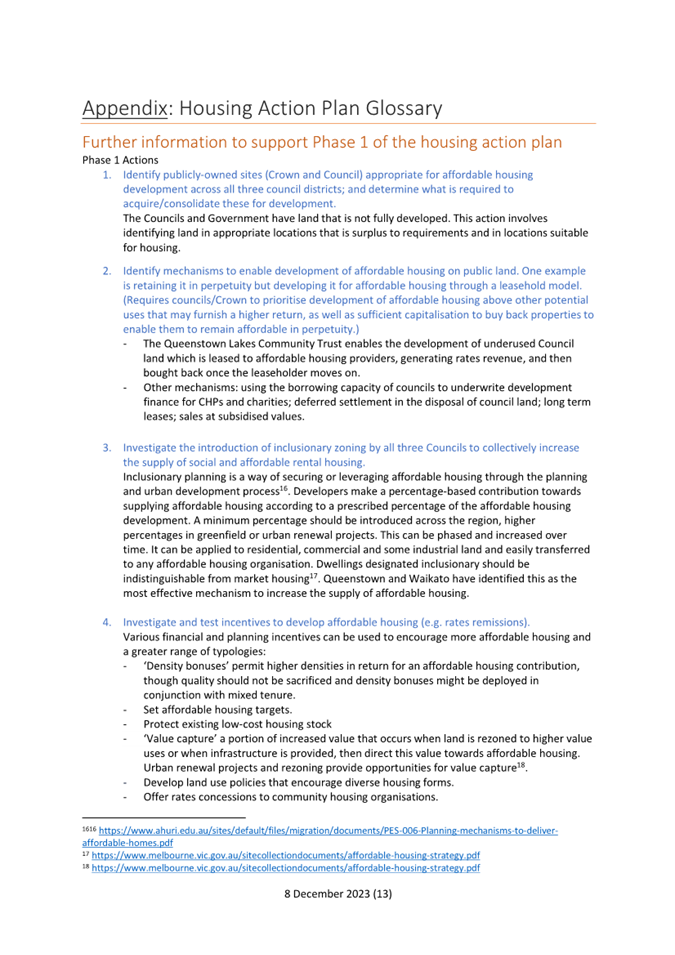

|
Council
06 March 2024
|

|
|
15. Consultation Report - Future Options Hornby
Library Building 2/8 Goulding Avenue
|
|
Reference / Te Tohutoro:
|
23/1737947
|
|
Report of / Te Pou Matua:
|
Angus
Smith, Property Consultancy Manger (Angus.Smith@ccc.govt.nz)
|
|
Senior Manager / Pouwhakarae:
|
Andrew
Rutledge, Acting General Manager Citizens and Community
(Andrew.Rutledge@ccc.govt.nz)
|
1. Purpose and Origin of Report Te Pūtake Pūrongo
1.1 This report is to inform the Council on objections arising
from the consultation process and seek a decison following consideration of
those. It also takes this opportunity to provide information on the Hornby Care
Community Trust's (HCCT) Business Plan.
1.2 This follows up on the resolutions arising from the Council
report of 11 August 2022 proposing the gifting of the Hornby library building
at 2/8 Goulding Ave to the HCCT.
1.3 The
decision in this report is low significance in relation to the Christchurch
City Council’s Significance and Engagement Policy. The level of
significance was determined by the fact that the affected parties are a small,
selected group and the effects are generally positive. The broader
financial implications which are of interest to the wider city population are
not considered significant as the proposal supports the Council’s
Annual or Long Term Plan as there are no provisions to run and operate this facility
following opening of the new Hornby Hub and therefore this decision would
not have an impact on rates.
2. Officer Recommendations Ngā
Tūtohu
That
the Council:
1. Deems that the requirements of the
consultation on the Future Options Hornby Library Building 2/8 Goulding Avenue
are considered satisfied.
2. Notes that the outcome of the consultation on
the Future Options Hornby Library Building 2/8 Goulding Avenue supports
proceeding with the gifting of the Hornby Library Building 2/8 Goulding Ave to
the Hornby Community Care Trust.
3. Endorses Council Officers implementing the
resolutions passed at its meeting of 11 August 2022 (CNCL/2022/00079), as
outlined in Attachment F of the report, which give effect to the gifting of the
Hornby Library Building 2/8 Goulding Ave to the Hornby Community Care Trust.
4. Receives the business planning information
provided by the Hornby Community Care Trust as outlined in Attachments B, C and
D to this report, and;
a. Notes that staff have
confidence that information adequately demonstrates the ability to operate and
maintain the building for community service delivery.
b. Notes this is conditional upon the Council
approving a grant of $315,400 to the Hornby
Community Care Trust from the
Capital Endowment Fund, which is sought through a separate report being
considered at the same meeting of 6 March 2024.
3. Reason for Report Recommendations Ngā Take mō te
Whakatau
3.1 There
is significant support from the consultation process to the proposal. The small
number that did not submit in support presented alternative considerations
rather than outright opposition. It is therefore considered that there is
no reason to depart from the original resolutions.
3.2 The
business planning information provided by the Trust is sufficient to provide
confidence that the Trust has the ability and resources to integrate the
library portion of the building with the portion they already own and in doing
so operate and maintain the entire facility/building for the benefit of the
community. Noting that this is subject to the HCCT receiving a $300,000 grant
from the Capital Endowment Fund to deal with the remedial repairs and deferred
maintenance as referred to in clause 5.9 – 5.13 of this report below.
4. Alternative Options Considered Ētahi atu Kōwhiringa
4.1 Revisit
the original
report, options and resolutions of 11 August 2022. Neither the business
planning information nor the consultation feedback provide sufficient reason to
do this.
5. Detail Te Whakamahuki
5.1 On
11 August 2022 the Council considered a report that sought to determine the
future use of the current Hornby Library at 2/8 Goulding Ave which will be
vacated upon completion of the Hornby Library, Customer Service and South West
Leisure Centre.
5.2 The
report was written in response to the need for a decision on the future of the
building once it is no longer required and to deal with an unsolicited proposal
from Hornby Community Care Trust (HCCT) to acquire the property.
5.3 The
following resolution was passed as a result of that report.
Future
Options Hornby Library Building 2/8 Goulding Ave
The Officer
Recommendations were accepted with two changes to 2a and 5b.
Council
Resolved CNCL/2022/00079
That the
Council:
Noting that
the:
a. Information normally required from an
unsolicited proposal to support a full and informed decision is currently not
available.
b. The
promotor of the unsolicited proposal Hornby Community Care Trust (HCCT) are
concerned about expending time and resources on developing an unsolicited
proposal when there was some uncertainty and risk about whether the council
would depart from policy and deal unilaterally with them.
c. HCCT
require a degree of certainty and support from the council before undertaking
such work.
d. Resolutions
below are written to provide HCCT with certainty and that such information and
required consultation is a condition precedent.
1. Declares the property at 2/8 Goulding Ave
(described as Units B DP 43269 on Lot 1 DP43227) surplus to requirements,
effective from the date that the current council services transfer to the new
Hornby Library, Customer Service and South West Leisure Centre.
2. Approves the gifting of the land and building at 2/8 Goulding Ave
(described as Units B DP 43269 on Lot 1 DP43227) to the Hornby Community Care
Trust (HCCT), subject to
a. The HCCT providing to the satisfaction of
the delegated officer financial and operational information and plans that
demonstrate the ability to operate and maintain the building for community
service delivery;
b. an encumbrance being registered against the
title of the transferred property providing for:
i. The property to be held in perpetuity for
community purposes run by a charitable trust or incorporated society.
ii. The Council to have a first right of
refusal option to take back the property from HCCT at the sum of $1.
iii. In the event of the council not exercising
the first right of refusal option and HCCT selling the property at a future
date 50% of the sale proceeds revert to the council. That would be calculated
as 50% of unit B if sold separately or 50% of 56% of the sale proceeds if the
entire property is sold. 56% being the council’s unit entitlement share
in the whole property.
c. The council consulting with the community
over the proposal to satisfy its obligations under sections 78 and 138 of the
Local Government Act.
3. Authorise the Manager Property Consultancy
to proceed as resolved in this report if no objections are received through the
consultation.
4. Requires the matter to be referred back to
the council for consideration and resolution in the event of any objections
being received through consultation,
5. Resolves to depart from policy and deal
unilaterally with HCCT on the basis that:
a. HCCT are the obvious and natural owner of
the property due to the existing ownership complexities and the alignment of
outcomes.
b. This is a community asset transfer,
which will provide increased capacity to deliver community services.
c. The proposal aligns with
Council’s direction and policy including the Te Haumako Te Whitingia
Strengthening Communities Together Strategy 2022.
6. Authorises the Manager Property
Consultancy, with advice from the Head of Community Support and Partnerships on
community services provision matters, to undertake all actions, negotiate and
conclude all the agreements necessary to facilitate the above in general
accordance with this report on terms and conditions acceptable to him at his
sole discretion, and in doing so make any decisions necessary to give effect to
this.
Councillor Chen/Councillor
Johanson Carried unanimously
5.4 This
report is primarily to follow up on the following resolutions:
2. Approves the gifting of the land and
building at 2/8 Goulding Ave (described as Units B DP 43269 on Lot 1 DP43227)
to the Hornby Community Care Trust (HCCT), subject to
c. The council consulting with the community
over the proposal to satisfy its obligations under sections 78 and 138 of the
Local Government Act.
3. Authorise the Manager Property Consultancy
to proceed as resolved in this report if no objections are received through the
consultation.
4. Requires the matter to be referred back to
the council for consideration and resolution in the event of any objections
being received through consultation,
5.5 There
were twenty-four submissions in response to the consultation those are
attached, excluding the personal details. Only four of those could be
considered to oppose the gifting proposal by presenting alternative proposals.
These are listed as follows:
5.5.1 I
think selling the property will be a more cost-effective way of doing this
instead of just giving it away. I suggest try selling it to Hornby
Community Care Trust or to another organisation. If there are no takers
then gift it to the Hornby Community Care Trust.
5.5.2 The
opportunity for other community organisations to uptake the facility should be
considered. Otherwise, I think it is fine with a covenant that the property
must be retained for charitable community usage only.
5.5.3 Kia
ora, I believe that 2/8 Goulding Avenue should be for an event & emergency
management strategic planning centre for Canterbury. The city does not have
one. 2/8 Goulding Avenue is a strategic location for such a centre. This
proposal needs to go to council for consideration. I would like to speak about
2/8 Goulding Avenue.
5.5.4 This
should be sold so that CCC can keep rates low.
5.6 Those
four submissions were followed up on. Two (5.5.1 & 5.5.4) did not respond.
5.5.2) withdrew the proposal following that further engagement. 5.5.3 was
engaged with by phone. It was explained that the city had a dedicated facility
at the emergency services (Justice) precinct and that contains the EOC we use
to plan and manage emergency response activities. The council further has a
training facility at Kilronan Place and that CDEM have no need for the building
on Goulding Ave. The respondent however still wishes to be heard in respect of
the submission.
5.7 Notwithstanding
the submissions suggesting alternatives and what may be presented by way of a
deputation, there is a significant majority in favour and staff have no reason
following the community feedback to depart from the recommendations of the
original report.
5.8 We
also take this opportunity to present by way of information the following
received from the Hornby Community Care Trust in satisfaction of this portion
of the prior resolution:
2. Approves the gifting of the land and
building at 2/8 Goulding Ave (described as Units B DP 43269 on Lot 1 DP43227)
to the Hornby Community Care Trust (HCCT), subject to
a. The HCCT providing to the satisfaction of
the delegated officer financial and operational information and plans that
demonstrate the ability to operate and maintain the building for community
service delivery;
5.8.1 Attachments:
· HCCT Business Plan.
· Community Consultation
Survey Report.
· Design Concept Plan
(library side).
5.9 Staff
have reviewed these documents (listed in 5.8.1 above) and are satisfied
that the Trust have the necessary resources and ability to own and manage the
entire facility for the benefit of the community. So long as the extraordinary
initial costs of dealing with the deferred maintenance and remedial repairs are
provided for to bring the building to a sound, weather tight, fit for purpose
condition.
5.10 The sale and purchase agreement to give
effect to the gifting, as provided for within section 6 of Council’s
resolution CNCL/2022/00079 set out in section 5.3 above will need to
cover the requirement of the building to be in a fit for purpose
condition.
5.11 Due
to the fact that the council strategy was always to exit this property the
asset management strategy has been to “sweat” the asset, only doing
essential repairs and maintenance. This has resulted in accumulated deferred
maintenance and remedial repairs. The Trust have been concerned about
what they may inherit, the cost of that and their ability to deal with it.
Particularly as there has been issue with leaks and repairs required to the
roof.
5.12 Staff
have been working with the Trust to resolve how this matter, and any other
related matters, will be attended to so that there is confidence the Trust is
not set up to fail and that the building can be put in a sound, weather tight
and fit for purpose condition. To this end a condition assessment report has
been commissioned which is attached. That indicates an estimated cost of
$315,400 to undertake the recommended works:
· Priority 1 –
Immediate Works $198,430
· Priority 2 –
Required Works $470
· Priority 3 –
Recommended Works $116,500
5.13 The
proposal which is supported by the HCCT is that they receive a grant of the
$315,400 from the Capital Endowment Fund to enable them to undertake the works.
The decision to achieve this is set out in a separate report, which will be
considered at the same meeting on 6 March 2024.
6. Policy Framework Implications Ngā Hīraunga ā- Kaupapa here
Strategic
AlignmentTe Rautaki
Tīaroaro
6.1 This decision aligns with the Council’s vision:
6.1.1 The
Council’s goal for its role in supporting the city-wide network of
community facilities is “Enabling active, connected and resilient
communities to own their own future”.
6.1.2 The decision is
consistent with Council’s Te Haumako Te Whitingia
Strengthening Communities Together Strategy 2022:
6.1.3 The Strategy’s
importance of places and spaces as a place where communities can identify with
and connect.
· We will encourage communities to create and sustain a sense of local
identity and ownership.
· Support the community activation and kaitiakitanga of public spaces
and places.
6.1.4 The decision is
consistent with Council’s Community Outcomes and its Te
Mahere kotui o ngā momo Whare-o-hapori Community Facilities Network
Plan 2020:
6.1.5 Community facilities
contribute to community outcomes in many ways, but not limited to:
· Providing
local venues, hosting community events, activities, classes, educational
opportunities, networking, and community connection aimed at reducing social
isolation.
· Supporting
active citizenship and connected communities, by providing venues to support
community engagement with the Council, community boards and community
organisations to grow community participation in Civic life.
· Building
community resilience, social capital, and community capacity to support a
response to major stressors such as climate change, terror attacks and the
effects of Covid-19.
· Supporting
a network of volunteers and opportunities for community partnerships regarding
provision, activation, and operation of facilities.
· They
enable the celebration of local identity and diversity by providing venues for
events, arts, culture, heritage, sport, and recreation.
6.2 This report supports the Council's
Long Term Plan (2021 - 2031):
6.3 Internal Services
6.3.1 Activity: Facilities, Property and Planning
· Level of Service: 13.4.10 Acquisition of
property right projects, e.g. easements, leases and land assets to meet LTP
funded projects and activities. - At least 90% projects delivered to agreed
timeframes per annum
Policy
Consistency Te Whai
Kaupapa here
6.4 The
decision is consistent with Council’s Plans in that the
prior considerations and resulting resolutions contemplate disposal of this
asset when the new replacement library is opened.
Impact
on Mana Whenua Ngā
Whai Take Mana Whenua
6.5 The
decision does not involve a significant decision in relation to ancestral land
or a body of water or other elements of intrinsic value, therefore this
decision does not specifically impact Mana Whenua, their culture, and
traditions.
6.6 Guidance
on whether there is any impact on Mana Whenua has been sought from the councils
Senior Advisor Treaty Relationships, the matter referred to Ngāi
Tahu through Mahaanui Kurataiao (MKT) through the internal
engagement process and the public consultation process provided another
opportunity for any impacts to be raised, no response has been received.
Climate
Change Impact Considerations Ngā Whai Whakaaro mā te Āhuarangi
6.7 The decision creates certainty over future use and in effect
maintains the status quo. The continued use of the building for a community
facility will have no impact on the environment or resources.
Accessibility
Considerations Ngā
Whai Whakaaro mā te Hunga Hauā
6.8 The property is currently compliant for use.
7. Resource Implications Ngā Hīraunga Rauemi
Capex/Opex Ngā Utu Whakahaere
7.1 The costs for the proposal
were addressed in the original report. This report and
decision carry no additional costs.
Other He mea anō
7.2 There
are no additional impacts on council’s budgets as a result of this
decision as the resources needed to bring the building up to a standard whereby
it can be gifted to a community group for immediate community use are currently
within Council budgets i.e. funded through a grant from the Capital Endowment
Fund. There are no other alternative directly suitable budgets available to
support this funding.
7.3 Staff
have worked with Council’s Finance Unit throughout this process.
8. Legal Implications Ngā Hīraunga ā-Ture
Statutory power to undertake proposals in the report
Te Manatū Whakahaere Kaupapa
8.1 The
general powers of competence set out in section 12(2) “Status and
Powers” of the Local Government Act.
Other Legal Implications Ētahi atu
Hīraunga-ā-Ture
8.2 The
earlier report dealing with the substantive decision covered this section. This
report and decision gives rise to no further issues.
8.3 This
report has not been reviewed and approved by the Legal Services Unit.
9. Risk Management Implications Ngā Hīraunga Tūraru
9.1 This
decision carries little risk, the community feedback is supportive of the
proposal and the business planning sufficiently robust providing confidence the
outcomes will be delivered.
10. Next Steps Ngā Mahinga ā-muri
10.1 Develop
and enter a sale and purchase agreement to affect a transfer, when the library
vacates to the new facility.
Attachments Ngā Tāpirihanga
|
No.
|
Title
|
Reference
|
Page
|
|
a ⇩
|
Attachment A
Submissions to consultation
|
23/1749559
|
683
|
|
b ⇩
|
Attachment B
HCCT Business Plan
|
23/1749428
|
685
|
|
c ⇩
|
Attachment C
HCCT Survey Report
|
23/1749457
|
702
|
|
d ⇩
|
Attachment D
HCCT Design Concept Plan (Library side)
|
23/1749467
|
720
|
|
e ⇩
|
Attachment E
Condition Assessmet Report
|
24/218756
|
721
|
|
f ⇩
|
Attachment F
CNCL/2022/00079
|
24/265965
|
751
|
In addition to the attached documents, the following background
information is available:
|
Document
Name – Location / File Link
|
|
Not
applicable
|
Confirmation of Statutory
Compliance Te Whakatūturutanga ā-Ture
|
Compliance with Statutory Decision-making
Requirements (ss 76 - 81 Local Government Act 2002).
(a) This report contains:
(i) sufficient information about all reasonably practicable
options identified and assessed in terms of their advantages and
disadvantages; and
(ii) adequate consideration of the views and preferences of
affected and interested persons bearing in mind any proposed or previous
community engagement.
(b) The information reflects the level of significance of the
matters covered by the report, as determined in accordance with the Council's
significance and engagement policy.
|
Signatories Ngā Kaiwaitohu
|
Author
|
Angus Smith -
Manager Property Consultancy
|
|
Approved By
|
John Filsell -
Head of Community Support and Partnerships
|
|
Council
06 March 2024
|

|
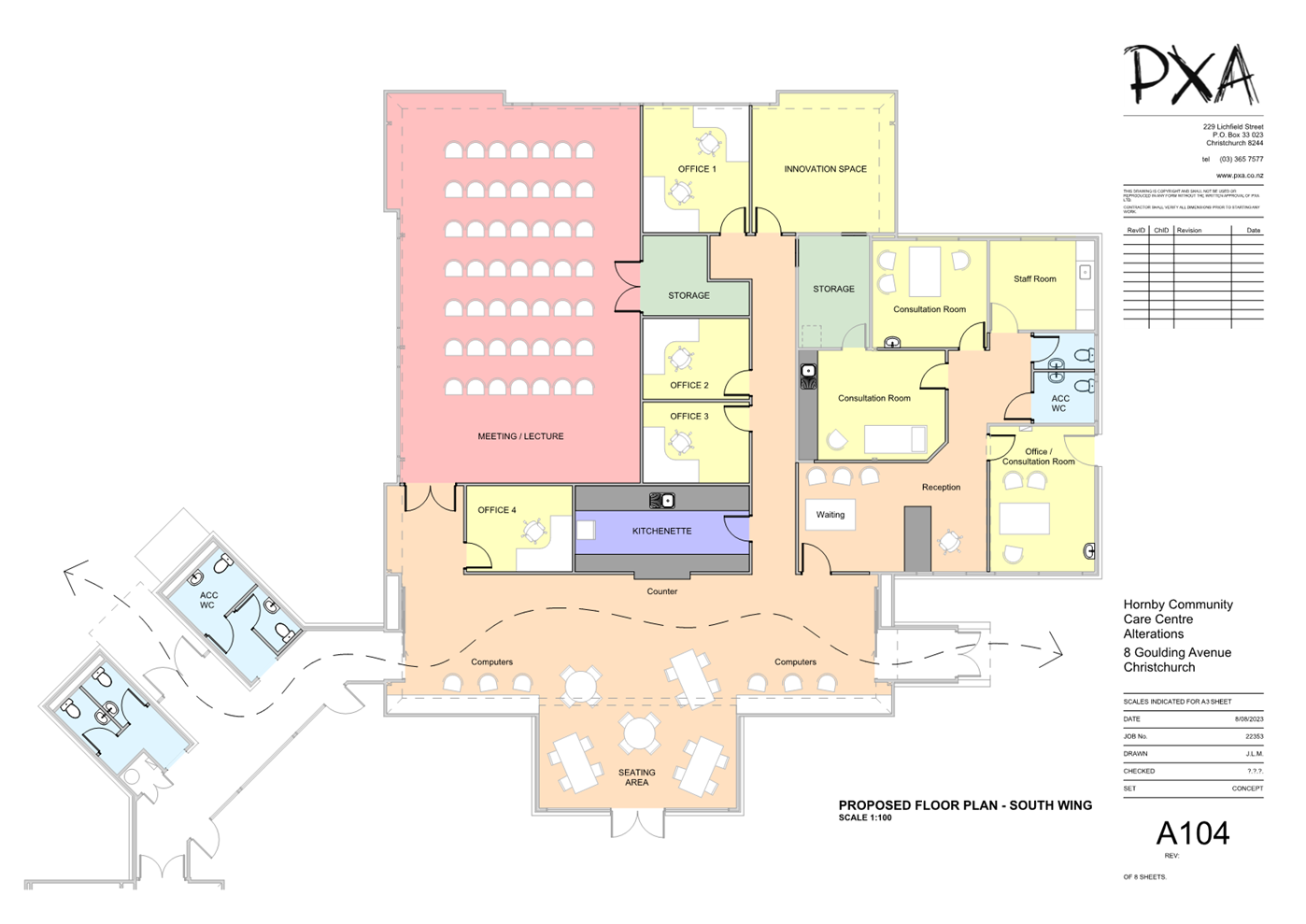
|
Council
06 March 2024
|

|
|
16. Application to the 2023/24 Capital Endowment
Fund - Hornby Community Care Trust
|
|
Reference / Te Tohutoro:
|
24/183712
|
|
Report of / Te Pou Matua:
|
Joshua
Wharton, Team Leader Community Funding (Joshua.Wharton@ccc.govt.nz)
|
|
Senior Manager / Pouwhakarae:
|
Andrew
Rutledge, Acting General Manager Citizens and Community
(Andrew.Rutledge@ccc.govt.nz)
|
1. Purpose and Origin of Report Te Pūtake Pūrongo
1.1 The purpose of this report is for the Council to consider
one application for funding from the 2023/24 Capital Endowment Fund (CEF) to
the Hornby Community Care Trust.
1.2 The Capital Endowment Fund is avaliable for not-for-profit
organisations who require support for capital projects. They must demonstrate
significant benefits for the City and its residents. Benefits must be
experienced both now and in the future.
1.3 The
decision in this report is of low significance in relation to the Christchurch
City Council’s Significance and Engagement Policy. The level of
significance was determined by assessing the number of people affected and/or
with strong interest in the outcome of the result.
2. Officer
Recommendations Ngā Tūtohu
That the Council:
1. Makes a grant of $315,400 from its 2023/24 Capital Endowment Fund to the Hornby Community
Care Trust towards building remediation at the facility at 8 Goulding Road,
conditional upon the Hornby Community Care Trust:
a. Demonstrating that it has the resources and capacity to complete the
project prior to funds being drawn down.
b. Agreeing that final reporting will be submitted within 6 months of
project completion.
3. Reason for Report Recommendations Ngā Take mō te Whakatau
3.1 Attachment
A contains a decision matrix which provides detailed information on the
applications. This includes project details, financial information, strategic
alignment and a succinct rationale for the recommendations.
4. Detail Te Whakamahuki
4.1 In April 2001, the Council set up a Capital Endowment Fund of $75
million. This fund was established using a share of the proceeds from the sale
of Orion's investment in a gas company. The Fund provides an ongoing income
stream which can be applied to specific projects.
4.2 On 12 April 2018 the Council resolved to establish criteria for
distributing the proceeds of the Capital Endowment Fund (CEF)
(CNCL/2018/00057).
4.3 On
13 December 2018 the Council published eligibility and assessment criteria for
the CEF and a standard application process. Assessment criteria are as
follows:
4.3.1 That the value of the
application is greater than $50,000.
4.3.2 That the proposal is
for something specific and new.
4.3.3 That this project is
a one off with no expectation of future Council funding.
4.3.4 That the project is
not already underway but has run out of funding.
4.3.5 That the project has
not already received Council funding through rates revenue, or other funding
sources available from Council.
4.3.6 That the project
demonstrates a benefit for the City of Christchurch, or its citizens, or for a
community of people living in Christchurch.
4.3.7 That the benefits
will be experienced now and in the future.
4.4 As
this fund is generated through the interest of the sum generated from sale of
Orion’s investment, the funding available will change annually.
4.4.1 As per Annual Plan 2023/24 the fund had generated $1.289m, which after
adding the carry-forward of the fund and subtracting three grants made earlier this
financial year (totalling $236,000), there is a remaining available balance of 1,376,000m.
4.4.2 A detailed breakdown
of the allocation is attached to this report as Attachment B.
4.4.3 Any unallocated
balance at year-end will carry forward to 2024/25.
4.5 If
the recommendations in this report are accepted the available balance of the
Capital Endowment Fund going forward will be $1,061,600.
5. Policy
Framework Implications Ngā Hīraunga ā- Kaupapa
here
Strategic AlignmentTe Rautaki
Tīaroaro
5.1 This report supports the Council's
Long Term Plan (2021 - 2031):
5.2 Citizens
and communities
5.2.1 Activity: Community
Development and Facilities
· Level
of Service: 2.3.1.1 Provide funding for projects and initiatives that build
partnerships; resilient, engaged and stronger communities, empowered at a local
or community of interest level. - 95% or more of reports presented
demonstrate benefits that align to CCC community outcomes, Council's strategic
priorities and, where appropriate Community Board plans
· Level
of Service: 2.3.1.2 Build volunteer participation through the effective
administration of the community grant schemes. - Strengthening Communities Fund
supports 2,185,000 volunteer hours annually, subject to eligible applications
Policy Consistency Te Whai Kaupapa here
5.3 The decision is consistent with Council’s Plans and Policies.
Impact on Mana Whenua Ngā Whai Take
Mana Whenua
5.4 The decision does not involve a significant decision in relation to
ancestral land or a body of water or other elements of intrinsic value,
therefore this decision does not specifically impact Mana Whenua, their culture
and traditions.
5.5 The decision
relates to the allocation of an existing Council community fundas such it does not involve a matter of interest to Mana Whenua and will not impact on our agreed partnership priorities
with Ngā Papatipu Rūnanga.
Climate Change Impact Considerations Ngā
Whai Whakaaro mā te Āhuarangi
5.6 The proposals in
this report are unlikely to contribute significantly to adaptation to the
impacts of climate change or emissions reductions.
Accessibility Considerations Ngā Whai
Whakaaro mā te Hunga Hauā
5.7 This project is consistent with Council’s Equity and Access
Policy.
5.8 The improvements at 8 Goulding Ave will provide a healthy space for
a number of local community organisations to occupy and carry out their
community-focused activities.
6. Legal Implications Ngā Hīraunga ā-Ture
6.1 There
is no legal context, issue, or implication relevant to this decision. All
funding agreements are supported by guidance from Council’s Legal and
Democratic Services Team.
Attachments Ngā Tāpirihanga
|
No.
|
Title
|
Reference
|
Page
|
|
a ⇩
|
Hornby
Community Care Trust - Capital Endowment Fund Matrix
|
24/184923
|
757
|
|
b ⇩
|
Capital
Endowment Fund - Funds Available For Allocation - November 2023)
|
24/183639
|
758
|
In addition to the attached documents, the following background
information is available:
|
Document
Name – Location / File Link
|
|
Not
applicable
|
Confirmation of Statutory
Compliance Te Whakatūturutanga ā-Ture
|
Compliance with Statutory Decision-making
Requirements (ss 76 - 81 Local Government Act 2002).
(a) This report contains:
(i) sufficient information about all reasonably practicable
options identified and assessed in terms of their advantages and
disadvantages; and
(ii) adequate consideration of the views and preferences of
affected and interested persons bearing in mind any proposed or previous
community engagement.
(b) The information reflects the level of significance of the
matters covered by the report, as determined in accordance with the Council's
significance and engagement policy.
|
Signatories Ngā Kaiwaitohu
|
Author
|
Josh Wharton -
Team Leader Community Funding
|
|
Approved By
|
Jess Garrett -
Manager Community Governance, Halswell Hornby Riccarton
Matthew Pratt
- Community Facilites & Activation Manager
John Filsell -
Head of Community Support and Partnerships
|
|
Council
06 March 2024
|

|

|
Council
06 March 2024
|

|
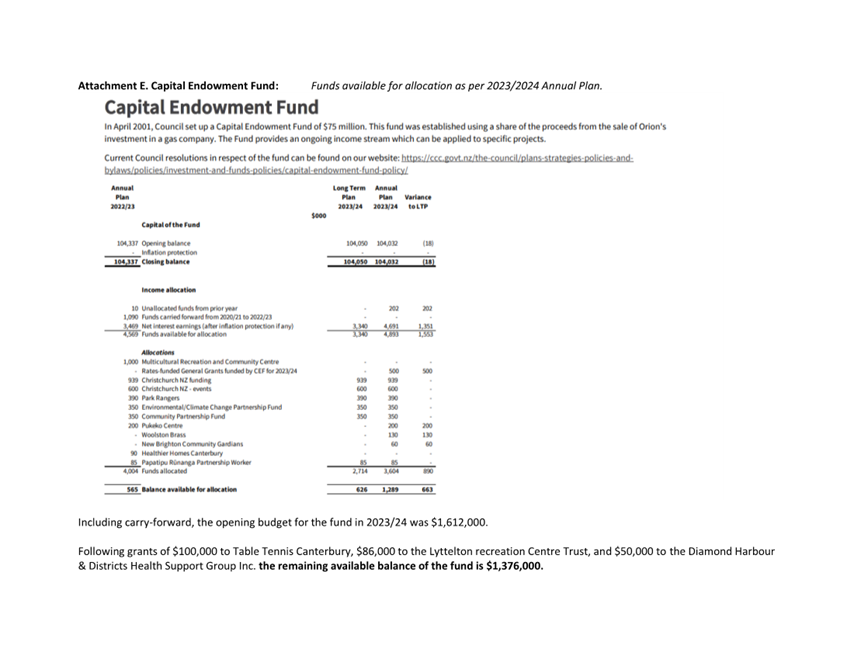
|
Council
06 March 2024
|

|
|
17. Hagley Park Shelters Demolition
|
|
Reference / Te Tohutoro:
|
23/1956297
|
|
Report of / Te Pou Matua:
|
Maria
Adamski, Senior Parks Asset Planner, (Maria.Adamski@ccc.govt.nz)
|
|
Senior Manager / Pouwhakarae:
|
Andrew
Rutledge, Acting General Manager Citizens and Community
(Andrew.Rutledge@ccc.govt.nz)
|
1. Purpose and Origin of Report Te Pūtake Pūrongo
1.1 The purpose of this report is to seek the Council's
approval for the demolition of a storage and a shelter building in North Hagley
Park.
1.2 The two buildings are earthquake prone under the Building
Act 2004. Seismic work, strengthening, or demolition, needs to be completed by
13 September 2024 for the storage building and by 25 December 2028 for the
shelter building.
1.3 The
decision in this report is of low significance in relation to the Christchurch
City Council’s Significance and Engagement Policy. The level of
significance was determined by the removal of the buildings having a low impact
on the community.
2. Officer
Recommendations Ngā Tūtohu
That the Council:
1. Approve the demolition of the following two
earthquake prone buildings, located in North Hagley Park as detailed in the map
in Attachment A of this report:
a. The Storage building located to the west nor-west of John Burns
Bridge crossing the Avon River from Park Terrace across from Salisbury
Street.
b. The Shelter building located to the west nor-west of the United
Croquet Club.
2. Delegate to the Manager Operations Parks Buildings the authority to
implement the demolition of the two earthquake prone buildings and remediation
of the sites, as referred to in recommendation 1.
3. Reason for Report Recommendations Ngā Take mō te Whakatau
3.1 The
buildings are earthquake prone and there is a deadline to complete seismic
work.
3.2 There
is no allocated Long Term Plan funding specifically assigned to the strengthening
and repair of the buildings which will continue to deteriorate if left insitu
(the storage building having been vacant since 2017).
3.3 Demolition
and removal of the buildings will remove the ongoing risk (and cost) of
vandalism.
3.4 There
is no known demand for the buildings, refer to the Community
Views and Preference in Section 5 of this report.
4. Alternative Options Considered Ētahi atu Kōwhiringa
4.1 Status
quo.
This is not
considered an option due to the Building Act 2004 requirement to meet a
deadline to complete seismic work on the two earthquake prone buildings.
4.1.1 Advantages
· No resources are used to strengthen or remove the buildings.
· The buildings will be available in the future if budget is available
to strengthen them.
4.1.2 Disadvantages
· The Council could be fined for non-compliance for not meeting the
deadline to complete seismic work.
· The buildings will deteriorate, remain unsafe, and prone to
vandalism.
· Ongoing maintenance costs would be required to address any
vandalism.
4.2 Repair
and strengthen both the buildings.
This option
enables both buildings to be reused and to meet the deadlines for seismic work.
The demand for the buildings is unknown, see Community Views and Preference in
Section 5 of this report.
Advantages
· Repairing the buildings provides the opportunity to reuse or adapt
the buildings.
· No demolition material goes to landfill.
· Repairing is more cost effective than demolishing and rebuilding (if
required) as it saves on materials, labour, and other associated costs.
4.2.2 Disadvantages
· There is no allocated Long Term Plan funding to strengthen and
repair.
· The buildings may continue to be subject to vandalism and
inappropriate use.
· There may be issues that arise through further investigations that
are not currently apparent that could increase the cost to repair.
4.3 Strengthen
one building and remove the other building.
This option
proposes to remove the Storage building and retain the Shelter building. Both
buildings are identical, however, one has had doors installed to convert it to
a storage shed (Storage) and the other remains unchanged as a public shelter
(Shelter).
4.3.1 Advantages
· The Shelter building will provide weather protection for park users.
The demand is unknown, refer to the Community Views and Preference in Section 5
of this report.
· The budget required is less than completing seismic work on both
buildings. Funding could be included in the 2027 – 2037 Long Term Plan
for the Shelter which has a 2028 deadline for strengthening.
· The Building Act 2004 deadline of 13
September 2024 for seismic work can be met for the Storage building.
· Less demolition material will go to landfill.
4.3.2 Disadvantages
· The Shelter may be subject to vandalism.
· There is no funding in the Long Term Plan for the estimated cost of
$99,000 to repair and strengthen the Shelter.
· Removal of the Storage building will reduce the available storage space
in Hagley Park.
5. Detail Te Whakamahuki
5.1 The
Building Act 2004 requires territorial authorities to identify and keep a
register of earthquake prone buildings in their district.
5.2 Section
133AM of the Building Act 2004 requires the owner of an earthquake prone
building to complete seismic work (strengthen or demolish) within a specified
period.
5.3 The
Parks Unit owns two earthquake prone buildings, below 33% new building standard
(NBS) in North Hagley Park.
5.4 The
Storage building is located to the west nor-west of John Burns Bridge crossing
the Avon River from Park Terrace across from Salisbury Street. The
Shelter building is located to the west nor-west of the United Croquet
Club.
5.5 Seismic
work on the buildings is required to be completed by 13
September 2024 for the Storage building and by 25 December 2028 for the Shelter
building.
5.6 Under
Section 133AU of the Building Act 2004 if the work is not completed by the
deadline the Council is potentially liable for a fine not exceeding $1.5m.
5.7 A
building consent is not required for the demolition of single storey buildings.
5.8 Both
buildings have an earthquake prone building notice on them and are secured with
safety fencing.
5.9 The
buildings date from the mid-1940s and are likely to have been designed inhouse
by Council architects.
5.10 The buildings
are approximately 30m2 each, single storey, with a timber trussed
roof covered in corrugated metal roof sheeting. The ceiling is lined with
timber tongue and groove slats laid horizontally. The walls are concrete with
some reinforcing and rendered. The floor is concrete.
5.11 Both buildings
have received minor and non-structural damage in the form of cracks through the
floor slab and walls. These may have been pre-existing.
5.12 Both buildings
were condition assessed in 2021.
5.13 Once the
buildings are removed, the sites will be sown and maintained as turf, becoming
open space.
The Shelter building
5.14 The Shelter is
an open fronted building with timber columns supporting the roof. It has
internal timber seating and was used as a public shelter.
5.15 The building is
in average condition, is in a functionally sound condition but showing
noticeable wear. Expected deterioration is evident. The condition assessment
was completed prior to the building being identified as earthquake prone.
5.16 Cosmetic work
was completed on the building in April 2016. The work involved crack injection
in the walls on two sides of the shelter and the floor. Damaged timber seating
and sections of the ceiling were replaced and a complete exterior and interior
paint.
The Storage building
5.17 The building has
garage doors inserted into the openings to enclose the building for storage.
5.18 The building is
in poor condition. Its condition is deteriorated with substantial work
required.
5.19 There is minor
deterioration in the iron roof, spalling concrete, and deterioration at the
base of the timber columns. The construction joints have opened between the
concrete walls and timber ceiling. These are not structural in nature.
Planning
5.20 Hagley Park is
scheduled as a Highly Significant heritage item in the Christchurch District
Plan. However, the District Plan Rules for Historic Heritage do not apply to
Hagley Park other than to those items and their settings that are individually
scheduled. The two buildings are not individually scheduled.
5.21 The development
and management of Hagley Park is guided by the Hagley Park Management Plan 2007
(Management Plan), Hagley Park/Botanic Gardens Master Plan 2007 (Master Plan)
and the Conservation Plan for Hagley Park and the Christchurch Botanic Gardens
Volume Two Hagley Park 2013 (Conservation Plan). Each of these plans are silent
on the Storage and Shelter buildings.
5.22 The Management
Plan objective for Buildings and Structures is to keep the number of new
buildings and structures to a minimum and to coordinate and integrate the
existing Park buildings and structures into the park environment.
5.23 The Master Plan
allows for building removal with consideration given to changed circumstances,
such as damage by earthquakes or buildings that may be deemed obsolete and no
longer required.
5.24 The Storage and
Shelter buildings were not considered to have heritage significance and were
not included in the Conservation Plan.
Community Views and Preference
5.25 The
Council’s Heritage Team have researched the buildings. The team summarise
the buildings as primarily utilitarian in design to withstand the elements and
the structures are thoughtfully crafted to complement the park's aesthetics. Constructed
in concrete with a tall, hipped roof clad in corrugated iron they formed
open-fronted pavilions with three timber archways at the front. Internally the
ceilings are lined with timber and there are timber benches on three sides.
Originally serving as shelters for sports activities on adjacent fields, they
provided a meeting place for teams and informal spectator shelter. The design
and historical use of these structures indicate some architectural and
social/historical significance within Hagley Park.
5.26 If the buildings
are to be demolished, then the Heritage Team recommends the buildings be photographically
recorded, archived, and the images made publicly accessible.
5.27 Public
consultation on the Master Plan supported no more buildings in Hagley Park,
keeping the number of buildings to a minimum, and removing buildings no longer
required.
5.28 The Storage
building was used by the Council Events Team as a storage area. The Events Team
now occupy the former RSA Rugby Rooms by Lake Victoria and no longer have an
interest in using the Storage building.
5.29 Although the
views and preferences of the wider community have not been directly considered
the removal of the buildings was discussed by the Hagley Park Reference Group
at its 5 July 2021 meeting. The group provides a sounding board for
community views and preferences relating to proposed developments, events, and
activities in Hagley Park. The group supported the removal of the buildings.
5.30 The decision
affects the following wards/Community Board areas:
5.30.1 All wards/Community Board areas
as Hagley Park is a metropolitan asset.
6. Policy
Framework Implications Ngā Hīraunga ā- Kaupapa
here
Strategic AlignmentTe Rautaki
Tīaroaro
6.1 The removal of the buildings will increase the open space in Hagley
Park contributing to a green, liveable city. However, the removal of the
Shelter building will reduce the ability of current and future park users to
have shelter when using the park for recreation, sport, and events.
6.2 This report supports the Council's
Long Term Plan (2021 - 2031):
6.3 Parks,
heritage and coastal environment
6.3.1 Activity: Parks and
Foreshore
· Level
of Service: 6.8.2.3 Parks are managed and maintained in a clean, tidy, safe,
functional and equitable manner (Asset Performance) - At least 90% of
parks and associated public recreational assets are available for safe public
use during opening hours
· Level of Service: 6.8.4.1 Overall customer satisfaction with the
presentation of Hagley Park - Hagley Park presentation: resident satisfaction
>=90 %
Policy Consistency Te Whai Kaupapa here
6.4 The decision is consistent with the Council’s Plans and Policies regarding
dangerous and insanitary buildings.
Impact on Mana Whenua Ngā Whai Take
Mana Whenua
6.5 The decision does not involve a significant decision in relation to
ancestral land or a body of water or other elements of intrinsic value,
therefore this decision does not specifically impact
Mana Whenua, their culture, and traditions.
6.6 The decision does not involve a matter of interest to Mana Whenua and will not impact on our agreed partnership priorities
with Ngā Papatipu Rūnanga.
6.7 However, both buildings are in an known archaeological site and the
Storage building is located approximately 25m from the Avon River, a mahinga
kai site. Removal of this building will include protection to ensure nothing
enters the river during the demolition process.
6.8 If the
archaeological assessment finds that there is a possibility of
encountering/impacting Māori archaeological sites Mana Whenua will be
consulted.
6.9 Returning the site to open space or underplanting is consistent with
the Mahaanui Iwi Management Plan 2013.
Climate Change Impact Considerations Ngā
Whai Whakaaro mā te Āhuarangi
6.10 The proposals in this report are
unlikely to contribute significantly to adaptation to the impacts of climate
change or emissions reductions.
6.11 The reasons no significant
impacts are anticipated are the buildings are small and do not contain a
significant amount of steel or concrete.
6.12 Remediation will restore the
building footprints to green space.
Accessibility Considerations Ngā Whai
Whakaaro mā te Hunga Hauā
6.13 Not applicable.
7. Resource Implications Ngā Hīraunga Rauemi
Capex/Opex Ngā Utu Whakahaere
7.1 The
cost estimate to strengthen each building to a minimum 67% is $98,700 including
engineering fees and a contingency of 20% plus GST.
7.2 An
additional $25,000 may be required for the Storage building repair if the roof
needs to be replaced.
7.3 The
cost to demolish the Shelter building is $5,276.33 and $5,486.34 for the
Storage building. This includes asbestos testing. If asbestos is found, its removal
would be an additional cost.
7.4 An
Archaeological Assessment and Archaeological Authority will be required.
7.5 Demolition
costs are funded from the Hagley Park Operational budget.
7.6 The
ground will be sown with grass and returned to turf, funded from the Hagley
Park Operational budget.
7.7 Ongoing
costs of mowing and maintenance will be funded from the Hagley Park Operational
budget.
7.8 The
Hagley Park Buildings Operational expenses will decrease as reactive
maintenance will no longer be required.
7.9 There
is no specified budget to strengthen the buildings. If they were retained,
budget would need to be prioritised within the programme for Hagley Park
Planned Buildings Renewals, CPMS61713 which has $1,282,000 FY24-27.
Other He mea anō
7.10 Not applicable.
8. Legal Implications Ngā Hīraunga ā-Ture
Statutory power to undertake proposals in
the report Te Manatū Whakahaere Kaupapa
8.1 A
delegation to approve the demolition of a Park building, outside of the
Facilities Rebuild Plan or Section 38 notices, is not included in the
Delegations Register.
Other Legal Implications Ētahi atu
Hīraunga-ā-Ture
8.2 The
buildings have been assessed as earthquake prone under the Building Act 2004.
8.3 As
building owner, the Council is required to undertake seismic work within a
specified time.
8.4 If
the work has not been completed the Council could be fined for noncompliance.
9. Risk Management Implications Ngā Hīraunga Tūraru
9.1 The
earthquake prone risk is currently mitigated by the buildings being isolated
with fencing.
9.2 Removal
or seismic work on the buildings eliminates risk of collapse in an earthquake.
9.3 Contamination
risk from asbestos is managed through testing prior to demolition.
9.4 Risk
to the Avon River environment will be managed to be negligible through the
appropriate demolition process.
10. Next Steps Ngā Mahinga ā-muri
10.1 Undertake the
demolition of the two earthquake prone buildings in Hagley Park.
Attachments Ngā Tāpirihanga
|
No.
|
Title
|
Reference
|
Page
|
|
a ⇩
|
Hagley Park
Earthquake Prone Buildings Location
|
24/198600
|
766
|
In addition to the attached documents, the following background
information is available:
|
Document
Name – Location / File Link
|
|
Not
applicable
|
Confirmation of Statutory
Compliance Te Whakatūturutanga ā-Ture
|
Compliance with Statutory Decision-making
Requirements (ss 76 - 81 Local Government Act 2002).
(a) This report contains:
(i) sufficient information about all reasonably practicable
options identified and assessed in terms of their advantages and
disadvantages; and
(ii) adequate consideration of the views and preferences of
affected and interested persons bearing in mind any proposed or previous
community engagement.
(b) The information reflects the level of significance of the
matters covered by the report, as determined in accordance with the Council's
significance and engagement policy.
|
Signatories Ngā Kaiwaitohu
|
Author
|
Maria Adamski
- Senior Parks Asset Planner
|
|
Approved By
|
Kelly Hansen -
Manager Parks Planning & Asset Management
David Laird -
Manager Operations Parks Buildings
Rupert Bool -
Acting Head of Parks
|
|
Council
06 March 2024
|

|

|
Council
06 March 2024
|

|
|
18. Three Waters Activities Report - October,
November and December 2023
|
|
Reference / Te Tohutoro:
|
24/54401
|
|
Report of / Te Pou Matua:
|
Brent
Smith, Head of Three Waters Unit (Brent.Smith@ccc.govt.nz)
|
|
Senior Manager / Pouwhakarae:
|
Jane
Parfitt, Interim General Manager Infrastructure, Planning and Regulatory
Services (Jane.Parfitt@ccc.govt.nz)
|
1. Purpose and Origin of Report Te Pūtake Pūrongo
1.1 The purpose of this report is to update the Council on
Three Waters service delivery during the period October, November and December
2023.
1.2 The attached report was put together by staff in the Three
Waters Unit.
2. Officer Recommendations Ngā Tūtohu
That the Council:
1. Receive the information in the Three Waters Activities Report
– October, November and December 2023.
3. Brief Summary
3.1 Updates
on the delivery of significant projects from the Water Supply, Wastewater and
Stormwater capital programmes.
3.2 The
status of current and future planning across the 3 Waters activities.
3.3 Summaries
of Health and Safety and Wellbeing for this period.
3.4 The
status of the Christchurch Wastewater Treatment Plant.
3.5 Updates
on Compliance, Consent and Water Safety Plans.
Attachments Ngā Tāpirihanga
|
No.
|
Title
|
Reference
|
Page
|
|
a ⇩
|
INWW Three
Waters Activities Report - October, November and December 2023.
|
24/191793
|
769
|
In addition to the attached documents, the following background
information is available:
|
Document
Name – Location / File Link
|
|
Not
applicable
|
Confirmation of Statutory
Compliance Te Whakatūturutanga ā-Ture
|
Compliance with Statutory Decision-making
Requirements (ss 76 - 81 Local Government Act 2002).
(a) This report contains:
(i) sufficient information about all reasonably practicable
options identified and assessed in terms of their advantages and
disadvantages; and
(ii) adequate consideration of the views and preferences of
affected and interested persons bearing in mind any proposed or previous
community engagement.
(b) The information reflects the level of significance of the
matters covered by the report, as determined in accordance with the Council's
significance and engagement policy.
|
Signatories Ngā Kaiwaitohu
|
Author
|
Brent Smith -
Head of Three Waters
|
|
Approved By
|
Brent Smith -
Head of Three Waters
Jane Parfitt -
Interim General Manager Infrastructure, Planning and Regulatory Services
|
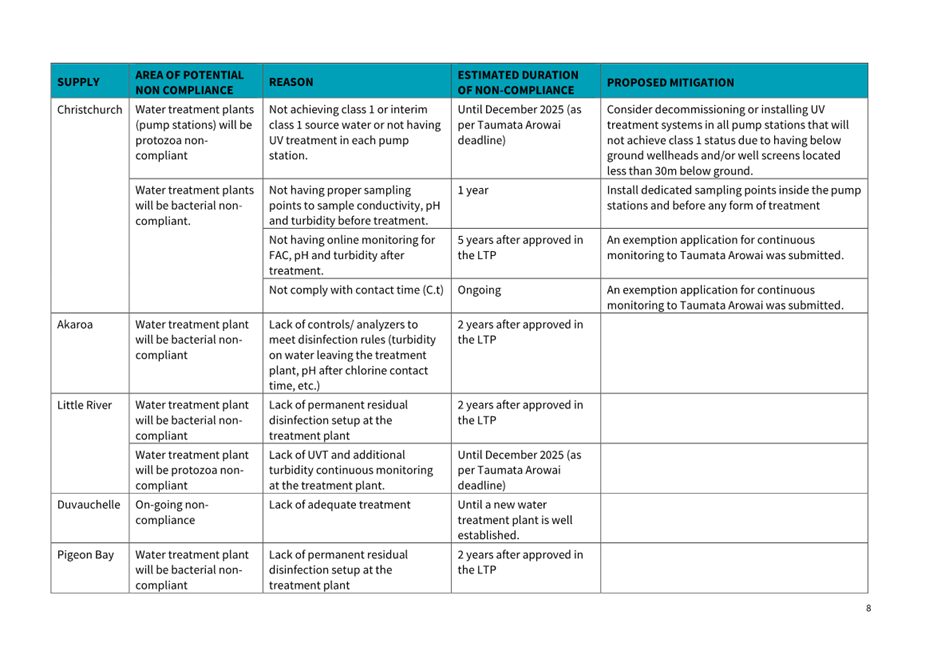

|
Council
06 March 2024
|

|
|
19. Central City Biannual Report - July to
December 2023
|
|
Reference / Te Tohutoro:
|
23/2072745
|
|
Report of / Te Pou Matua:
|
Robbie
Schmidt – Assistant Planner, Urban Regeneration
(Robbie.Schmidt@ccc.govt.nz)
John Meeker – Principal Advisor, Urban Regeneration
(John.Meeker@ccc.govt.nz)
|
|
Senior Manager / Pouwhakarae:
|
Jane
Parfitt, Interim General Manager Infrastructure, Planning and Regulatory
Services (Jane.Parfitt@ccc.govt.nz)
|
1. Purpose and Origin of Report Te Pūtake Pūrongo
1.1 This report provides elected members with information and
statistics about Council funded regeneration activity within the Central City
for the period July to December 2023.
1.2 The Central City's progress has been biannually reported
since 2015 to meet a Level of Service set out in the current Long Term Plan.
2. Officer Recommendations Ngā Tūtohu
That the Council:
1. Receive the information in the Central City Biannual Report.
3. Summary
3.1 Attachment
A provides a summary of activity in the six-month
reporting period. It includes updates on Council and ChristchurchNZ projects
and programmes, the use of grants and key development trends. Selected
highlights include:
• Strong growth rates in Central City employee numbers means we are
on track to achieve the Council goal of 60,000 employees by 2028.
• 2023 had the strongest rate of housing construction seen since
2020.
• Once again, a new peak of international visitors in Q4 led to
record post-quake spending totals.
• The results from early engagement were used to develop a draft
plan for the South-East Central Neighbourhood. The draft plan will be presented
to the Community Board and then the public in February/March 2024.
• The ‘Noise in the Central City’ project made key
progress in supporting the upcoming Plan Change, including great response rates
to an online survey, an amended approach to Central City LIMs and a pilot
acoustic assessment. In addition to the detail provided on page 7 of the
Attachment, a full update report will be provided to the Council on 1 May 2024.
• The Central City event Tīrama Mai for Matariki attracted
record attendance, and our produced events outperformed expected attendance
numbers.
3.2 Details of these and other key progress and projects is at
Attachment 1. Statistics and trends are also available on the Council’s
interactive Central
City Progress webpage.
Attachments Ngā Tāpirihanga
|
No.
|
Title
|
Reference
|
Page
|
|
a ⇩
|
Attachment to
report 23/2072745 (Title: Central City Biannual Report - Jul - Dec 2023
Attachment)
|
24/245288
|
809
|
In addition to the attached documents, the following background
information is available:
Confirmation of Statutory
Compliance Te Whakatūturutanga ā-Ture
|
Compliance with Statutory Decision-making
Requirements (ss 76 - 81 Local Government Act 2002).
(a) This report contains:
(i) sufficient information about all reasonably practicable
options identified and assessed in terms of their advantages and
disadvantages; and
(ii) adequate consideration of the views and preferences of
affected and interested persons bearing in mind any proposed or previous
community engagement.
(b) The information reflects the level of significance of the
matters covered by the report, as determined in accordance with the Council's
significance and engagement policy.
|
Signatories Ngā Kaiwaitohu
|
Authors
|
Robbie Schmidt
- Assistant Planner Urban Regeneration
John Meeker -
Principal Advisor Urban Regeneration
|
|
Approved By
|
Carolyn Bonis
- Team Leader Urban Regeneration
Bruce Rendall
- Head of City Growth & Property
|
|
Council
06 March 2024
|

|
|
Council
06 March 2024
|

|
|
20. Resolution to Exclude the Public
|
Section 48, Local Government Official
Information and Meetings Act 1987.
I move that the public be excluded from the
following parts of the proceedings of this meeting, namely items listed
overleaf.
Reason for passing this resolution: good
reason to withhold exists under section 7.
Specific grounds under section 48(1) for
the passing of this resolution: Section 48(1)(a)
Note
Section 48(4) of the Local Government
Official Information and Meetings Act 1987 provides as follows:
“(4) Every resolution to exclude the
public shall be put at a time when the meeting is open to the public, and the
text of that resolution (or copies thereof):
(a) Shall
be available to any member of the public who is present; and
(b) Shall
form part of the minutes of the local authority.”
This resolution is made in reliance on
Section 48(1)(a) of the Local Government Official Information and Meetings Act
1987 and the particular interest or interests protected by Section 6 or Section
7 of that Act which would be prejudiced by the holding of the whole or relevant
part of the proceedings of the meeting in public are as follows:
|
Council
06 March 2024
|

|
|
ITEM NO.
|
GENERAL SUBJECT OF EACH MATTER TO BE CONSIDERED
|
SECTION
|
SUBCLAUSE AND REASON UNDER THE ACT
|
PLAIN ENGLISH REASON
|
WHEN REPORTS CAN BE REVIEWED FOR POTENTIAL RELEASE
|
|
21.
|
Public Excluded Council Minutes - 21 February 2024
|
|
|
Refer to the previous public excluded reason in the agendas for
these meetings.
|
|
|
22.
|
Audit and Risk Management Committee: Appointment of Independent
Member
|
s7(2)(a)
|
Protection of Privacy of Natural Persons
|
To protect the candidate's reputation
|
Following the conclusion of the independent member appointment
process.
|
|
Council
06 March 2024
|

|
Karakia Whakamutunga
Kia
whakairia te tapu
Kia
wātea ai te ara
Kia
turuki whakataha ai
Kia
turuki whakataha ai
Haumi
e. Hui e. Tāiki e























































































































































































































































































































































